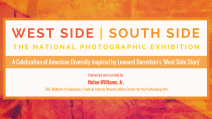

West Side/South Side is a component of Brilliantly Bernstein: Beyond the Baton, a six-month festival in celebration of the Bernstein centenary | Presented by the Mann Center for the Performing Arts with sponsorship from PNC Arts Alive and the National Endowment for the Arts | Curated by NEWorks Productions and the Mann Center.
Viewer discretion is advised. Some images may not be appropriate for children.
Curator's Statement:
West Side/South Side is a photo exhibition inspired by the centenary birthday celebration for the iconic composer Leonard Bernstein. It draws specific inspiration from Bernstein's West Side Story, which broke new artistic ground with the decision to explore in this musical a rivalry between two teenage New York street gangs of different heritage — one Puerto Rican, the other White, both American. Premiered on Broadway in 1957, Bernstein challenged us to look past our differences and find paths towards common ground.
In this spirit, West Side/South Side is a photographic exploration of American cultural diversity, recognizing both its triumphs and challenges. The exhibition is comprised of student photography from five academic institutions in three major cities: American University and the University of the District of Columbia in Washington, D.C.; University of the Arts in Philadelphia, PA; and the Art Institute of Atlanta and Clark Atlanta University in Atlanta, GA; and guided by their professors — Iwan Bagus, E. Taylor Bareford, Barbara Proud, and Deidra Tyree Smith. A total of 54 student photographers have tackled this project throughout the spring semester of 2018 as part of the course curriculum at each school. From this larger body of work, 33 images produced by 29 students were selected for a national traveling exhibition that was mounted in the Catherine B. Reynolds Foundation Gallery on the campus of NYU-Washington, D.C. (May 2-30, 2018), the Beauchamp C. Carr Gallery at the Woodruff Arts Center (June 9-30, 2018), and the 2nd Floor West Gallery of the Free Library of Philadelphia, Parkway Central Branch (July 11-August 30, 2018).
No matter which side of town we reside in, or where we come from, in this great land of democracy and opportunity, there should be a place for us all... somewhere.
- Nolan Williams, Jr.
Video: Aaron Caplan
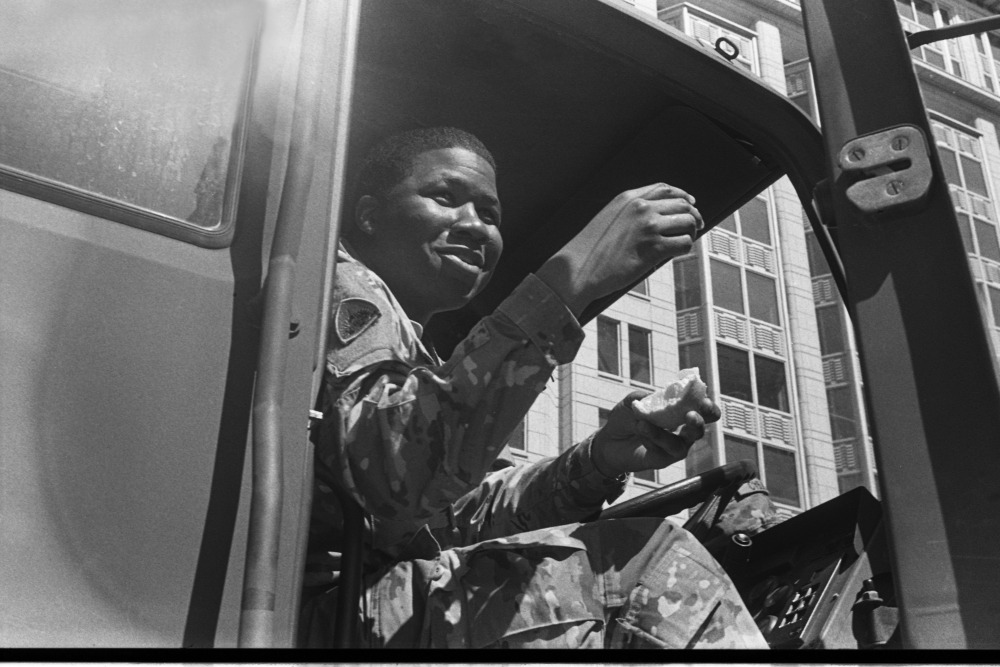
Delfina Barbiero: Break Time - I took this photo while I was at the March for Our Lives protest earlier this March. The atmosphere was both a somber but also an excited one. In the periphery of all of this excitement were the National Guard with the barricades protecting protesters in the possibility of a worst case scenario. The national guards that manned and guarded these barracks were smiling and joking with one another. They took photos with protesters who asked and smiled and played with the kids who were there. The guard who I photographed was eating an orange during his break and laughing at a joke his buddy was telling him. I hope this photo captures the essences of that the day and the gratitude that everyone had to the guards, who were protecting the national right to protest. It was beautiful day and I am grateful to have taken this photo.
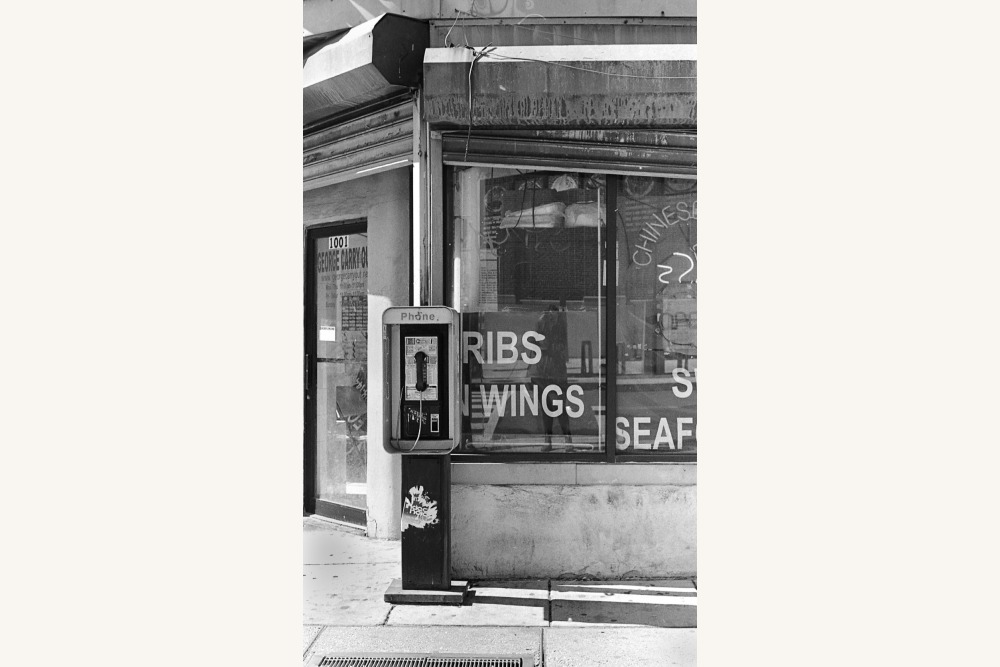
Jean Vozella: Ribs & Wings - This photo was taken in Washington D.C.'s Shaw neighborhood on a 35mm film camera. The foreground of the image includes an old payphone, completely obsolete but still in place in a forgotten corner of the city. The image captures a unique moment in gentrification, a process of urban renewal that displaces established residents from an area of the city as more affluent residents move in. My own reflection is in the window of the closed down takeout restaurant as a way to hold myself accountable for the part I play in changing the social structure of the city.
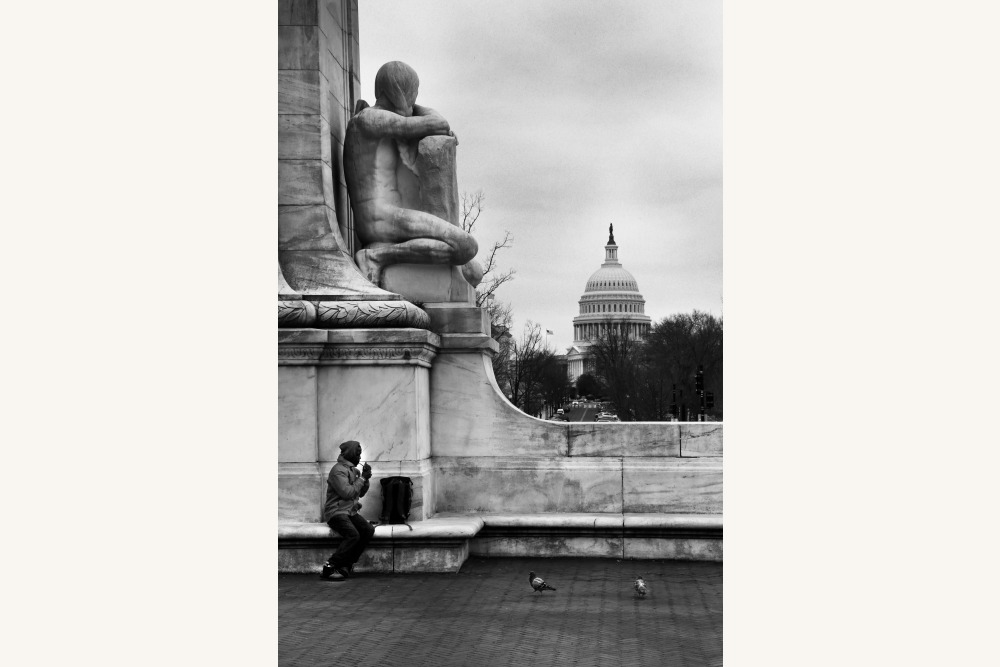
Kitty Kouwenhoven: I, Too - This photo was taken outside of Union Station in Washington, D.C. There are a few important things that can be noticed about this shot, though I think it is also fair to bring your own interpretations to its meaning. This man is sitting in front of the Columbus Fountain, a monument that celebrates Christopher Columbus. What is interesting to point out is that the man on the statue is a Native American that is supposed to represent the New World. He sits on this monument that forms a wall between the capital and city life on the other side. This begs the question of new and old in this government, in society's ideas, and within the city itself. The poem references having a seat at the table both literally and metaphorically. In this photo, there is a man sitting on one side of a separation, a statue that means to represent the future but truly represents the past in the middle, and the government on the far side.
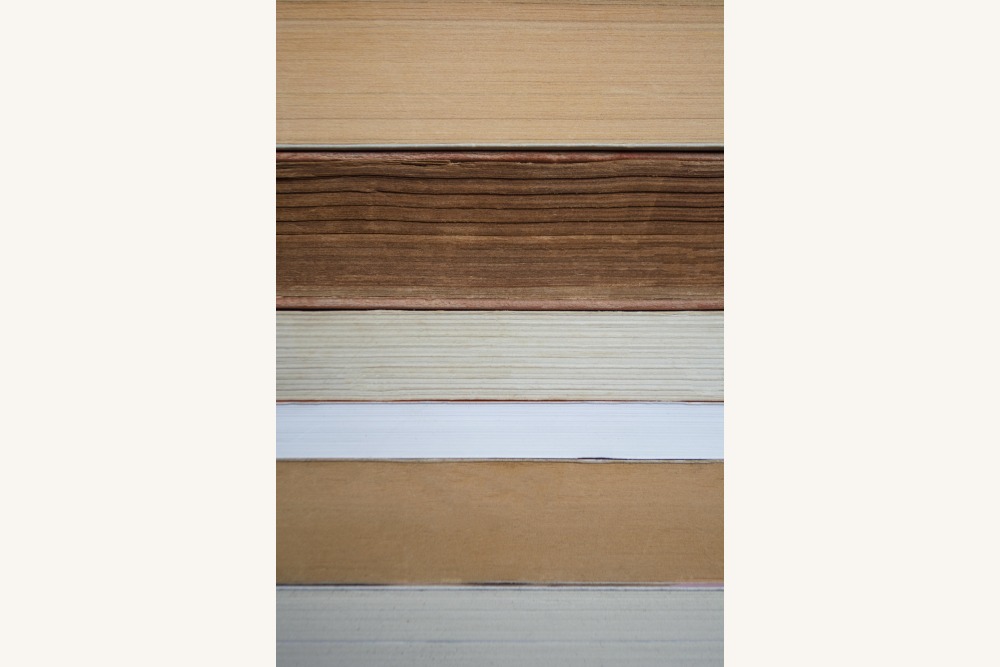
Lulu Fong: reportedly - For a non-American, the manifestation of I, Too, Sing America is particularly a challenging project that is horned with sensitivities. To me, residing in an era with rapid advancement in communication, segregation is less of a result of race but an intangible presence of culture. My final interpretation aims to visualize the poem not only through depicting the lines, spacing, and pauses apparent in its structural nature but also address provenance/origin and knowledge/intelligence. The former is translated through the texture of the stack of books and their immediate impression of wood-like patterns. The latter makes reference to the content of those books, which are philosophical readings accumulated around D.C. and other continents.
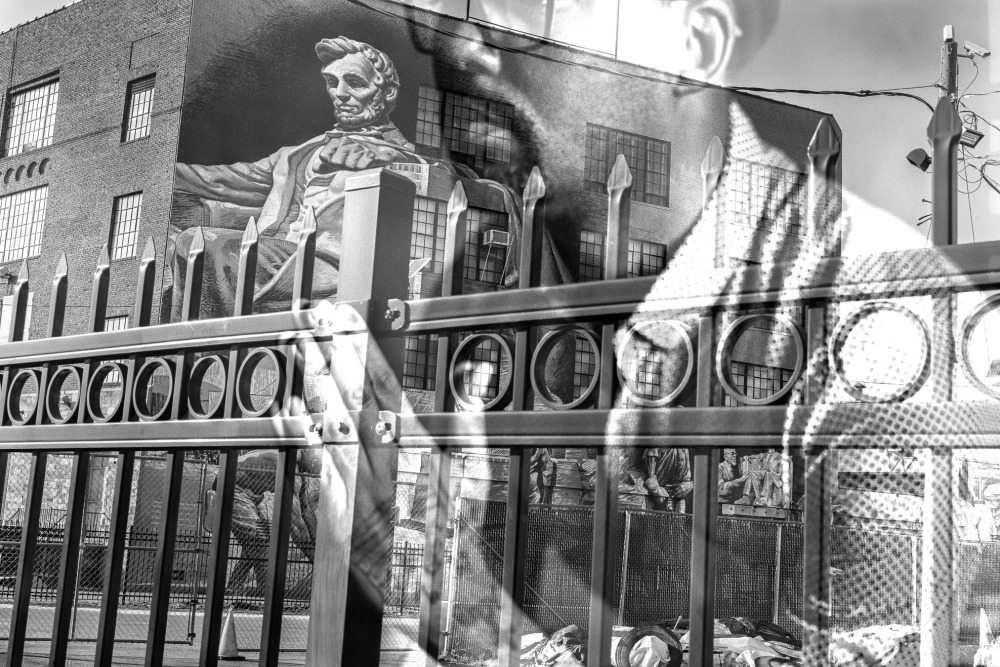
Sergio Teran Baldizon (Naret Photography): Reflection, After Reconstruction - Learning about the American Civil War in high school, what stood out the most to me was how the “reconstruction” period after the Civil War was mainly used as a way for the south to “reconstruct” its racist past (heritage) into an acceptable way of life for the majority of white Americans. This Lincoln mural was painted in late 2017 near the NoMA & the Rhode Island / Brentwood Metro stations in D.C. I photographed this image because growing up, I always heard people discuss Lincoln’s legacy, but I never heard anyone mention the “reconstruction period” in the same sentence. In thinking about how to capture this mural of Lincoln, I put the mural in front of the fence as a way to allude to the open but “enclosed freedom” many black Americans and minorities experience in America (Lincoln is viewable, but access is not easily reachable). Looking further, you will notice the workers constructing the Lincoln memorial and they too are enclosed in an additional cage, which serves to further allude to the criminalization of black Americans and minorities (with promises of progress and legacies left to the marble and murals on the wall). To tie all this together, I used Lincoln's resting hand on the columns and placed a spiked portion of the cage in front of it so it tied the image further in highlighting better the legacy that is really left behind. I want people to reflect on the true legacy that is left behind after the Civil War and the current reconstruction that is still needed in our culture’s infrastructure to address the pain from the past.

Taylor Mickal: National Geographic explorer Victoria Herrmann works on her grant proposal for smart cities in the Arctic. Victoria is one of very few women who has been doing work in the Arctic, an area long dominated by men. Her work in the sciences also represents the growing force of women in the scientific community and a future where representation is equal across the board.
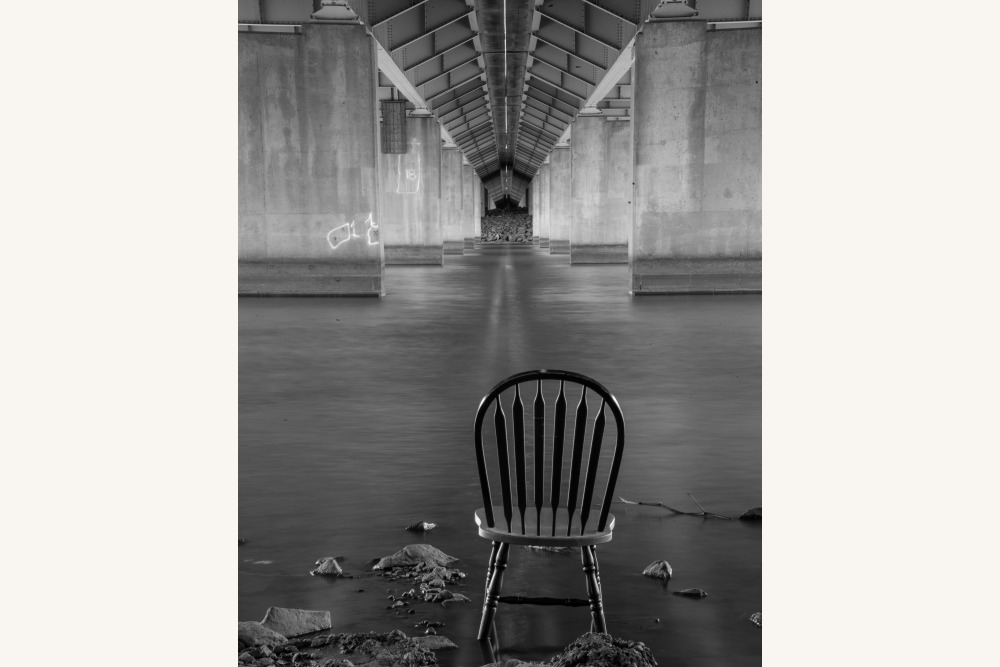
Tim McPhillips: The River Divides - The Anacostia River has been, for a while, the door that divides the kitchen from the dining room table in Washington, D.C. For this, I took my dining room chair, the chair Langston Hughes writes about taking, and I put it in the Anacostia River. I used a long exposure time to create an effect of the water passing through time to indicate the chair has been empty and seen a lot. The image strives to show that Langston Hughes, and many populations in America, are still trying to open the door and take their seat at the dining room table.
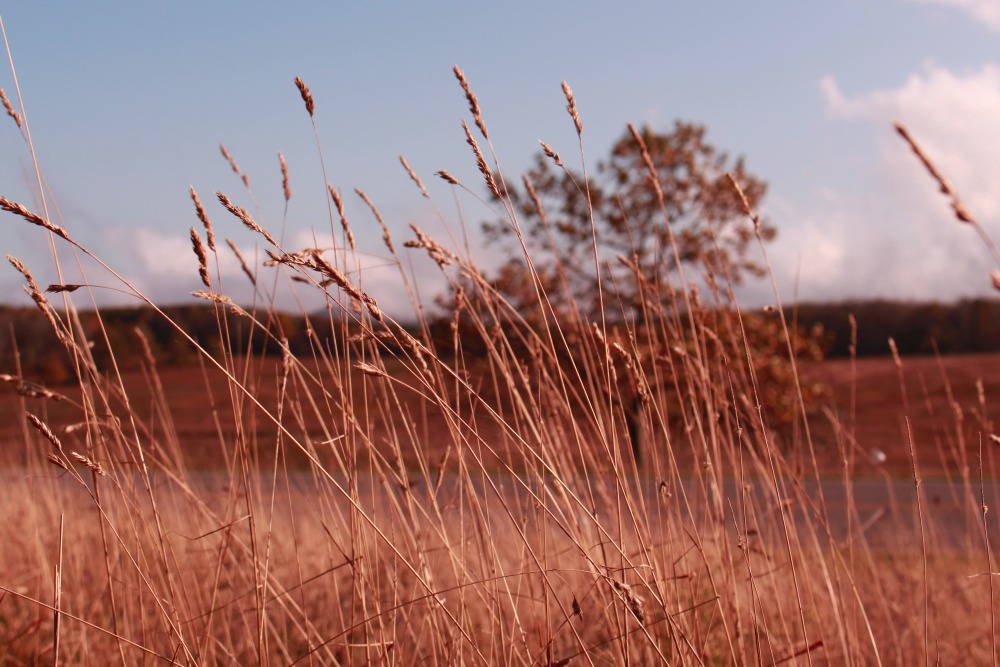
Yuki Ishibashi: Mother Nature - A photograph taken in Shenandoah Natural Habitat in Virginia state of an American plain wheat field grown wildly. This photograph relates to I, Too, Sing America because I wanted to emphasize what we put into our mouths are the same. Different forms and shapes, but overall, it is all made from wheat. Why differentiate in race, class, and community; especially the location you are eating? The gradient of red hue also adds the definition and symbol of the American flag. It also reflects back to neocolonialism when wheat and the great American fields were drawn as the subject and landscapes instead of war and blood on oil paintings.
Delfina Barbiero: Break Time - I took this photo while I was at the March for Our Lives protest earlier this March. The atmosphere was both a somber but also an excited one. In the periphery of all of this excitement were the National Guard with the barricades protecting protesters in the possibility of a worst case scenario. The national guards that manned and guarded these barracks were smiling and joking with one another. They took photos with protesters who asked and smiled and played with the kids who were there. The guard who I photographed was eating an orange during his break and laughing at a joke his buddy was telling him. I hope this photo captures the essences of that the day and the gratitude that everyone had to the guards, who were protecting the national right to protest. It was beautiful day and I am grateful to have taken this photo.
Jean Vozella: Ribs & Wings - This photo was taken in Washington D.C.'s Shaw neighborhood on a 35mm film camera. The foreground of the image includes an old payphone, completely obsolete but still in place in a forgotten corner of the city. The image captures a unique moment in gentrification, a process of urban renewal that displaces established residents from an area of the city as more affluent residents move in. My own reflection is in the window of the closed down takeout restaurant as a way to hold myself accountable for the part I play in changing the social structure of the city.
Kitty Kouwenhoven: I, Too - This photo was taken outside of Union Station in Washington, D.C. There are a few important things that can be noticed about this shot, though I think it is also fair to bring your own interpretations to its meaning. This man is sitting in front of the Columbus Fountain, a monument that celebrates Christopher Columbus. What is interesting to point out is that the man on the statue is a Native American that is supposed to represent the New World. He sits on this monument that forms a wall between the capital and city life on the other side. This begs the question of new and old in this government, in society's ideas, and within the city itself. The poem references having a seat at the table both literally and metaphorically. In this photo, there is a man sitting on one side of a separation, a statue that means to represent the future but truly represents the past in the middle, and the government on the far side.
Lulu Fong: reportedly - For a non-American, the manifestation of I, Too, Sing America is particularly a challenging project that is horned with sensitivities. To me, residing in an era with rapid advancement in communication, segregation is less of a result of race but an intangible presence of culture. My final interpretation aims to visualize the poem not only through depicting the lines, spacing, and pauses apparent in its structural nature but also address provenance/origin and knowledge/intelligence. The former is translated through the texture of the stack of books and their immediate impression of wood-like patterns. The latter makes reference to the content of those books, which are philosophical readings accumulated around D.C. and other continents.
Sergio Teran Baldizon (Naret Photography): Reflection, After Reconstruction - Learning about the American Civil War in high school, what stood out the most to me was how the “reconstruction” period after the Civil War was mainly used as a way for the south to “reconstruct” its racist past (heritage) into an acceptable way of life for the majority of white Americans. This Lincoln mural was painted in late 2017 near the NoMA & the Rhode Island / Brentwood Metro stations in D.C. I photographed this image because growing up, I always heard people discuss Lincoln’s legacy, but I never heard anyone mention the “reconstruction period” in the same sentence. In thinking about how to capture this mural of Lincoln, I put the mural in front of the fence as a way to allude to the open but “enclosed freedom” many black Americans and minorities experience in America (Lincoln is viewable, but access is not easily reachable). Looking further, you will notice the workers constructing the Lincoln memorial and they too are enclosed in an additional cage, which serves to further allude to the criminalization of black Americans and minorities (with promises of progress and legacies left to the marble and murals on the wall). To tie all this together, I used Lincoln's resting hand on the columns and placed a spiked portion of the cage in front of it so it tied the image further in highlighting better the legacy that is really left behind. I want people to reflect on the true legacy that is left behind after the Civil War and the current reconstruction that is still needed in our culture’s infrastructure to address the pain from the past.
Taylor Mickal: National Geographic explorer Victoria Herrmann works on her grant proposal for smart cities in the Arctic. Victoria is one of very few women who has been doing work in the Arctic, an area long dominated by men. Her work in the sciences also represents the growing force of women in the scientific community and a future where representation is equal across the board.
Tim McPhillips: The River Divides - The Anacostia River has been, for a while, the door that divides the kitchen from the dining room table in Washington, D.C. For this, I took my dining room chair, the chair Langston Hughes writes about taking, and I put it in the Anacostia River. I used a long exposure time to create an effect of the water passing through time to indicate the chair has been empty and seen a lot. The image strives to show that Langston Hughes, and many populations in America, are still trying to open the door and take their seat at the dining room table.
Yuki Ishibashi: Mother Nature - A photograph taken in Shenandoah Natural Habitat in Virginia state of an American plain wheat field grown wildly. This photograph relates to I, Too, Sing America because I wanted to emphasize what we put into our mouths are the same. Different forms and shapes, but overall, it is all made from wheat. Why differentiate in race, class, and community; especially the location you are eating? The gradient of red hue also adds the definition and symbol of the American flag. It also reflects back to neocolonialism when wheat and the great American fields were drawn as the subject and landscapes instead of war and blood on oil paintings.
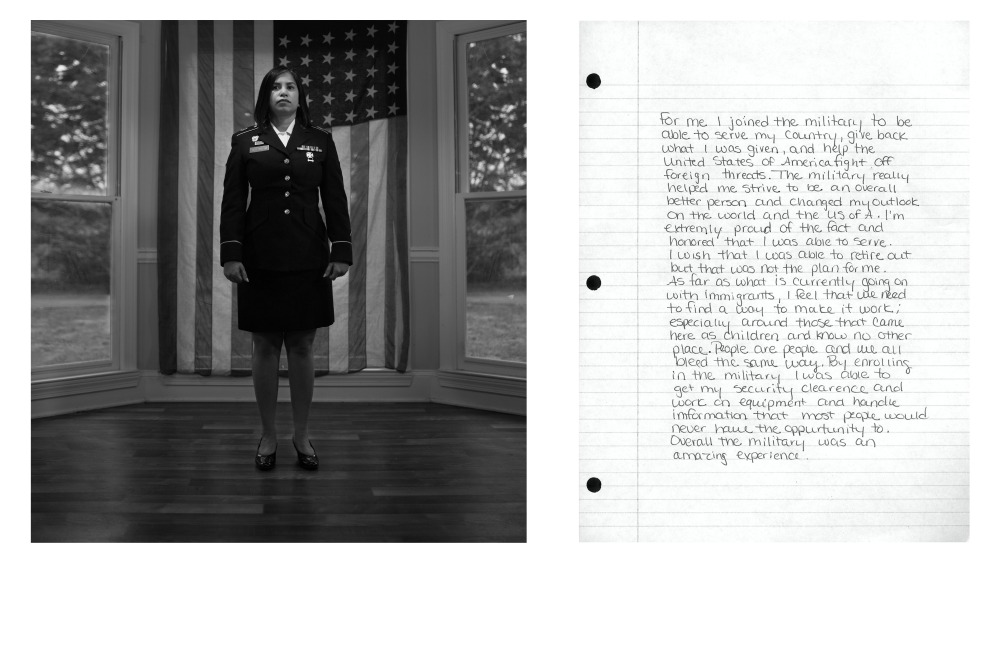
Aboubacar Kante: I pledge allegiance to the flag…. This is a new flag to many who serve in the United States. These immigrants devote their lives demonstrating their tenacity, bravery, and strength beyond even some who were born in this country.
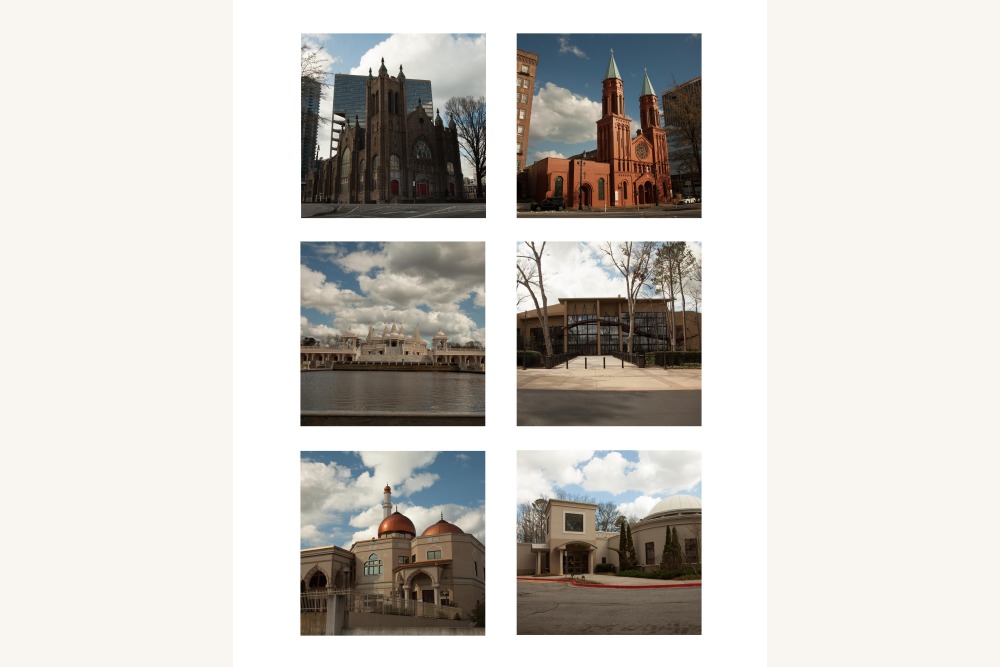
Aundrea Danielson: The United States has always been referred to as a melting pot of cultures and religions. Nothing shows this more than our countries' places of worship. They take on many forms and religions so that all of our citizens have a place they can feel at home.
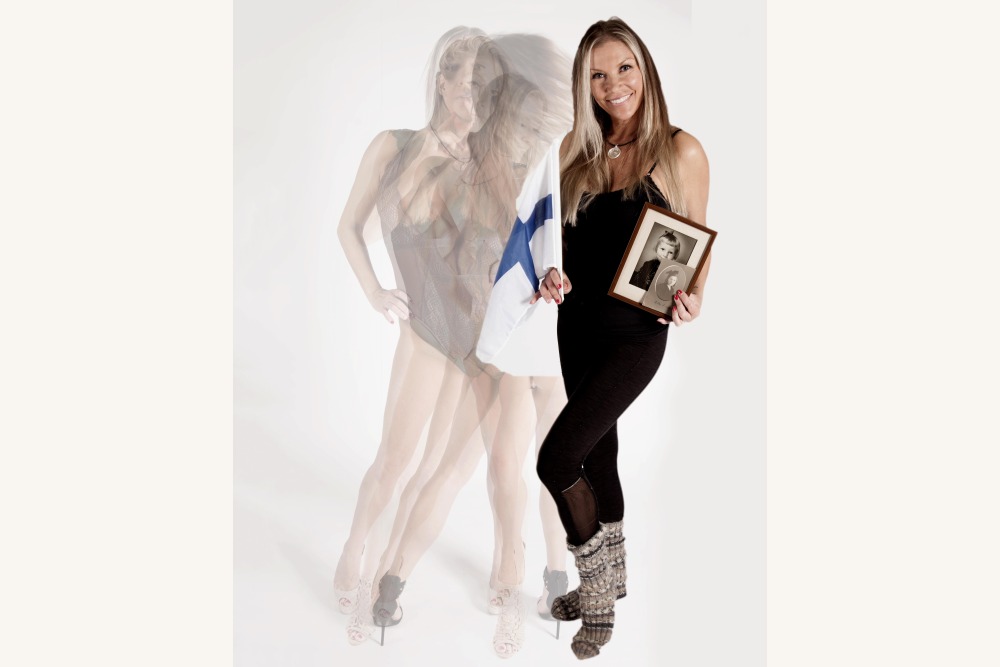
Courtney Blue: Katrina followed her husband to the United States when he found a job in 1996 in hopes of pursuing her own career. Even though she had a degree in business, she had a very hard time finding work. Desperate to help support her husband and their new child, she took to the Help Wanted advertisements. This is where she found an ad for nude modeling. She took the job and found that it paid well. Soon she transitioned into adult acting and worked in that industry for 15 years. She now hopes to retire for that lifestyle since her child is old enough to move on to college.
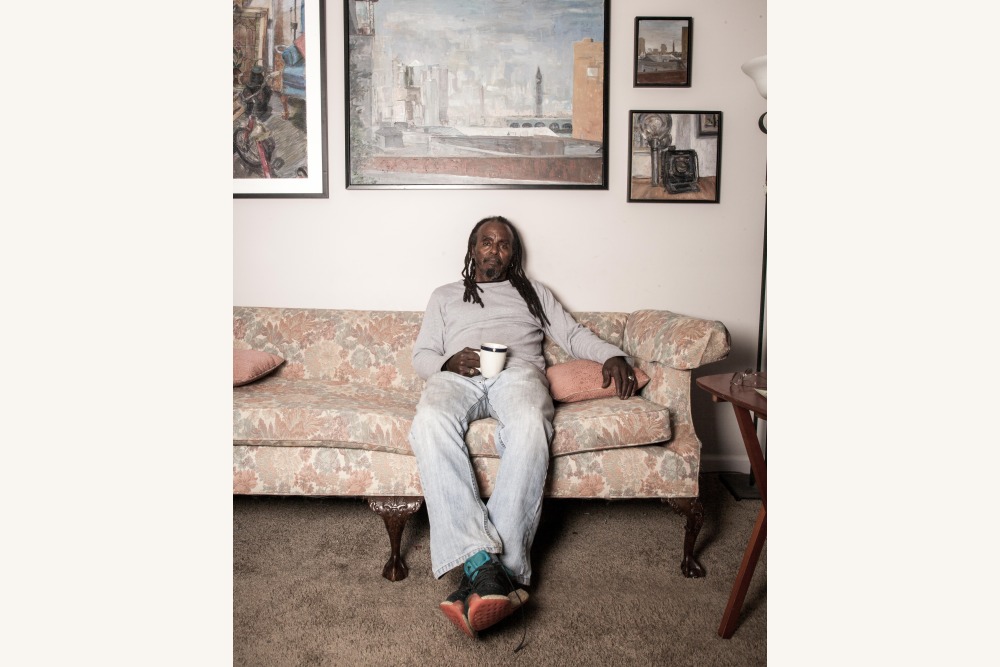
Curtisey Liggins: While growing up in 1950's New York, David had a growing passion for art, but, unfortunately, he did not have the right opportunities to pursue that passion. Living in poverty stricken neighborhoods, David turned to drugs and crime. After being arrested for bank robbery, he spent many years in jail where he was able to sober up and practice his art. Upon being released David, pursued a degree in art and now practices within the professional field. Imagine how different his life would have been if he had more opportunities to get an education earlier in life.
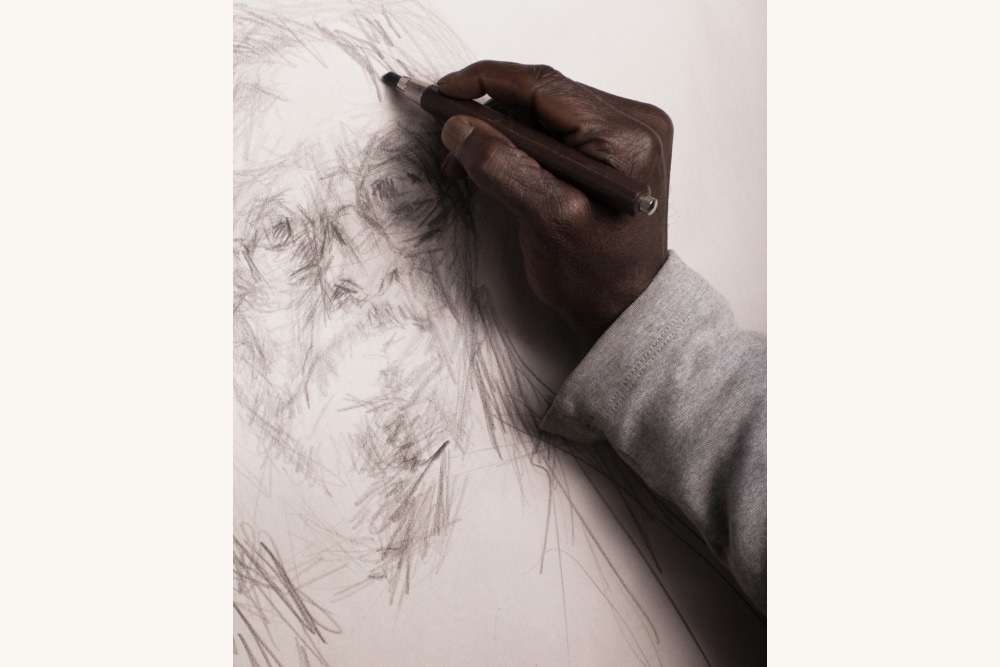
Curtisey Liggins: While growing up in 1950's New York, David had a growing passion for art, but, unfortunately, he did not have the right opportunities to pursue that passion. Living in poverty stricken neighborhoods, David turned to drugs and crime. After being arrested for bank robbery, he spent many years in jail where he was able to sober up and practice his art. Upon being released David, pursued a degree in art and now practices within the professional field. Imagine how different his life would have been if he had more opportunities to get an education earlier in life.
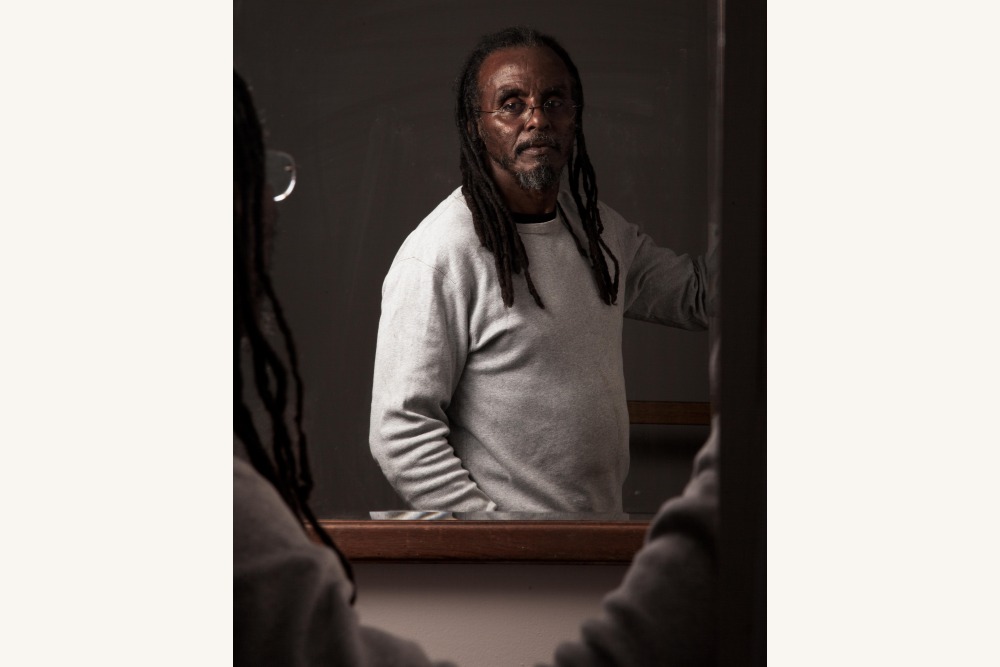
Curtisey Liggins: While growing up in 1950's New York, David had a growing passion for art, but, unfortunately, he did not have the right opportunities to pursue that passion. Living in poverty stricken neighborhoods, David turned to drugs and crime. After being arrested for bank robbery, he spent many years in jail where he was able to sober up and practice his art. Upon being released David, pursued a degree in art and now practices within the professional field. Imagine how different his life would have been if he had more opportunities to get an education earlier in life.
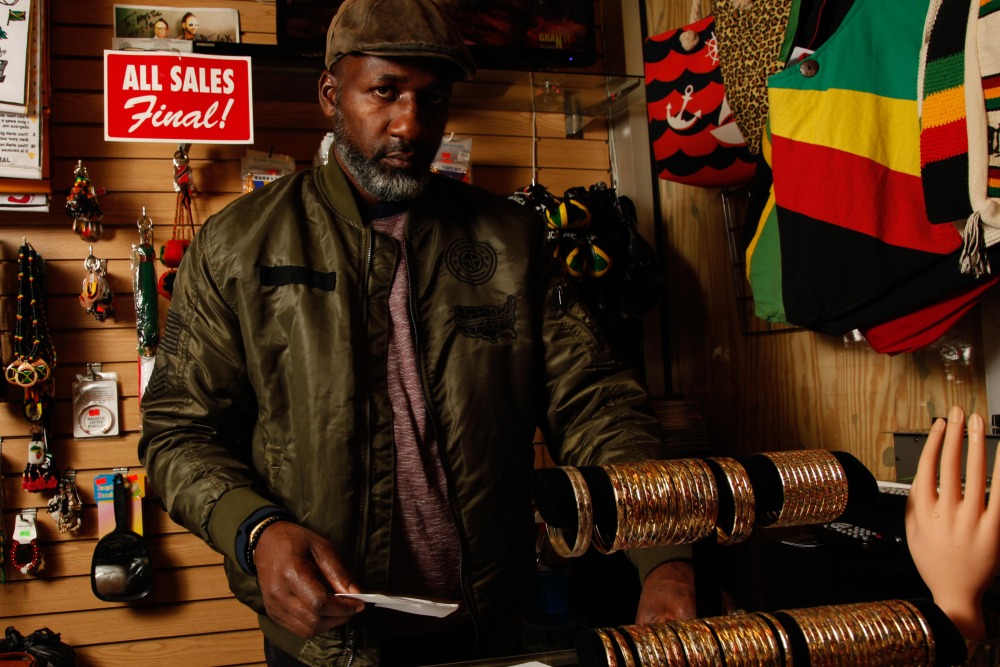
Damir Wiggan: His birth name is a secret, his story is harsh. He goes by the name of 'Babz. He grew up in Jamaica in the late 1970's but ended up fleeing the violence in his community for life in the U.S.; a young nomad who eventually got the opportunity to leave the hectic streets of Kingston City. All he will confess is he never went back. Babz now makes his living by selling Caribbean accessories and CDs of different sounds and genres. His favorite words normally ending most conversations: "Give thanks for life yute."
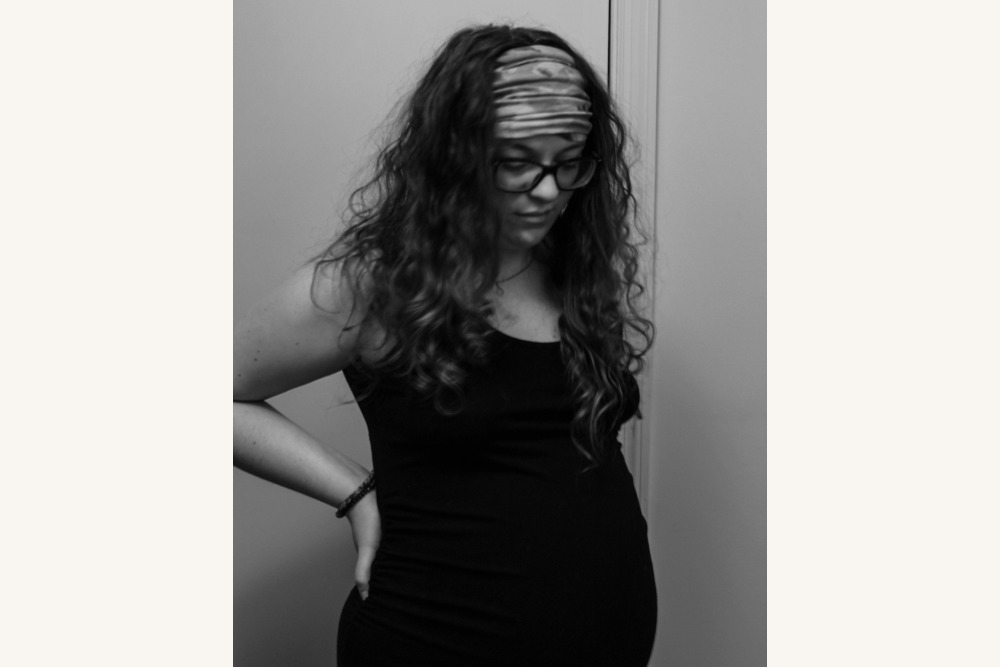
Jaylen Taylor-Rooks: Jordan Levy is a twenty-year-old pregnant female and a soon-to-be single mother. She holds a job at Starbucks and lives at home with her mother and younger sister to help save money for the baby. She also just got back into a relationship with the baby’s father, but there are still many trials in her life that keeps her worried. Even though these are always present, she is excited and looks forward to being a mother.
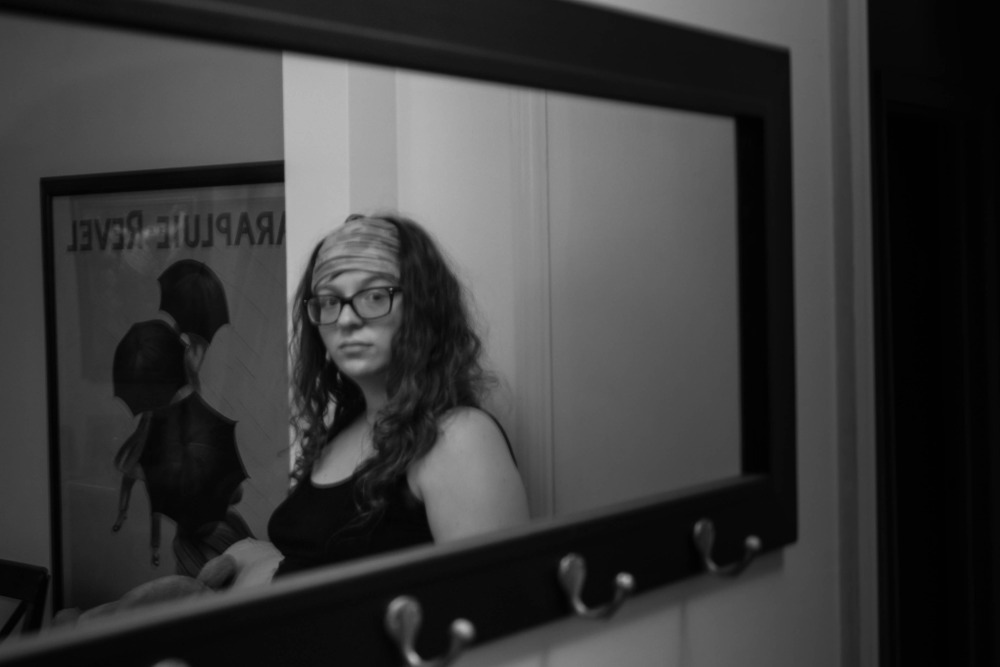
Jaylen Taylor-Rooks: Jordan Levy is a twenty-year-old pregnant female and a soon-to-be single mother. She holds a job at Starbucks and lives at home with her mother and younger sister to help save money for the baby. She also just got back into a relationship with the baby’s father, but there are still many trials in her life that keeps her worried. Even though these are always present, she is excited and looks forward to being a mother.
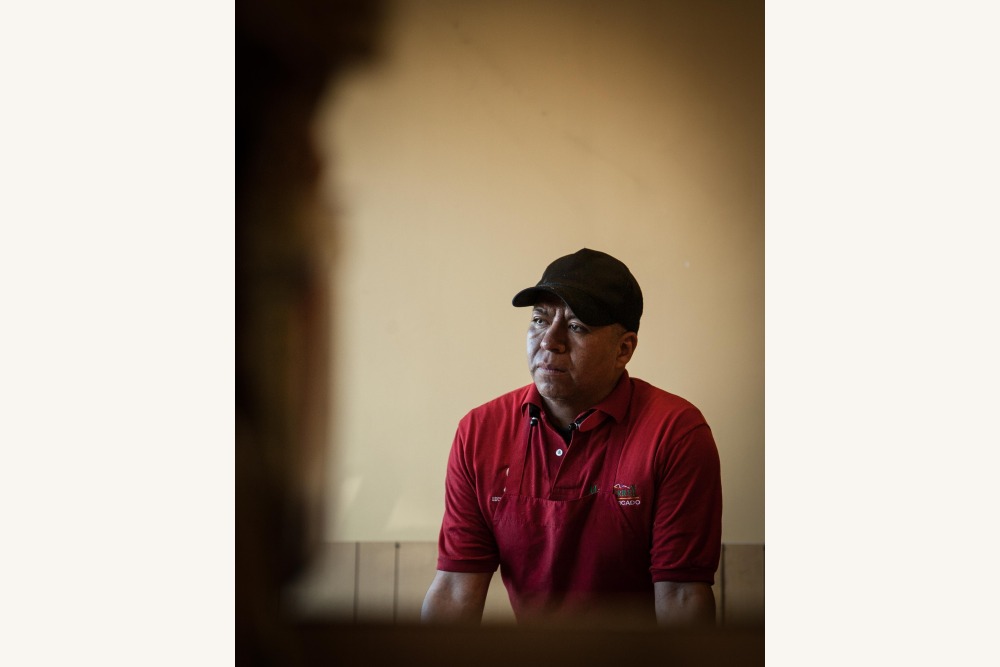
Jorge Echevarria and Cristina Bahena: Mario from Mexico City - This series of images were created to address new immigrants to the U.S. and their thoughts and feelings of the transition. Mario immigrated from Mexico City in 2000 for a job offer in the airport of Gwinnett. “I have liked it over here, but the only problem is the inequality in the States; for example, some states don’t help the immigrants at all to get a driver's license or work permits; some immigrants have to travel far to be able to get that like Chicago or Maryland. There is more discrimination in the southern states.” Pictured in this series: Mario from Mexico City, Flor from Monterrey, Tayde from Tamaulipas, No Title (Man in Red Hoodie).
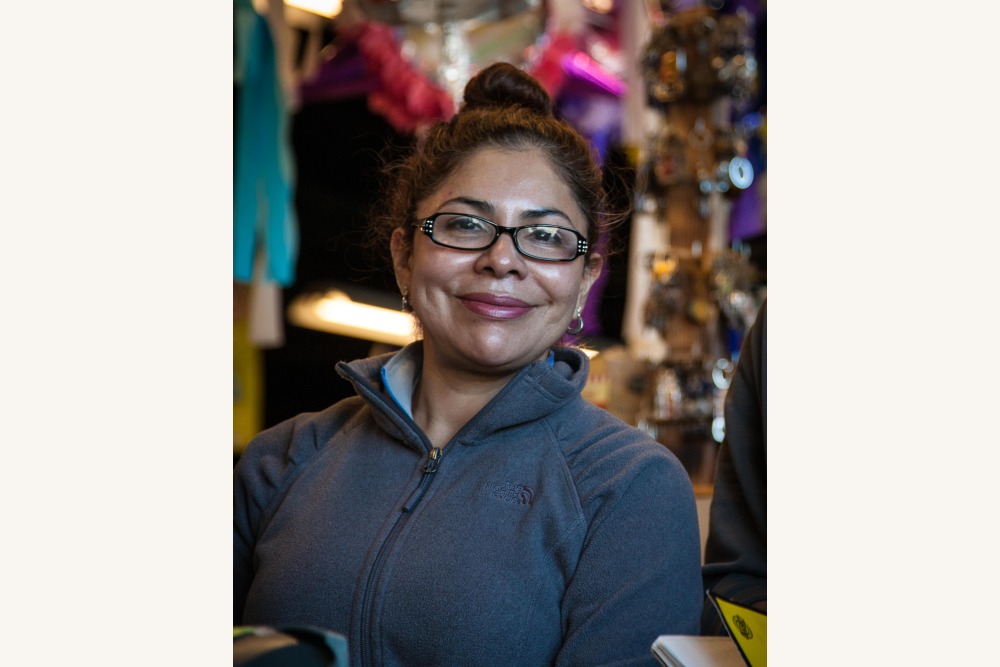
Jorge Echevarria and Cristina Bahena: Flor from Monterrey - This series of images were created to address new immigrants to the U.S. and their thoughts and feelings of the transition. Flor immigrated from Monterrey, Mexico in 1995. “Something I do not like is the bullying in the schools. The big influence that we have as parents is to show our kids that bullying is wrong and they should respect each other. They should teach their kids that when our kids are being bullied, they should stop them. Kids should be comfortable in themselves and stand up. Another thing I wanted to say is that the President and the government are very intelligent and that’s why they are there. I think the President is intelligent in the business world and that can help the economy in this country. But of course, there are certain things we as Latinos are affected by simply because of the laws that are against us as undocumented Latinos. Also, without him knowing, undocumented immigrants can help the economy if the President helps us get papers because it would bring more money to the economy. There are millions of immigrants in the United States who have a big influence in the economy. They could bring more families, open more businesses, and even travel this could help the economy a lot. If you think about it, a lot of immigrants send money to their countries for families, but if it was easier for immigrants to get documents, all that money could stay here and be used here.” Pictured in this series: Mario from Mexico City, Flor from Monterrey, Tayde from Tamaulipas, No Title (Man in Red Hoodie).
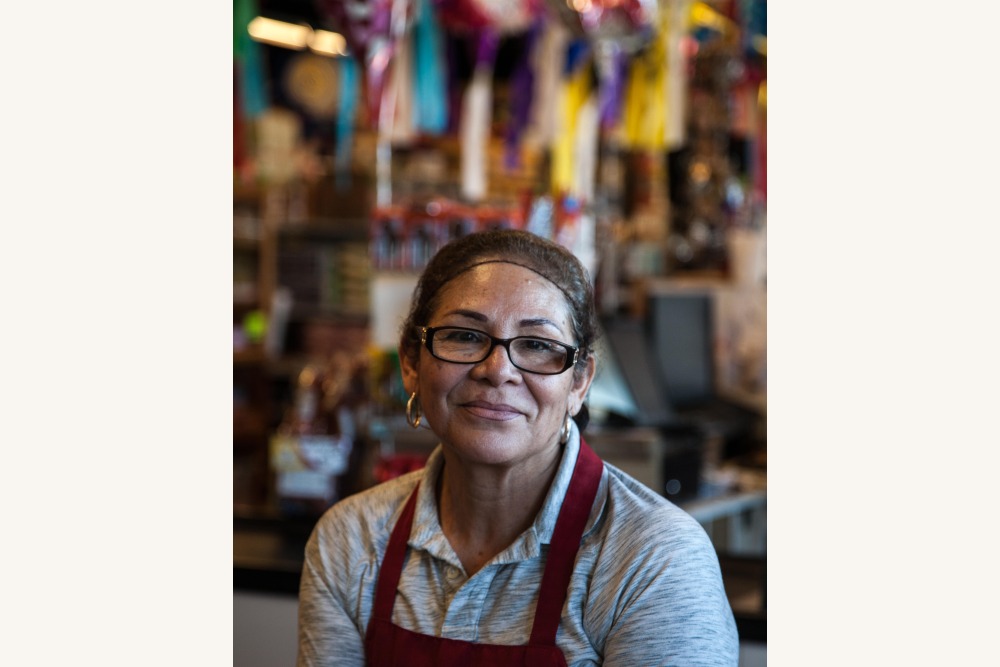
Jorge Echevarria and Cristina Bahena: Tayde from Tamaulipas - This series of images were created to address new immigrants to the U.S. and their thoughts and feelings of the transition. Tayde Martinez immigrated from Tamaulipas, Mexico just three months ago. “Compared to my country, the United States is much, much better. It’s a much cleaner country, something Mexico does not have. I like the United States a lot. Immigrants always want the best for their family and they should never give up and keep fighting. God willing, this President will help immigrants get their papers.” Pictured in this series: Mario from Mexico City, Flor from Monterrey, Tayde from Tamaulipas, No Title (Man in Red Hoodie).
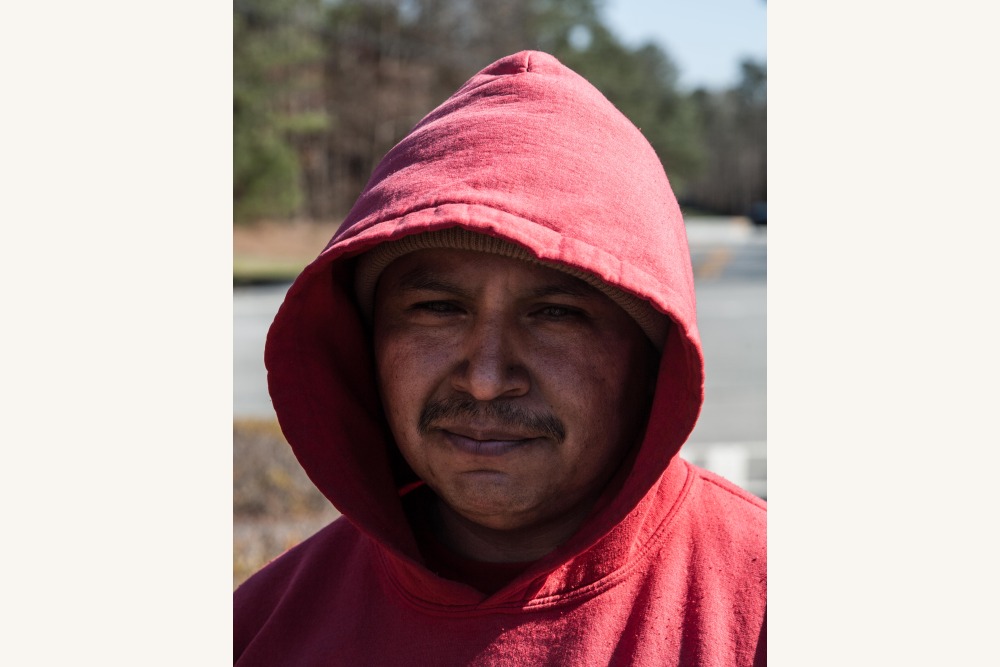
Jorge Echevarria and Cristina Bahena: This series of images were created to address new immigrants to the U.S. and their thoughts and feelings of the transition. “The only problem is that it’s a little harder for immigrants to get jobs. It would be great if there were more work permits. I am very grateful to be in the United States because we have prospered. You have a lot of opportunities in the United States and you can thrive. As immigrants, we should not get into trouble and do what’s right. In this country, you can either succeed or fail.” Pictured in this series: Mario from Mexico City, Flor from Monterrey, Tayde from Tamaulipas, No Title (Man in Red Hoodie).
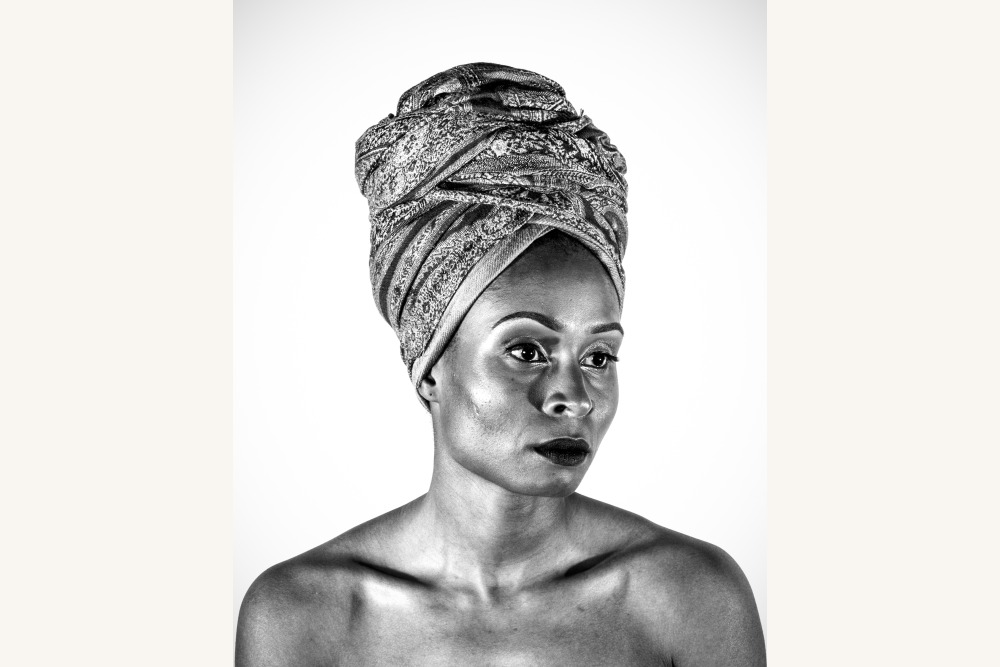
Katiah Byrd
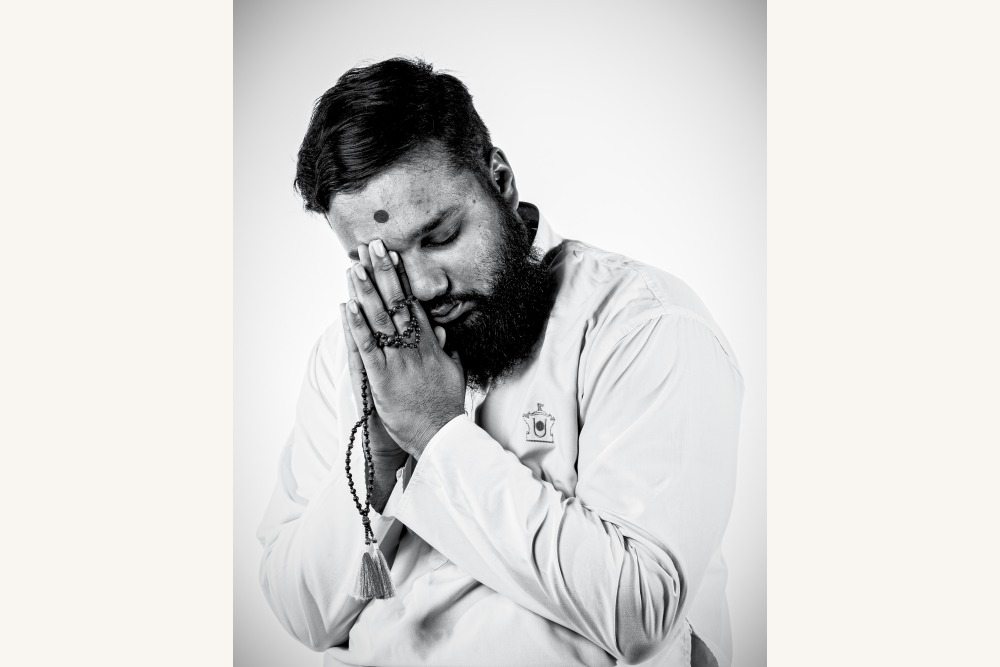
Katiah Byrd
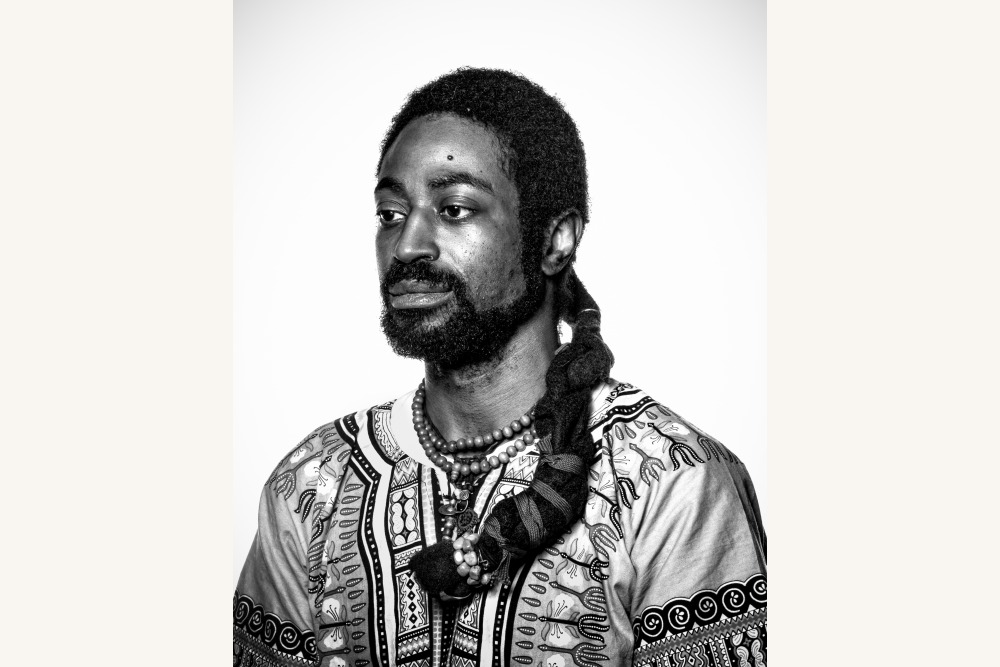
Katiah Byrd
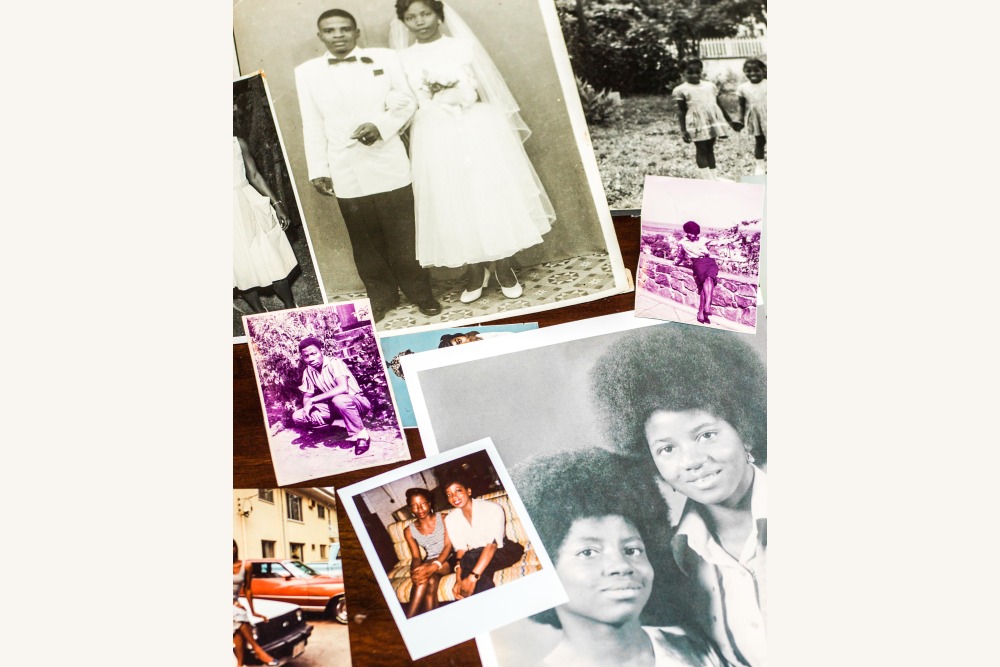
Kristopher Burris: Memories - “I’m torn, broken, and reborn. I am Liberia.” This series is based on a woman who has lost everything due to the civil war in Liberia. Escaping the country to come to the United States, she had to leave her husband behind, who was imprisoned and ill; he died soon after being released and thrown into the streets. Luckily she was able to bring her two daughters with her to the U.S. but, unfortunately, one was lost to a drunk driver. Pictured in this series: Memories, Woman of Liberia.
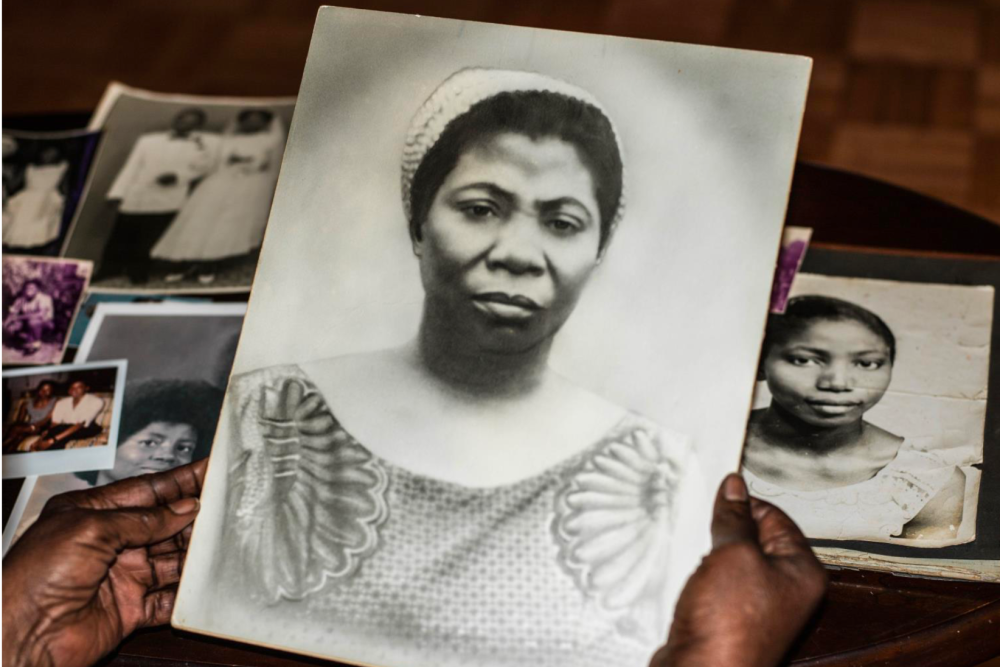
Kristopher Burris: Memories - “I’m torn, broken, and reborn. I am Liberia.” This series is based on a woman who has lost everything due to the civil war in Liberia. Escaping the country to come to the United States, she had to leave her husband behind, who was imprisoned and ill; he died soon after being released and thrown into the streets. Luckily she was able to bring her two daughters with her to the U.S. but, unfortunately, one was lost to a drunk driver. While these memories are not happy ones, she still embraces the past and continues on with her sole daughter. Pictured in this series: Memories, Woman of Liberia.
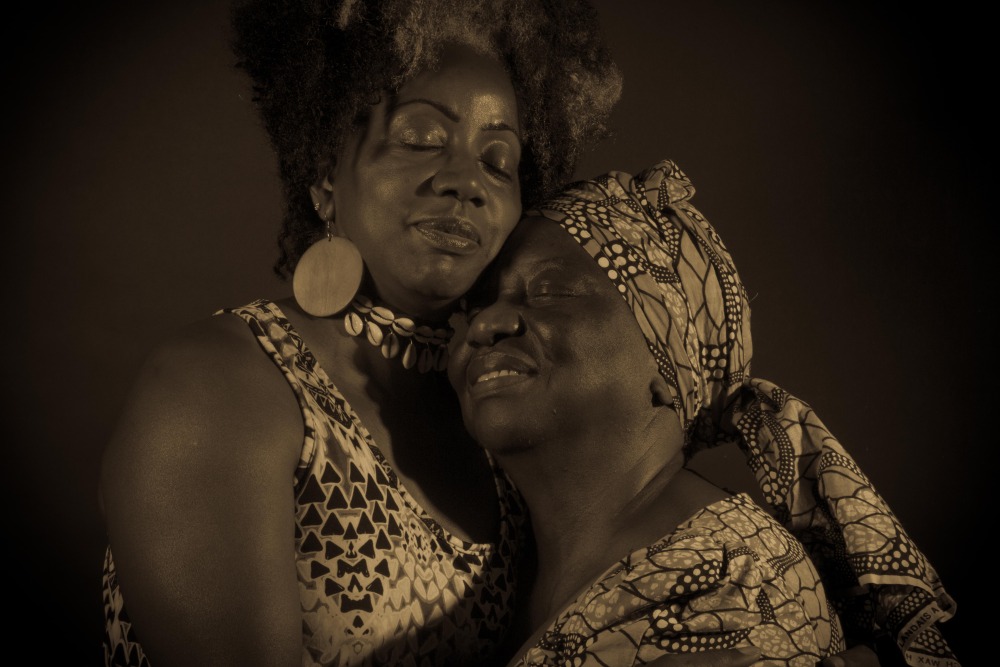
Kristopher Burris: Woman of Liberia - “I’m torn, broken, and reborn. I am Liberia.” This series is based on a woman who has lost everything due to the civil war in Liberia. Escaping the country to come to the United States, she had to leave her husband behind, who was imprisoned and ill; he died soon after being released and thrown into the streets. Luckily she was able to bring her two daughters with her to the U.S. but, unfortunately, one was lost to a drunk driver. While these memories are not happy ones, she still embraces the past and continues on with her sole daughter. Pictured in this series: Memories, Woman of Liberia.
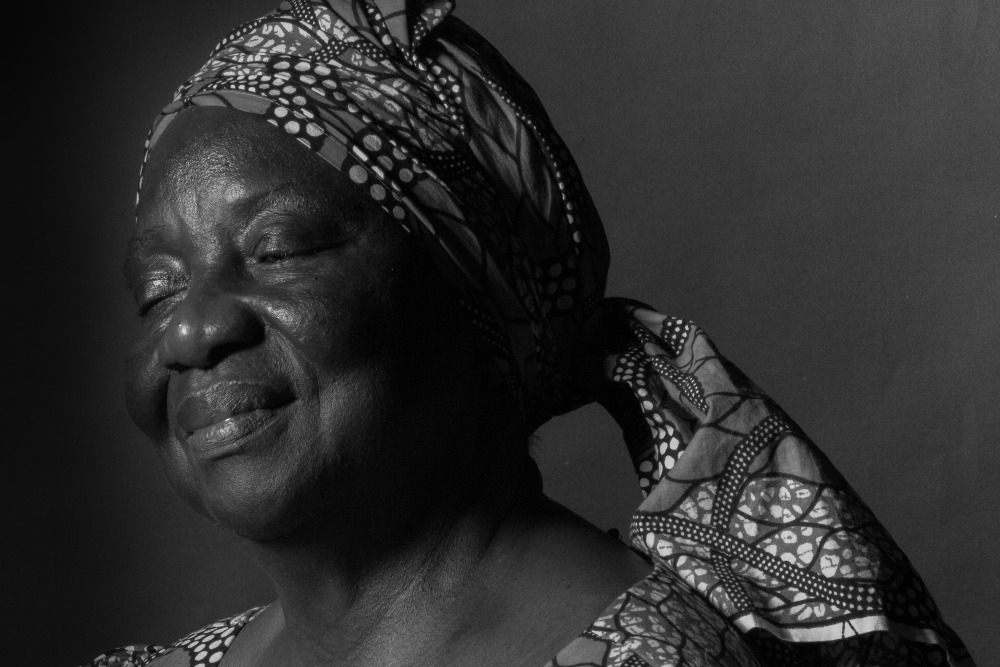
Kristopher Burris: Woman of Liberia - “I’m torn, broken, and reborn. I am Liberia.” This series is based on a woman who has lost everything due to the civil war in Liberia. Escaping the country to come to the United States, she had to leave her husband behind, who was imprisoned and ill; he died soon after being released and thrown into the streets. Luckily she was able to bring her two daughters with her to the U.S. but, unfortunately, one was lost to a drunk driver. While these memories are not happy ones, she still embraces the past and continues on with her sole daughter. Pictured in this series: Memories, Woman of Liberia.
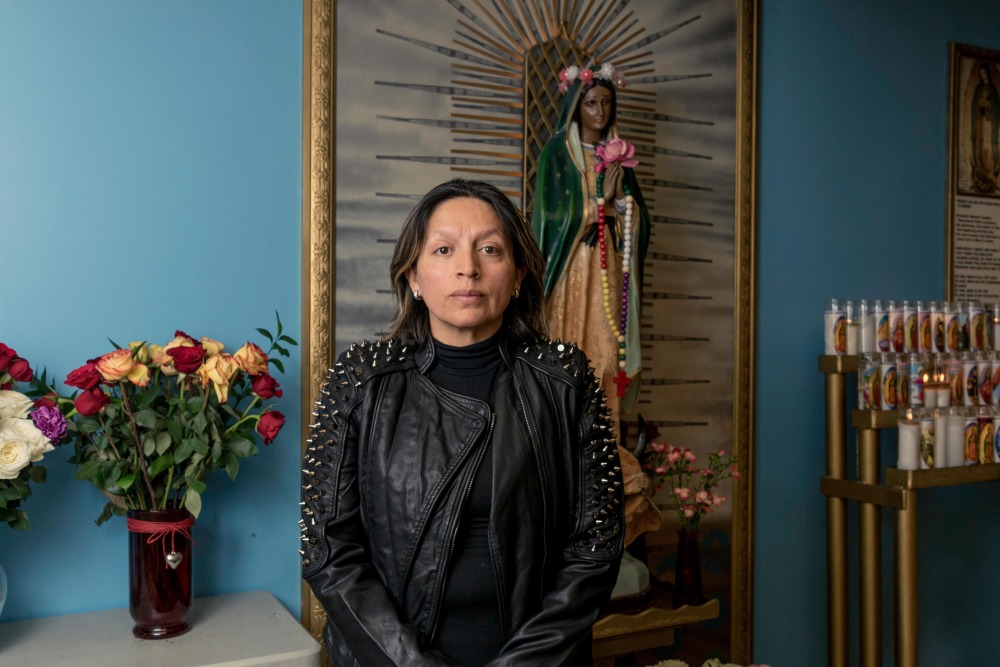
Manuel Menendez: Hispanic women in place of tranquility. A Hispanic household.
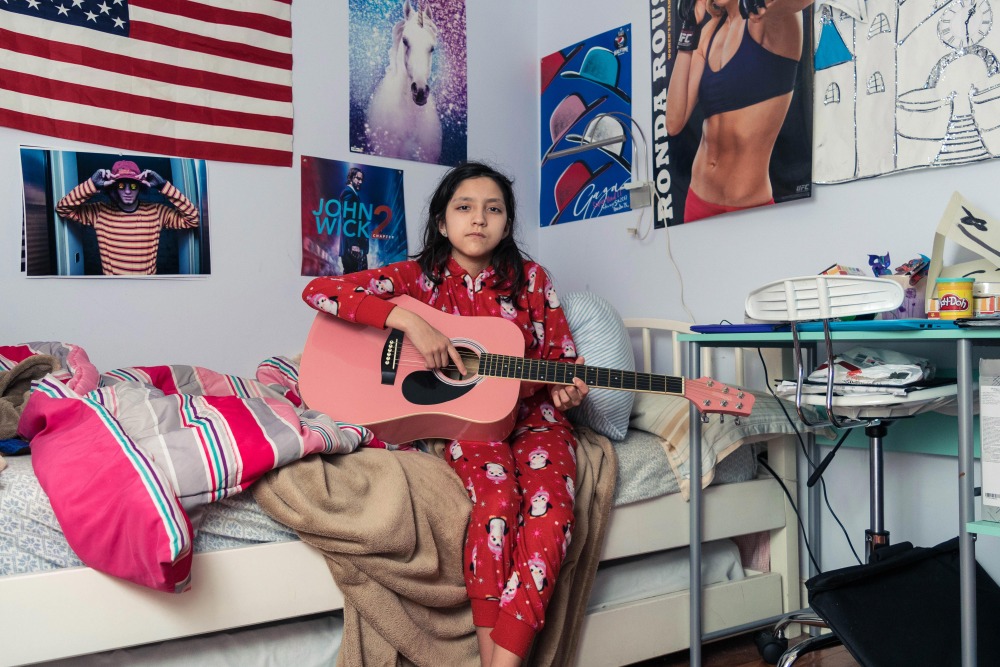
Manuel Menendez: Hispanic women in place of tranquility. A Hispanic household.
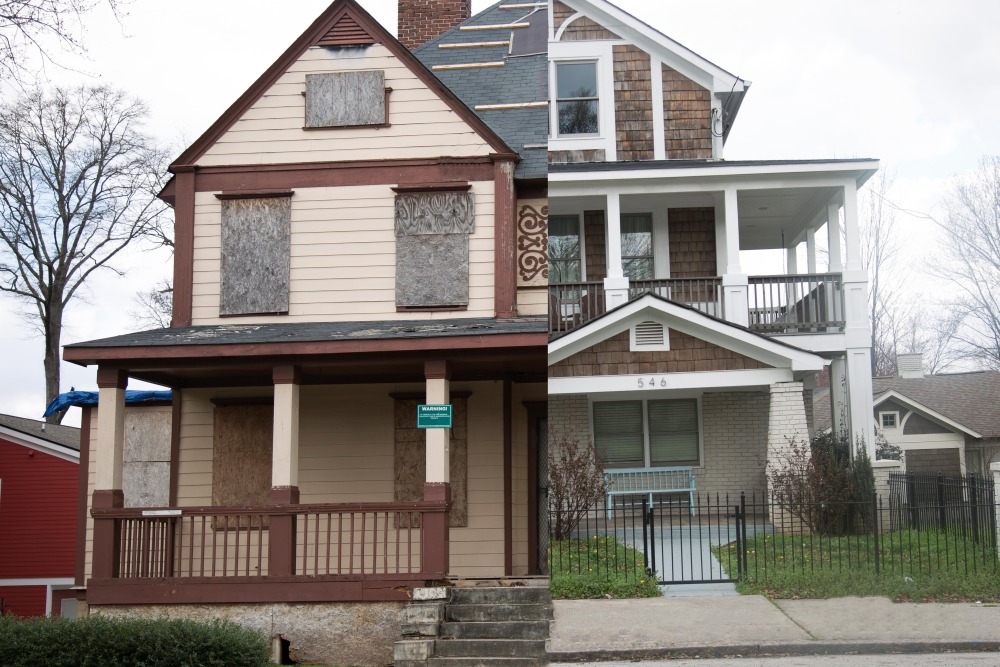
Phaedra Williamson: Gentrification is a large part of any city but especially in Atlanta. Right next door to that modern luxury house is that possibly forgotten about, abandoned, once full of life house; now it is boarded up and falling apart. I chose to visualize this to help bring awareness to what is becoming a major issue among the city limits. Where do we draw the line from keeping the integrity of the city, with the old structures and houses, to staying with the current modern age to “keep up with the times”? This is happening in our very own neighborhoods, on the same streets we live on, and it’s not getting any better.
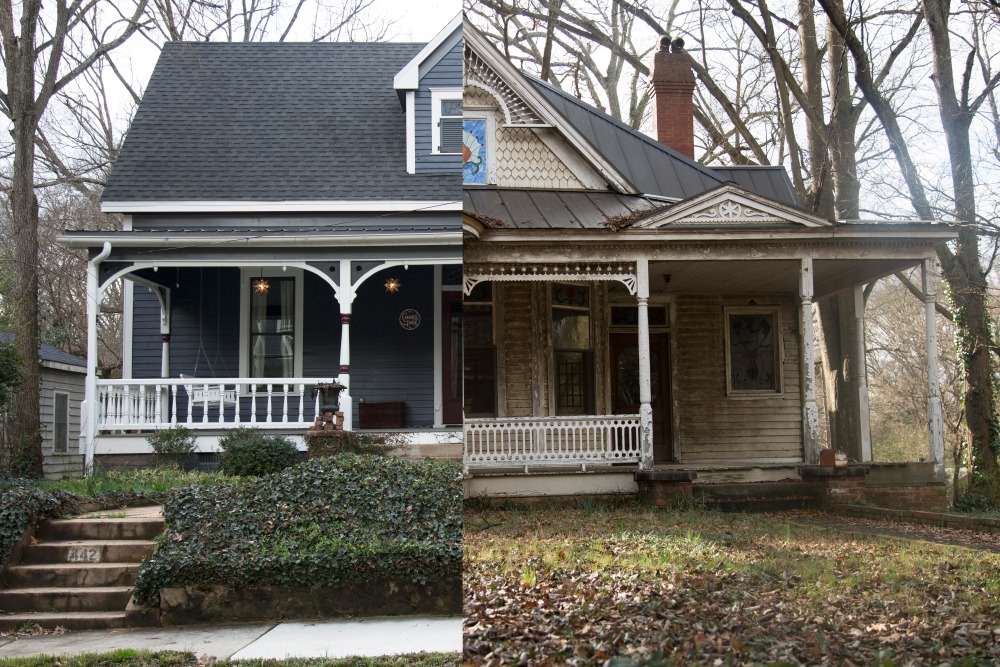
Phaedra Williamson: Gentrification is a large part of any city but especially in Atlanta. Right next door to that modern luxury house is that possibly forgotten about, abandoned, once full of life house; now it is boarded up and falling apart. I chose to visualize this to help bring awareness to what is becoming a major issue among the city limits. Where do we draw the line from keeping the integrity of the city, with the old structures and houses, to staying with the current modern age to “keep up with the times”? This is happening in our very own neighborhoods, on the same streets we live on, and it’s not getting any better.
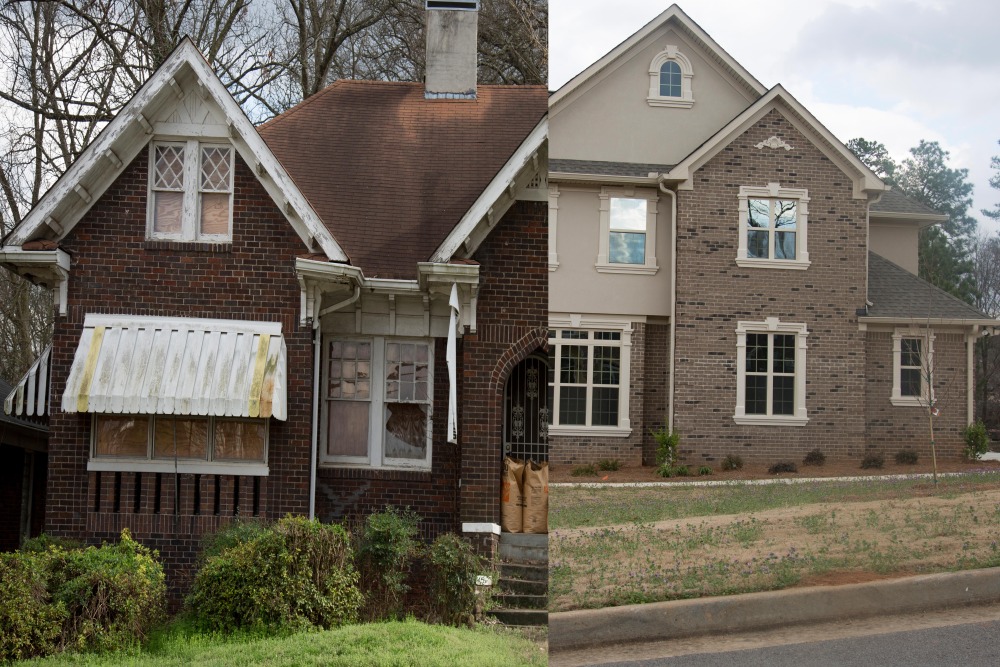
Phaedra Williamson: Gentrification is a large part of any city but especially in Atlanta. Right next door to that modern luxury house is that possibly forgotten about, abandoned, once full of life house; now it is boarded up and falling apart. I chose to visualize this to help bring awareness to what is becoming a major issue among the city limits. Where do we draw the line from keeping the integrity of the city, with the old structures and houses, to staying with the current modern age to “keep up with the times”? This is happening in our very own neighborhoods, on the same streets we live on, and it’s not getting any better.
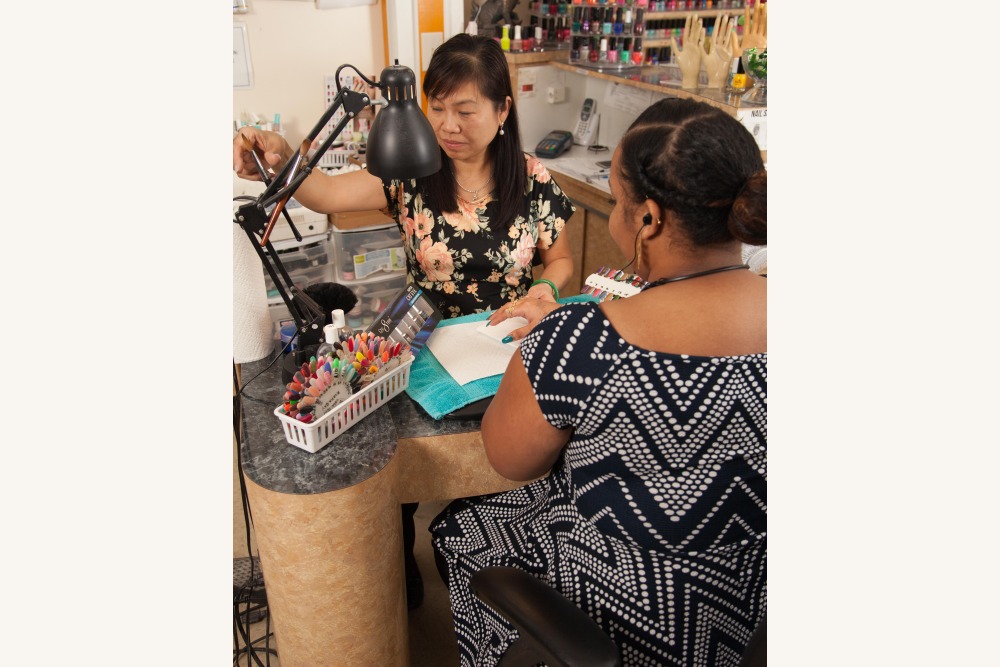
Stephon Duff: Leaving home, leaving Vietnam. The United States brings opportunities that were not available at home, like owning my own business.
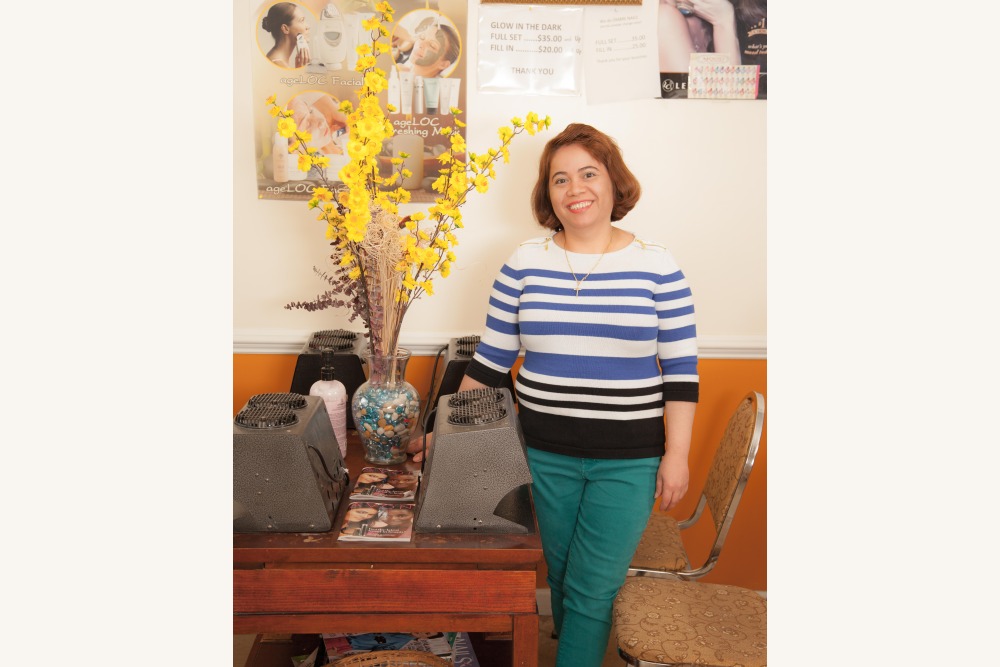
Stephon Duff: Leaving home, leaving Vietnam. The United States brings opportunities that were not available at home, like owning my own business.
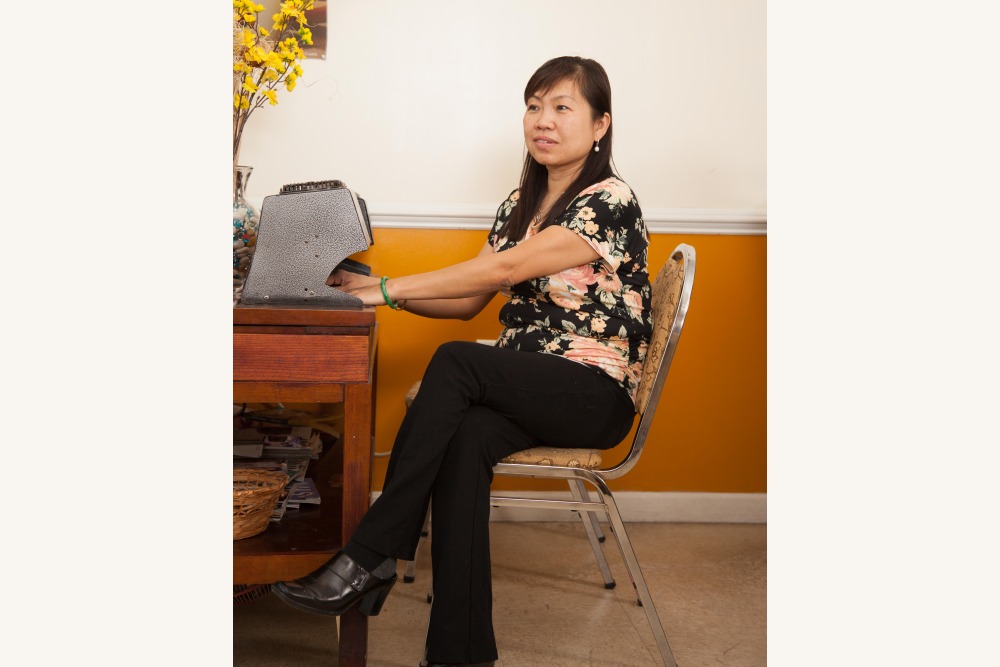
Stephon Duff: Leaving home, leaving Vietnam. The United States brings opportunities that were not available at home, like owning my own business.
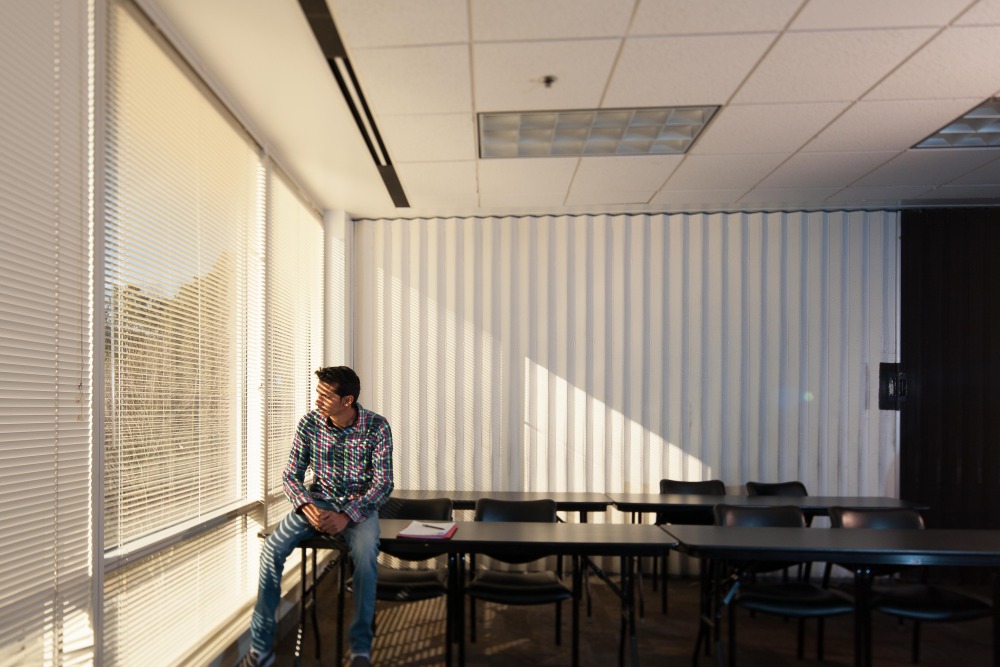
Taja Travis: Viral Patel, or as his friends know him, Sam, came to the United States in search of an education within the arts. While he has made friends, there is still a sense of being completely alone in this new country.
Aboubacar Kante: I pledge allegiance to the flag…. This is a new flag to many who serve in the United States. These immigrants devote their lives demonstrating their tenacity, bravery, and strength beyond even some who were born in this country.
Aundrea Danielson: The United States has always been referred to as a melting pot of cultures and religions. Nothing shows this more than our countries' places of worship. They take on many forms and religions so that all of our citizens have a place they can feel at home.
Courtney Blue: Katrina followed her husband to the United States when he found a job in 1996 in hopes of pursuing her own career. Even though she had a degree in business, she had a very hard time finding work. Desperate to help support her husband and their new child, she took to the Help Wanted advertisements. This is where she found an ad for nude modeling. She took the job and found that it paid well. Soon she transitioned into adult acting and worked in that industry for 15 years. She now hopes to retire for that lifestyle since her child is old enough to move on to college.
Curtisey Liggins: While growing up in 1950's New York, David had a growing passion for art, but, unfortunately, he did not have the right opportunities to pursue that passion. Living in poverty stricken neighborhoods, David turned to drugs and crime. After being arrested for bank robbery, he spent many years in jail where he was able to sober up and practice his art. Upon being released David, pursued a degree in art and now practices within the professional field. Imagine how different his life would have been if he had more opportunities to get an education earlier in life.
Curtisey Liggins: While growing up in 1950's New York, David had a growing passion for art, but, unfortunately, he did not have the right opportunities to pursue that passion. Living in poverty stricken neighborhoods, David turned to drugs and crime. After being arrested for bank robbery, he spent many years in jail where he was able to sober up and practice his art. Upon being released David, pursued a degree in art and now practices within the professional field. Imagine how different his life would have been if he had more opportunities to get an education earlier in life.
Curtisey Liggins: While growing up in 1950's New York, David had a growing passion for art, but, unfortunately, he did not have the right opportunities to pursue that passion. Living in poverty stricken neighborhoods, David turned to drugs and crime. After being arrested for bank robbery, he spent many years in jail where he was able to sober up and practice his art. Upon being released David, pursued a degree in art and now practices within the professional field. Imagine how different his life would have been if he had more opportunities to get an education earlier in life.
Damir Wiggan: His birth name is a secret, his story is harsh. He goes by the name of 'Babz. He grew up in Jamaica in the late 1970's but ended up fleeing the violence in his community for life in the U.S.; a young nomad who eventually got the opportunity to leave the hectic streets of Kingston City. All he will confess is he never went back. Babz now makes his living by selling Caribbean accessories and CDs of different sounds and genres. His favorite words normally ending most conversations: "Give thanks for life yute."
Jaylen Taylor-Rooks: Jordan Levy is a twenty-year-old pregnant female and a soon-to-be single mother. She holds a job at Starbucks and lives at home with her mother and younger sister to help save money for the baby. She also just got back into a relationship with the baby’s father, but there are still many trials in her life that keeps her worried. Even though these are always present, she is excited and looks forward to being a mother.
Jaylen Taylor-Rooks: Jordan Levy is a twenty-year-old pregnant female and a soon-to-be single mother. She holds a job at Starbucks and lives at home with her mother and younger sister to help save money for the baby. She also just got back into a relationship with the baby’s father, but there are still many trials in her life that keeps her worried. Even though these are always present, she is excited and looks forward to being a mother.
Jorge Echevarria and Cristina Bahena: Mario from Mexico City - This series of images were created to address new immigrants to the U.S. and their thoughts and feelings of the transition. Mario immigrated from Mexico City in 2000 for a job offer in the airport of Gwinnett. “I have liked it over here, but the only problem is the inequality in the States; for example, some states don’t help the immigrants at all to get a driver's license or work permits; some immigrants have to travel far to be able to get that like Chicago or Maryland. There is more discrimination in the southern states.” Pictured in this series: Mario from Mexico City, Flor from Monterrey, Tayde from Tamaulipas, No Title (Man in Red Hoodie).
Jorge Echevarria and Cristina Bahena: Flor from Monterrey - This series of images were created to address new immigrants to the U.S. and their thoughts and feelings of the transition. Flor immigrated from Monterrey, Mexico in 1995. “Something I do not like is the bullying in the schools. The big influence that we have as parents is to show our kids that bullying is wrong and they should respect each other. They should teach their kids that when our kids are being bullied, they should stop them. Kids should be comfortable in themselves and stand up. Another thing I wanted to say is that the President and the government are very intelligent and that’s why they are there. I think the President is intelligent in the business world and that can help the economy in this country. But of course, there are certain things we as Latinos are affected by simply because of the laws that are against us as undocumented Latinos. Also, without him knowing, undocumented immigrants can help the economy if the President helps us get papers because it would bring more money to the economy. There are millions of immigrants in the United States who have a big influence in the economy. They could bring more families, open more businesses, and even travel this could help the economy a lot. If you think about it, a lot of immigrants send money to their countries for families, but if it was easier for immigrants to get documents, all that money could stay here and be used here.” Pictured in this series: Mario from Mexico City, Flor from Monterrey, Tayde from Tamaulipas, No Title (Man in Red Hoodie).
Jorge Echevarria and Cristina Bahena: Tayde from Tamaulipas - This series of images were created to address new immigrants to the U.S. and their thoughts and feelings of the transition. Tayde Martinez immigrated from Tamaulipas, Mexico just three months ago. “Compared to my country, the United States is much, much better. It’s a much cleaner country, something Mexico does not have. I like the United States a lot. Immigrants always want the best for their family and they should never give up and keep fighting. God willing, this President will help immigrants get their papers.” Pictured in this series: Mario from Mexico City, Flor from Monterrey, Tayde from Tamaulipas, No Title (Man in Red Hoodie).
Jorge Echevarria and Cristina Bahena: This series of images were created to address new immigrants to the U.S. and their thoughts and feelings of the transition. “The only problem is that it’s a little harder for immigrants to get jobs. It would be great if there were more work permits. I am very grateful to be in the United States because we have prospered. You have a lot of opportunities in the United States and you can thrive. As immigrants, we should not get into trouble and do what’s right. In this country, you can either succeed or fail.” Pictured in this series: Mario from Mexico City, Flor from Monterrey, Tayde from Tamaulipas, No Title (Man in Red Hoodie).
Katiah Byrd
Katiah Byrd
Katiah Byrd
Kristopher Burris: Memories - “I’m torn, broken, and reborn. I am Liberia.” This series is based on a woman who has lost everything due to the civil war in Liberia. Escaping the country to come to the United States, she had to leave her husband behind, who was imprisoned and ill; he died soon after being released and thrown into the streets. Luckily she was able to bring her two daughters with her to the U.S. but, unfortunately, one was lost to a drunk driver. Pictured in this series: Memories, Woman of Liberia.
Kristopher Burris: Memories - “I’m torn, broken, and reborn. I am Liberia.” This series is based on a woman who has lost everything due to the civil war in Liberia. Escaping the country to come to the United States, she had to leave her husband behind, who was imprisoned and ill; he died soon after being released and thrown into the streets. Luckily she was able to bring her two daughters with her to the U.S. but, unfortunately, one was lost to a drunk driver. While these memories are not happy ones, she still embraces the past and continues on with her sole daughter. Pictured in this series: Memories, Woman of Liberia.
Kristopher Burris: Woman of Liberia - “I’m torn, broken, and reborn. I am Liberia.” This series is based on a woman who has lost everything due to the civil war in Liberia. Escaping the country to come to the United States, she had to leave her husband behind, who was imprisoned and ill; he died soon after being released and thrown into the streets. Luckily she was able to bring her two daughters with her to the U.S. but, unfortunately, one was lost to a drunk driver. While these memories are not happy ones, she still embraces the past and continues on with her sole daughter. Pictured in this series: Memories, Woman of Liberia.
Kristopher Burris: Woman of Liberia - “I’m torn, broken, and reborn. I am Liberia.” This series is based on a woman who has lost everything due to the civil war in Liberia. Escaping the country to come to the United States, she had to leave her husband behind, who was imprisoned and ill; he died soon after being released and thrown into the streets. Luckily she was able to bring her two daughters with her to the U.S. but, unfortunately, one was lost to a drunk driver. While these memories are not happy ones, she still embraces the past and continues on with her sole daughter. Pictured in this series: Memories, Woman of Liberia.
Manuel Menendez: Hispanic women in place of tranquility. A Hispanic household.
Manuel Menendez: Hispanic women in place of tranquility. A Hispanic household.
Phaedra Williamson: Gentrification is a large part of any city but especially in Atlanta. Right next door to that modern luxury house is that possibly forgotten about, abandoned, once full of life house; now it is boarded up and falling apart. I chose to visualize this to help bring awareness to what is becoming a major issue among the city limits. Where do we draw the line from keeping the integrity of the city, with the old structures and houses, to staying with the current modern age to “keep up with the times”? This is happening in our very own neighborhoods, on the same streets we live on, and it’s not getting any better.
Phaedra Williamson: Gentrification is a large part of any city but especially in Atlanta. Right next door to that modern luxury house is that possibly forgotten about, abandoned, once full of life house; now it is boarded up and falling apart. I chose to visualize this to help bring awareness to what is becoming a major issue among the city limits. Where do we draw the line from keeping the integrity of the city, with the old structures and houses, to staying with the current modern age to “keep up with the times”? This is happening in our very own neighborhoods, on the same streets we live on, and it’s not getting any better.
Phaedra Williamson: Gentrification is a large part of any city but especially in Atlanta. Right next door to that modern luxury house is that possibly forgotten about, abandoned, once full of life house; now it is boarded up and falling apart. I chose to visualize this to help bring awareness to what is becoming a major issue among the city limits. Where do we draw the line from keeping the integrity of the city, with the old structures and houses, to staying with the current modern age to “keep up with the times”? This is happening in our very own neighborhoods, on the same streets we live on, and it’s not getting any better.
Stephon Duff: Leaving home, leaving Vietnam. The United States brings opportunities that were not available at home, like owning my own business.
Stephon Duff: Leaving home, leaving Vietnam. The United States brings opportunities that were not available at home, like owning my own business.
Stephon Duff: Leaving home, leaving Vietnam. The United States brings opportunities that were not available at home, like owning my own business.
Taja Travis: Viral Patel, or as his friends know him, Sam, came to the United States in search of an education within the arts. While he has made friends, there is still a sense of being completely alone in this new country.
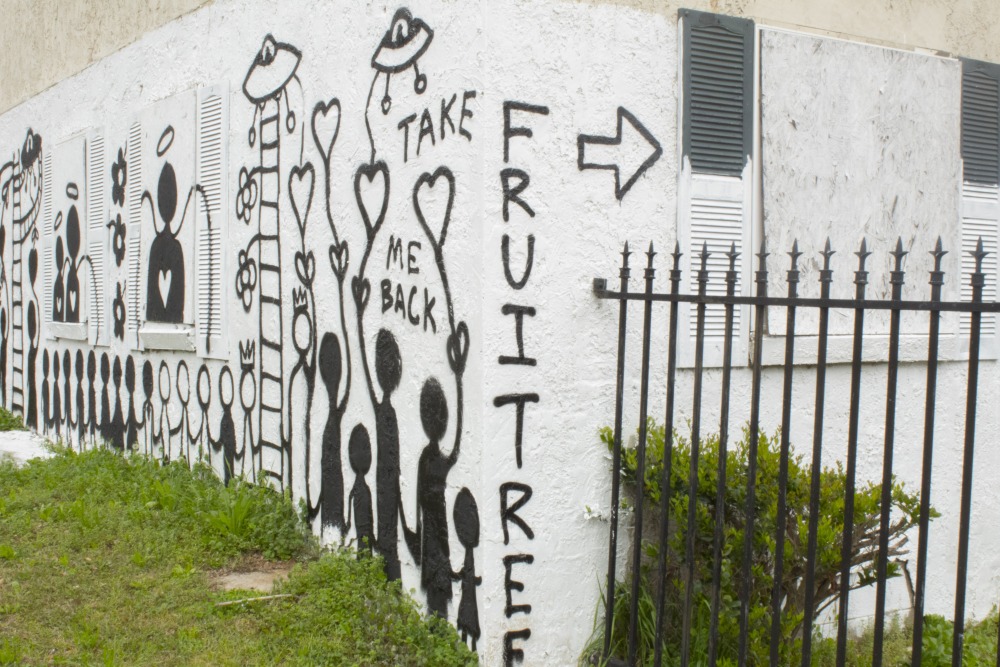
Afiya Williams: South Side - For my West Side / South Side National Exhibition photos, I decided to do a photo essay of what it looks like on the south side of Atlanta vs. the west side. Historically, the more south you head in any given state, the more “urban” the areas are. West, east, and north are [populated by] mostly middle to upper class… white people. One of the first things I noticed when I… moved to Atlanta for college was that the gentrification in certain areas [was] rather abrupt. On one side of the street, there’s the ghetto. Black people hanging out [at] corner shops, grass growing high through the cracks of the sidewalks, run down or vacant houses, homeless people pushing their grocery carts full of garbage bags, etc. …On the other side of the street, there [are] places like the new Mercedes-Benz Stadium, fancy glass skyscrapers, or Midtown flats with nice stores and freshly paved roads. My plan was to capture a series of photos that show that gentrification and the difference between a predominantly black neighborhood on the Southside of Atlanta and the predominantly white neighborhood in the other cardinal directions. …I drove around… MLK Drive and the surrounding area of my university, Clark Atlanta University, for the south side part of the project and I went to Atlantic Station… for the west side part.
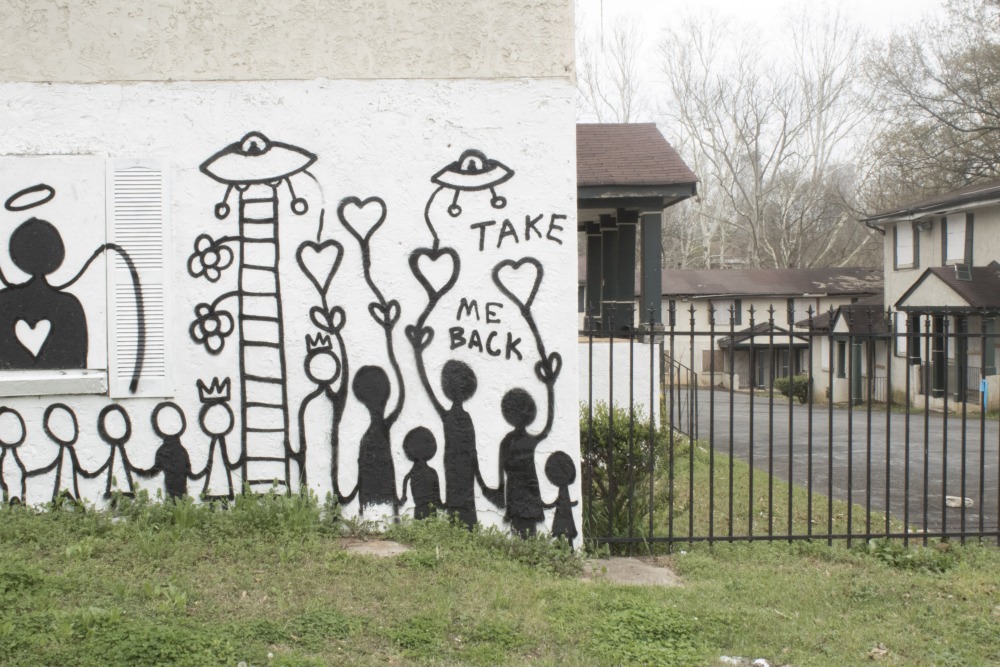
Afiya Williams: South Side - For my West Side / South Side National Exhibition photos, I decided to do a photo essay of what it looks like on the south side of Atlanta vs. the west side. Historically, the more south you head in any given state, the more “urban” the areas are. West, east, and north are [populated by] mostly middle to upper class… white people. One of the first things I noticed when I… moved to Atlanta for college was that the gentrification in certain areas [was] rather abrupt. On one side of the street, there’s the ghetto. Black people hanging out [at] corner shops, grass growing high through the cracks of the sidewalks, run down or vacant houses, homeless people pushing their grocery carts full of garbage bags, etc. …On the other side of the street, there [are] places like the new Mercedes-Benz Stadium, fancy glass skyscrapers, or Midtown flats with nice stores and freshly paved roads. My plan was to capture a series of photos that show that gentrification and the difference between a predominantly black neighborhood on the Southside of Atlanta and the predominantly white neighborhood in the other cardinal directions. …I drove around… MLK Drive and the surrounding area of my university, Clark Atlanta University, for the south side part of the project and I went to Atlantic Station… for the west side part.
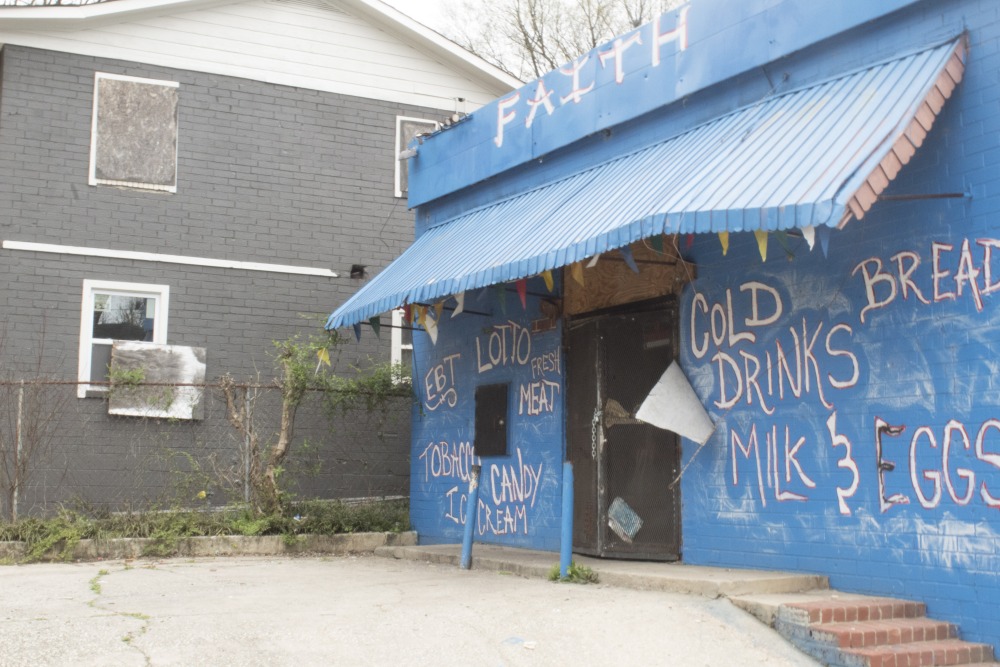
Afiya Williams: South Side - For my West Side / South Side National Exhibition photos, I decided to do a photo essay of what it looks like on the south side of Atlanta vs. the west side. Historically, the more south you head in any given state, the more “urban” the areas are. West, east, and north are [populated by] mostly middle to upper class… white people. One of the first things I noticed when I… moved to Atlanta for college was that the gentrification in certain areas [was] rather abrupt. On one side of the street, there’s the ghetto. Black people hanging out [at] corner shops, grass growing high through the cracks of the sidewalks, run down or vacant houses, homeless people pushing their grocery carts full of garbage bags, etc. …On the other side of the street, there [are] places like the new Mercedes-Benz Stadium, fancy glass skyscrapers, or Midtown flats with nice stores and freshly paved roads. My plan was to capture a series of photos that show that gentrification and the difference between a predominantly black neighborhood on the Southside of Atlanta and the predominantly white neighborhood in the other cardinal directions. …I drove around… MLK Drive and the surrounding area of my university, Clark Atlanta University, for the south side part of the project and I went to Atlantic Station… for the west side part.
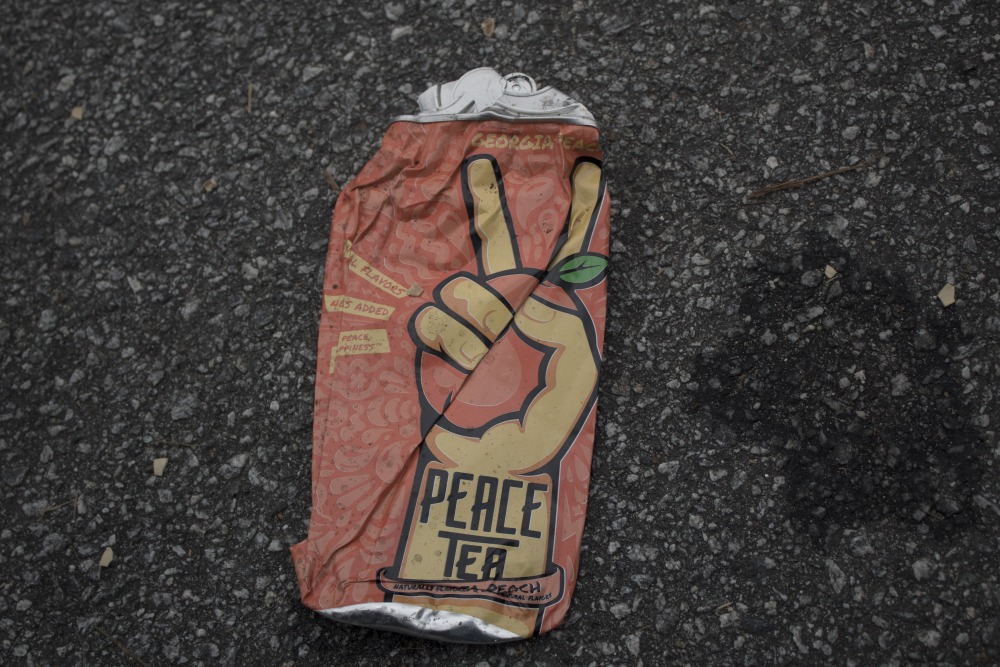
Afiya Williams: South Side - For my West Side / South Side National Exhibition photos, I decided to do a photo essay of what it looks like on the south side of Atlanta vs. the west side. Historically, the more south you head in any given state, the more “urban” the areas are. West, east, and north are [populated by] mostly middle to upper class… white people. One of the first things I noticed when I… moved to Atlanta for college was that the gentrification in certain areas [was] rather abrupt. On one side of the street, there’s the ghetto. Black people hanging out [at] corner shops, grass growing high through the cracks of the sidewalks, run down or vacant houses, homeless people pushing their grocery carts full of garbage bags, etc. …On the other side of the street, there [are] places like the new Mercedes-Benz Stadium, fancy glass skyscrapers, or Midtown flats with nice stores and freshly paved roads. My plan was to capture a series of photos that show that gentrification and the difference between a predominantly black neighborhood on the Southside of Atlanta and the predominantly white neighborhood in the other cardinal directions. …I drove around… MLK Drive and the surrounding area of my university, Clark Atlanta University, for the south side part of the project and I went to Atlantic Station… for the west side part.
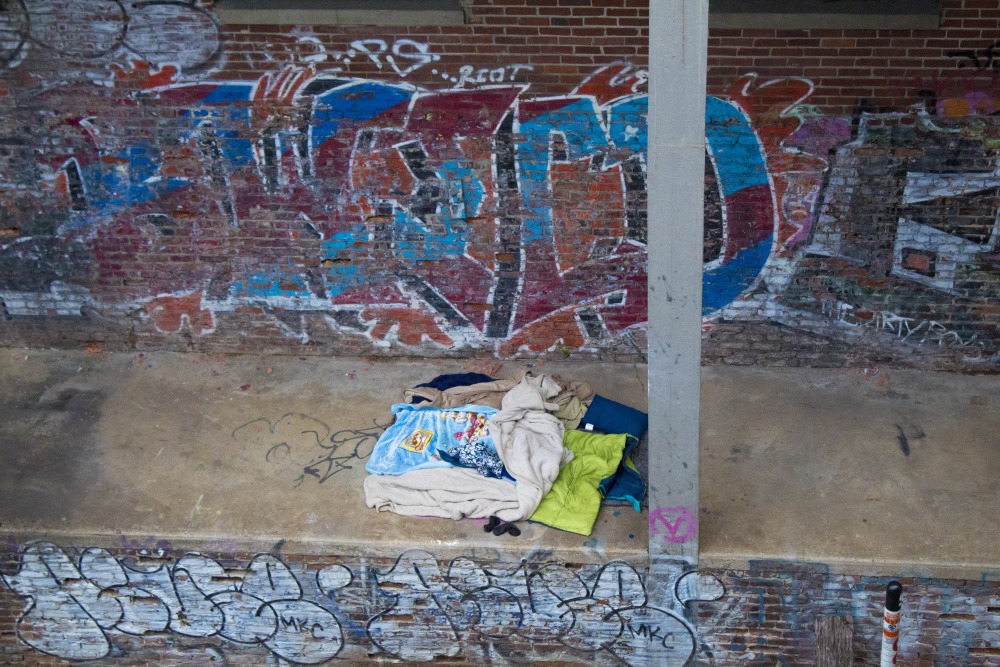
Afiya Williams: South Side - For my West Side / South Side National Exhibition photos, I decided to do a photo essay of what it looks like on the south side of Atlanta vs. the west side. Historically, the more south you head in any given state, the more “urban” the areas are. West, east, and north are [populated by] mostly middle to upper class… white people. One of the first things I noticed when I… moved to Atlanta for college was that the gentrification in certain areas [was] rather abrupt. On one side of the street, there’s the ghetto. Black people hanging out [at] corner shops, grass growing high through the cracks of the sidewalks, run down or vacant houses, homeless people pushing their grocery carts full of garbage bags, etc. …On the other side of the street, there [are] places like the new Mercedes-Benz Stadium, fancy glass skyscrapers, or Midtown flats with nice stores and freshly paved roads. My plan was to capture a series of photos that show that gentrification and the difference between a predominantly black neighborhood on the Southside of Atlanta and the predominantly white neighborhood in the other cardinal directions. …I drove around… MLK Drive and the surrounding area of my university, Clark Atlanta University, for the south side part of the project and I went to Atlantic Station… for the west side part.
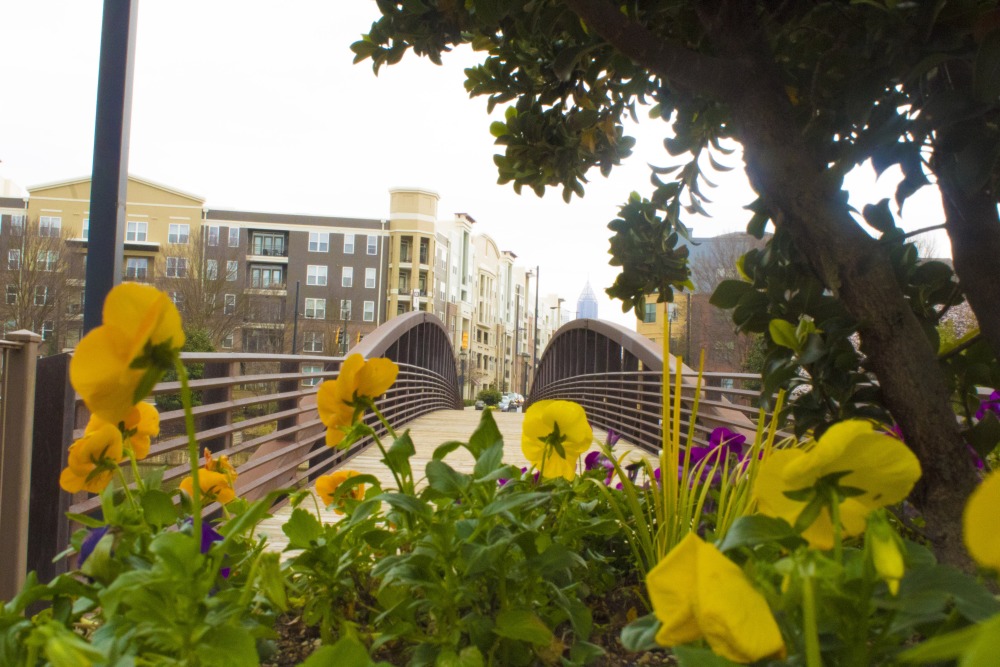
Afiya Williams: West Side - For my West Side / South Side National Exhibition photos, I decided to do a photo essay of what it looks like on the south side of Atlanta vs. the west side. Historically, the more south you head in any given state, the more “urban” the areas are. West, east, and north are [populated by] mostly middle to upper class… white people. One of the first things I noticed when I… moved to Atlanta for college was that the gentrification in certain areas [was] rather abrupt. On one side of the street, there’s the ghetto. Black people hanging out [at] corner shops, grass growing high through the cracks of the sidewalks, run down or vacant houses, homeless people pushing their grocery carts full of garbage bags, etc. …On the other side of the street, there [are] places like the new Mercedes-Benz Stadium, fancy glass skyscrapers, or Midtown flats with nice stores and freshly paved roads. My plan was to capture a series of photos that show that gentrification and the difference between a predominantly black neighborhood on the Southside of Atlanta and the predominantly white neighborhood in the other cardinal directions. …I drove around… MLK Drive and the surrounding area of my university, Clark Atlanta University, for the south side part of the project and I went to Atlantic Station… for the west side part.
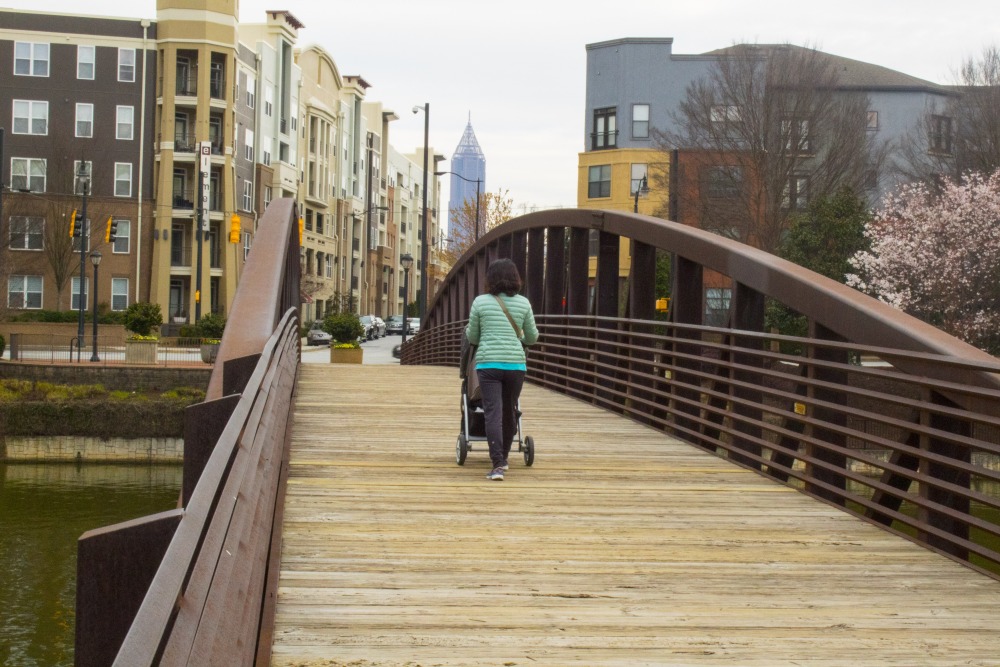
Afiya Williams: West Side - For my West Side / South Side National Exhibition photos, I decided to do a photo essay of what it looks like on the south side of Atlanta vs. the west side. Historically, the more south you head in any given state, the more “urban” the areas are. West, east, and north are [populated by] mostly middle to upper class… white people. One of the first things I noticed when I… moved to Atlanta for college was that the gentrification in certain areas [was] rather abrupt. On one side of the street, there’s the ghetto. Black people hanging out [at] corner shops, grass growing high through the cracks of the sidewalks, run down or vacant houses, homeless people pushing their grocery carts full of garbage bags, etc. …On the other side of the street, there [are] places like the new Mercedes-Benz Stadium, fancy glass skyscrapers, or Midtown flats with nice stores and freshly paved roads. My plan was to capture a series of photos that show that gentrification and the difference between a predominantly black neighborhood on the Southside of Atlanta and the predominantly white neighborhood in the other cardinal directions. …I drove around… MLK Drive and the surrounding area of my university, Clark Atlanta University, for the south side part of the project and I went to Atlantic Station… for the west side part.
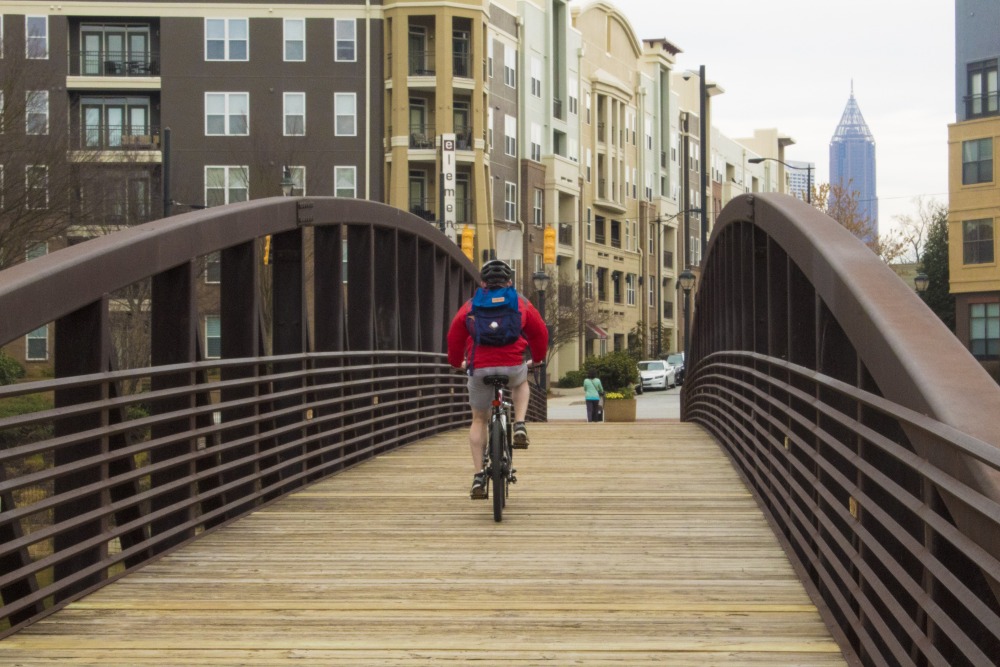
Afiya Williams: West Side - For my West Side / South Side National Exhibition photos, I decided to do a photo essay of what it looks like on the south side of Atlanta vs. the west side. Historically, the more south you head in any given state, the more “urban” the areas are. West, east, and north are [populated by] mostly middle to upper class… white people. One of the first things I noticed when I… moved to Atlanta for college was that the gentrification in certain areas [was] rather abrupt. On one side of the street, there’s the ghetto. Black people hanging out [at] corner shops, grass growing high through the cracks of the sidewalks, run down or vacant houses, homeless people pushing their grocery carts full of garbage bags, etc. …On the other side of the street, there [are] places like the new Mercedes-Benz Stadium, fancy glass skyscrapers, or Midtown flats with nice stores and freshly paved roads. My plan was to capture a series of photos that show that gentrification and the difference between a predominantly black neighborhood on the Southside of Atlanta and the predominantly white neighborhood in the other cardinal directions. …I drove around… MLK Drive and the surrounding area of my university, Clark Atlanta University, for the south side part of the project and I went to Atlantic Station… for the west side part.
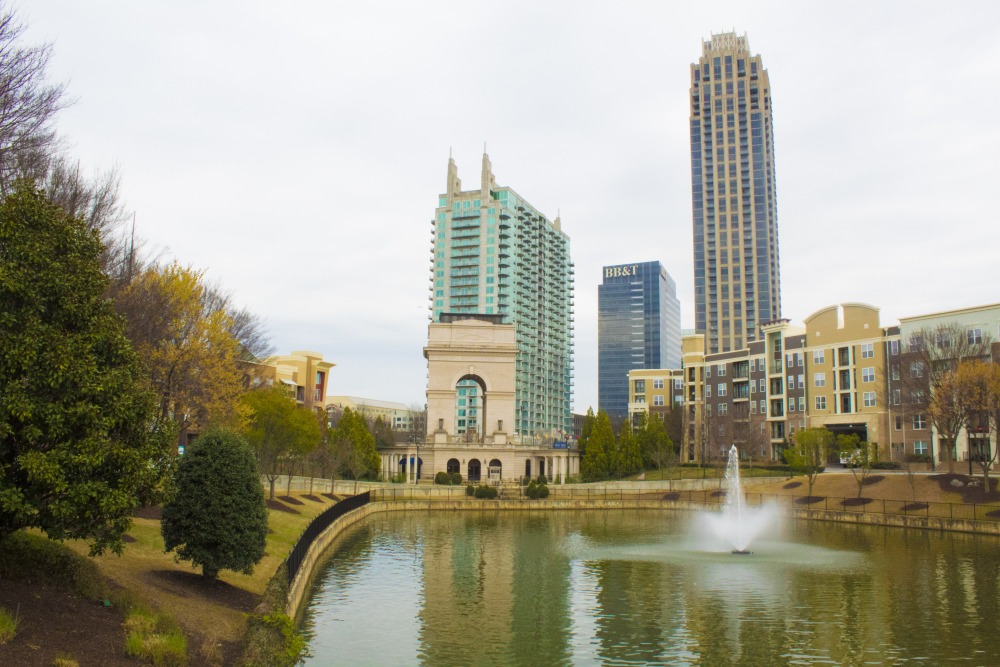
Afiya Williams: West Side - For my West Side / South Side National Exhibition photos, I decided to do a photo essay of what it looks like on the south side of Atlanta vs. the west side. Historically, the more south you head in any given state, the more “urban” the areas are. West, east, and north are [populated by] mostly middle to upper class… white people. One of the first things I noticed when I… moved to Atlanta for college was that the gentrification in certain areas [was] rather abrupt. On one side of the street, there’s the ghetto. Black people hanging out [at] corner shops, grass growing high through the cracks of the sidewalks, run down or vacant houses, homeless people pushing their grocery carts full of garbage bags, etc. …On the other side of the street, there [are] places like the new Mercedes-Benz Stadium, fancy glass skyscrapers, or Midtown flats with nice stores and freshly paved roads. My plan was to capture a series of photos that show that gentrification and the difference between a predominantly black neighborhood on the Southside of Atlanta and the predominantly white neighborhood in the other cardinal directions. …I drove around… MLK Drive and the surrounding area of my university, Clark Atlanta University, for the south side part of the project and I went to Atlantic Station… for the west side part.
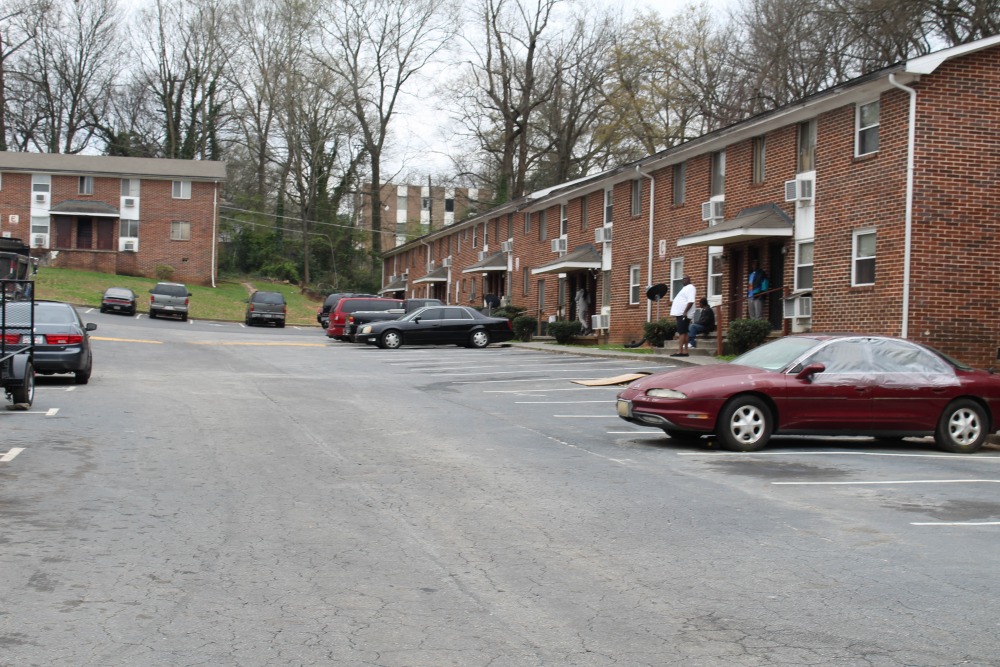
Andria Ward: As a student in Clark Atlanta University’s photography class, I participated in the West Side/South Side project. As a native of Atlanta, Georgia, I thought it would be a good idea to capture the ironic upgrades one of Atlanta’s poorest communities is experiencing. My series of images include the new multi-million dollar Mercedes Benz Stadium, The Westside Works facility that is responsible for some of the newly updated areas, as well as [run-down] houses that are less than a mile away from the multi-million dollar stadium. I believe my images will bring awareness to the community and to those who are in higher power to help make the entire community a better place rather than certain areas. The images speak for themselves and can even be considered a digital cry out for help.
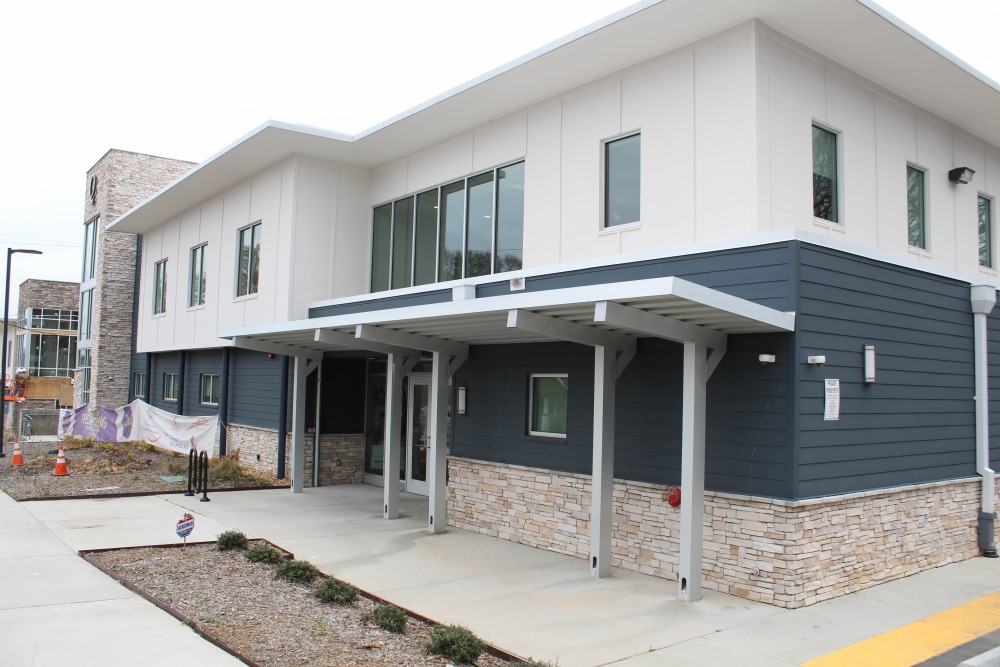
Andria Ward: As a student in Clark Atlanta University’s photography class, I participated in the West Side/South Side project. As a native of Atlanta, Georgia, I thought it would be a good idea to capture the ironic upgrades one of Atlanta’s poorest communities is experiencing. My series of images include the new multi-million dollar Mercedes Benz Stadium, The Westside Works facility that is responsible for some of the newly updated areas, as well as [run-down] houses that are less than a mile away from the multi-million dollar stadium. I believe my images will bring awareness to the community and to those who are in higher power to help make the entire community a better place rather than certain areas. The images speak for themselves and can even be considered a digital cry out for help.
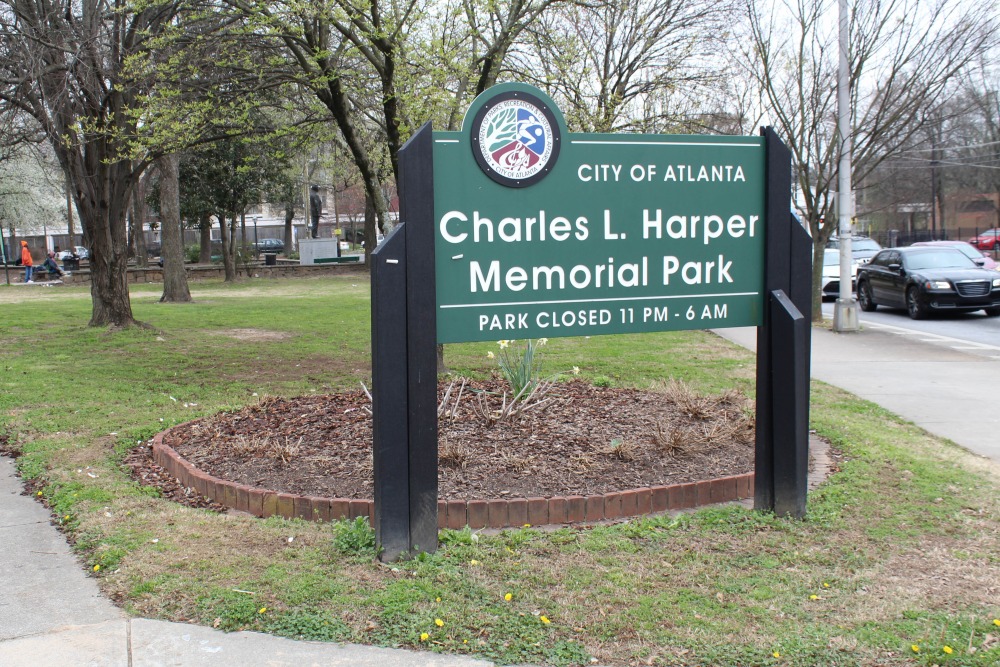
Andria Ward: As a student in Clark Atlanta University’s photography class, I participated in the West Side/South Side project. As a native of Atlanta, Georgia, I thought it would be a good idea to capture the ironic upgrades one of Atlanta’s poorest communities is experiencing. My series of images include the new multi-million dollar Mercedes Benz Stadium, The Westside Works facility that is responsible for some of the newly updated areas, as well as [run-down] houses that are less than a mile away from the multi-million dollar stadium. I believe my images will bring awareness to the community and to those who are in higher power to help make the entire community a better place rather than certain areas. The images speak for themselves and can even be considered a digital cry out for help.
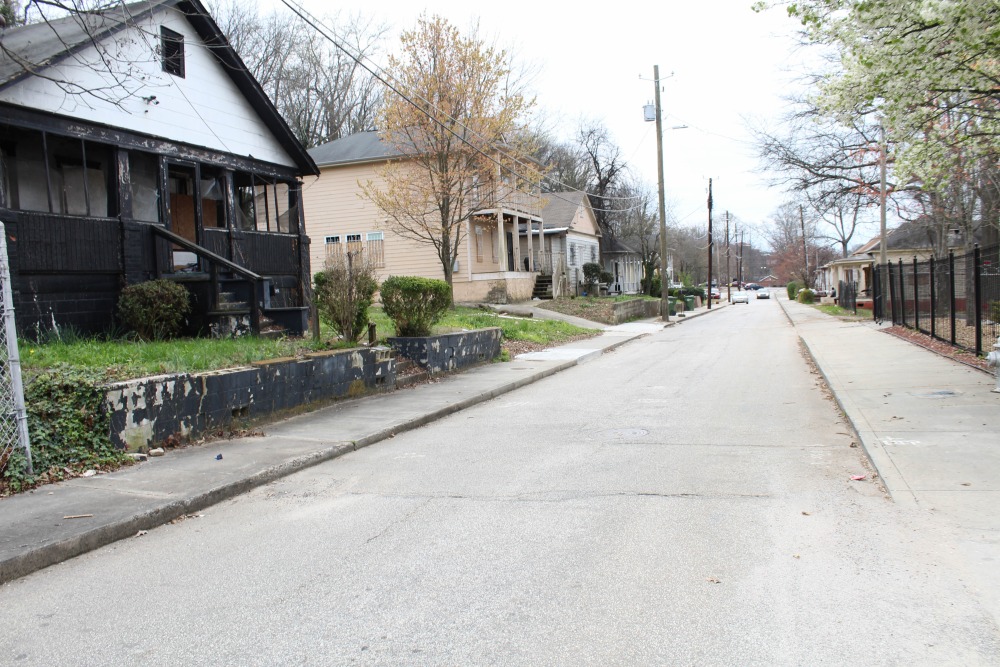
Andria Ward: As a student in Clark Atlanta University’s photography class, I participated in the West Side/South Side project. As a native of Atlanta, Georgia, I thought it would be a good idea to capture the ironic upgrades one of Atlanta’s poorest communities is experiencing. My series of images include the new multi-million dollar Mercedes Benz Stadium, The Westside Works facility that is responsible for some of the newly updated areas, as well as [run-down] houses that are less than a mile away from the multi-million dollar stadium. I believe my images will bring awareness to the community and to those who are in higher power to help make the entire community a better place rather than certain areas. The images speak for themselves and can even be considered a digital cry out for help.
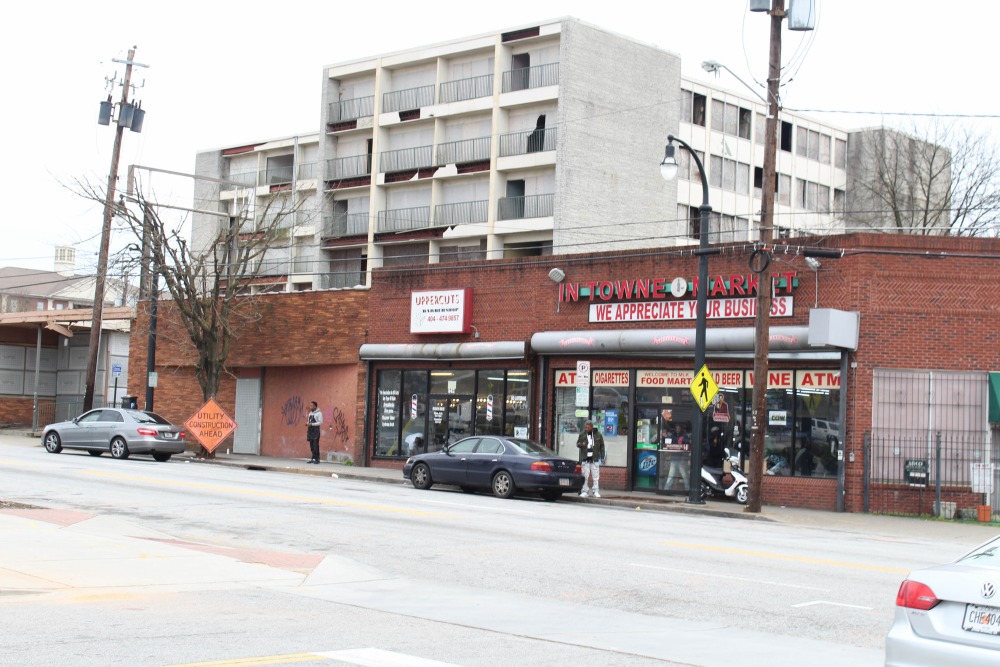
Andria Ward: As a student in Clark Atlanta University’s photography class, I participated in the West Side/South Side project. As a native of Atlanta, Georgia, I thought it would be a good idea to capture the ironic upgrades one of Atlanta’s poorest communities is experiencing. My series of images include the new multi-million dollar Mercedes Benz Stadium, The Westside Works facility that is responsible for some of the newly updated areas, as well as [run-down] houses that are less than a mile away from the multi-million dollar stadium. I believe my images will bring awareness to the community and to those who are in higher power to help make the entire community a better place rather than certain areas. The images speak for themselves and can even be considered a digital cry out for help.
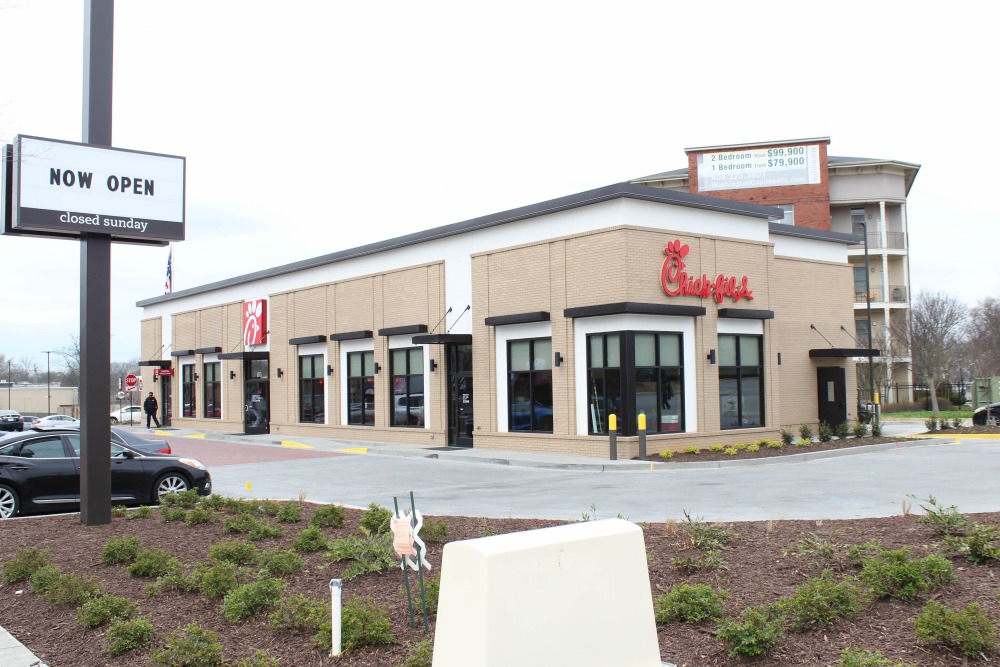
Andria Ward: As a student in Clark Atlanta University’s photography class, I participated in the West Side/South Side project. As a native of Atlanta, Georgia, I thought it would be a good idea to capture the ironic upgrades one of Atlanta’s poorest communities is experiencing. My series of images include the new multi-million dollar Mercedes Benz Stadium, The Westside Works facility that is responsible for some of the newly updated areas, as well as [run-down] houses that are less than a mile away from the multi-million dollar stadium. I believe my images will bring awareness to the community and to those who are in higher power to help make the entire community a better place rather than certain areas. The images speak for themselves and can even be considered a digital cry out for help.
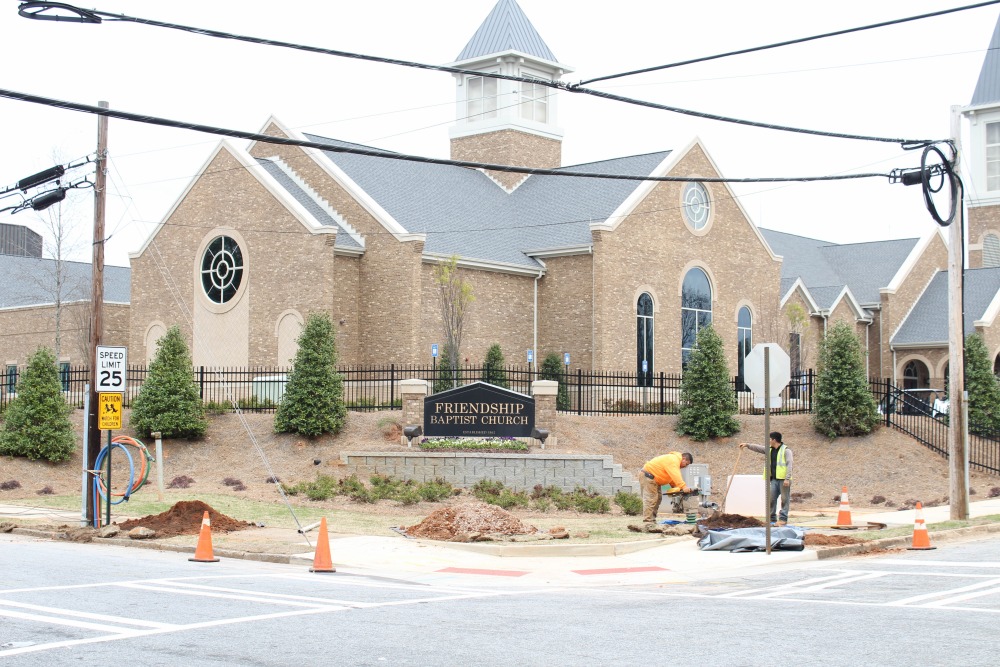
Andria Ward: As a student in Clark Atlanta University’s photography class, I participated in the West Side/South Side project. As a native of Atlanta, Georgia, I thought it would be a good idea to capture the ironic upgrades one of Atlanta’s poorest communities is experiencing. My series of images include the new multi-million dollar Mercedes Benz Stadium, The Westside Works facility that is responsible for some of the newly updated areas, as well as [run-down] houses that are less than a mile away from the multi-million dollar stadium. I believe my images will bring awareness to the community and to those who are in higher power to help make the entire community a better place rather than certain areas. The images speak for themselves and can even be considered a digital cry out for help.
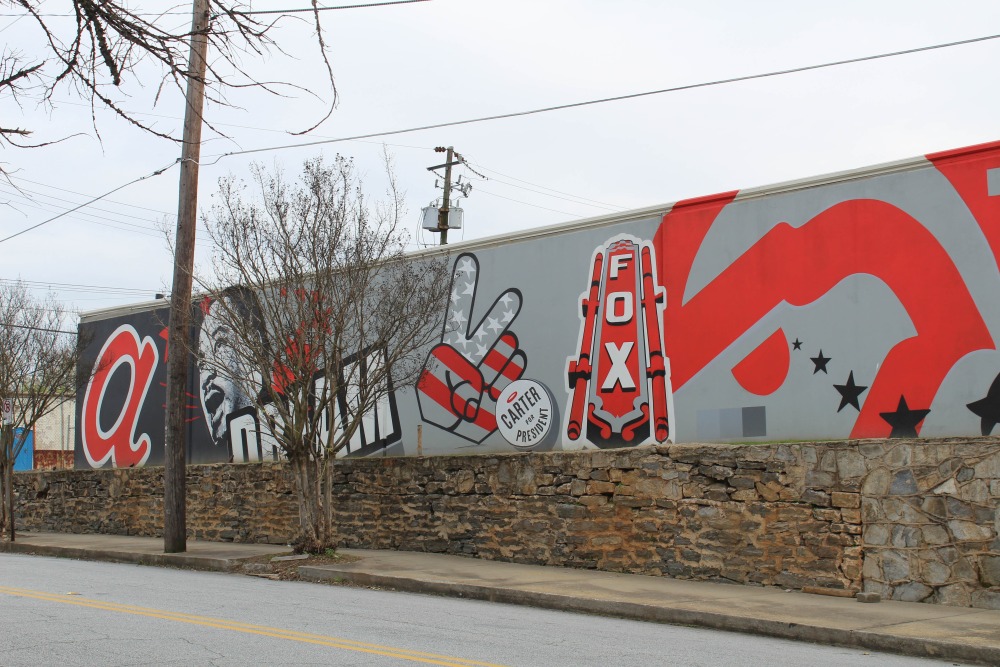
Andria Ward: As a student in Clark Atlanta University’s photography class, I participated in the West Side/South Side project. As a native of Atlanta, Georgia, I thought it would be a good idea to capture the ironic upgrades one of Atlanta’s poorest communities is experiencing. My series of images include the new multi-million dollar Mercedes Benz Stadium, The Westside Works facility that is responsible for some of the newly updated areas, as well as [run-down] houses that are less than a mile away from the multi-million dollar stadium. I believe my images will bring awareness to the community and to those who are in higher power to help make the entire community a better place rather than certain areas. The images speak for themselves and can even be considered a digital cry out for help.
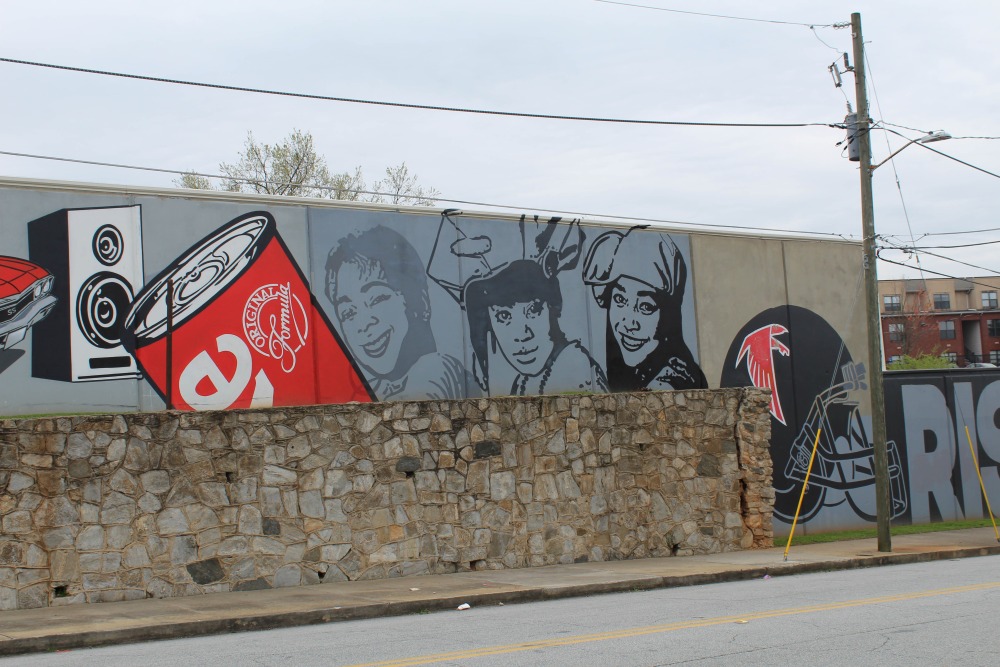
Andria Ward: As a student in Clark Atlanta University’s photography class, I participated in the West Side/South Side project. As a native of Atlanta, Georgia, I thought it would be a good idea to capture the ironic upgrades one of Atlanta’s poorest communities is experiencing. My series of images include the new multi-million dollar Mercedes Benz Stadium, The Westside Works facility that is responsible for some of the newly updated areas, as well as [run-down] houses that are less than a mile away from the multi-million dollar stadium. I believe my images will bring awareness to the community and to those who are in higher power to help make the entire community a better place rather than certain areas. The images speak for themselves and can even be considered a digital cry out for help.
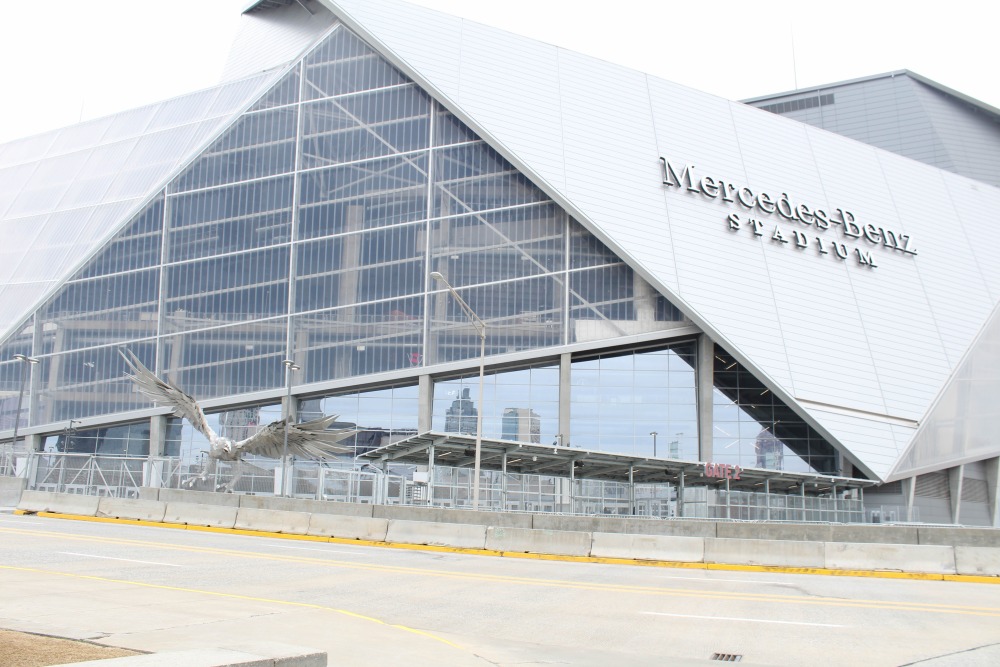
Andria Ward: As a student in Clark Atlanta University’s photography class, I participated in the West Side/South Side project. As a native of Atlanta, Georgia, I thought it would be a good idea to capture the ironic upgrades one of Atlanta’s poorest communities is experiencing. My series of images include the new multi-million dollar Mercedes Benz Stadium, The Westside Works facility that is responsible for some of the newly updated areas, as well as [run-down] houses that are less than a mile away from the multi-million dollar stadium. I believe my images will bring awareness to the community and to those who are in higher power to help make the entire community a better place rather than certain areas. The images speak for themselves and can even be considered a digital cry out for help.
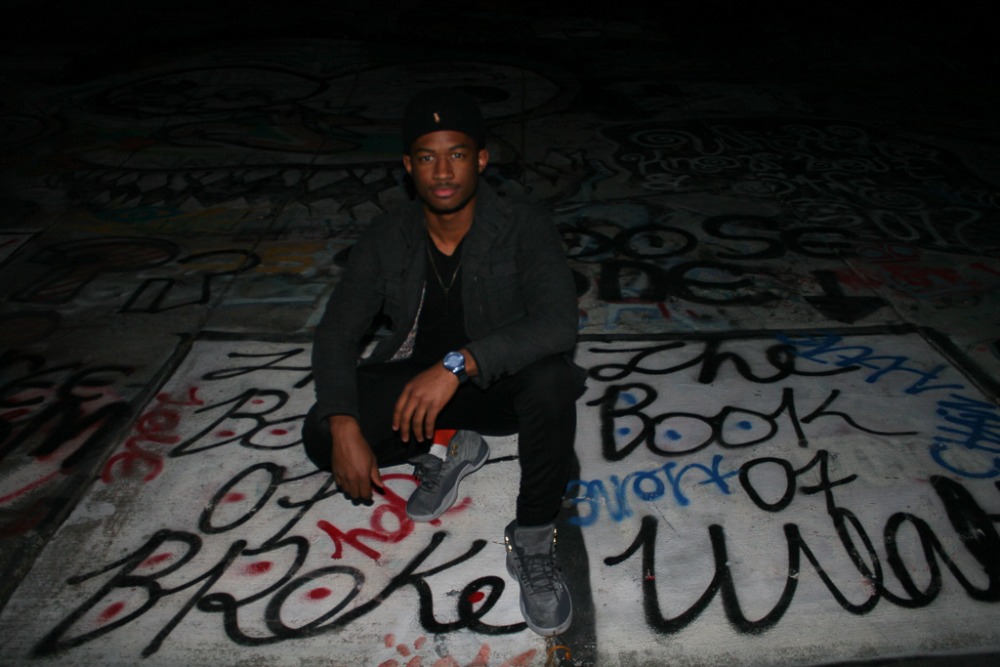
Carnica Durham: My work focuses more on the background than the model itself. I wanted to capture the beauty and creativeness of Atlanta street artists and how they choose to express themselves. In these photos, you will see various backgrounds: some that were captured at night and others during the day. I also chose for my models to dress themselves in all black or white to have the focus mostly on the art within the picture. Also, I chose this so no other colors would blend or be too distracting. I have always been a huge fan of street art and I would like other people to experience this type of art as well.
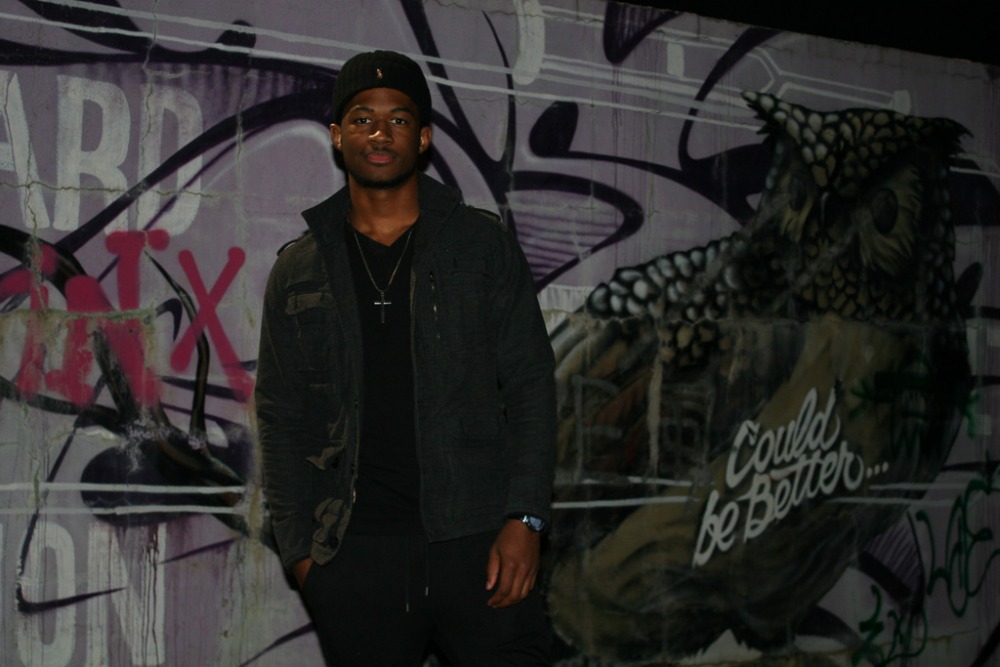
Carnica Durham: My work focuses more on the background than the model itself. I wanted to capture the beauty and creativeness of Atlanta street artists and how they choose to express themselves. In these photos, you will see various backgrounds: some that were captured at night and others during the day. I also chose for my models to dress themselves in all black or white to have the focus mostly on the art within the picture. Also, I chose this so no other colors would blend or be too distracting. I have always been a huge fan of street art and I would like other people to experience this type of art as well.
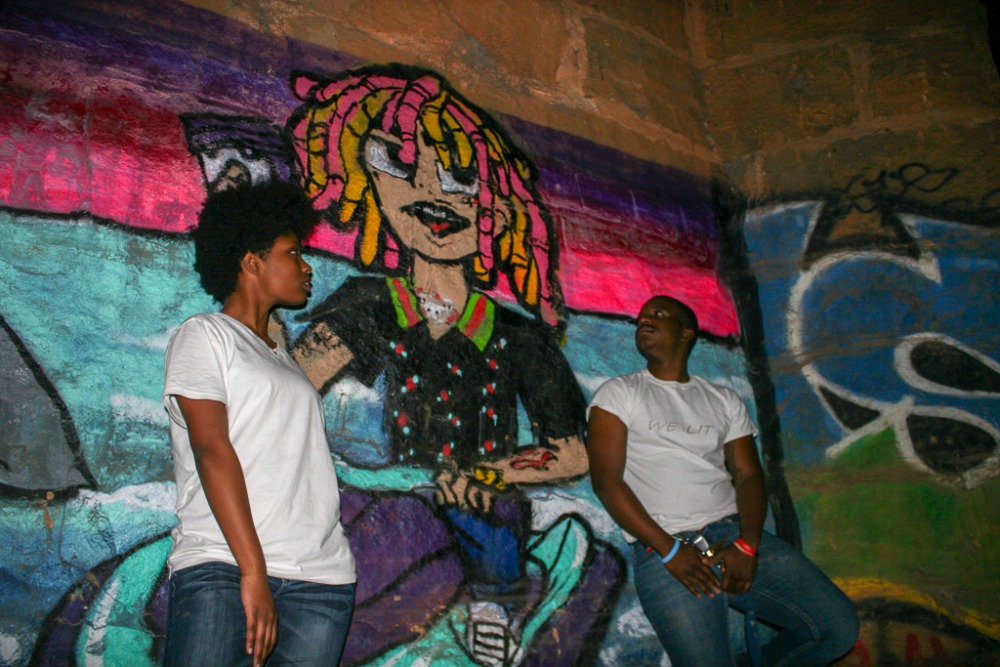
Carnica Durham: My work focuses more on the background than the model itself. I wanted to capture the beauty and creativeness of Atlanta street artists and how they choose to express themselves. In these photos, you will see various backgrounds: some that were captured at night and others during the day. I also chose for my models to dress themselves in all black or white to have the focus mostly on the art within the picture. Also, I chose this so no other colors would blend or be too distracting. I have always been a huge fan of street art and I would like other people to experience this type of art as well.
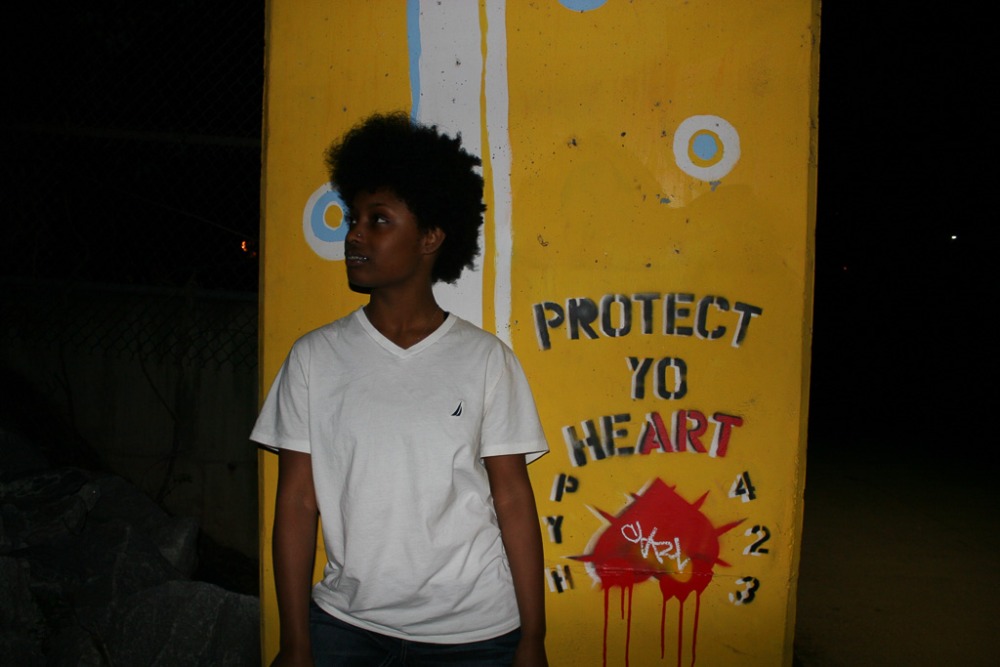
Carnica Durham: My work focuses more on the background than the model itself. I wanted to capture the beauty and creativeness of Atlanta street artists and how they choose to express themselves. In these photos, you will see various backgrounds: some that were captured at night and others during the day. I also chose for my models to dress themselves in all black or white to have the focus mostly on the art within the picture. Also, I chose this so no other colors would blend or be too distracting. I have always been a huge fan of street art and I would like other people to experience this type of art as well.
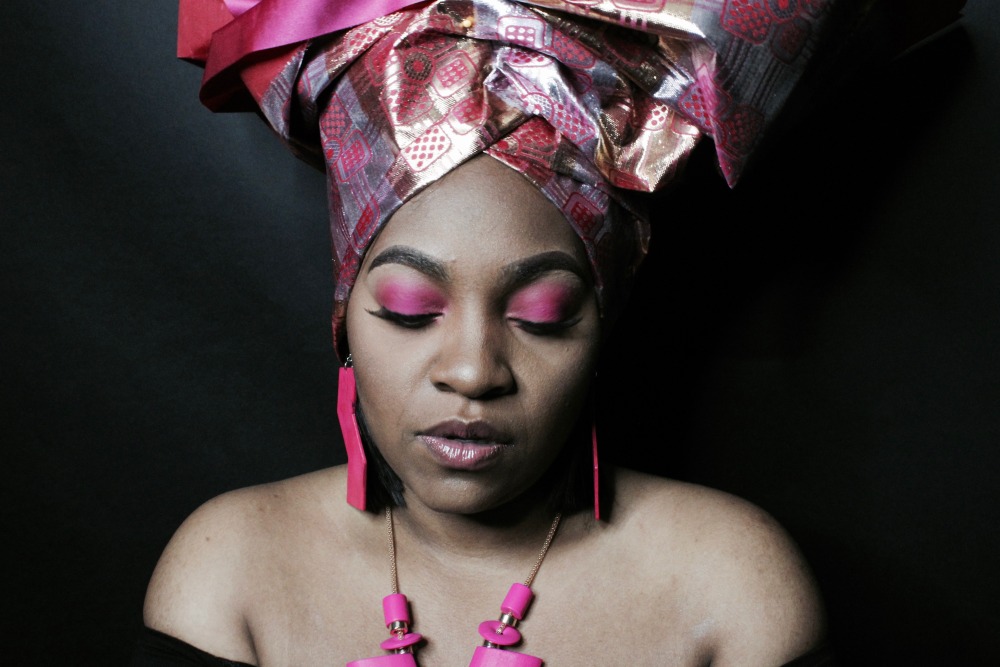
Jasmine Royster: My artwork is inspired by the rebirth and popularization of African culture in America. As a child, I can recollect memories of those who are of African descent succumb to bullying because of their homeland, fashion, food, and music. Fifteen years later, the African culture had taken the nation by storm through fashion and music influences. A “Gele” is bestowed upon my muses' heads to represent the modern day African queen. In Nigeria, Africa, the Gele is a traditional headwear made of cotton and silk, only worn on special occasions. The Gele is considered to be a crown that accessorized femininity and social status. As young African American women, it is important to know our history and perceive ourselves as young black queens. Through my portraits, I have captured the essence of power, femininity, and distinction within black women.
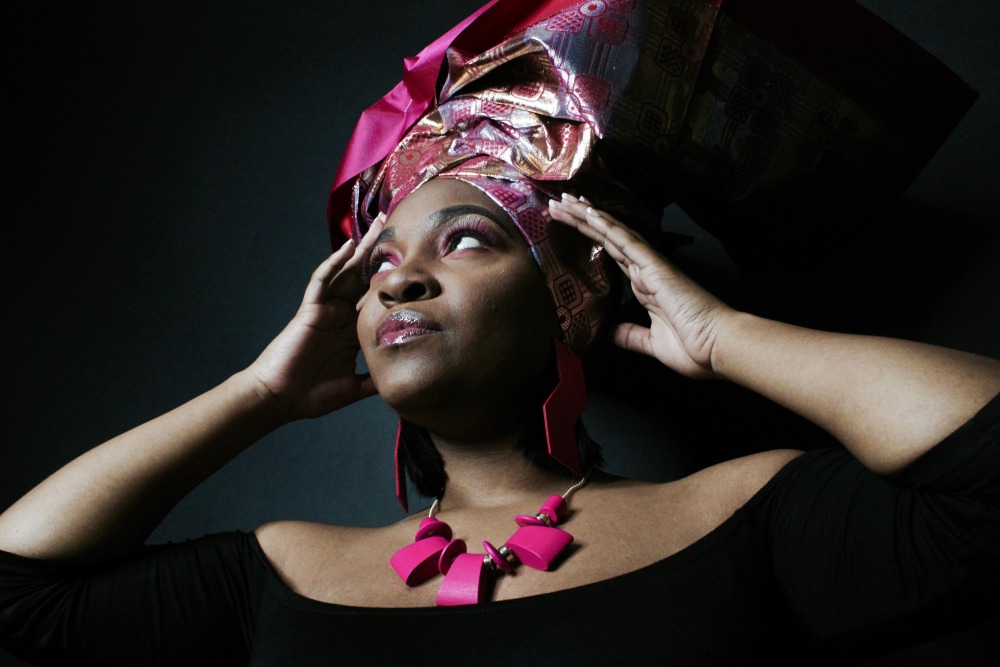
Jasmine Royster: My artwork is inspired by the rebirth and popularization of African culture in America. As a child, I can recollect memories of those who are of African descent succumb to bullying because of their homeland, fashion, food, and music. Fifteen years later, the African culture had taken the nation by storm through fashion and music influences. A “Gele” is bestowed upon my muses' heads to represent the modern day African queen. In Nigeria, Africa, the Gele is a traditional headwear made of cotton and silk, only worn on special occasions. The Gele is considered to be a crown that accessorized femininity and social status. As young African American women, it is important to know our history and perceive ourselves as young black queens. Through my portraits, I have captured the essence of power, femininity, and distinction within black women.
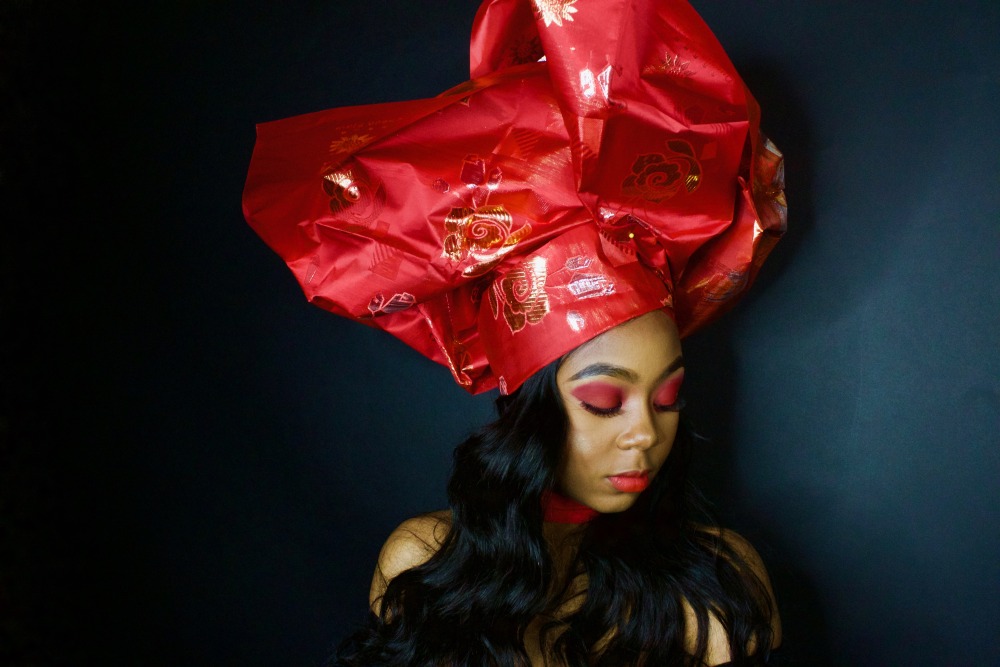
Jasmine Royster: My artwork is inspired by the rebirth and popularization of African culture in America. As a child, I can recollect memories of those who are of African descent succumb to bullying because of their homeland, fashion, food, and music. Fifteen years later, the African culture had taken the nation by storm through fashion and music influences. A “Gele” is bestowed upon my muses' heads to represent the modern day African queen. In Nigeria, Africa, the Gele is a traditional headwear made of cotton and silk, only worn on special occasions. The Gele is considered to be a crown that accessorized femininity and social status. As young African American women, it is important to know our history and perceive ourselves as young black queens. Through my portraits, I have captured the essence of power, femininity, and distinction within black women.
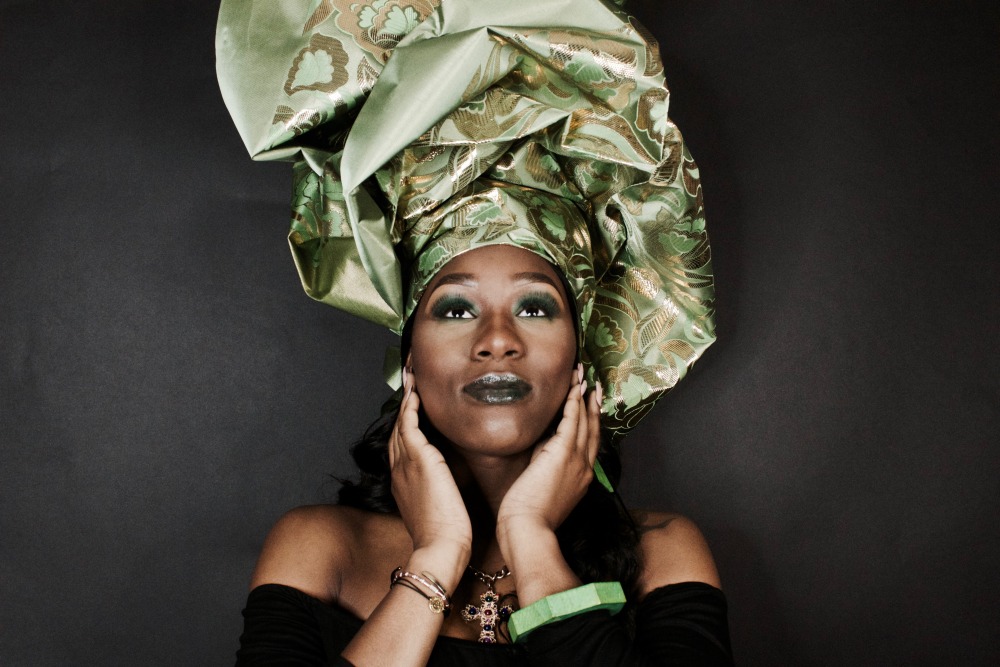
Jasmine Royster: My artwork is inspired by the rebirth and popularization of African culture in America. As a child, I can recollect memories of those who are of African descent succumb to bullying because of their homeland, fashion, food, and music. Fifteen years later, the African culture had taken the nation by storm through fashion and music influences. A “Gele” is bestowed upon my muses' heads to represent the modern day African queen. In Nigeria, Africa, the Gele is a traditional headwear made of cotton and silk, only worn on special occasions. The Gele is considered to be a crown that accessorized femininity and social status. As young African American women, it is important to know our history and perceive ourselves as young black queens. Through my portraits, I have captured the essence of power, femininity, and distinction within black women.
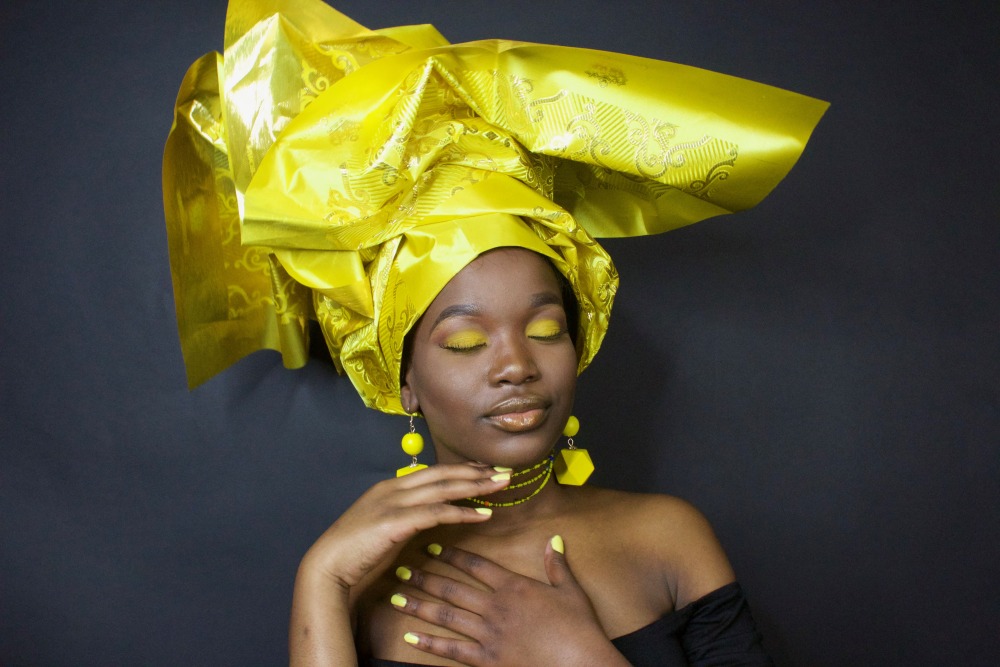
Jasmine Royster: My artwork is inspired by the rebirth and popularization of African culture in America. As a child, I can recollect memories of those who are of African descent succumb to bullying because of their homeland, fashion, food, and music. Fifteen years later, the African culture had taken the nation by storm through fashion and music influences. A “Gele” is bestowed upon my muses' heads to represent the modern day African queen. In Nigeria, Africa, the Gele is a traditional headwear made of cotton and silk, only worn on special occasions. The Gele is considered to be a crown that accessorized femininity and social status. As young African American women, it is important to know our history and perceive ourselves as young black queens. Through my portraits, I have captured the essence of power, femininity, and distinction within black women.
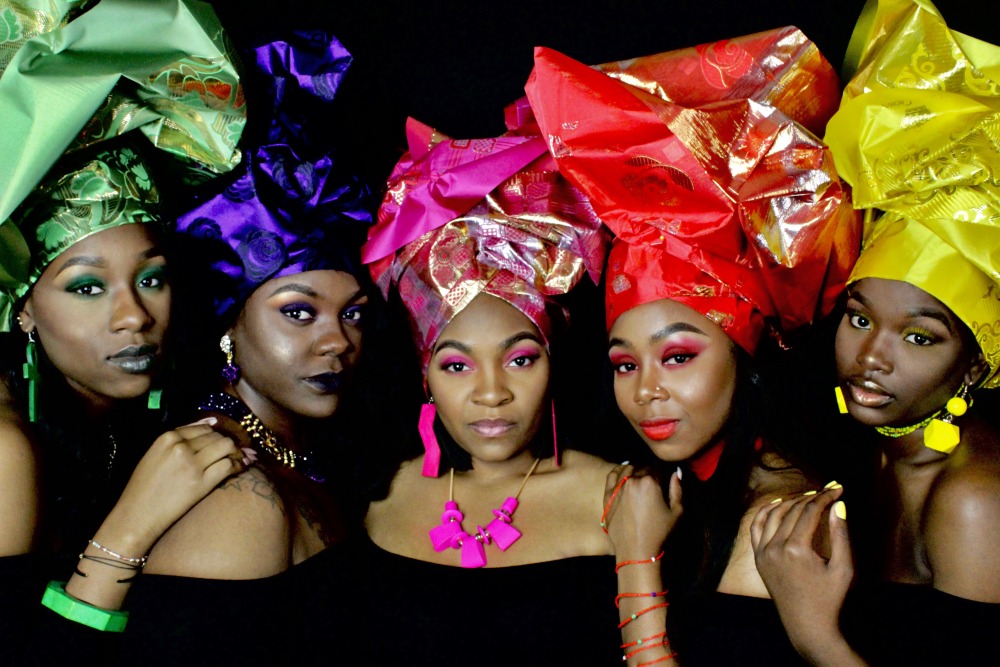
Jasmine Royster: My artwork is inspired by the rebirth and popularization of African culture in America. As a child, I can recollect memories of those who are of African descent succumb to bullying because of their homeland, fashion, food, and music. Fifteen years later, the African culture had taken the nation by storm through fashion and music influences. A “Gele” is bestowed upon my muses' heads to represent the modern day African queen. In Nigeria, Africa, the Gele is a traditional headwear made of cotton and silk, only worn on special occasions. The Gele is considered to be a crown that accessorized femininity and social status. As young African American women, it is important to know our history and perceive ourselves as young black queens. Through my portraits, I have captured the essence of power, femininity, and distinction within black women.
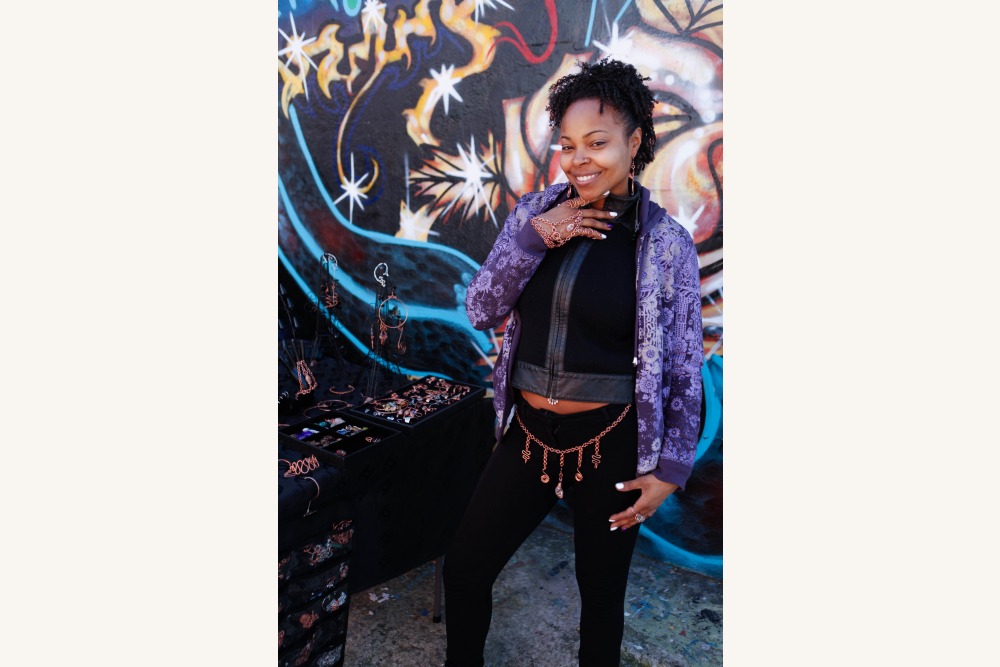
Jaya Paci: For this project, I wanted to use street photography to show off my favorite neighborhood in Atlanta, Georgia. Little Five Points is known for people to showcase upcoming trends and out of the box creative fashion and art in many forms, from jewelry, paintings, or clothing. So, I went to Little Five Points during the first week of March because the art and culture there inspires me. I walked around and approached different artists within the location and asked to take their photograph in order to tell their story.
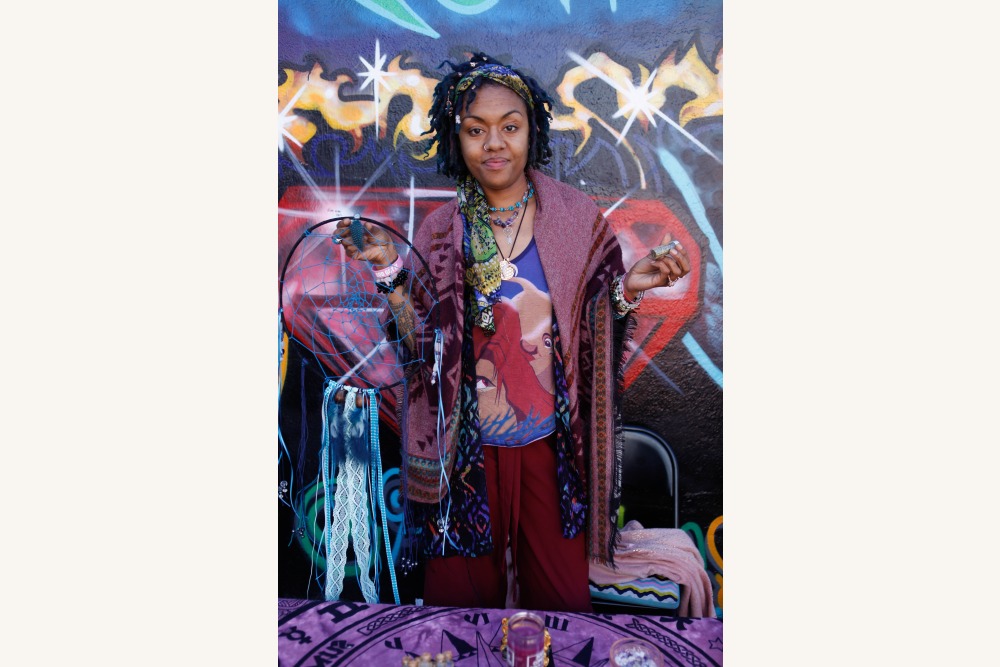
Jaya Paci: For this project, I wanted to use street photography to show off my favorite neighborhood in Atlanta, Georgia. Little Five Points is known for people to showcase upcoming trends and out of the box creative fashion and art in many forms, from jewelry, paintings, or clothing. So, I went to Little Five Points during the first week of March because the art and culture there inspires me. I walked around and approached different artists within the location and asked to take their photograph in order to tell their story.
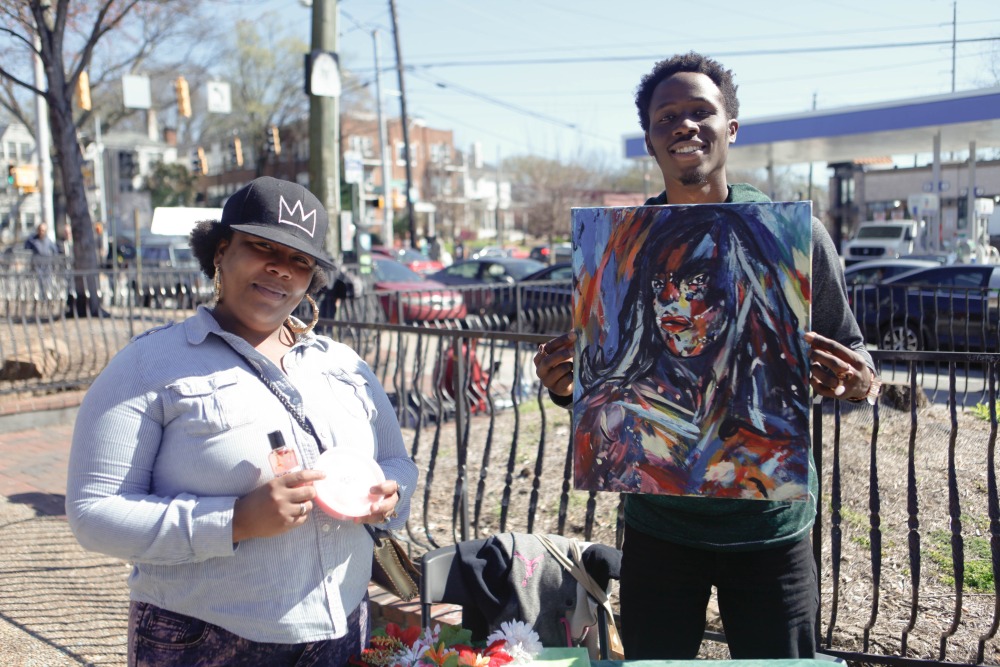
Jaya Paci: For this project, I wanted to use street photography to show off my favorite neighborhood in Atlanta, Georgia. Little Five Points is known for people to showcase upcoming trends and out of the box creative fashion and art in many forms, from jewelry, paintings, or clothing. So, I went to Little Five Points during the first week of March because the art and culture there inspires me. I walked around and approached different artists within the location and asked to take their photograph in order to tell their story.
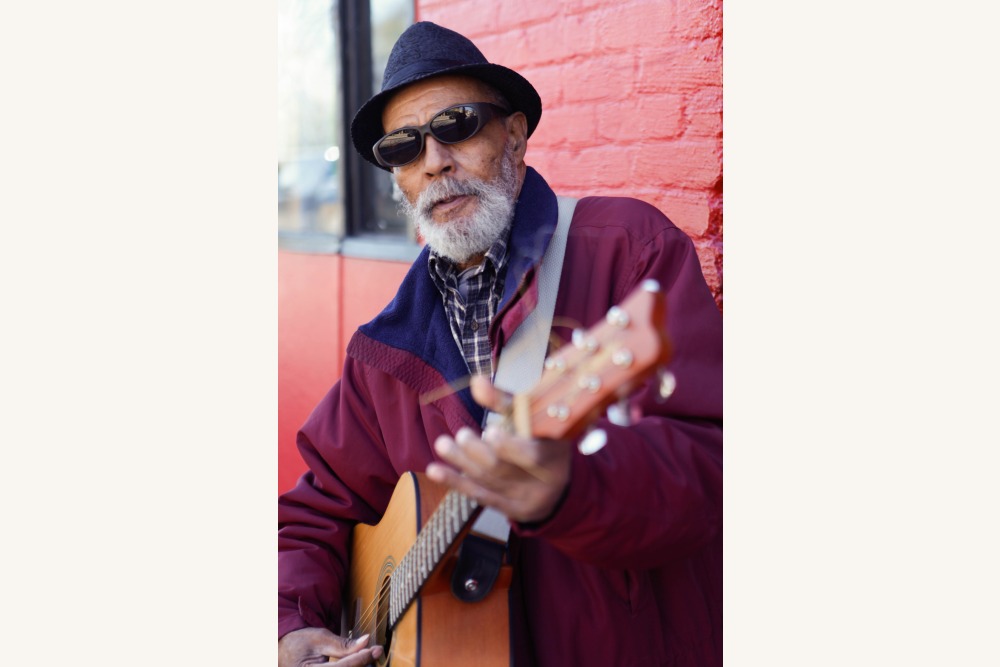
Jaya Paci: For this project, I wanted to use street photography to show off my favorite neighborhood in Atlanta, Georgia. Little Five Points is known for people to showcase upcoming trends and out of the box creative fashion and art in many forms, from jewelry, paintings, or clothing. So, I went to Little Five Points during the first week of March because the art and culture there inspires me. I walked around and approached different artists within the location and asked to take their photograph in order to tell their story.
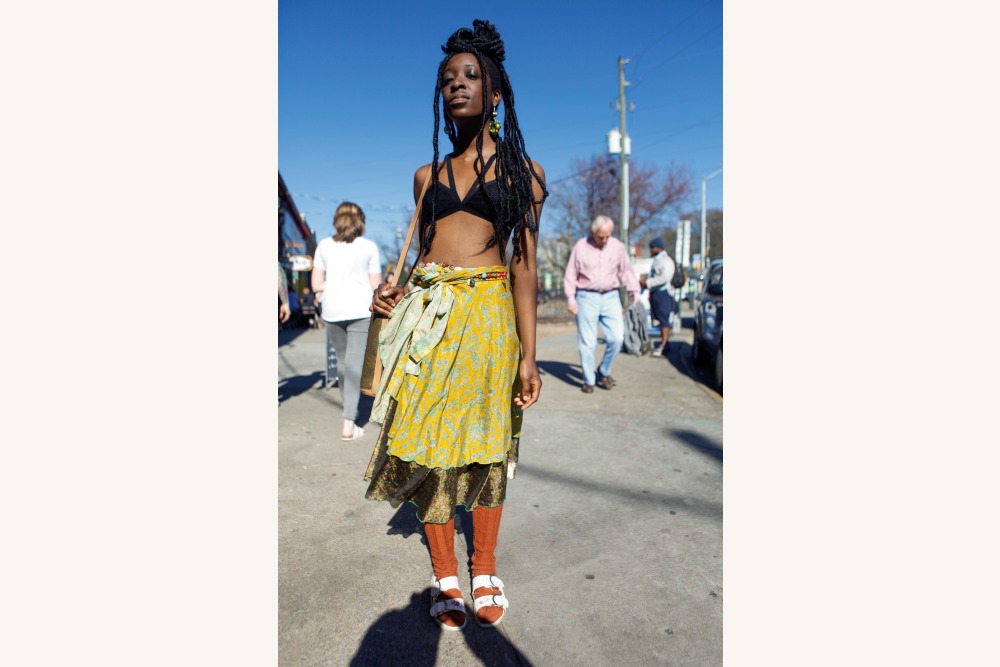
Jaya Paci: For this project, I wanted to use street photography to show off my favorite neighborhood in Atlanta, Georgia. Little Five Points is known for people to showcase upcoming trends and out of the box creative fashion and art in many forms, from jewelry, paintings, or clothing. So, I went to Little Five Points during the first week of March because the art and culture there inspires me. I walked around and approached different artists within the location and asked to take their photograph in order to tell their story.
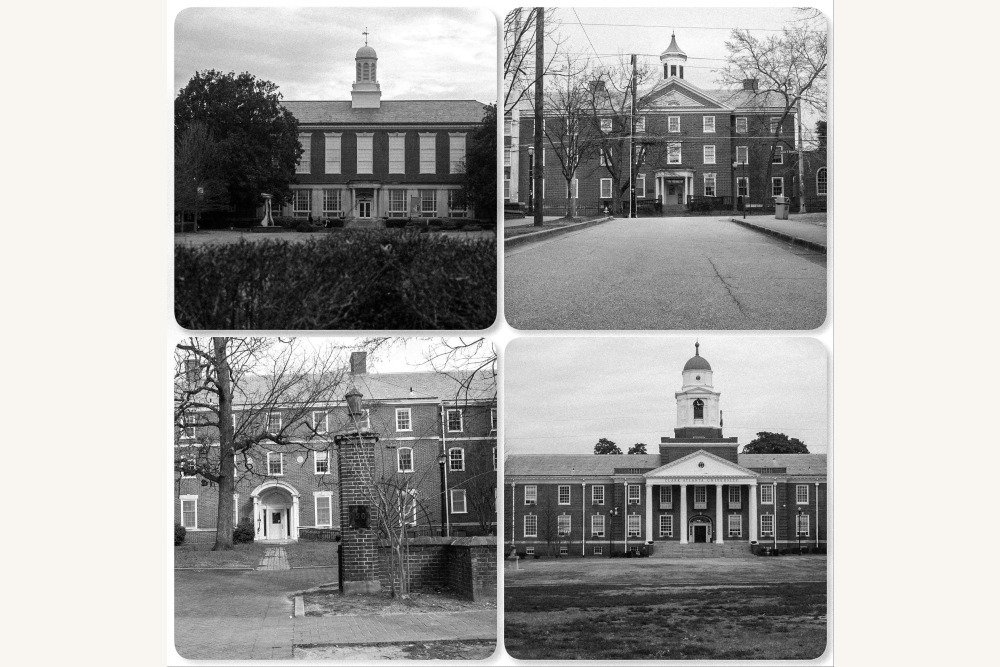
Jenise Harden: Clark Atlanta University - The objective of these images was to shine a light upon HBCU campuses. So often they are looked down upon based on the communities that they were built in. I decided to utilize the before and after approach because it requires research and dedication. Each photo was captured during the day on the campuses of Morris Brown College, Spelman College, Morehouse College, and Clark Atlanta University. Many buildings that were built back in the day are still standing. For example, a building on Morehouse’s campus, now called “Graves Hall,” used to be the main building called “Atlanta Baptist Seminary”. This project helped inform me about the historical buildings right around the corner.
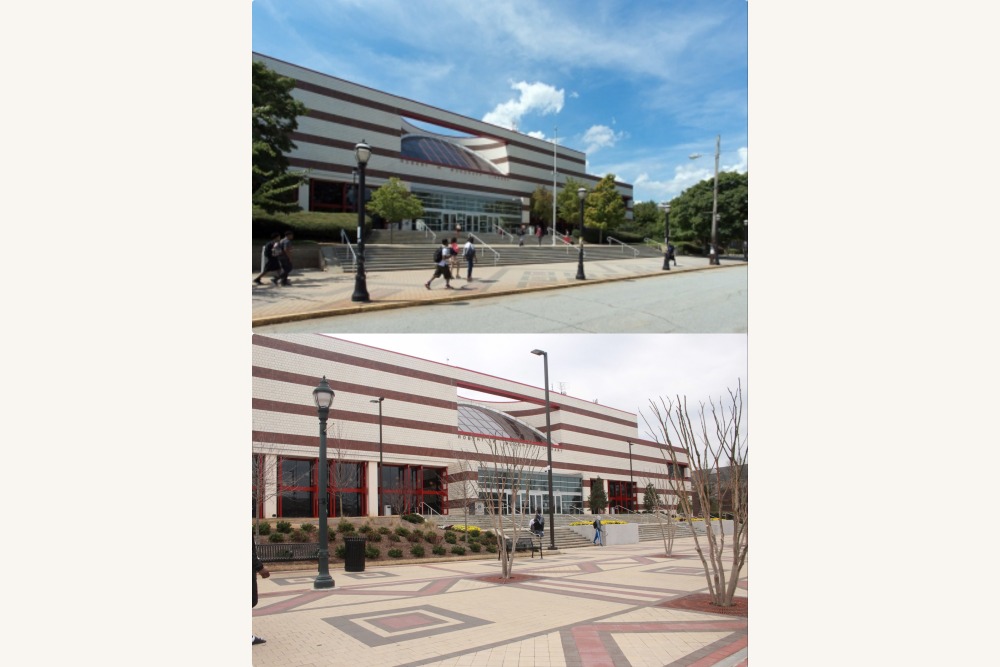
Jenise Harden: Clark Atlanta University - The objective of these images was to shine a light upon HBCU campuses. So often they are looked down upon based on the communities that they were built in. I decided to utilize the before and after approach because it requires research and dedication. Each photo was captured during the day on the campuses of Morris Brown College, Spelman College, Morehouse College, and Clark Atlanta University. Many buildings that were built back in the day are still standing. For example, a building on Morehouse’s campus, now called “Graves Hall,” used to be the main building called “Atlanta Baptist Seminary”. This project helped inform me about the historical buildings right around the corner.
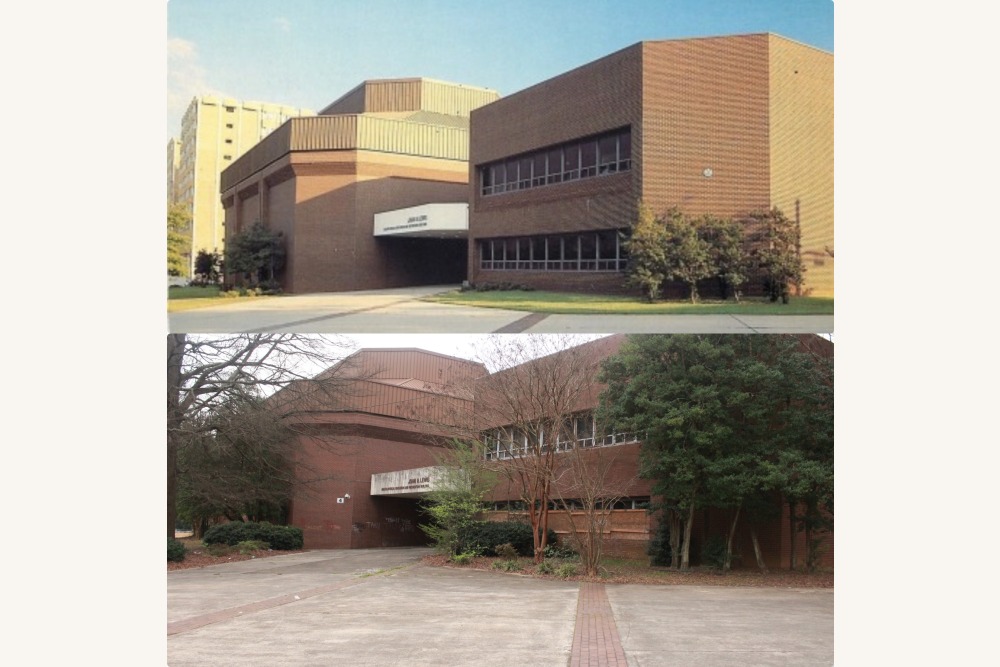
Jenise Harden: Morris Brown College - The objective of these images was to shine a light upon HBCU campuses. So often they are looked down upon based on the communities that they were built in. I decided to utilize the before and after approach because it requires research and dedication. Each photo was captured during the day on the campuses of Morris Brown College, Spelman College, Morehouse College, and Clark Atlanta University. Many buildings that were built back in the day are still standing. For example, a building on Morehouse’s campus, now called “Graves Hall,” used to be the main building called “Atlanta Baptist Seminary”. This project helped inform me about the historical buildings right around the corner.
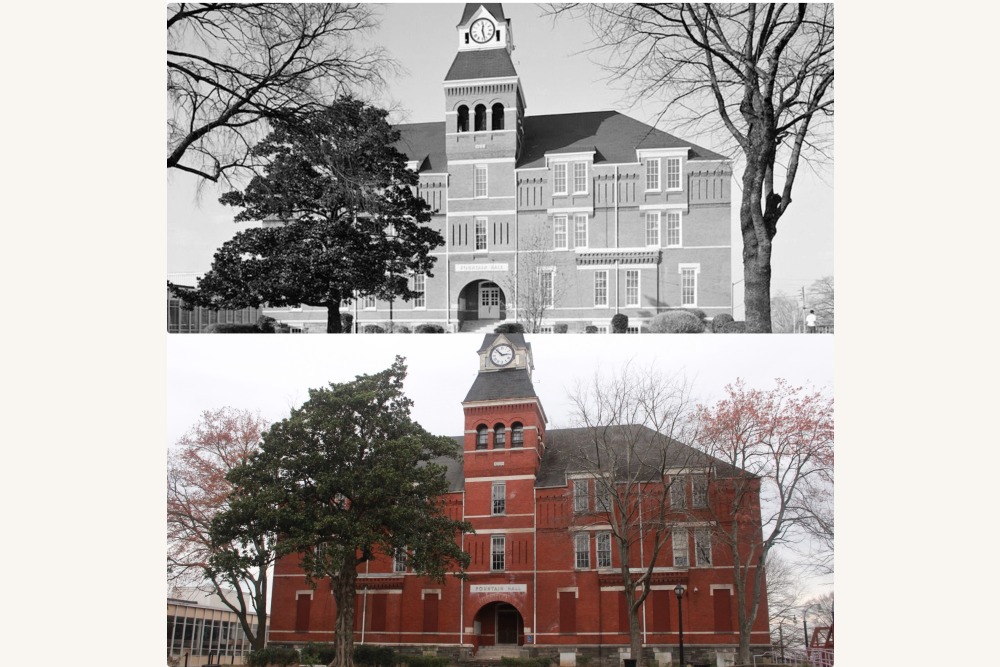
Jenise Harden: Morris Brown College - The objective of these images was to shine a light upon HBCU campuses. So often they are looked down upon based on the communities that they were built in. I decided to utilize the before and after approach because it requires research and dedication. Each photo was captured during the day on the campuses of Morris Brown College, Spelman College, Morehouse College, and Clark Atlanta University. Many buildings that were built back in the day are still standing. For example, a building on Morehouse’s campus, now called “Graves Hall,” used to be the main building called “Atlanta Baptist Seminary”. This project helped inform me about the historical buildings right around the corner.
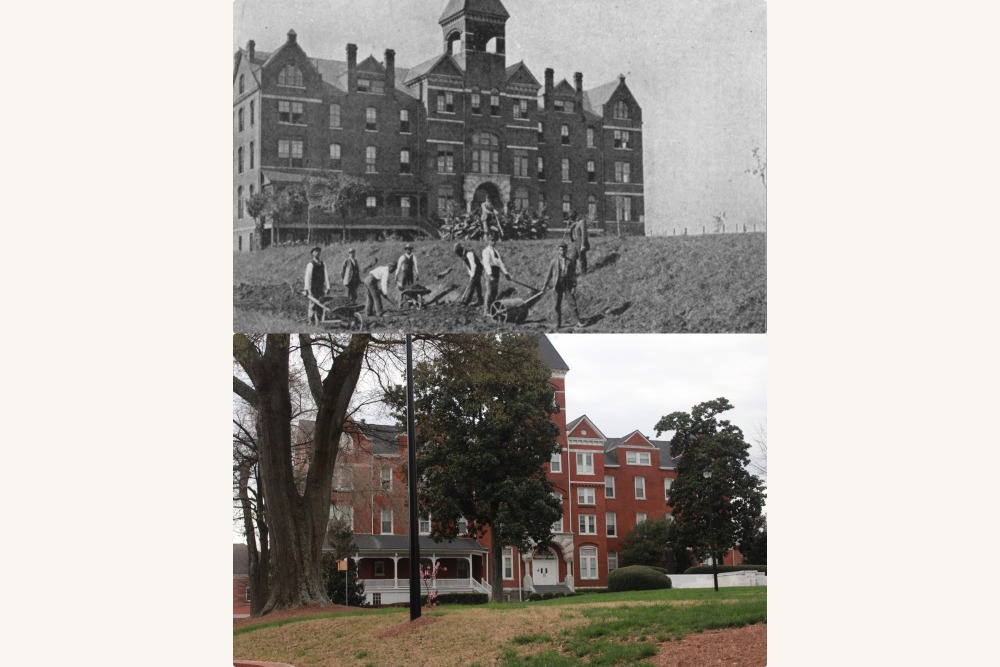
Jenise Harden: Morehouse College - The objective of these images was to shine a light upon HBCU campuses. So often they are looked down upon based on the communities that they were built in. I decided to utilize the before and after approach because it requires research and dedication. Each photo was captured during the day on the campuses of Morris Brown College, Spelman College, Morehouse College, and Clark Atlanta University. Many buildings that were built back in the day are still standing. For example, a building on Morehouse’s campus, now called “Graves Hall,” used to be the main building called “Atlanta Baptist Seminary”. This project helped inform me about the historical buildings right around the corner.
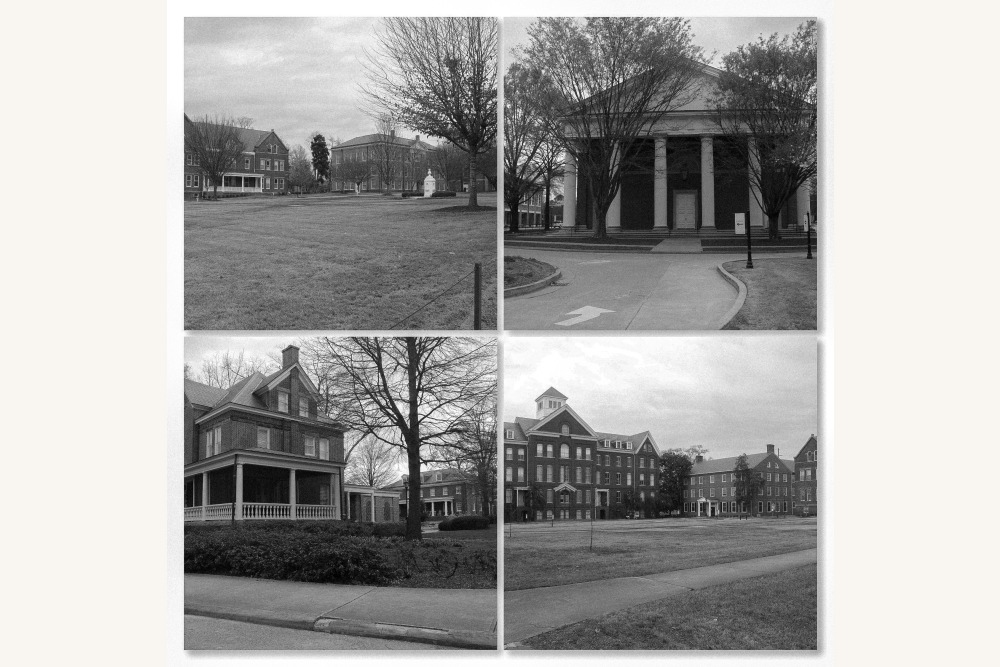
Jenise Harden: Spelman College - The objective of these images was to shine a light upon HBCU campuses. So often they are looked down upon based on the communities that they were built in. I decided to utilize the before and after approach because it requires research and dedication. Each photo was captured during the day on the campuses of Morris Brown College, Spelman College, Morehouse College, and Clark Atlanta University. Many buildings that were built back in the day are still standing. For example, a building on Morehouse’s campus, now called “Graves Hall,” used to be the main building called “Atlanta Baptist Seminary”. This project helped inform me about the historical buildings right around the corner.
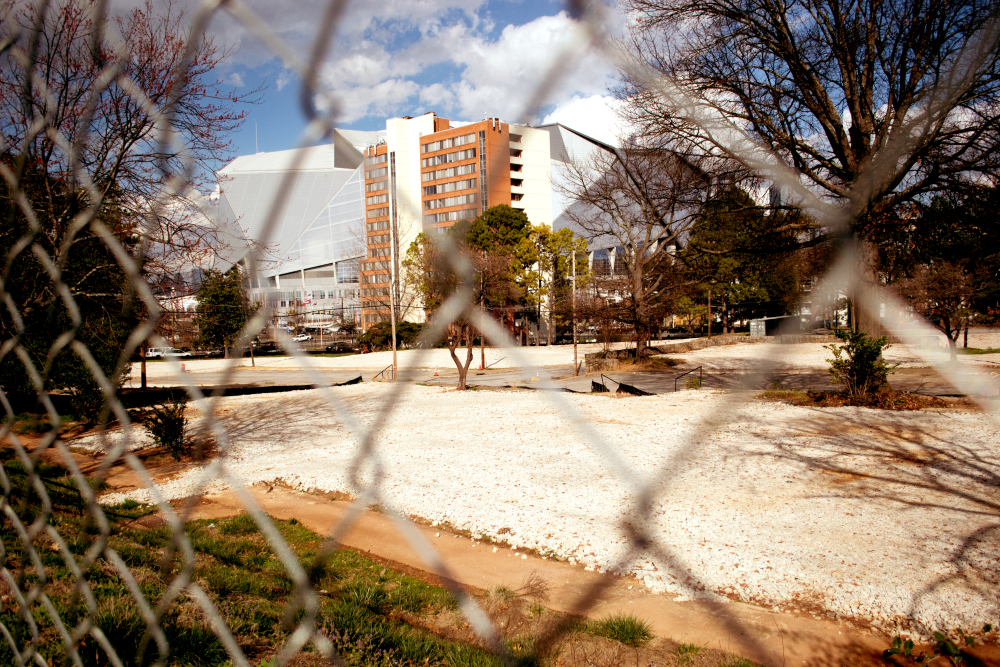
Raven Brown: When I think of the West Side / South Side concept, it brings me to analyze the versatility of different corners of the community. The Atlanta area as an entity is bustling with prosperity and flourishing businesses. Most recently, the community has expanded its businesses and welcomed many newcomers with the Grand Opening of the Mercedes-Benz Stadium. Despite the initial construction of it causing conflict within the community, there are numerous changes occurring as a result of this massive stadium's arrival. For my project, I started depicting changes being made in the city as a result of the new stadium being built. I completed this mostly through street photography coupled with a few conceptual shots. I also conducted interviews with a few bystanders to get their perception on how effective the changes are and was fortunate to receive forecasts of new businesses that were in the works. I discovered the YWCA corporate building is being built right next door to our campus and Arthur Blanks is creating a Home Depot affiliated parking area next to the stadium where the Georgia Dome previously stood.
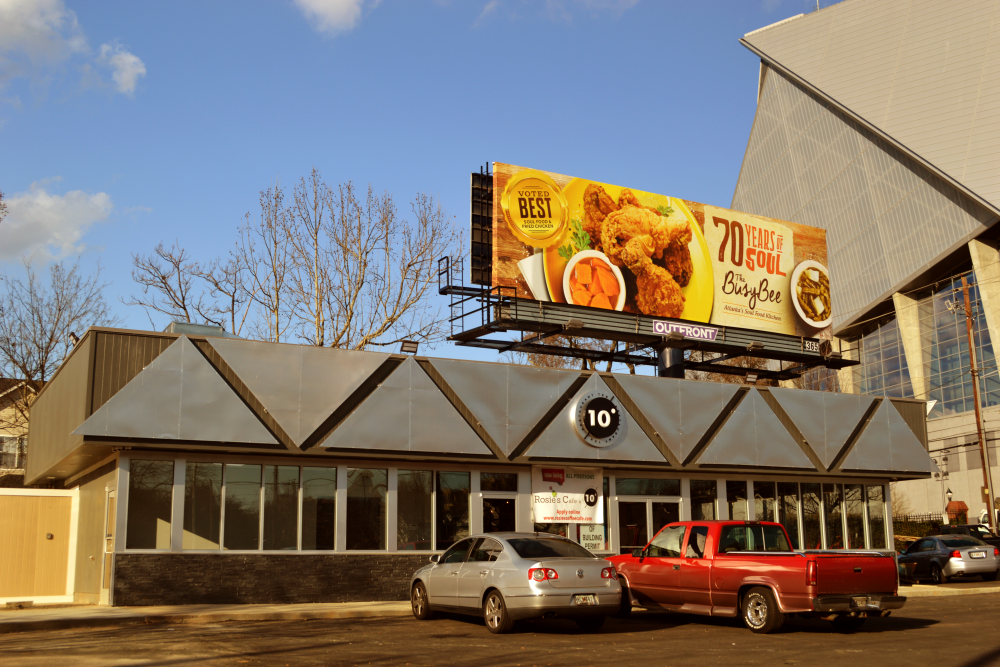
Raven Brown: When I think of the West Side / South Side concept, it brings me to analyze the versatility of different corners of the community. The Atlanta area as an entity is bustling with prosperity and flourishing businesses. Most recently, the community has expanded its businesses and welcomed many newcomers with the Grand Opening of the Mercedes-Benz Stadium. Despite the initial construction of it causing conflict within the community, there are numerous changes occurring as a result of this massive stadium's arrival. For my project, I started depicting changes being made in the city as a result of the new stadium being built. I completed this mostly through street photography coupled with a few conceptual shots. I also conducted interviews with a few bystanders to get their perception on how effective the changes are and was fortunate to receive forecasts of new businesses that were in the works. I discovered the YWCA corporate building is being built right next door to our campus and Arthur Blanks is creating a Home Depot affiliated parking area next to the stadium where the Georgia Dome previously stood.
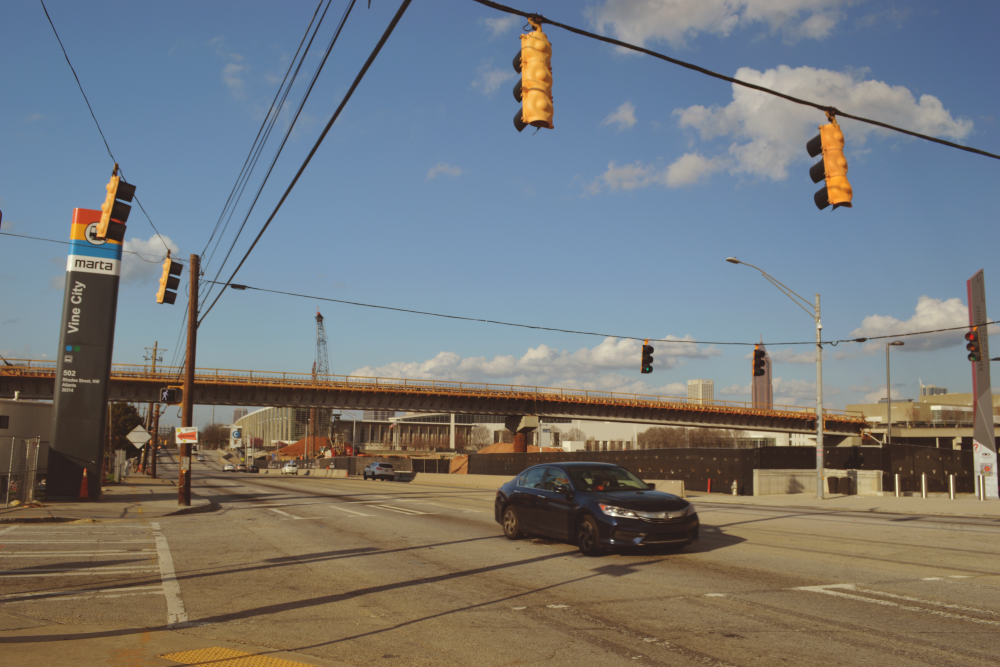
Raven Brown: When I think of the West Side / South Side concept, it brings me to analyze the versatility of different corners of the community. The Atlanta area as an entity is bustling with prosperity and flourishing businesses. Most recently, the community has expanded its businesses and welcomed many newcomers with the Grand Opening of the Mercedes-Benz Stadium. Despite the initial construction of it causing conflict within the community, there are numerous changes occurring as a result of this massive stadium's arrival. For my project, I started depicting changes being made in the city as a result of the new stadium being built. I completed this mostly through street photography coupled with a few conceptual shots. I also conducted interviews with a few bystanders to get their perception on how effective the changes are and was fortunate to receive forecasts of new businesses that were in the works. I discovered the YWCA corporate building is being built right next door to our campus and Arthur Blanks is creating a Home Depot affiliated parking area next to the stadium where the Georgia Dome previously stood.
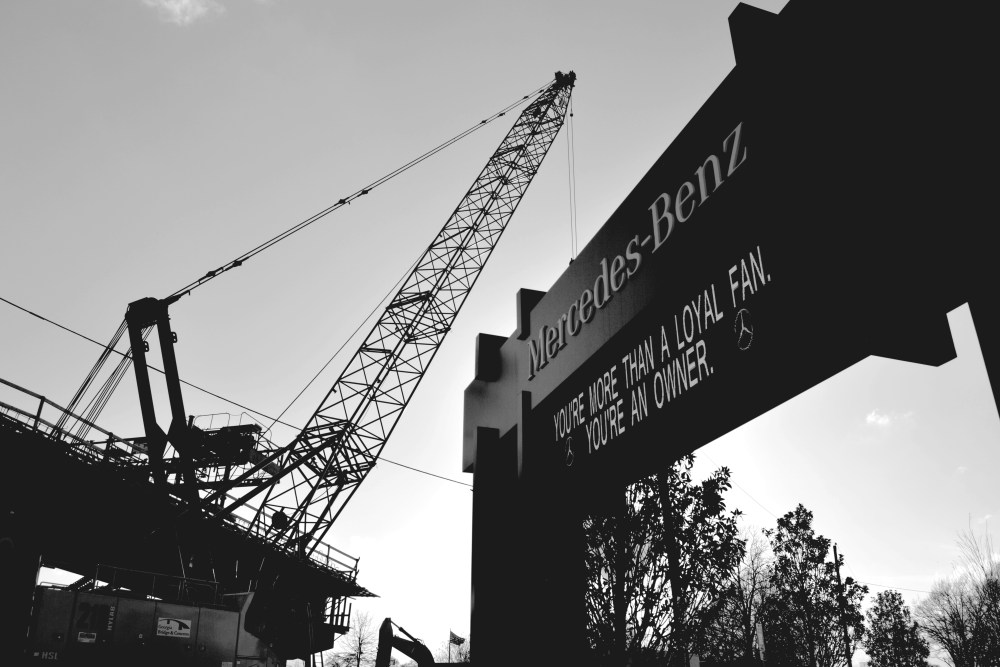
Raven Brown: When I think of the West Side / South Side concept, it brings me to analyze the versatility of different corners of the community. The Atlanta area as an entity is bustling with prosperity and flourishing businesses. Most recently, the community has expanded its businesses and welcomed many newcomers with the Grand Opening of the Mercedes-Benz Stadium. Despite the initial construction of it causing conflict within the community, there are numerous changes occurring as a result of this massive stadium's arrival. For my project, I started depicting changes being made in the city as a result of the new stadium being built. I completed this mostly through street photography coupled with a few conceptual shots. I also conducted interviews with a few bystanders to get their perception on how effective the changes are and was fortunate to receive forecasts of new businesses that were in the works. I discovered the YWCA corporate building is being built right next door to our campus and Arthur Blanks is creating a Home Depot affiliated parking area next to the stadium where the Georgia Dome previously stood.
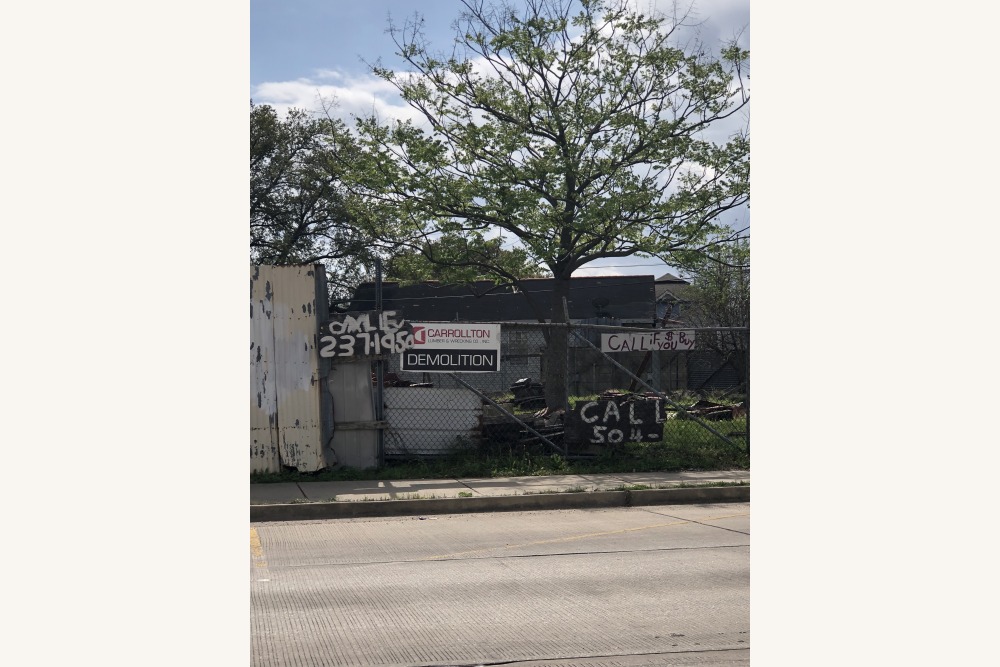
Saurice Wilson: Before - New Orleans is a city known for its comeback from a storm that no one will ever forget. In 2005, Hurricane Katrina left her mark on New Orleans, but New Orleans left an imprint on the world, showing how anything is possible. My series of images focuses on places in New Orleans that have recovered from the storm and places that were left to remind the city of how far we’ve come. Being a native of New Orleans, Louisiana and a victim of Hurricane Katrina, these pictures capture the progression, hard work, and faith my city possesses. Some tend to forget how long New Orleans went without help and support after Hurricane Katrina — we didn’t have celebrities racing to our rescue. We had a president that refused to come to the city [in the initial days]. My pictures show how as a community we came together and [worked] to rebuild [a city] we all love. Featured in this series: Before & After.
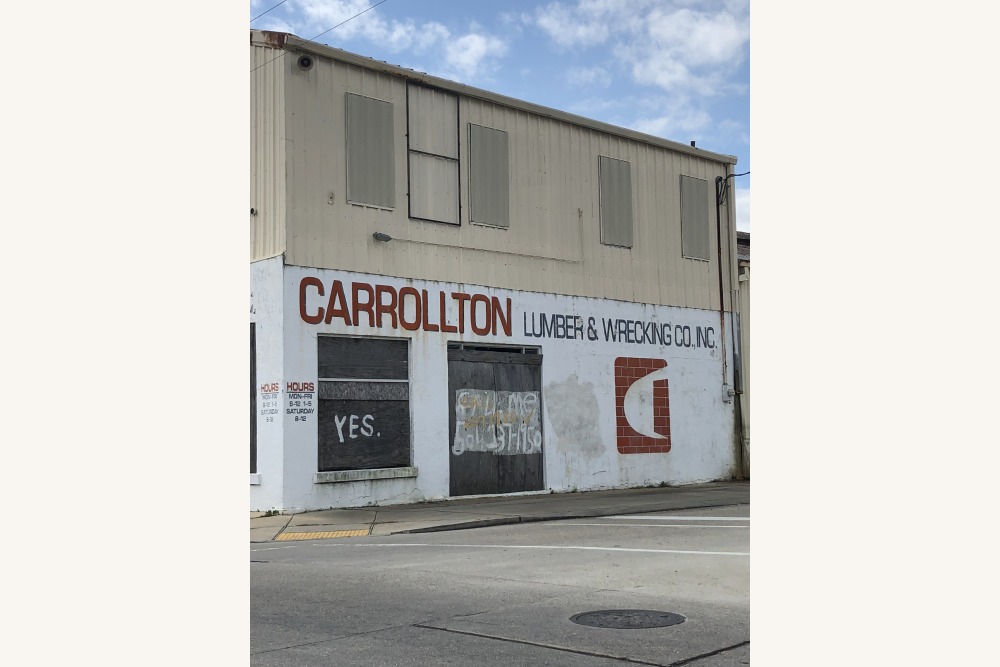
Saurice Wilson: Before - New Orleans is a city known for its comeback from a storm that no one will ever forget. In 2005, Hurricane Katrina left her mark on New Orleans, but New Orleans left an imprint on the world, showing how anything is possible. My series of images focuses on places in New Orleans that have recovered from the storm and places that were left to remind the city of how far we’ve come. Being a native of New Orleans, Louisiana and a victim of Hurricane Katrina, these pictures capture the progression, hard work, and faith my city possesses. Some tend to forget how long New Orleans went without help and support after Hurricane Katrina — we didn’t have celebrities racing to our rescue. We had a president that refused to come to the city [in the initial days]. My pictures show how as a community we came together and [worked] to rebuild [a city] we all love. Featured in this series: Before & After.
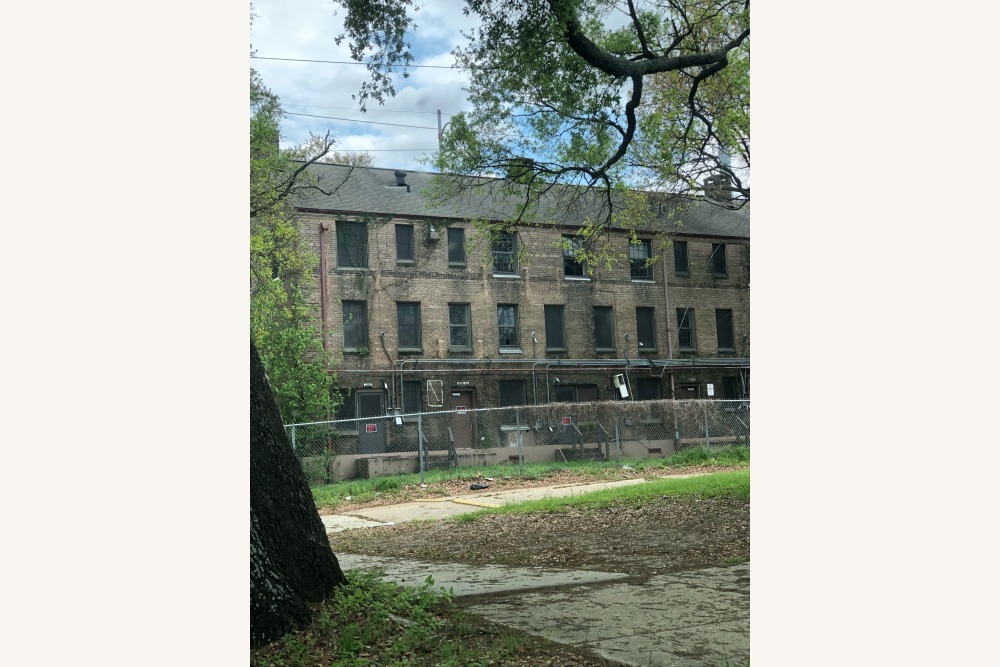
Saurice Wilson: Before - New Orleans is a city known for its comeback from a storm that no one will ever forget. In 2005, Hurricane Katrina left her mark on New Orleans, but New Orleans left an imprint on the world, showing how anything is possible. My series of images focuses on places in New Orleans that have recovered from the storm and places that were left to remind the city of how far we’ve come. Being a native of New Orleans, Louisiana and a victim of Hurricane Katrina, these pictures capture the progression, hard work, and faith my city possesses. Some tend to forget how long New Orleans went without help and support after Hurricane Katrina — we didn’t have celebrities racing to our rescue. We had a president that refused to come to the city [in the initial days]. My pictures show how as a community we came together and [worked] to rebuild [a city] we all love. Featured in this series: Before & After.
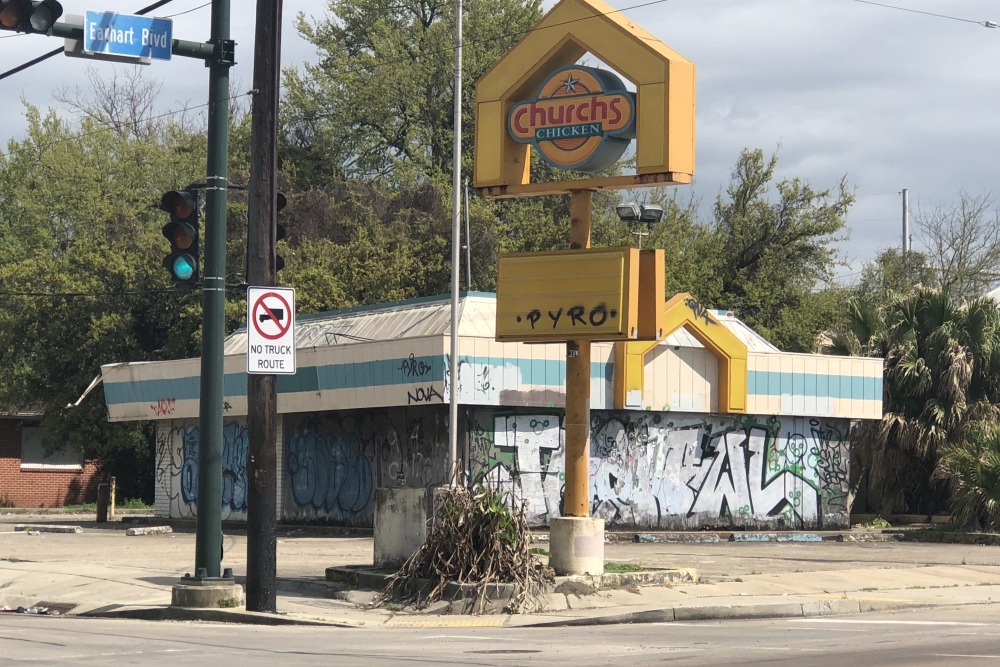
Saurice Wilson: Before - New Orleans is a city known for its comeback from a storm that no one will ever forget. In 2005, Hurricane Katrina left her mark on New Orleans, but New Orleans left an imprint on the world, showing how anything is possible. My series of images focuses on places in New Orleans that have recovered from the storm and places that were left to remind the city of how far we’ve come. Being a native of New Orleans, Louisiana and a victim of Hurricane Katrina, these pictures capture the progression, hard work, and faith my city possesses. Some tend to forget how long New Orleans went without help and support after Hurricane Katrina — we didn’t have celebrities racing to our rescue. We had a president that refused to come to the city [in the initial days]. My pictures show how as a community we came together and [worked] to rebuild [a city] we all love. Featured in this series: Before & After.
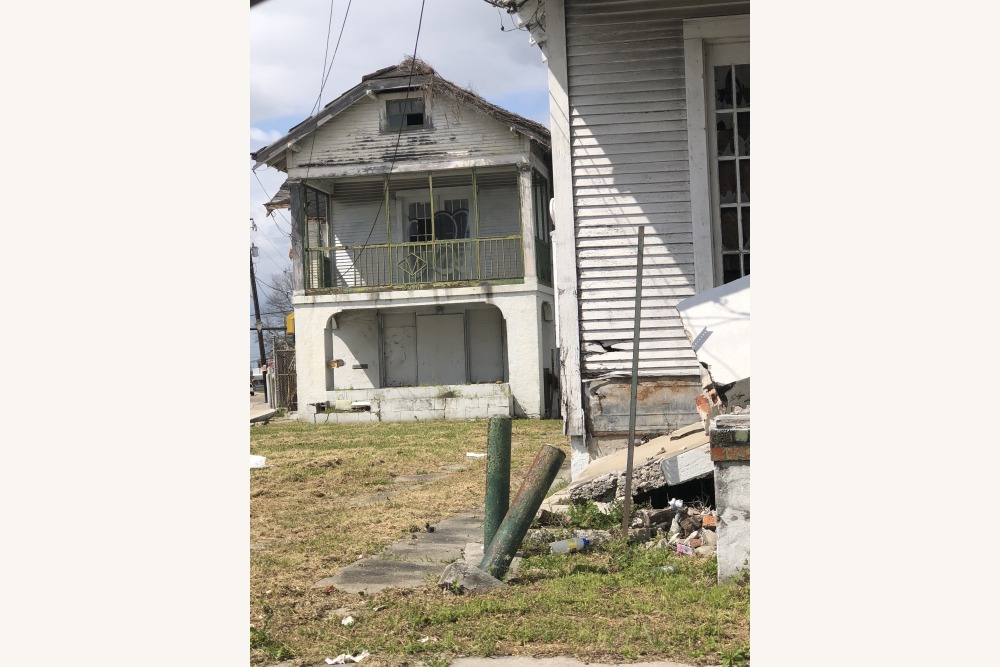
Saurice Wilson: Before - New Orleans is a city known for its comeback from a storm that no one will ever forget. In 2005, Hurricane Katrina left her mark on New Orleans, but New Orleans left an imprint on the world, showing how anything is possible. My series of images focuses on places in New Orleans that have recovered from the storm and places that were left to remind the city of how far we’ve come. Being a native of New Orleans, Louisiana and a victim of Hurricane Katrina, these pictures capture the progression, hard work, and faith my city possesses. Some tend to forget how long New Orleans went without help and support after Hurricane Katrina — we didn’t have celebrities racing to our rescue. We had a president that refused to come to the city [in the initial days]. My pictures show how as a community we came together and [worked] to rebuild [a city] we all love. Featured in this series: Before & After.
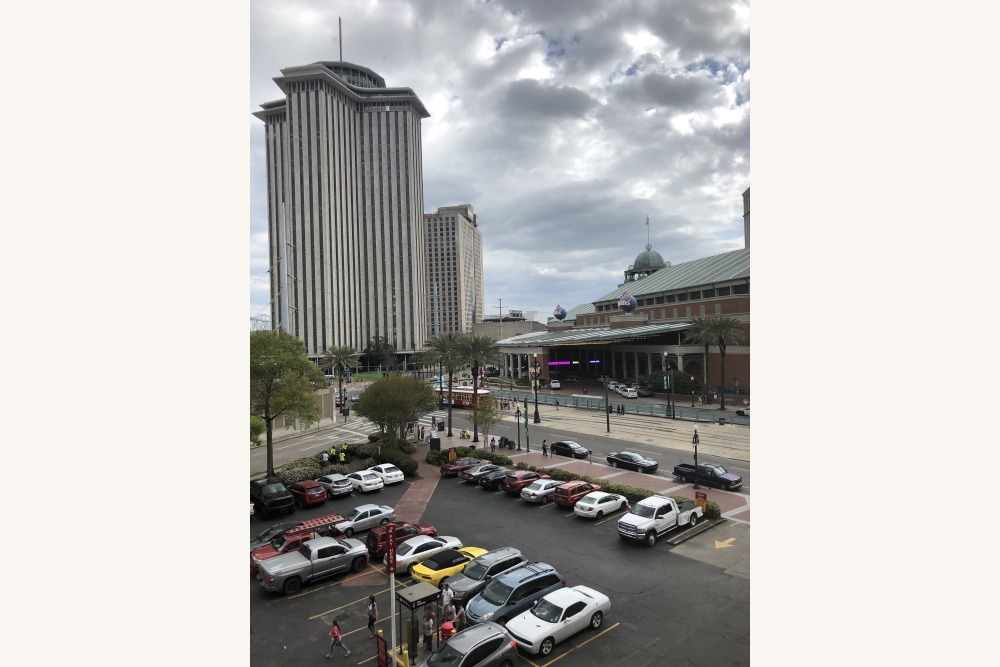
Saurice Wilson: After - New Orleans is a city known for its comeback from a storm that no one will ever forget. In 2005, Hurricane Katrina left her mark on New Orleans, but New Orleans left an imprint on the world, showing how anything is possible. My series of images focuses on places in New Orleans that have recovered from the storm and places that were left to remind the city of how far we’ve come. Being a native of New Orleans, Louisiana and a victim of Hurricane Katrina, these pictures capture the progression, hard work, and faith my city possesses. Some tend to forget how long New Orleans went without help and support after Hurricane Katrina — we didn’t have celebrities racing to our rescue. We had a president that refused to come to the city [in the initial days]. My pictures show how as a community we came together and [worked] to rebuild [a city] we all love. Featured in this series: Before & After.
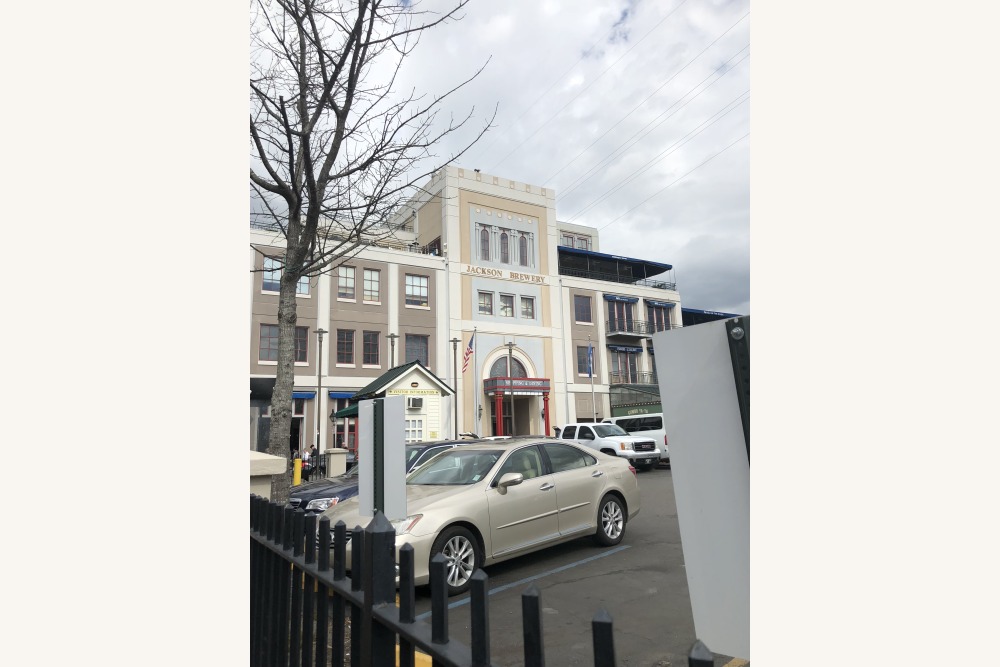
Saurice Wilson: After - New Orleans is a city known for its comeback from a storm that no one will ever forget. In 2005, Hurricane Katrina left her mark on New Orleans, but New Orleans left an imprint on the world, showing how anything is possible. My series of images focuses on places in New Orleans that have recovered from the storm and places that were left to remind the city of how far we’ve come. Being a native of New Orleans, Louisiana and a victim of Hurricane Katrina, these pictures capture the progression, hard work, and faith my city possesses. Some tend to forget how long New Orleans went without help and support after Hurricane Katrina — we didn’t have celebrities racing to our rescue. We had a president that refused to come to the city [in the initial days]. My pictures show how as a community we came together and [worked] to rebuild [a city] we all love. Featured in this series: Before & After.
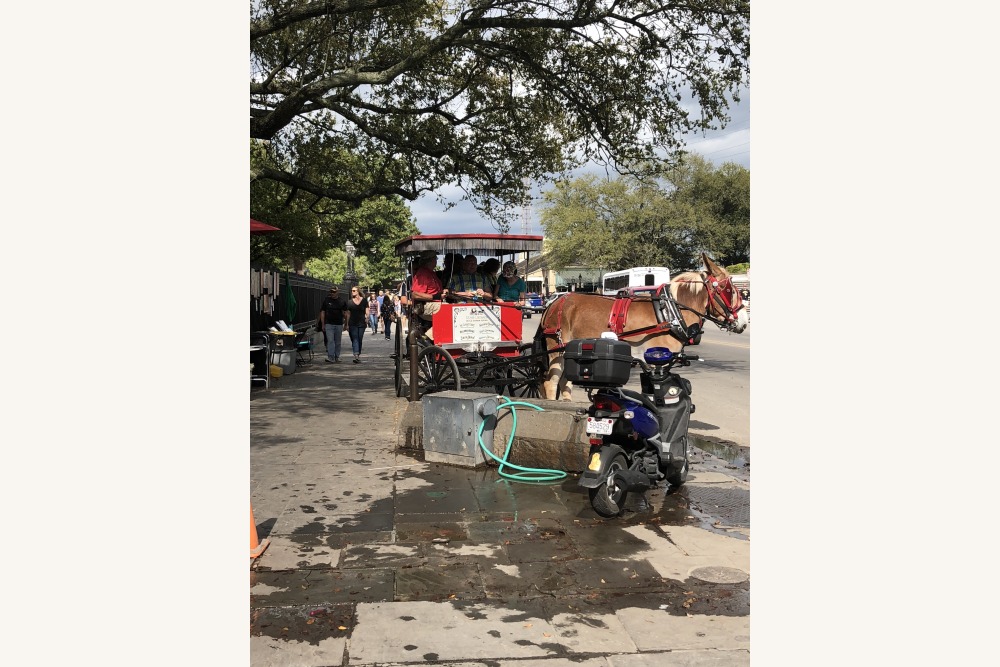
Saurice Wilson: After - New Orleans is a city known for its comeback from a storm that no one will ever forget. In 2005, Hurricane Katrina left her mark on New Orleans, but New Orleans left an imprint on the world, showing how anything is possible. My series of images focuses on places in New Orleans that have recovered from the storm and places that were left to remind the city of how far we’ve come. Being a native of New Orleans, Louisiana and a victim of Hurricane Katrina, these pictures capture the progression, hard work, and faith my city possesses. Some tend to forget how long New Orleans went without help and support after Hurricane Katrina — we didn’t have celebrities racing to our rescue. We had a president that refused to come to the city [in the initial days]. My pictures show how as a community we came together and [worked] to rebuild [a city] we all love. Featured in this series: Before & After.
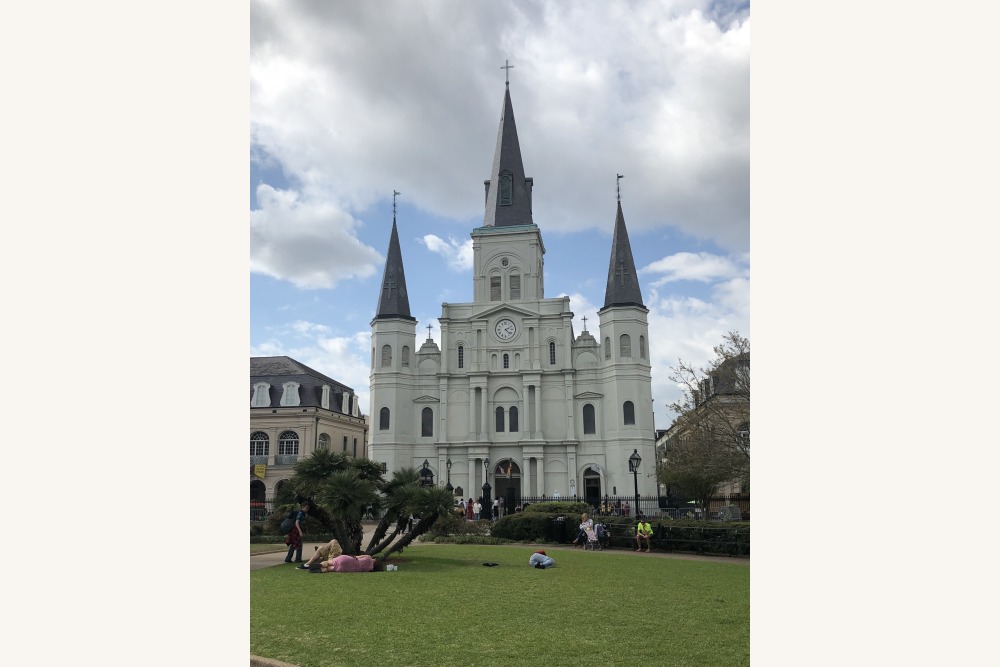
Saurice Wilson: After - New Orleans is a city known for its comeback from a storm that no one will ever forget. In 2005, Hurricane Katrina left her mark on New Orleans, but New Orleans left an imprint on the world, showing how anything is possible. My series of images focuses on places in New Orleans that have recovered from the storm and places that were left to remind the city of how far we’ve come. Being a native of New Orleans, Louisiana and a victim of Hurricane Katrina, these pictures capture the progression, hard work, and faith my city possesses. Some tend to forget how long New Orleans went without help and support after Hurricane Katrina — we didn’t have celebrities racing to our rescue. We had a president that refused to come to the city [in the initial days]. My pictures show how as a community we came together and [worked] to rebuild [a city] we all love. Featured in this series: Before & After.
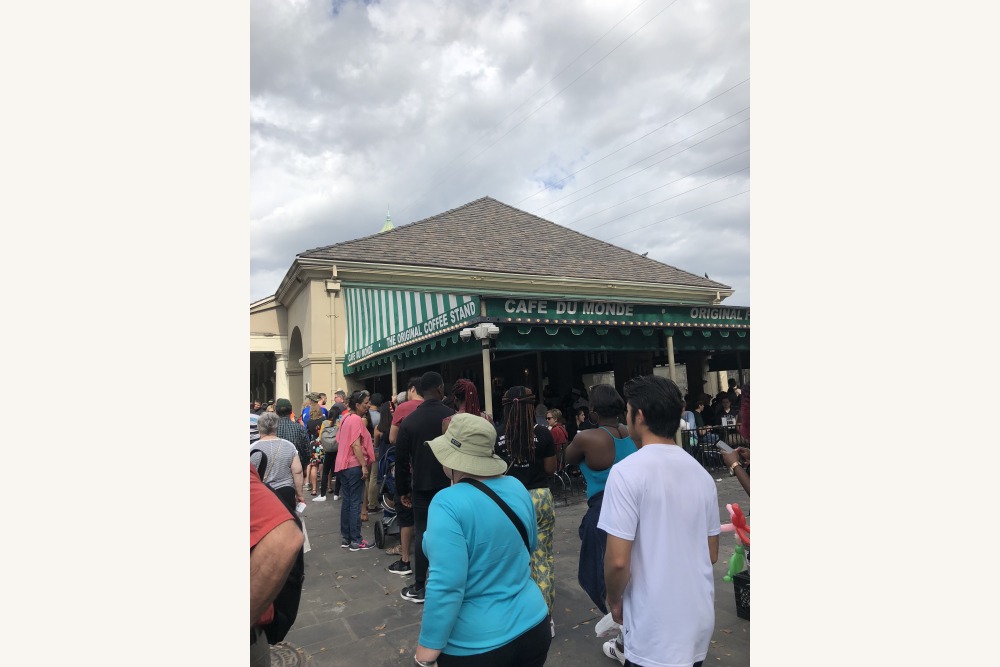
Saurice Wilson: After - New Orleans is a city known for its comeback from a storm that no one will ever forget. In 2005, Hurricane Katrina left her mark on New Orleans, but New Orleans left an imprint on the world, showing how anything is possible. My series of images focuses on places in New Orleans that have recovered from the storm and places that were left to remind the city of how far we’ve come. Being a native of New Orleans, Louisiana and a victim of Hurricane Katrina, these pictures capture the progression, hard work, and faith my city possesses. Some tend to forget how long New Orleans went without help and support after Hurricane Katrina — we didn’t have celebrities racing to our rescue. We had a president that refused to come to the city [in the initial days]. My pictures show how as a community we came together and [worked] to rebuild [a city] we all love. Featured in this series: Before & After.
Afiya Williams: South Side - For my West Side / South Side National Exhibition photos, I decided to do a photo essay of what it looks like on the south side of Atlanta vs. the west side. Historically, the more south you head in any given state, the more “urban” the areas are. West, east, and north are [populated by] mostly middle to upper class… white people. One of the first things I noticed when I… moved to Atlanta for college was that the gentrification in certain areas [was] rather abrupt. On one side of the street, there’s the ghetto. Black people hanging out [at] corner shops, grass growing high through the cracks of the sidewalks, run down or vacant houses, homeless people pushing their grocery carts full of garbage bags, etc. …On the other side of the street, there [are] places like the new Mercedes-Benz Stadium, fancy glass skyscrapers, or Midtown flats with nice stores and freshly paved roads. My plan was to capture a series of photos that show that gentrification and the difference between a predominantly black neighborhood on the Southside of Atlanta and the predominantly white neighborhood in the other cardinal directions. …I drove around… MLK Drive and the surrounding area of my university, Clark Atlanta University, for the south side part of the project and I went to Atlantic Station… for the west side part.
Afiya Williams: South Side - For my West Side / South Side National Exhibition photos, I decided to do a photo essay of what it looks like on the south side of Atlanta vs. the west side. Historically, the more south you head in any given state, the more “urban” the areas are. West, east, and north are [populated by] mostly middle to upper class… white people. One of the first things I noticed when I… moved to Atlanta for college was that the gentrification in certain areas [was] rather abrupt. On one side of the street, there’s the ghetto. Black people hanging out [at] corner shops, grass growing high through the cracks of the sidewalks, run down or vacant houses, homeless people pushing their grocery carts full of garbage bags, etc. …On the other side of the street, there [are] places like the new Mercedes-Benz Stadium, fancy glass skyscrapers, or Midtown flats with nice stores and freshly paved roads. My plan was to capture a series of photos that show that gentrification and the difference between a predominantly black neighborhood on the Southside of Atlanta and the predominantly white neighborhood in the other cardinal directions. …I drove around… MLK Drive and the surrounding area of my university, Clark Atlanta University, for the south side part of the project and I went to Atlantic Station… for the west side part.
Afiya Williams: South Side - For my West Side / South Side National Exhibition photos, I decided to do a photo essay of what it looks like on the south side of Atlanta vs. the west side. Historically, the more south you head in any given state, the more “urban” the areas are. West, east, and north are [populated by] mostly middle to upper class… white people. One of the first things I noticed when I… moved to Atlanta for college was that the gentrification in certain areas [was] rather abrupt. On one side of the street, there’s the ghetto. Black people hanging out [at] corner shops, grass growing high through the cracks of the sidewalks, run down or vacant houses, homeless people pushing their grocery carts full of garbage bags, etc. …On the other side of the street, there [are] places like the new Mercedes-Benz Stadium, fancy glass skyscrapers, or Midtown flats with nice stores and freshly paved roads. My plan was to capture a series of photos that show that gentrification and the difference between a predominantly black neighborhood on the Southside of Atlanta and the predominantly white neighborhood in the other cardinal directions. …I drove around… MLK Drive and the surrounding area of my university, Clark Atlanta University, for the south side part of the project and I went to Atlantic Station… for the west side part.
Afiya Williams: South Side - For my West Side / South Side National Exhibition photos, I decided to do a photo essay of what it looks like on the south side of Atlanta vs. the west side. Historically, the more south you head in any given state, the more “urban” the areas are. West, east, and north are [populated by] mostly middle to upper class… white people. One of the first things I noticed when I… moved to Atlanta for college was that the gentrification in certain areas [was] rather abrupt. On one side of the street, there’s the ghetto. Black people hanging out [at] corner shops, grass growing high through the cracks of the sidewalks, run down or vacant houses, homeless people pushing their grocery carts full of garbage bags, etc. …On the other side of the street, there [are] places like the new Mercedes-Benz Stadium, fancy glass skyscrapers, or Midtown flats with nice stores and freshly paved roads. My plan was to capture a series of photos that show that gentrification and the difference between a predominantly black neighborhood on the Southside of Atlanta and the predominantly white neighborhood in the other cardinal directions. …I drove around… MLK Drive and the surrounding area of my university, Clark Atlanta University, for the south side part of the project and I went to Atlantic Station… for the west side part.
Afiya Williams: South Side - For my West Side / South Side National Exhibition photos, I decided to do a photo essay of what it looks like on the south side of Atlanta vs. the west side. Historically, the more south you head in any given state, the more “urban” the areas are. West, east, and north are [populated by] mostly middle to upper class… white people. One of the first things I noticed when I… moved to Atlanta for college was that the gentrification in certain areas [was] rather abrupt. On one side of the street, there’s the ghetto. Black people hanging out [at] corner shops, grass growing high through the cracks of the sidewalks, run down or vacant houses, homeless people pushing their grocery carts full of garbage bags, etc. …On the other side of the street, there [are] places like the new Mercedes-Benz Stadium, fancy glass skyscrapers, or Midtown flats with nice stores and freshly paved roads. My plan was to capture a series of photos that show that gentrification and the difference between a predominantly black neighborhood on the Southside of Atlanta and the predominantly white neighborhood in the other cardinal directions. …I drove around… MLK Drive and the surrounding area of my university, Clark Atlanta University, for the south side part of the project and I went to Atlantic Station… for the west side part.
Afiya Williams: West Side - For my West Side / South Side National Exhibition photos, I decided to do a photo essay of what it looks like on the south side of Atlanta vs. the west side. Historically, the more south you head in any given state, the more “urban” the areas are. West, east, and north are [populated by] mostly middle to upper class… white people. One of the first things I noticed when I… moved to Atlanta for college was that the gentrification in certain areas [was] rather abrupt. On one side of the street, there’s the ghetto. Black people hanging out [at] corner shops, grass growing high through the cracks of the sidewalks, run down or vacant houses, homeless people pushing their grocery carts full of garbage bags, etc. …On the other side of the street, there [are] places like the new Mercedes-Benz Stadium, fancy glass skyscrapers, or Midtown flats with nice stores and freshly paved roads. My plan was to capture a series of photos that show that gentrification and the difference between a predominantly black neighborhood on the Southside of Atlanta and the predominantly white neighborhood in the other cardinal directions. …I drove around… MLK Drive and the surrounding area of my university, Clark Atlanta University, for the south side part of the project and I went to Atlantic Station… for the west side part.
Afiya Williams: West Side - For my West Side / South Side National Exhibition photos, I decided to do a photo essay of what it looks like on the south side of Atlanta vs. the west side. Historically, the more south you head in any given state, the more “urban” the areas are. West, east, and north are [populated by] mostly middle to upper class… white people. One of the first things I noticed when I… moved to Atlanta for college was that the gentrification in certain areas [was] rather abrupt. On one side of the street, there’s the ghetto. Black people hanging out [at] corner shops, grass growing high through the cracks of the sidewalks, run down or vacant houses, homeless people pushing their grocery carts full of garbage bags, etc. …On the other side of the street, there [are] places like the new Mercedes-Benz Stadium, fancy glass skyscrapers, or Midtown flats with nice stores and freshly paved roads. My plan was to capture a series of photos that show that gentrification and the difference between a predominantly black neighborhood on the Southside of Atlanta and the predominantly white neighborhood in the other cardinal directions. …I drove around… MLK Drive and the surrounding area of my university, Clark Atlanta University, for the south side part of the project and I went to Atlantic Station… for the west side part.
Afiya Williams: West Side - For my West Side / South Side National Exhibition photos, I decided to do a photo essay of what it looks like on the south side of Atlanta vs. the west side. Historically, the more south you head in any given state, the more “urban” the areas are. West, east, and north are [populated by] mostly middle to upper class… white people. One of the first things I noticed when I… moved to Atlanta for college was that the gentrification in certain areas [was] rather abrupt. On one side of the street, there’s the ghetto. Black people hanging out [at] corner shops, grass growing high through the cracks of the sidewalks, run down or vacant houses, homeless people pushing their grocery carts full of garbage bags, etc. …On the other side of the street, there [are] places like the new Mercedes-Benz Stadium, fancy glass skyscrapers, or Midtown flats with nice stores and freshly paved roads. My plan was to capture a series of photos that show that gentrification and the difference between a predominantly black neighborhood on the Southside of Atlanta and the predominantly white neighborhood in the other cardinal directions. …I drove around… MLK Drive and the surrounding area of my university, Clark Atlanta University, for the south side part of the project and I went to Atlantic Station… for the west side part.
Afiya Williams: West Side - For my West Side / South Side National Exhibition photos, I decided to do a photo essay of what it looks like on the south side of Atlanta vs. the west side. Historically, the more south you head in any given state, the more “urban” the areas are. West, east, and north are [populated by] mostly middle to upper class… white people. One of the first things I noticed when I… moved to Atlanta for college was that the gentrification in certain areas [was] rather abrupt. On one side of the street, there’s the ghetto. Black people hanging out [at] corner shops, grass growing high through the cracks of the sidewalks, run down or vacant houses, homeless people pushing their grocery carts full of garbage bags, etc. …On the other side of the street, there [are] places like the new Mercedes-Benz Stadium, fancy glass skyscrapers, or Midtown flats with nice stores and freshly paved roads. My plan was to capture a series of photos that show that gentrification and the difference between a predominantly black neighborhood on the Southside of Atlanta and the predominantly white neighborhood in the other cardinal directions. …I drove around… MLK Drive and the surrounding area of my university, Clark Atlanta University, for the south side part of the project and I went to Atlantic Station… for the west side part.
Andria Ward: As a student in Clark Atlanta University’s photography class, I participated in the West Side/South Side project. As a native of Atlanta, Georgia, I thought it would be a good idea to capture the ironic upgrades one of Atlanta’s poorest communities is experiencing. My series of images include the new multi-million dollar Mercedes Benz Stadium, The Westside Works facility that is responsible for some of the newly updated areas, as well as [run-down] houses that are less than a mile away from the multi-million dollar stadium. I believe my images will bring awareness to the community and to those who are in higher power to help make the entire community a better place rather than certain areas. The images speak for themselves and can even be considered a digital cry out for help.
Andria Ward: As a student in Clark Atlanta University’s photography class, I participated in the West Side/South Side project. As a native of Atlanta, Georgia, I thought it would be a good idea to capture the ironic upgrades one of Atlanta’s poorest communities is experiencing. My series of images include the new multi-million dollar Mercedes Benz Stadium, The Westside Works facility that is responsible for some of the newly updated areas, as well as [run-down] houses that are less than a mile away from the multi-million dollar stadium. I believe my images will bring awareness to the community and to those who are in higher power to help make the entire community a better place rather than certain areas. The images speak for themselves and can even be considered a digital cry out for help.
Andria Ward: As a student in Clark Atlanta University’s photography class, I participated in the West Side/South Side project. As a native of Atlanta, Georgia, I thought it would be a good idea to capture the ironic upgrades one of Atlanta’s poorest communities is experiencing. My series of images include the new multi-million dollar Mercedes Benz Stadium, The Westside Works facility that is responsible for some of the newly updated areas, as well as [run-down] houses that are less than a mile away from the multi-million dollar stadium. I believe my images will bring awareness to the community and to those who are in higher power to help make the entire community a better place rather than certain areas. The images speak for themselves and can even be considered a digital cry out for help.
Andria Ward: As a student in Clark Atlanta University’s photography class, I participated in the West Side/South Side project. As a native of Atlanta, Georgia, I thought it would be a good idea to capture the ironic upgrades one of Atlanta’s poorest communities is experiencing. My series of images include the new multi-million dollar Mercedes Benz Stadium, The Westside Works facility that is responsible for some of the newly updated areas, as well as [run-down] houses that are less than a mile away from the multi-million dollar stadium. I believe my images will bring awareness to the community and to those who are in higher power to help make the entire community a better place rather than certain areas. The images speak for themselves and can even be considered a digital cry out for help.
Andria Ward: As a student in Clark Atlanta University’s photography class, I participated in the West Side/South Side project. As a native of Atlanta, Georgia, I thought it would be a good idea to capture the ironic upgrades one of Atlanta’s poorest communities is experiencing. My series of images include the new multi-million dollar Mercedes Benz Stadium, The Westside Works facility that is responsible for some of the newly updated areas, as well as [run-down] houses that are less than a mile away from the multi-million dollar stadium. I believe my images will bring awareness to the community and to those who are in higher power to help make the entire community a better place rather than certain areas. The images speak for themselves and can even be considered a digital cry out for help.
Andria Ward: As a student in Clark Atlanta University’s photography class, I participated in the West Side/South Side project. As a native of Atlanta, Georgia, I thought it would be a good idea to capture the ironic upgrades one of Atlanta’s poorest communities is experiencing. My series of images include the new multi-million dollar Mercedes Benz Stadium, The Westside Works facility that is responsible for some of the newly updated areas, as well as [run-down] houses that are less than a mile away from the multi-million dollar stadium. I believe my images will bring awareness to the community and to those who are in higher power to help make the entire community a better place rather than certain areas. The images speak for themselves and can even be considered a digital cry out for help.
Andria Ward: As a student in Clark Atlanta University’s photography class, I participated in the West Side/South Side project. As a native of Atlanta, Georgia, I thought it would be a good idea to capture the ironic upgrades one of Atlanta’s poorest communities is experiencing. My series of images include the new multi-million dollar Mercedes Benz Stadium, The Westside Works facility that is responsible for some of the newly updated areas, as well as [run-down] houses that are less than a mile away from the multi-million dollar stadium. I believe my images will bring awareness to the community and to those who are in higher power to help make the entire community a better place rather than certain areas. The images speak for themselves and can even be considered a digital cry out for help.
Andria Ward: As a student in Clark Atlanta University’s photography class, I participated in the West Side/South Side project. As a native of Atlanta, Georgia, I thought it would be a good idea to capture the ironic upgrades one of Atlanta’s poorest communities is experiencing. My series of images include the new multi-million dollar Mercedes Benz Stadium, The Westside Works facility that is responsible for some of the newly updated areas, as well as [run-down] houses that are less than a mile away from the multi-million dollar stadium. I believe my images will bring awareness to the community and to those who are in higher power to help make the entire community a better place rather than certain areas. The images speak for themselves and can even be considered a digital cry out for help.
Andria Ward: As a student in Clark Atlanta University’s photography class, I participated in the West Side/South Side project. As a native of Atlanta, Georgia, I thought it would be a good idea to capture the ironic upgrades one of Atlanta’s poorest communities is experiencing. My series of images include the new multi-million dollar Mercedes Benz Stadium, The Westside Works facility that is responsible for some of the newly updated areas, as well as [run-down] houses that are less than a mile away from the multi-million dollar stadium. I believe my images will bring awareness to the community and to those who are in higher power to help make the entire community a better place rather than certain areas. The images speak for themselves and can even be considered a digital cry out for help.
Andria Ward: As a student in Clark Atlanta University’s photography class, I participated in the West Side/South Side project. As a native of Atlanta, Georgia, I thought it would be a good idea to capture the ironic upgrades one of Atlanta’s poorest communities is experiencing. My series of images include the new multi-million dollar Mercedes Benz Stadium, The Westside Works facility that is responsible for some of the newly updated areas, as well as [run-down] houses that are less than a mile away from the multi-million dollar stadium. I believe my images will bring awareness to the community and to those who are in higher power to help make the entire community a better place rather than certain areas. The images speak for themselves and can even be considered a digital cry out for help.
Carnica Durham: My work focuses more on the background than the model itself. I wanted to capture the beauty and creativeness of Atlanta street artists and how they choose to express themselves. In these photos, you will see various backgrounds: some that were captured at night and others during the day. I also chose for my models to dress themselves in all black or white to have the focus mostly on the art within the picture. Also, I chose this so no other colors would blend or be too distracting. I have always been a huge fan of street art and I would like other people to experience this type of art as well.
Carnica Durham: My work focuses more on the background than the model itself. I wanted to capture the beauty and creativeness of Atlanta street artists and how they choose to express themselves. In these photos, you will see various backgrounds: some that were captured at night and others during the day. I also chose for my models to dress themselves in all black or white to have the focus mostly on the art within the picture. Also, I chose this so no other colors would blend or be too distracting. I have always been a huge fan of street art and I would like other people to experience this type of art as well.
Carnica Durham: My work focuses more on the background than the model itself. I wanted to capture the beauty and creativeness of Atlanta street artists and how they choose to express themselves. In these photos, you will see various backgrounds: some that were captured at night and others during the day. I also chose for my models to dress themselves in all black or white to have the focus mostly on the art within the picture. Also, I chose this so no other colors would blend or be too distracting. I have always been a huge fan of street art and I would like other people to experience this type of art as well.
Carnica Durham: My work focuses more on the background than the model itself. I wanted to capture the beauty and creativeness of Atlanta street artists and how they choose to express themselves. In these photos, you will see various backgrounds: some that were captured at night and others during the day. I also chose for my models to dress themselves in all black or white to have the focus mostly on the art within the picture. Also, I chose this so no other colors would blend or be too distracting. I have always been a huge fan of street art and I would like other people to experience this type of art as well.
Jasmine Royster: My artwork is inspired by the rebirth and popularization of African culture in America. As a child, I can recollect memories of those who are of African descent succumb to bullying because of their homeland, fashion, food, and music. Fifteen years later, the African culture had taken the nation by storm through fashion and music influences. A “Gele” is bestowed upon my muses' heads to represent the modern day African queen. In Nigeria, Africa, the Gele is a traditional headwear made of cotton and silk, only worn on special occasions. The Gele is considered to be a crown that accessorized femininity and social status. As young African American women, it is important to know our history and perceive ourselves as young black queens. Through my portraits, I have captured the essence of power, femininity, and distinction within black women.
Jasmine Royster: My artwork is inspired by the rebirth and popularization of African culture in America. As a child, I can recollect memories of those who are of African descent succumb to bullying because of their homeland, fashion, food, and music. Fifteen years later, the African culture had taken the nation by storm through fashion and music influences. A “Gele” is bestowed upon my muses' heads to represent the modern day African queen. In Nigeria, Africa, the Gele is a traditional headwear made of cotton and silk, only worn on special occasions. The Gele is considered to be a crown that accessorized femininity and social status. As young African American women, it is important to know our history and perceive ourselves as young black queens. Through my portraits, I have captured the essence of power, femininity, and distinction within black women.
Jasmine Royster: My artwork is inspired by the rebirth and popularization of African culture in America. As a child, I can recollect memories of those who are of African descent succumb to bullying because of their homeland, fashion, food, and music. Fifteen years later, the African culture had taken the nation by storm through fashion and music influences. A “Gele” is bestowed upon my muses' heads to represent the modern day African queen. In Nigeria, Africa, the Gele is a traditional headwear made of cotton and silk, only worn on special occasions. The Gele is considered to be a crown that accessorized femininity and social status. As young African American women, it is important to know our history and perceive ourselves as young black queens. Through my portraits, I have captured the essence of power, femininity, and distinction within black women.
Jasmine Royster: My artwork is inspired by the rebirth and popularization of African culture in America. As a child, I can recollect memories of those who are of African descent succumb to bullying because of their homeland, fashion, food, and music. Fifteen years later, the African culture had taken the nation by storm through fashion and music influences. A “Gele” is bestowed upon my muses' heads to represent the modern day African queen. In Nigeria, Africa, the Gele is a traditional headwear made of cotton and silk, only worn on special occasions. The Gele is considered to be a crown that accessorized femininity and social status. As young African American women, it is important to know our history and perceive ourselves as young black queens. Through my portraits, I have captured the essence of power, femininity, and distinction within black women.
Jasmine Royster: My artwork is inspired by the rebirth and popularization of African culture in America. As a child, I can recollect memories of those who are of African descent succumb to bullying because of their homeland, fashion, food, and music. Fifteen years later, the African culture had taken the nation by storm through fashion and music influences. A “Gele” is bestowed upon my muses' heads to represent the modern day African queen. In Nigeria, Africa, the Gele is a traditional headwear made of cotton and silk, only worn on special occasions. The Gele is considered to be a crown that accessorized femininity and social status. As young African American women, it is important to know our history and perceive ourselves as young black queens. Through my portraits, I have captured the essence of power, femininity, and distinction within black women.
Jasmine Royster: My artwork is inspired by the rebirth and popularization of African culture in America. As a child, I can recollect memories of those who are of African descent succumb to bullying because of their homeland, fashion, food, and music. Fifteen years later, the African culture had taken the nation by storm through fashion and music influences. A “Gele” is bestowed upon my muses' heads to represent the modern day African queen. In Nigeria, Africa, the Gele is a traditional headwear made of cotton and silk, only worn on special occasions. The Gele is considered to be a crown that accessorized femininity and social status. As young African American women, it is important to know our history and perceive ourselves as young black queens. Through my portraits, I have captured the essence of power, femininity, and distinction within black women.
Jaya Paci: For this project, I wanted to use street photography to show off my favorite neighborhood in Atlanta, Georgia. Little Five Points is known for people to showcase upcoming trends and out of the box creative fashion and art in many forms, from jewelry, paintings, or clothing. So, I went to Little Five Points during the first week of March because the art and culture there inspires me. I walked around and approached different artists within the location and asked to take their photograph in order to tell their story.
Jaya Paci: For this project, I wanted to use street photography to show off my favorite neighborhood in Atlanta, Georgia. Little Five Points is known for people to showcase upcoming trends and out of the box creative fashion and art in many forms, from jewelry, paintings, or clothing. So, I went to Little Five Points during the first week of March because the art and culture there inspires me. I walked around and approached different artists within the location and asked to take their photograph in order to tell their story.
Jaya Paci: For this project, I wanted to use street photography to show off my favorite neighborhood in Atlanta, Georgia. Little Five Points is known for people to showcase upcoming trends and out of the box creative fashion and art in many forms, from jewelry, paintings, or clothing. So, I went to Little Five Points during the first week of March because the art and culture there inspires me. I walked around and approached different artists within the location and asked to take their photograph in order to tell their story.
Jaya Paci: For this project, I wanted to use street photography to show off my favorite neighborhood in Atlanta, Georgia. Little Five Points is known for people to showcase upcoming trends and out of the box creative fashion and art in many forms, from jewelry, paintings, or clothing. So, I went to Little Five Points during the first week of March because the art and culture there inspires me. I walked around and approached different artists within the location and asked to take their photograph in order to tell their story.
Jaya Paci: For this project, I wanted to use street photography to show off my favorite neighborhood in Atlanta, Georgia. Little Five Points is known for people to showcase upcoming trends and out of the box creative fashion and art in many forms, from jewelry, paintings, or clothing. So, I went to Little Five Points during the first week of March because the art and culture there inspires me. I walked around and approached different artists within the location and asked to take their photograph in order to tell their story.
Jenise Harden: Clark Atlanta University - The objective of these images was to shine a light upon HBCU campuses. So often they are looked down upon based on the communities that they were built in. I decided to utilize the before and after approach because it requires research and dedication. Each photo was captured during the day on the campuses of Morris Brown College, Spelman College, Morehouse College, and Clark Atlanta University. Many buildings that were built back in the day are still standing. For example, a building on Morehouse’s campus, now called “Graves Hall,” used to be the main building called “Atlanta Baptist Seminary”. This project helped inform me about the historical buildings right around the corner.
Jenise Harden: Clark Atlanta University - The objective of these images was to shine a light upon HBCU campuses. So often they are looked down upon based on the communities that they were built in. I decided to utilize the before and after approach because it requires research and dedication. Each photo was captured during the day on the campuses of Morris Brown College, Spelman College, Morehouse College, and Clark Atlanta University. Many buildings that were built back in the day are still standing. For example, a building on Morehouse’s campus, now called “Graves Hall,” used to be the main building called “Atlanta Baptist Seminary”. This project helped inform me about the historical buildings right around the corner.
Jenise Harden: Morris Brown College - The objective of these images was to shine a light upon HBCU campuses. So often they are looked down upon based on the communities that they were built in. I decided to utilize the before and after approach because it requires research and dedication. Each photo was captured during the day on the campuses of Morris Brown College, Spelman College, Morehouse College, and Clark Atlanta University. Many buildings that were built back in the day are still standing. For example, a building on Morehouse’s campus, now called “Graves Hall,” used to be the main building called “Atlanta Baptist Seminary”. This project helped inform me about the historical buildings right around the corner.
Jenise Harden: Morris Brown College - The objective of these images was to shine a light upon HBCU campuses. So often they are looked down upon based on the communities that they were built in. I decided to utilize the before and after approach because it requires research and dedication. Each photo was captured during the day on the campuses of Morris Brown College, Spelman College, Morehouse College, and Clark Atlanta University. Many buildings that were built back in the day are still standing. For example, a building on Morehouse’s campus, now called “Graves Hall,” used to be the main building called “Atlanta Baptist Seminary”. This project helped inform me about the historical buildings right around the corner.
Jenise Harden: Morehouse College - The objective of these images was to shine a light upon HBCU campuses. So often they are looked down upon based on the communities that they were built in. I decided to utilize the before and after approach because it requires research and dedication. Each photo was captured during the day on the campuses of Morris Brown College, Spelman College, Morehouse College, and Clark Atlanta University. Many buildings that were built back in the day are still standing. For example, a building on Morehouse’s campus, now called “Graves Hall,” used to be the main building called “Atlanta Baptist Seminary”. This project helped inform me about the historical buildings right around the corner.
Jenise Harden: Spelman College - The objective of these images was to shine a light upon HBCU campuses. So often they are looked down upon based on the communities that they were built in. I decided to utilize the before and after approach because it requires research and dedication. Each photo was captured during the day on the campuses of Morris Brown College, Spelman College, Morehouse College, and Clark Atlanta University. Many buildings that were built back in the day are still standing. For example, a building on Morehouse’s campus, now called “Graves Hall,” used to be the main building called “Atlanta Baptist Seminary”. This project helped inform me about the historical buildings right around the corner.
Raven Brown: When I think of the West Side / South Side concept, it brings me to analyze the versatility of different corners of the community. The Atlanta area as an entity is bustling with prosperity and flourishing businesses. Most recently, the community has expanded its businesses and welcomed many newcomers with the Grand Opening of the Mercedes-Benz Stadium. Despite the initial construction of it causing conflict within the community, there are numerous changes occurring as a result of this massive stadium's arrival. For my project, I started depicting changes being made in the city as a result of the new stadium being built. I completed this mostly through street photography coupled with a few conceptual shots. I also conducted interviews with a few bystanders to get their perception on how effective the changes are and was fortunate to receive forecasts of new businesses that were in the works. I discovered the YWCA corporate building is being built right next door to our campus and Arthur Blanks is creating a Home Depot affiliated parking area next to the stadium where the Georgia Dome previously stood.
Raven Brown: When I think of the West Side / South Side concept, it brings me to analyze the versatility of different corners of the community. The Atlanta area as an entity is bustling with prosperity and flourishing businesses. Most recently, the community has expanded its businesses and welcomed many newcomers with the Grand Opening of the Mercedes-Benz Stadium. Despite the initial construction of it causing conflict within the community, there are numerous changes occurring as a result of this massive stadium's arrival. For my project, I started depicting changes being made in the city as a result of the new stadium being built. I completed this mostly through street photography coupled with a few conceptual shots. I also conducted interviews with a few bystanders to get their perception on how effective the changes are and was fortunate to receive forecasts of new businesses that were in the works. I discovered the YWCA corporate building is being built right next door to our campus and Arthur Blanks is creating a Home Depot affiliated parking area next to the stadium where the Georgia Dome previously stood.
Raven Brown: When I think of the West Side / South Side concept, it brings me to analyze the versatility of different corners of the community. The Atlanta area as an entity is bustling with prosperity and flourishing businesses. Most recently, the community has expanded its businesses and welcomed many newcomers with the Grand Opening of the Mercedes-Benz Stadium. Despite the initial construction of it causing conflict within the community, there are numerous changes occurring as a result of this massive stadium's arrival. For my project, I started depicting changes being made in the city as a result of the new stadium being built. I completed this mostly through street photography coupled with a few conceptual shots. I also conducted interviews with a few bystanders to get their perception on how effective the changes are and was fortunate to receive forecasts of new businesses that were in the works. I discovered the YWCA corporate building is being built right next door to our campus and Arthur Blanks is creating a Home Depot affiliated parking area next to the stadium where the Georgia Dome previously stood.
Raven Brown: When I think of the West Side / South Side concept, it brings me to analyze the versatility of different corners of the community. The Atlanta area as an entity is bustling with prosperity and flourishing businesses. Most recently, the community has expanded its businesses and welcomed many newcomers with the Grand Opening of the Mercedes-Benz Stadium. Despite the initial construction of it causing conflict within the community, there are numerous changes occurring as a result of this massive stadium's arrival. For my project, I started depicting changes being made in the city as a result of the new stadium being built. I completed this mostly through street photography coupled with a few conceptual shots. I also conducted interviews with a few bystanders to get their perception on how effective the changes are and was fortunate to receive forecasts of new businesses that were in the works. I discovered the YWCA corporate building is being built right next door to our campus and Arthur Blanks is creating a Home Depot affiliated parking area next to the stadium where the Georgia Dome previously stood.
Saurice Wilson: Before - New Orleans is a city known for its comeback from a storm that no one will ever forget. In 2005, Hurricane Katrina left her mark on New Orleans, but New Orleans left an imprint on the world, showing how anything is possible. My series of images focuses on places in New Orleans that have recovered from the storm and places that were left to remind the city of how far we’ve come. Being a native of New Orleans, Louisiana and a victim of Hurricane Katrina, these pictures capture the progression, hard work, and faith my city possesses. Some tend to forget how long New Orleans went without help and support after Hurricane Katrina — we didn’t have celebrities racing to our rescue. We had a president that refused to come to the city [in the initial days]. My pictures show how as a community we came together and [worked] to rebuild [a city] we all love. Featured in this series: Before & After.
Saurice Wilson: Before - New Orleans is a city known for its comeback from a storm that no one will ever forget. In 2005, Hurricane Katrina left her mark on New Orleans, but New Orleans left an imprint on the world, showing how anything is possible. My series of images focuses on places in New Orleans that have recovered from the storm and places that were left to remind the city of how far we’ve come. Being a native of New Orleans, Louisiana and a victim of Hurricane Katrina, these pictures capture the progression, hard work, and faith my city possesses. Some tend to forget how long New Orleans went without help and support after Hurricane Katrina — we didn’t have celebrities racing to our rescue. We had a president that refused to come to the city [in the initial days]. My pictures show how as a community we came together and [worked] to rebuild [a city] we all love. Featured in this series: Before & After.
Saurice Wilson: Before - New Orleans is a city known for its comeback from a storm that no one will ever forget. In 2005, Hurricane Katrina left her mark on New Orleans, but New Orleans left an imprint on the world, showing how anything is possible. My series of images focuses on places in New Orleans that have recovered from the storm and places that were left to remind the city of how far we’ve come. Being a native of New Orleans, Louisiana and a victim of Hurricane Katrina, these pictures capture the progression, hard work, and faith my city possesses. Some tend to forget how long New Orleans went without help and support after Hurricane Katrina — we didn’t have celebrities racing to our rescue. We had a president that refused to come to the city [in the initial days]. My pictures show how as a community we came together and [worked] to rebuild [a city] we all love. Featured in this series: Before & After.
Saurice Wilson: Before - New Orleans is a city known for its comeback from a storm that no one will ever forget. In 2005, Hurricane Katrina left her mark on New Orleans, but New Orleans left an imprint on the world, showing how anything is possible. My series of images focuses on places in New Orleans that have recovered from the storm and places that were left to remind the city of how far we’ve come. Being a native of New Orleans, Louisiana and a victim of Hurricane Katrina, these pictures capture the progression, hard work, and faith my city possesses. Some tend to forget how long New Orleans went without help and support after Hurricane Katrina — we didn’t have celebrities racing to our rescue. We had a president that refused to come to the city [in the initial days]. My pictures show how as a community we came together and [worked] to rebuild [a city] we all love. Featured in this series: Before & After.
Saurice Wilson: Before - New Orleans is a city known for its comeback from a storm that no one will ever forget. In 2005, Hurricane Katrina left her mark on New Orleans, but New Orleans left an imprint on the world, showing how anything is possible. My series of images focuses on places in New Orleans that have recovered from the storm and places that were left to remind the city of how far we’ve come. Being a native of New Orleans, Louisiana and a victim of Hurricane Katrina, these pictures capture the progression, hard work, and faith my city possesses. Some tend to forget how long New Orleans went without help and support after Hurricane Katrina — we didn’t have celebrities racing to our rescue. We had a president that refused to come to the city [in the initial days]. My pictures show how as a community we came together and [worked] to rebuild [a city] we all love. Featured in this series: Before & After.
Saurice Wilson: After - New Orleans is a city known for its comeback from a storm that no one will ever forget. In 2005, Hurricane Katrina left her mark on New Orleans, but New Orleans left an imprint on the world, showing how anything is possible. My series of images focuses on places in New Orleans that have recovered from the storm and places that were left to remind the city of how far we’ve come. Being a native of New Orleans, Louisiana and a victim of Hurricane Katrina, these pictures capture the progression, hard work, and faith my city possesses. Some tend to forget how long New Orleans went without help and support after Hurricane Katrina — we didn’t have celebrities racing to our rescue. We had a president that refused to come to the city [in the initial days]. My pictures show how as a community we came together and [worked] to rebuild [a city] we all love. Featured in this series: Before & After.
Saurice Wilson: After - New Orleans is a city known for its comeback from a storm that no one will ever forget. In 2005, Hurricane Katrina left her mark on New Orleans, but New Orleans left an imprint on the world, showing how anything is possible. My series of images focuses on places in New Orleans that have recovered from the storm and places that were left to remind the city of how far we’ve come. Being a native of New Orleans, Louisiana and a victim of Hurricane Katrina, these pictures capture the progression, hard work, and faith my city possesses. Some tend to forget how long New Orleans went without help and support after Hurricane Katrina — we didn’t have celebrities racing to our rescue. We had a president that refused to come to the city [in the initial days]. My pictures show how as a community we came together and [worked] to rebuild [a city] we all love. Featured in this series: Before & After.
Saurice Wilson: After - New Orleans is a city known for its comeback from a storm that no one will ever forget. In 2005, Hurricane Katrina left her mark on New Orleans, but New Orleans left an imprint on the world, showing how anything is possible. My series of images focuses on places in New Orleans that have recovered from the storm and places that were left to remind the city of how far we’ve come. Being a native of New Orleans, Louisiana and a victim of Hurricane Katrina, these pictures capture the progression, hard work, and faith my city possesses. Some tend to forget how long New Orleans went without help and support after Hurricane Katrina — we didn’t have celebrities racing to our rescue. We had a president that refused to come to the city [in the initial days]. My pictures show how as a community we came together and [worked] to rebuild [a city] we all love. Featured in this series: Before & After.
Saurice Wilson: After - New Orleans is a city known for its comeback from a storm that no one will ever forget. In 2005, Hurricane Katrina left her mark on New Orleans, but New Orleans left an imprint on the world, showing how anything is possible. My series of images focuses on places in New Orleans that have recovered from the storm and places that were left to remind the city of how far we’ve come. Being a native of New Orleans, Louisiana and a victim of Hurricane Katrina, these pictures capture the progression, hard work, and faith my city possesses. Some tend to forget how long New Orleans went without help and support after Hurricane Katrina — we didn’t have celebrities racing to our rescue. We had a president that refused to come to the city [in the initial days]. My pictures show how as a community we came together and [worked] to rebuild [a city] we all love. Featured in this series: Before & After.
Saurice Wilson: After - New Orleans is a city known for its comeback from a storm that no one will ever forget. In 2005, Hurricane Katrina left her mark on New Orleans, but New Orleans left an imprint on the world, showing how anything is possible. My series of images focuses on places in New Orleans that have recovered from the storm and places that were left to remind the city of how far we’ve come. Being a native of New Orleans, Louisiana and a victim of Hurricane Katrina, these pictures capture the progression, hard work, and faith my city possesses. Some tend to forget how long New Orleans went without help and support after Hurricane Katrina — we didn’t have celebrities racing to our rescue. We had a president that refused to come to the city [in the initial days]. My pictures show how as a community we came together and [worked] to rebuild [a city] we all love. Featured in this series: Before & After.
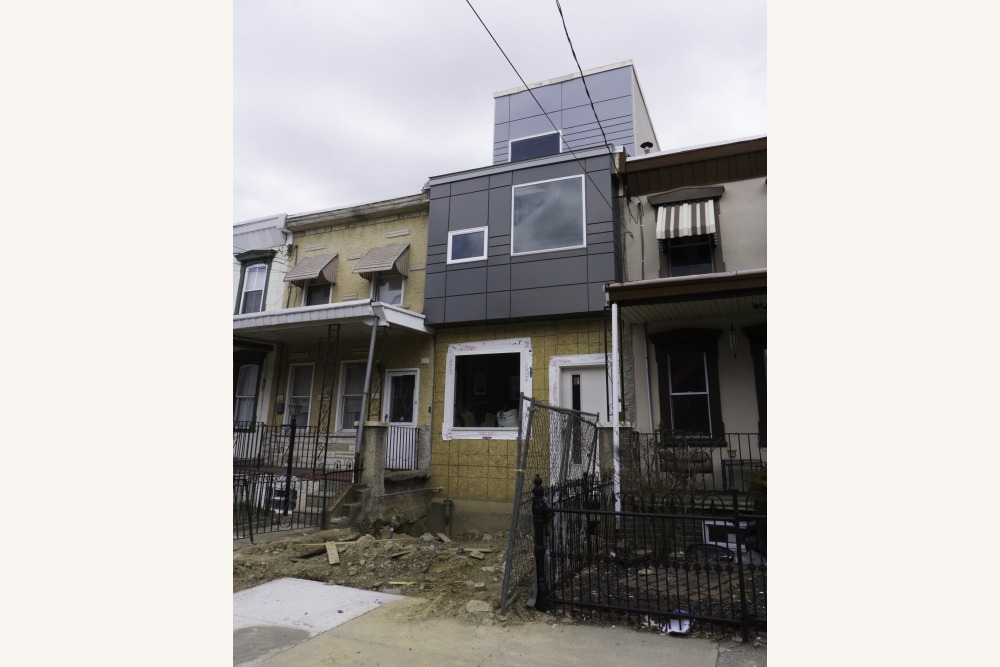
Alexander (AJ) Adriance: Architecture of Gentrification - My project documents the changing landscape of Philadelphia neighborhoods from rapid gentrification. I show this by making photographs that juxtapose the old Philadelphia row home next to the new modern style row home. This new style of architecture is a symbol of gentrification encroaching onto another block. It is a warning sign to many long-term residents that their property taxes and/or rent will be raised until they are pushed out of their homes by wealthier residents. In less than ten years, the images I took in these neighborhoods will drastically look different as older Philadelphia architecture is demolished for the modern style of architecture that is less affordable for all.
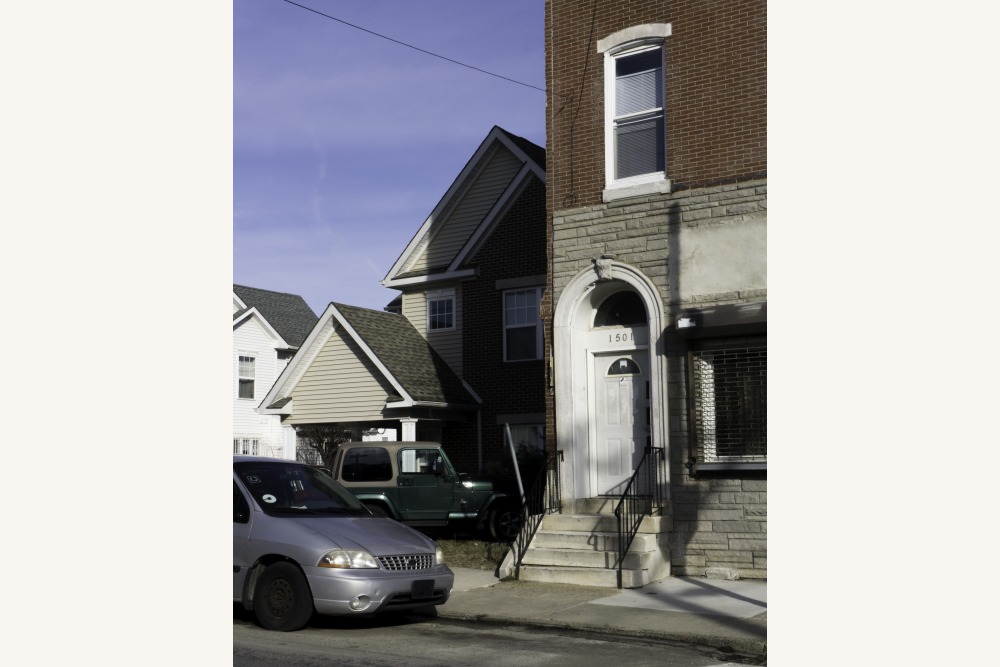
Alexander (AJ) Adriance: Architecture of Gentrification - My project documents the changing landscape of Philadelphia neighborhoods from rapid gentrification. I show this by making photographs that juxtapose the old Philadelphia row home next to the new modern style row home. This new style of architecture is a symbol of gentrification encroaching onto another block. It is a warning sign to many long-term residents that their property taxes and/or rent will be raised until they are pushed out of their homes by wealthier residents. In less than ten years, the images I took in these neighborhoods will drastically look different as older Philadelphia architecture is demolished for the modern style of architecture that is less affordable for all.
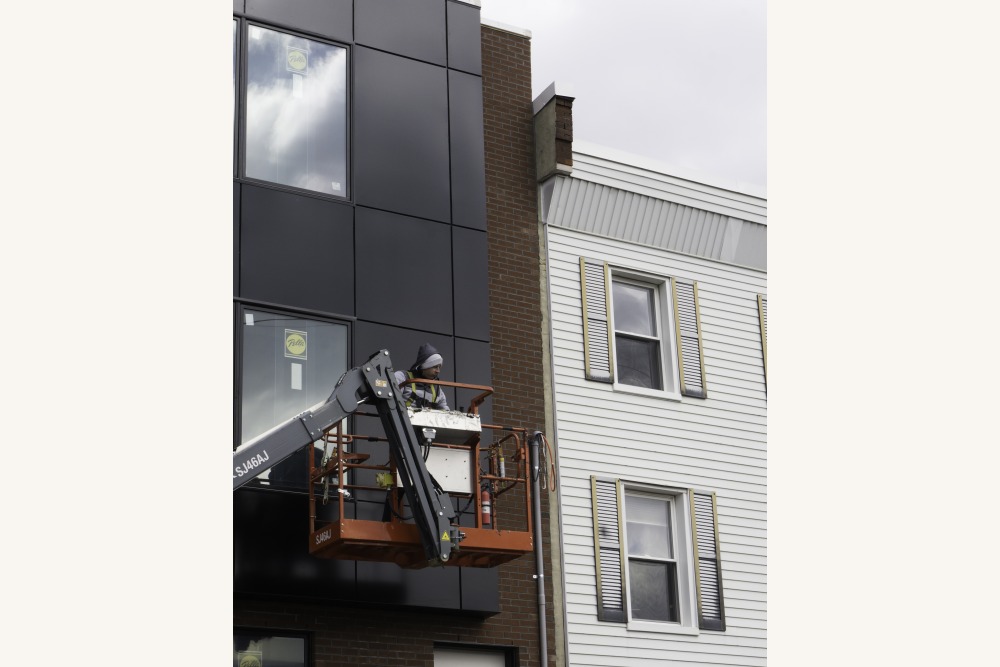
Alexander (AJ) Adriance: Architecture of Gentrification - My project documents the changing landscape of Philadelphia neighborhoods from rapid gentrification. I show this by making photographs that juxtapose the old Philadelphia row home next to the new modern style row home. This new style of architecture is a symbol of gentrification encroaching onto another block. It is a warning sign to many long-term residents that their property taxes and/or rent will be raised until they are pushed out of their homes by wealthier residents. In less than ten years, the images I took in these neighborhoods will drastically look different as older Philadelphia architecture is demolished for the modern style of architecture that is less affordable for all.
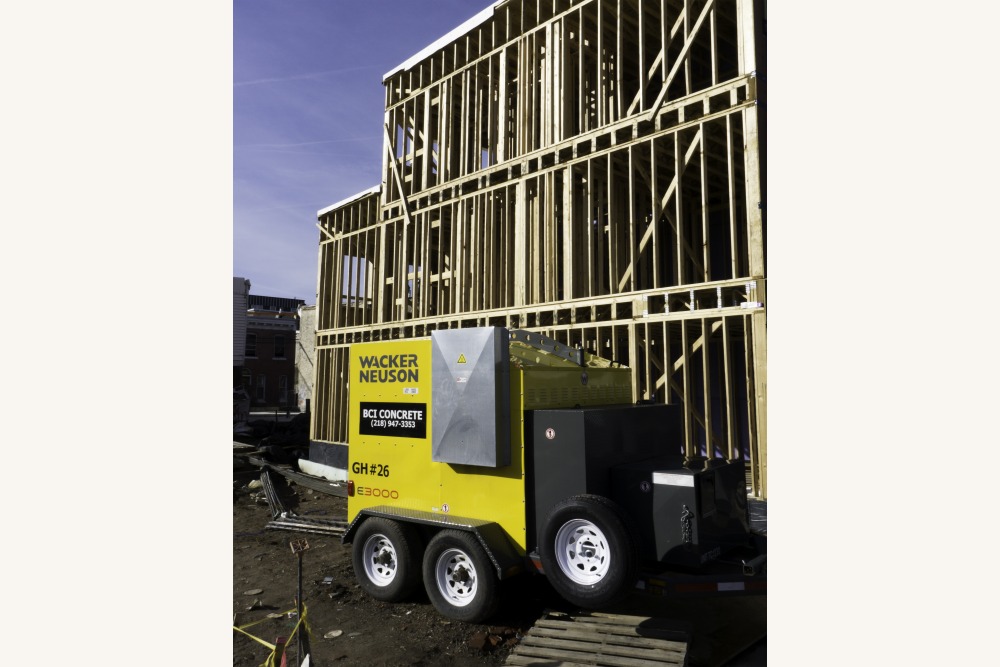
Alexander (AJ) Adriance: Architecture of Gentrification - My project documents the changing landscape of Philadelphia neighborhoods from rapid gentrification. I show this by making photographs that juxtapose the old Philadelphia row home next to the new modern style row home. This new style of architecture is a symbol of gentrification encroaching onto another block. It is a warning sign to many long-term residents that their property taxes and/or rent will be raised until they are pushed out of their homes by wealthier residents. In less than ten years, the images I took in these neighborhoods will drastically look different as older Philadelphia architecture is demolished for the modern style of architecture that is less affordable for all.
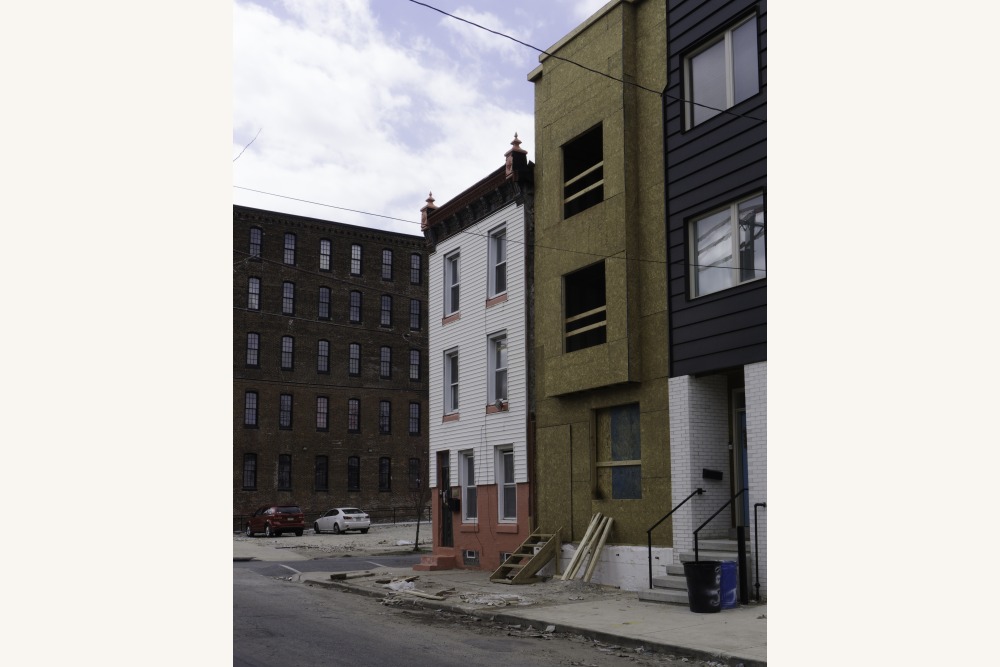
Alexander (AJ) Adriance: Architecture of Gentrification - My project documents the changing landscape of Philadelphia neighborhoods from rapid gentrification. I show this by making photographs that juxtapose the old Philadelphia row home next to the new modern style row home. This new style of architecture is a symbol of gentrification encroaching onto another block. It is a warning sign to many long-term residents that their property taxes and/or rent will be raised until they are pushed out of their homes by wealthier residents. In less than ten years, the images I took in these neighborhoods will drastically look different as older Philadelphia architecture is demolished for the modern style of architecture that is less affordable for all.
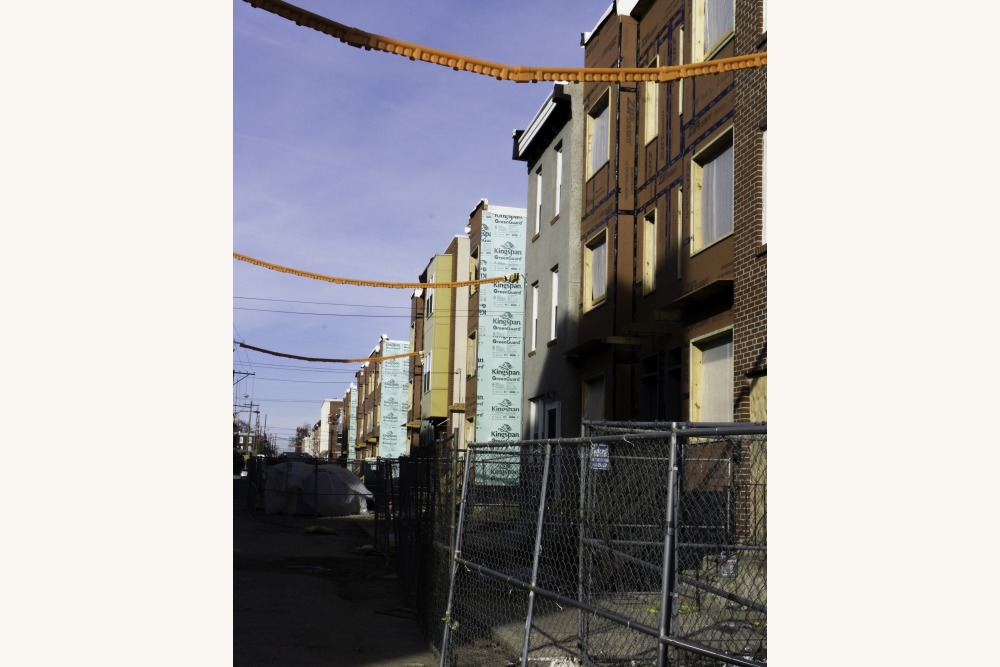
Alexander (AJ) Adriance: Architecture of Gentrification - My project documents the changing landscape of Philadelphia neighborhoods from rapid gentrification. I show this by making photographs that juxtapose the old Philadelphia row home next to the new modern style row home. This new style of architecture is a symbol of gentrification encroaching onto another block. It is a warning sign to many long-term residents that their property taxes and/or rent will be raised until they are pushed out of their homes by wealthier residents. In less than ten years, the images I took in these neighborhoods will drastically look different as older Philadelphia architecture is demolished for the modern style of architecture that is less affordable for all.
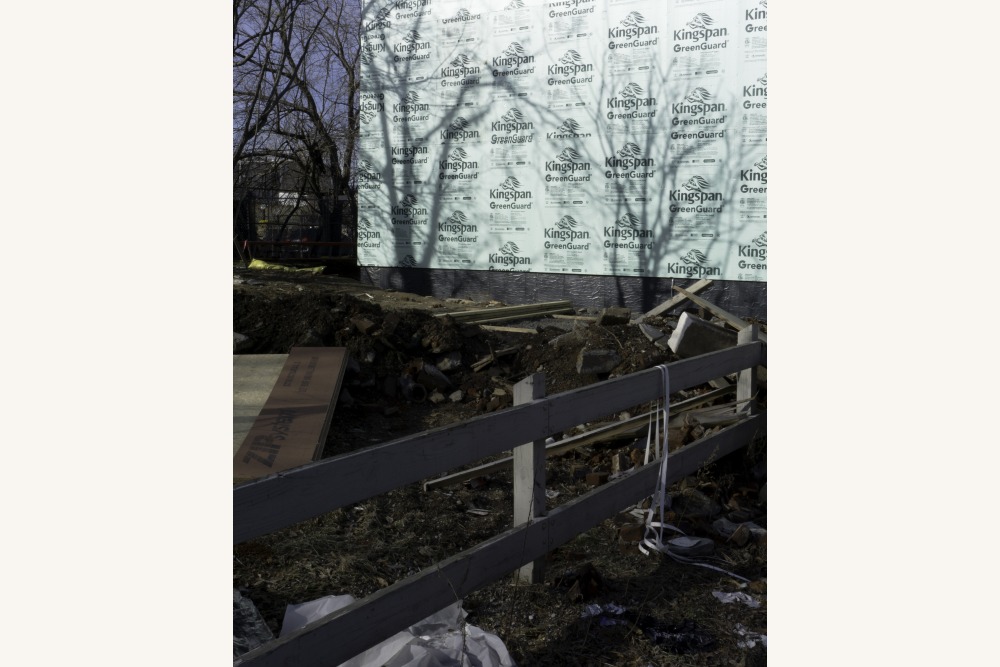
Alexander (AJ) Adriance: Architecture of Gentrification - My project documents the changing landscape of Philadelphia neighborhoods from rapid gentrification. I show this by making photographs that juxtapose the old Philadelphia row home next to the new modern style row home. This new style of architecture is a symbol of gentrification encroaching onto another block. It is a warning sign to many long-term residents that their property taxes and/or rent will be raised until they are pushed out of their homes by wealthier residents. In less than ten years, the images I took in these neighborhoods will drastically look different as older Philadelphia architecture is demolished for the modern style of architecture that is less affordable for all.
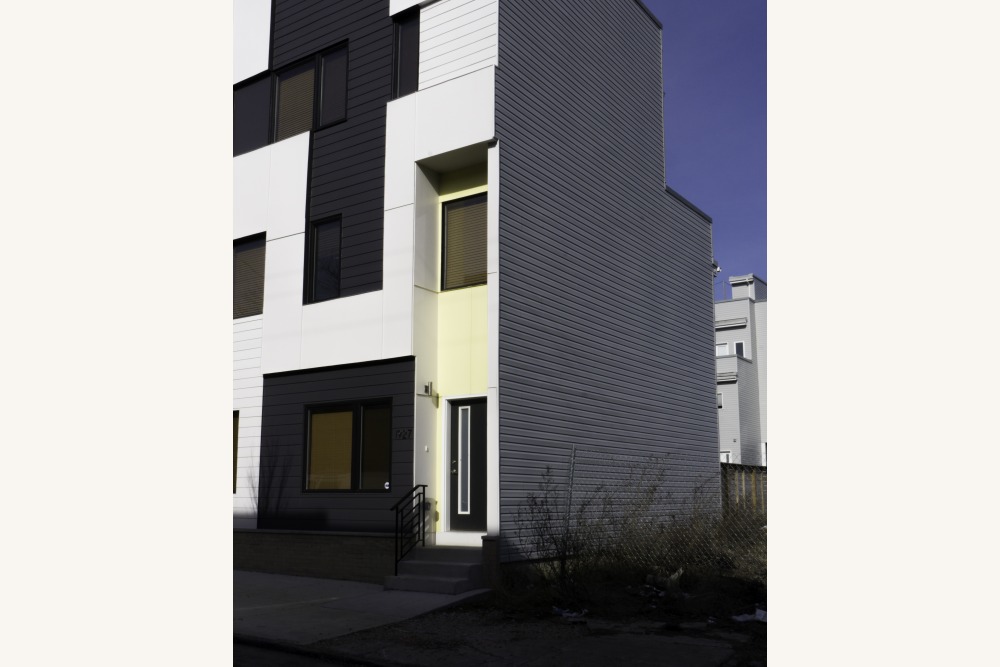
Alexander (AJ) Adriance: Architecture of Gentrification - My project documents the changing landscape of Philadelphia neighborhoods from rapid gentrification. I show this by making photographs that juxtapose the old Philadelphia row home next to the new modern style row home. This new style of architecture is a symbol of gentrification encroaching onto another block. It is a warning sign to many long-term residents that their property taxes and/or rent will be raised until they are pushed out of their homes by wealthier residents. In less than ten years, the images I took in these neighborhoods will drastically look different as older Philadelphia architecture is demolished for the modern style of architecture that is less affordable for all.
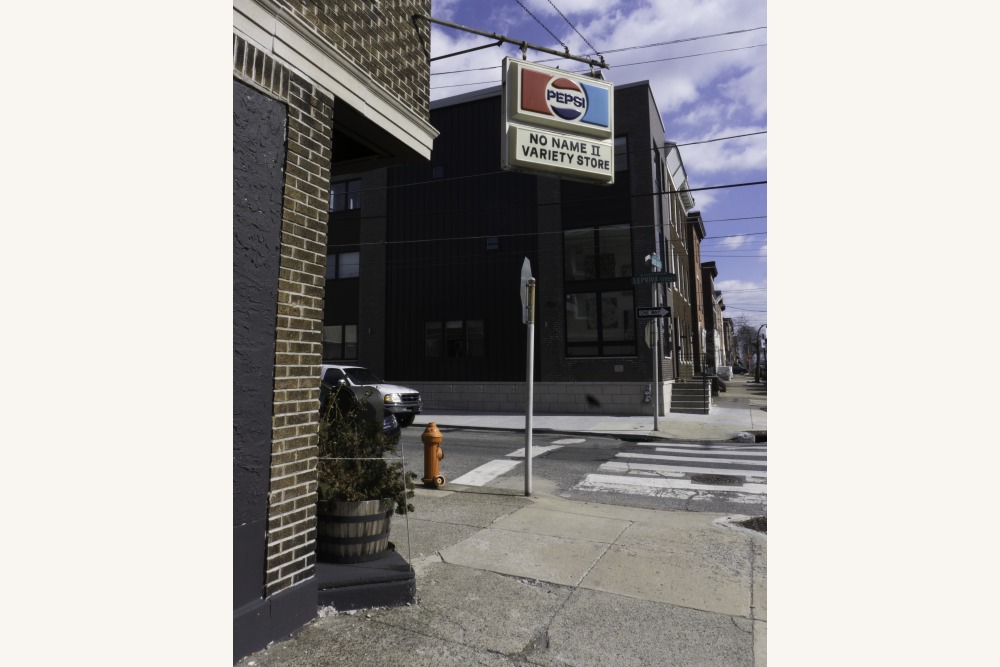
Alexander (AJ) Adriance: Architecture of Gentrification - My project documents the changing landscape of Philadelphia neighborhoods from rapid gentrification. I show this by making photographs that juxtapose the old Philadelphia row home next to the new modern style row home. This new style of architecture is a symbol of gentrification encroaching onto another block. It is a warning sign to many long-term residents that their property taxes and/or rent will be raised until they are pushed out of their homes by wealthier residents. In less than ten years, the images I took in these neighborhoods will drastically look different as older Philadelphia architecture is demolished for the modern style of architecture that is less affordable for all.
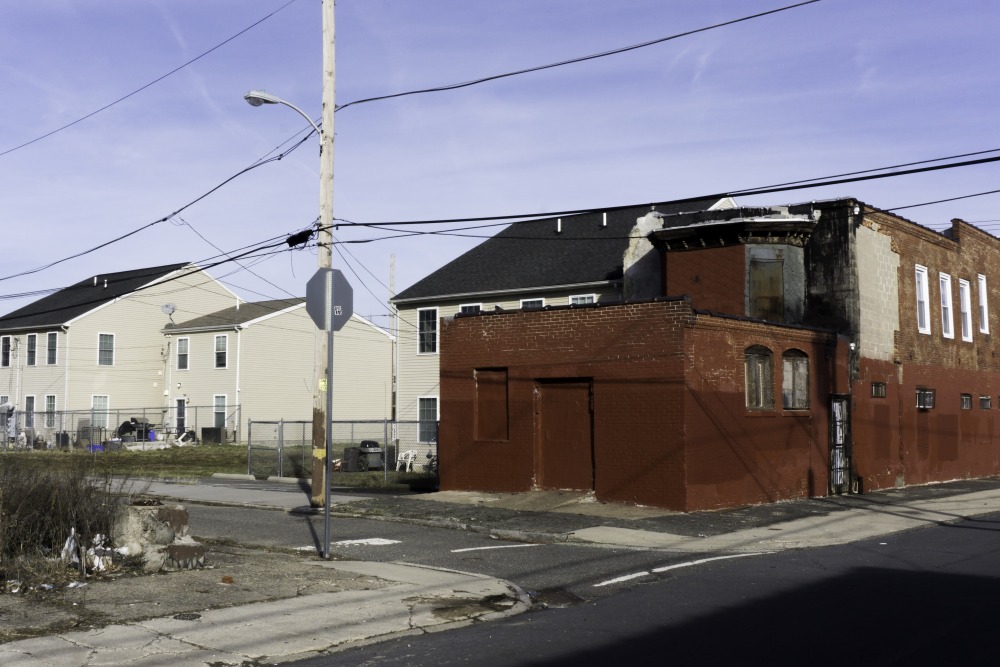
Alexander (AJ) Adriance: Architecture of Gentrification - My project documents the changing landscape of Philadelphia neighborhoods from rapid gentrification. I show this by making photographs that juxtapose the old Philadelphia row home next to the new modern style row home. This new style of architecture is a symbol of gentrification encroaching onto another block. It is a warning sign to many long-term residents that their property taxes and/or rent will be raised until they are pushed out of their homes by wealthier residents. In less than ten years, the images I took in these neighborhoods will drastically look different as older Philadelphia architecture is demolished for the modern style of architecture that is less affordable for all.
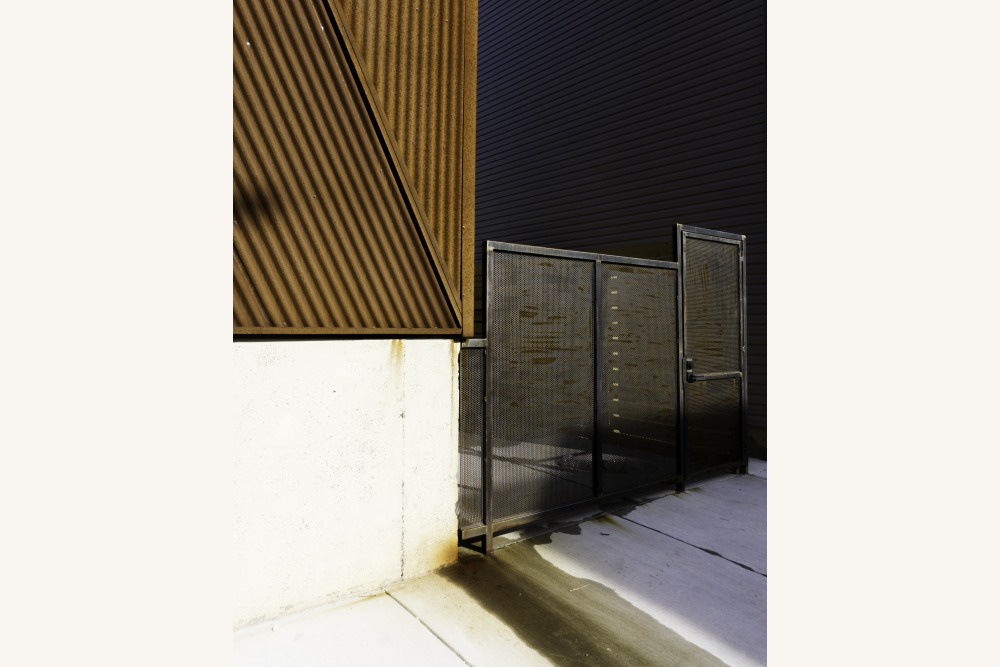
Alexander (AJ) Adriance: Architecture of Gentrification - My project documents the changing landscape of Philadelphia neighborhoods from rapid gentrification. I show this by making photographs that juxtapose the old Philadelphia row home next to the new modern style row home. This new style of architecture is a symbol of gentrification encroaching onto another block. It is a warning sign to many long-term residents that their property taxes and/or rent will be raised until they are pushed out of their homes by wealthier residents. In less than ten years, the images I took in these neighborhoods will drastically look different as older Philadelphia architecture is demolished for the modern style of architecture that is less affordable for all.
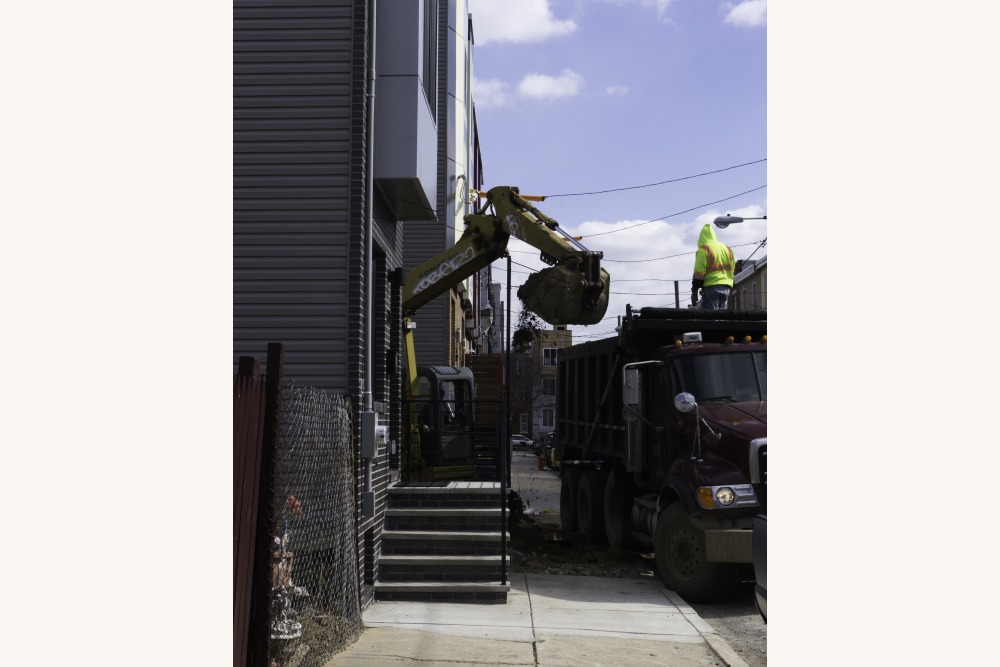
Alexander (AJ) Adriance: Architecture of Gentrification - My project documents the changing landscape of Philadelphia neighborhoods from rapid gentrification. I show this by making photographs that juxtapose the old Philadelphia row home next to the new modern style row home. This new style of architecture is a symbol of gentrification encroaching onto another block. It is a warning sign to many long-term residents that their property taxes and/or rent will be raised until they are pushed out of their homes by wealthier residents. In less than ten years, the images I took in these neighborhoods will drastically look different as older Philadelphia architecture is demolished for the modern style of architecture that is less affordable for all.
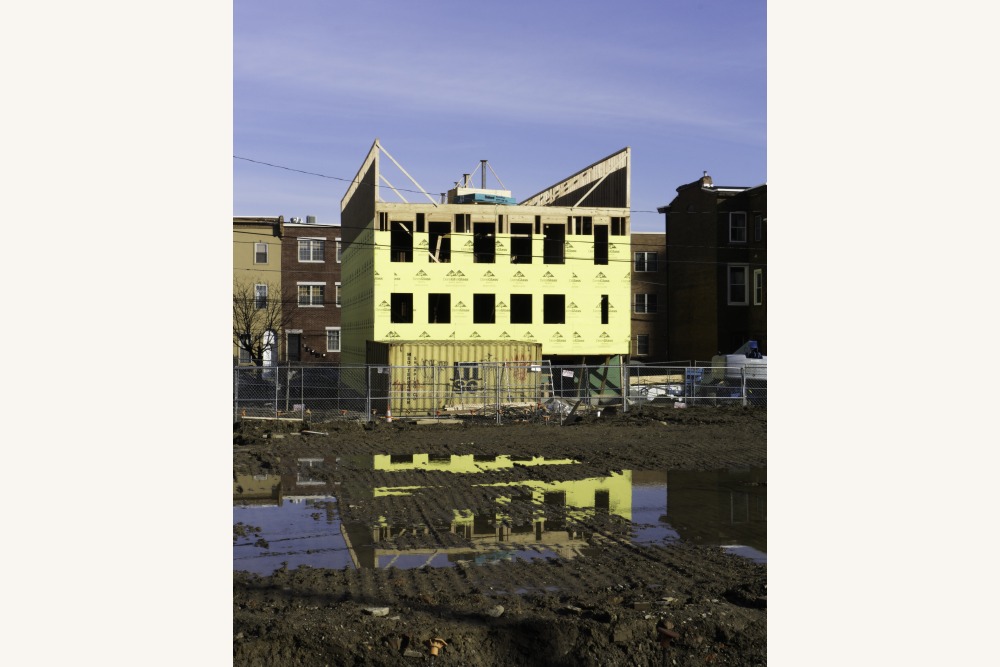
Alexander (AJ) Adriance: Architecture of Gentrification - My project documents the changing landscape of Philadelphia neighborhoods from rapid gentrification. I show this by making photographs that juxtapose the old Philadelphia row home next to the new modern style row home. This new style of architecture is a symbol of gentrification encroaching onto another block. It is a warning sign to many long-term residents that their property taxes and/or rent will be raised until they are pushed out of their homes by wealthier residents. In less than ten years, the images I took in these neighborhoods will drastically look different as older Philadelphia architecture is demolished for the modern style of architecture that is less affordable for all.
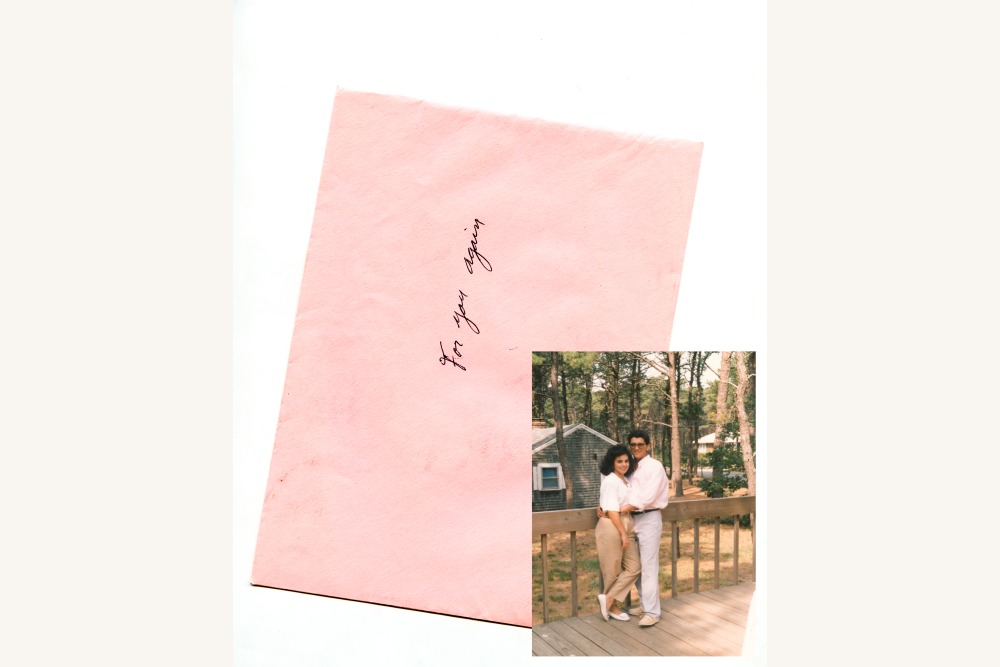
AnaMaria Garcia: Love Letters - Love Letters is an exploration of my parents' relationship during their courtship into the beginnings of their marriage. I took letters that they wrote to one another while my father was away at school between the years of 1984 and 1988 as well as used images taken of them during this time. Both of my parents immigrated to this country from the Dominican Republic but met one another in New York. The illustrations of their love story are in both English and Spanish, showing the viewer a glimpse into their relationship as bilingual individuals. The blank space in these images represents the space between them during this time that they couldn’t speak to one another everyday. It allows the viewer to interpret the time between them talking and the obstacles they faced only at the beginning while the unknown of the future remained.
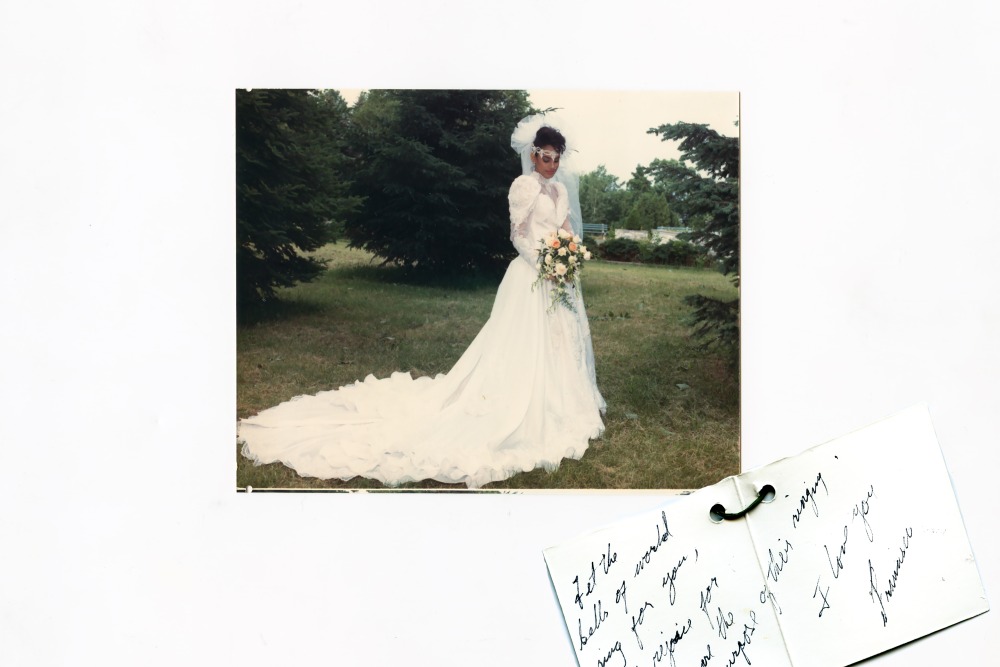
AnaMaria Garcia: Love Letters - Love Letters is an exploration of my parents' relationship during their courtship into the beginnings of their marriage. I took letters that they wrote to one another while my father was away at school between the years of 1984 and 1988 as well as used images taken of them during this time. Both of my parents immigrated to this country from the Dominican Republic but met one another in New York. The illustrations of their love story are in both English and Spanish, showing the viewer a glimpse into their relationship as bilingual individuals. The blank space in these images represents the space between them during this time that they couldn’t speak to one another everyday. It allows the viewer to interpret the time between them talking and the obstacles they faced only at the beginning while the unknown of the future remained.
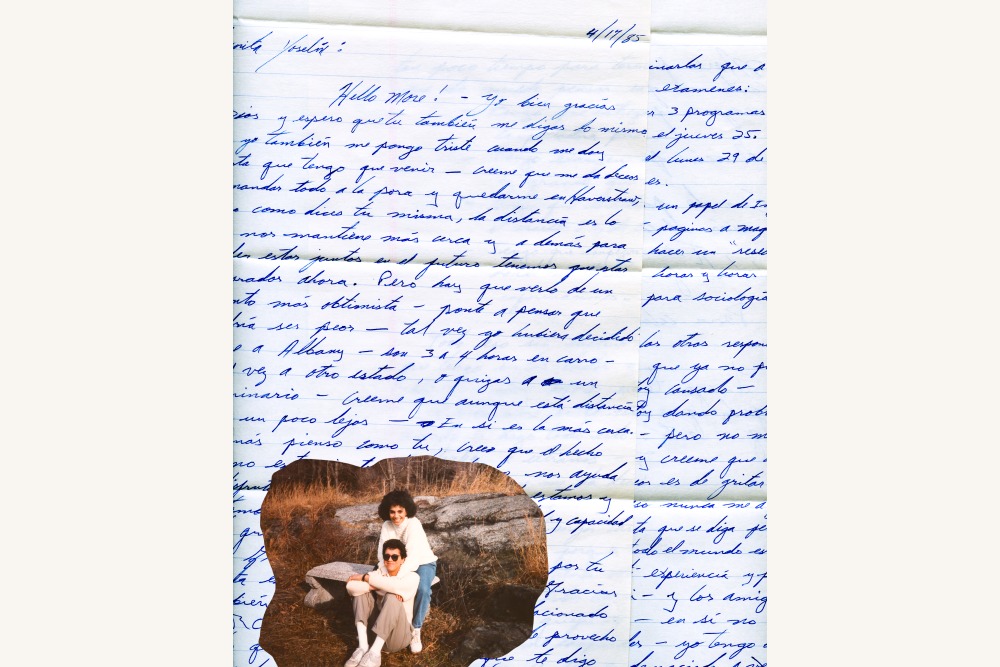
AnaMaria Garcia: Love Letters - Love Letters is an exploration of my parents' relationship during their courtship into the beginnings of their marriage. I took letters that they wrote to one another while my father was away at school between the years of 1984 and 1988 as well as used images taken of them during this time. Both of my parents immigrated to this country from the Dominican Republic but met one another in New York. The illustrations of their love story are in both English and Spanish, showing the viewer a glimpse into their relationship as bilingual individuals. The blank space in these images represents the space between them during this time that they couldn’t speak to one another everyday. It allows the viewer to interpret the time between them talking and the obstacles they faced only at the beginning while the unknown of the future remained.
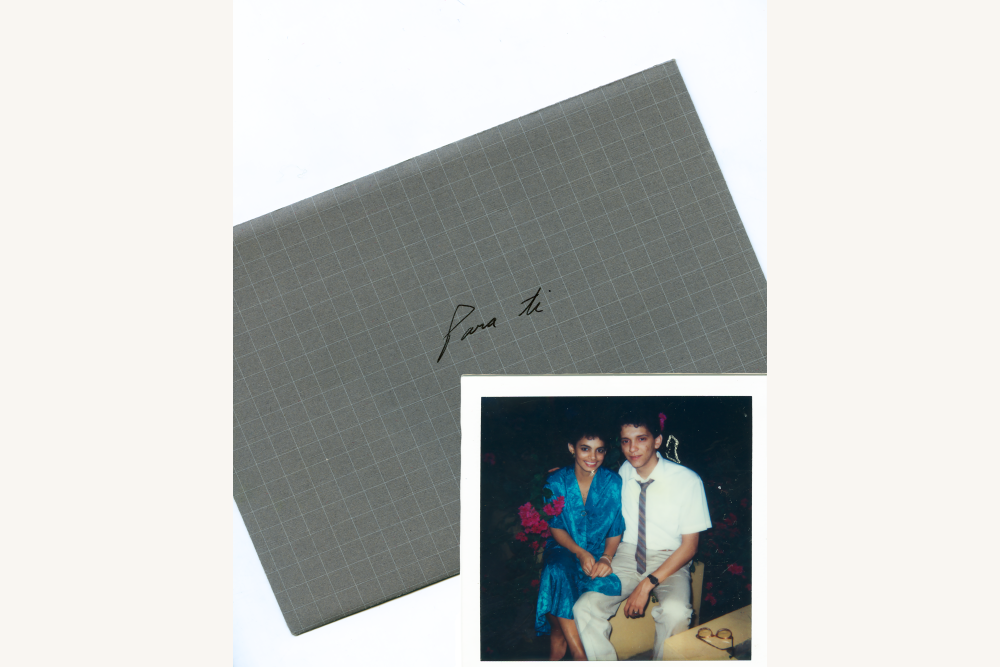
AnaMaria Garcia: Love Letters - Love Letters is an exploration of my parents' relationship during their courtship into the beginnings of their marriage. I took letters that they wrote to one another while my father was away at school between the years of 1984 and 1988 as well as used images taken of them during this time. Both of my parents immigrated to this country from the Dominican Republic but met one another in New York. The illustrations of their love story are in both English and Spanish, showing the viewer a glimpse into their relationship as bilingual individuals. The blank space in these images represents the space between them during this time that they couldn’t speak to one another everyday. It allows the viewer to interpret the time between them talking and the obstacles they faced only at the beginning while the unknown of the future remained.
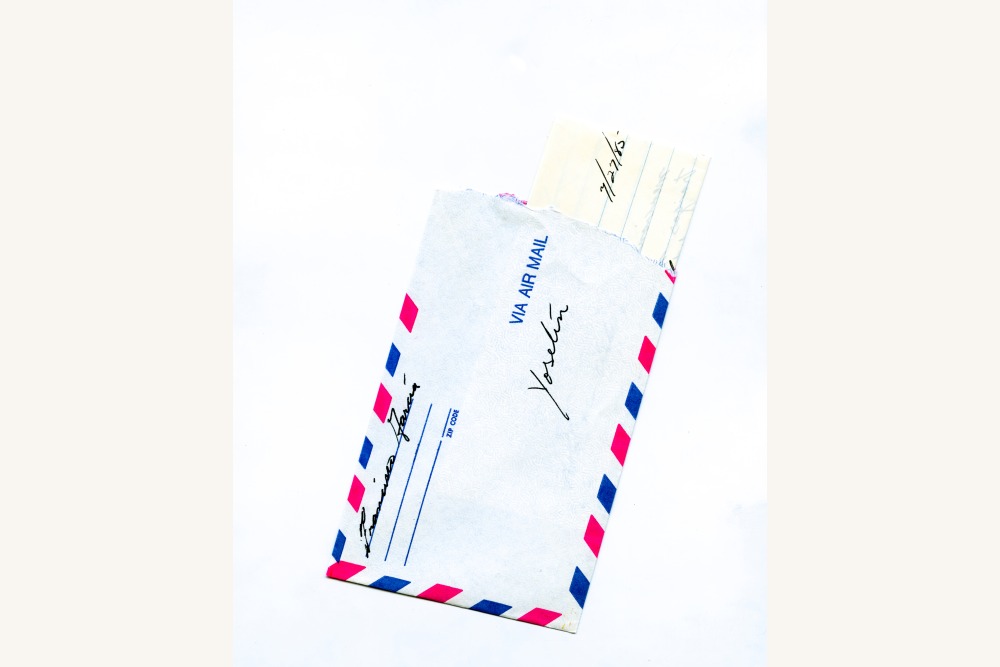
AnaMaria Garcia: Love Letters - Love Letters is an exploration of my parents' relationship during their courtship into the beginnings of their marriage. I took letters that they wrote to one another while my father was away at school between the years of 1984 and 1988 as well as used images taken of them during this time. Both of my parents immigrated to this country from the Dominican Republic but met one another in New York. The illustrations of their love story are in both English and Spanish, showing the viewer a glimpse into their relationship as bilingual individuals. The blank space in these images represents the space between them during this time that they couldn’t speak to one another everyday. It allows the viewer to interpret the time between them talking and the obstacles they faced only at the beginning while the unknown of the future remained.
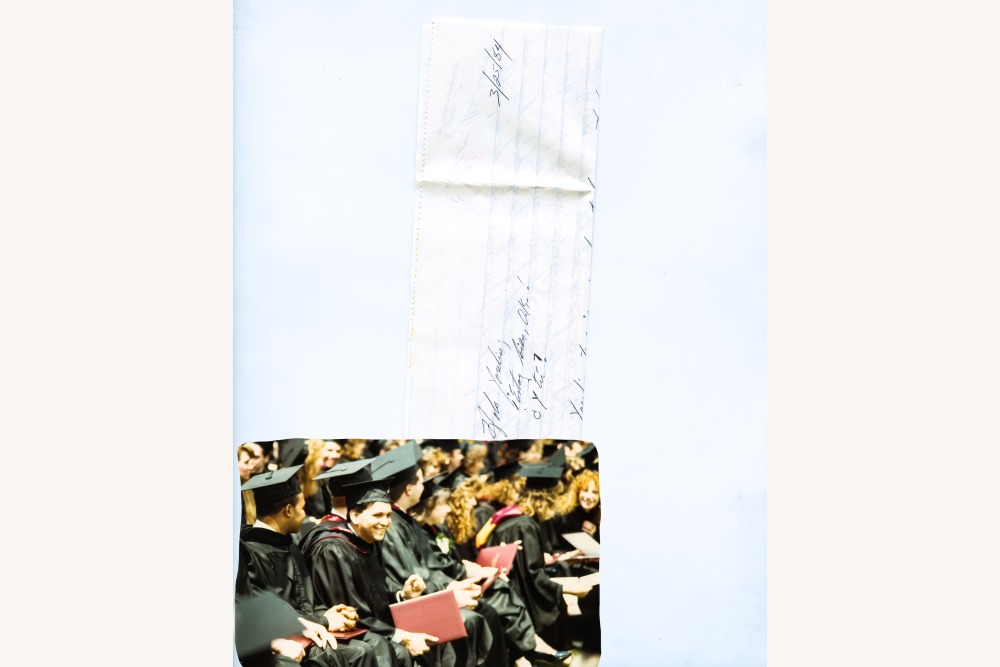
AnaMaria Garcia: Love Letters - Love Letters is an exploration of my parents' relationship during their courtship into the beginnings of their marriage. I took letters that they wrote to one another while my father was away at school between the years of 1984 and 1988 as well as used images taken of them during this time. Both of my parents immigrated to this country from the Dominican Republic but met one another in New York. The illustrations of their love story are in both English and Spanish, showing the viewer a glimpse into their relationship as bilingual individuals. The blank space in these images represents the space between them during this time that they couldn’t speak to one another everyday. It allows the viewer to interpret the time between them talking and the obstacles they faced only at the beginning while the unknown of the future remained.
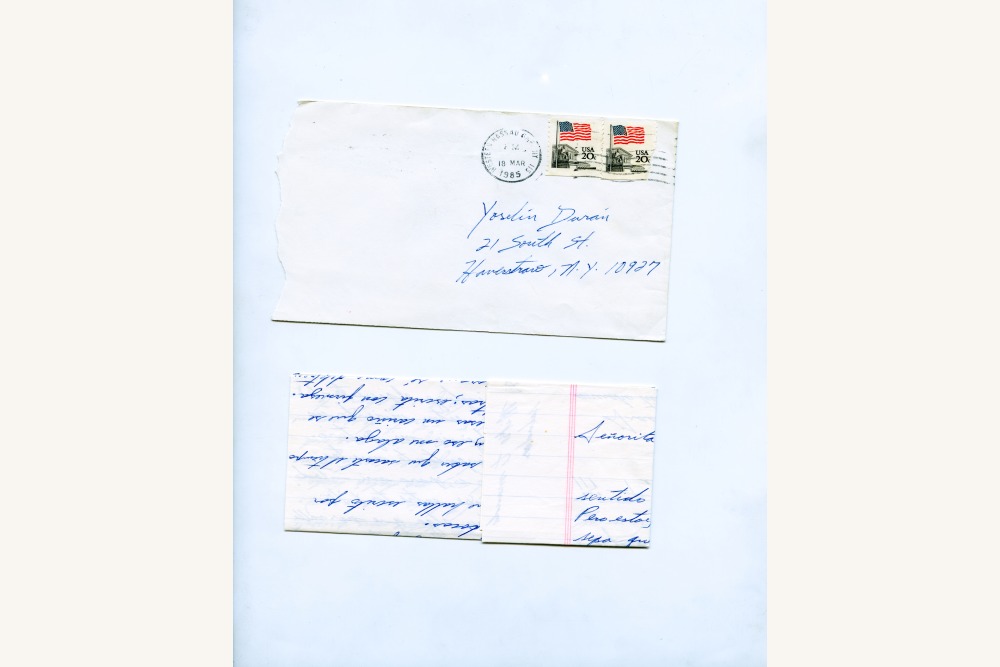
AnaMaria Garcia: Love Letters - Love Letters is an exploration of my parents' relationship during their courtship into the beginnings of their marriage. I took letters that they wrote to one another while my father was away at school between the years of 1984 and 1988 as well as used images taken of them during this time. Both of my parents immigrated to this country from the Dominican Republic but met one another in New York. The illustrations of their love story are in both English and Spanish, showing the viewer a glimpse into their relationship as bilingual individuals. The blank space in these images represents the space between them during this time that they couldn’t speak to one another everyday. It allows the viewer to interpret the time between them talking and the obstacles they faced only at the beginning while the unknown of the future remained.
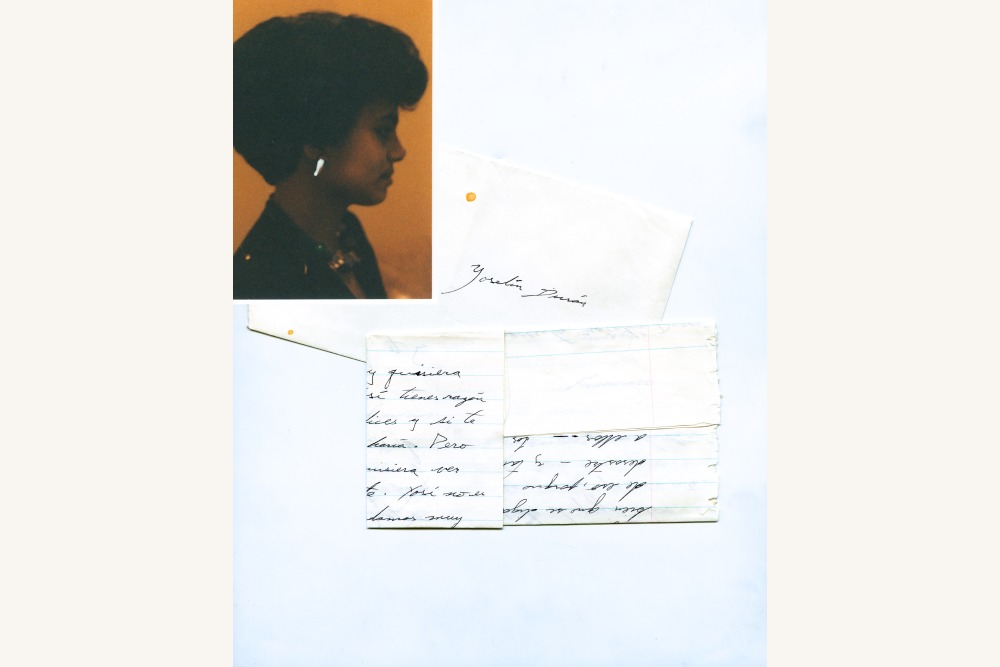
AnaMaria Garcia: Love Letters - Love Letters is an exploration of my parents' relationship during their courtship into the beginnings of their marriage. I took letters that they wrote to one another while my father was away at school between the years of 1984 and 1988 as well as used images taken of them during this time. Both of my parents immigrated to this country from the Dominican Republic but met one another in New York. The illustrations of their love story are in both English and Spanish, showing the viewer a glimpse into their relationship as bilingual individuals. The blank space in these images represents the space between them during this time that they couldn’t speak to one another everyday. It allows the viewer to interpret the time between them talking and the obstacles they faced only at the beginning while the unknown of the future remained.
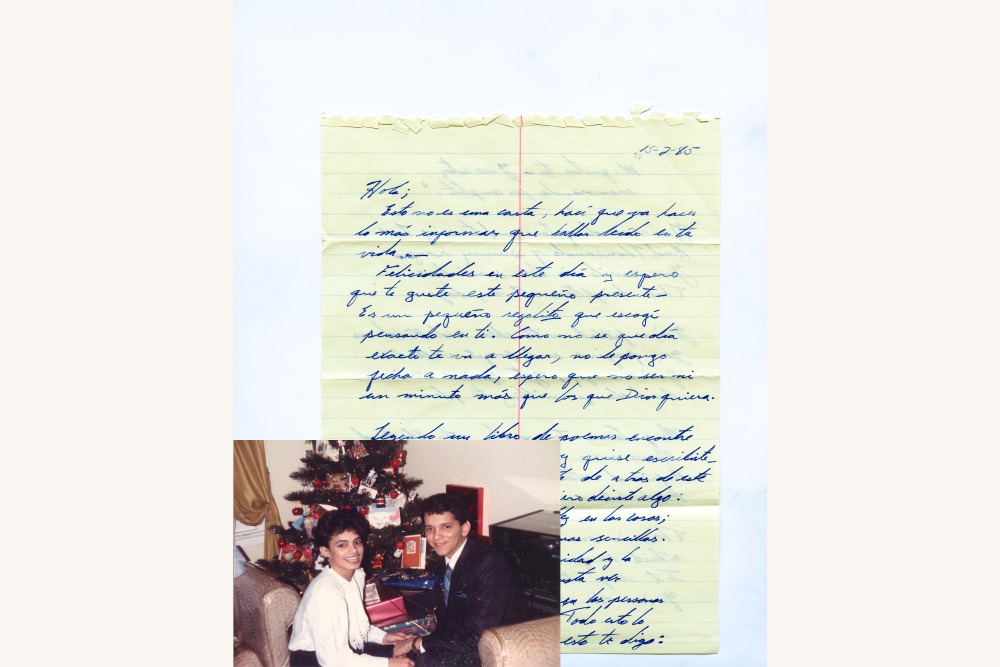
AnaMaria Garcia: Love Letters - Love Letters is an exploration of my parents' relationship during their courtship into the beginnings of their marriage. I took letters that they wrote to one another while my father was away at school between the years of 1984 and 1988 as well as used images taken of them during this time. Both of my parents immigrated to this country from the Dominican Republic but met one another in New York. The illustrations of their love story are in both English and Spanish, showing the viewer a glimpse into their relationship as bilingual individuals. The blank space in these images represents the space between them during this time that they couldn’t speak to one another everyday. It allows the viewer to interpret the time between them talking and the obstacles they faced only at the beginning while the unknown of the future remained.
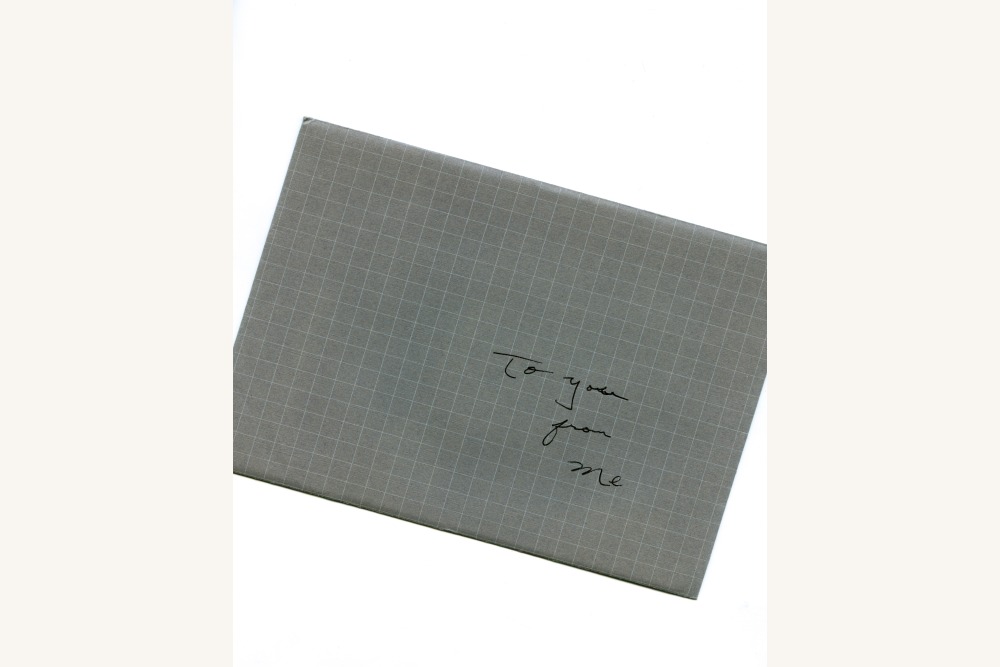
AnaMaria Garcia: Love Letters - Love Letters is an exploration of my parents' relationship during their courtship into the beginnings of their marriage. I took letters that they wrote to one another while my father was away at school between the years of 1984 and 1988 as well as used images taken of them during this time. Both of my parents immigrated to this country from the Dominican Republic but met one another in New York. The illustrations of their love story are in both English and Spanish, showing the viewer a glimpse into their relationship as bilingual individuals. The blank space in these images represents the space between them during this time that they couldn’t speak to one another everyday. It allows the viewer to interpret the time between them talking and the obstacles they faced only at the beginning while the unknown of the future remained.
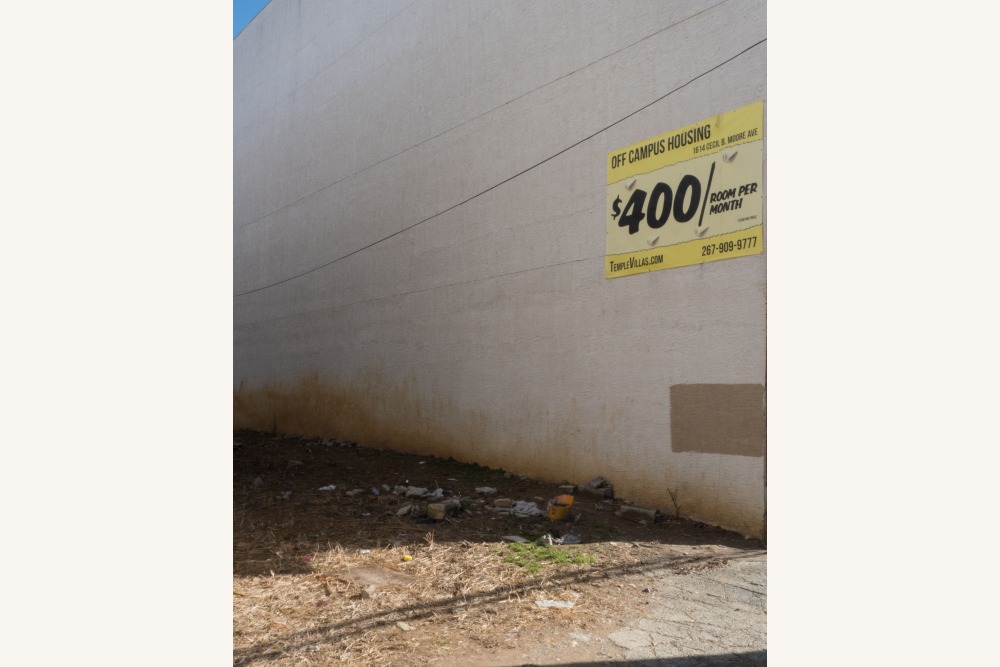
Bridget McKenna: Cheap Rent - In this series of images, I attempted to capture the mounting tensions between the influx of Temple University students and original community members of the North Central/ Cecil B. Moore area. As Temple continues to accept more and more students, cheap housing is being built to accommodate off campus housing. The community is now scattered with Temple flags, cafes, and new architecture, standing out against the old and often rundown homes. It is clearly apparent that Temple is focused on expanding rather than respecting the original community or trying to communicate and integrate.
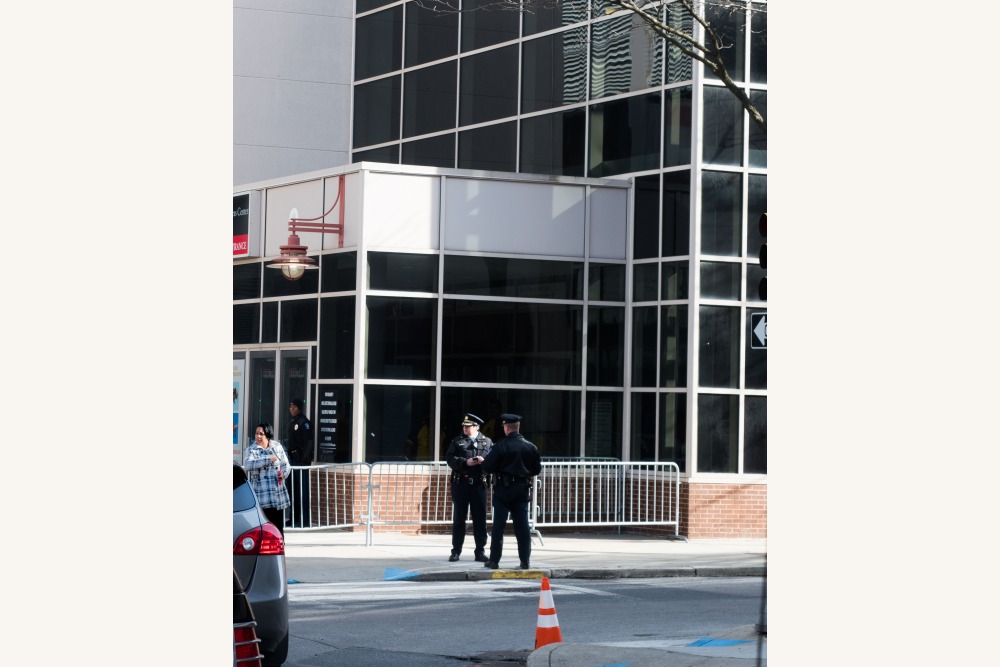
Bridget McKenna: Cops in Front of Morgan Hall - In this series of images, I attempted to capture the mounting tensions between the influx of Temple University students and original community members of the North Central/ Cecil B. Moore area. As Temple continues to accept more and more students, cheap housing is being built to accommodate off campus housing. The community is now scattered with Temple flags, cafes, and new architecture, standing out against the old and often rundown homes. It is clearly apparent that Temple is focused on expanding rather than respecting the original community or trying to communicate and integrate.
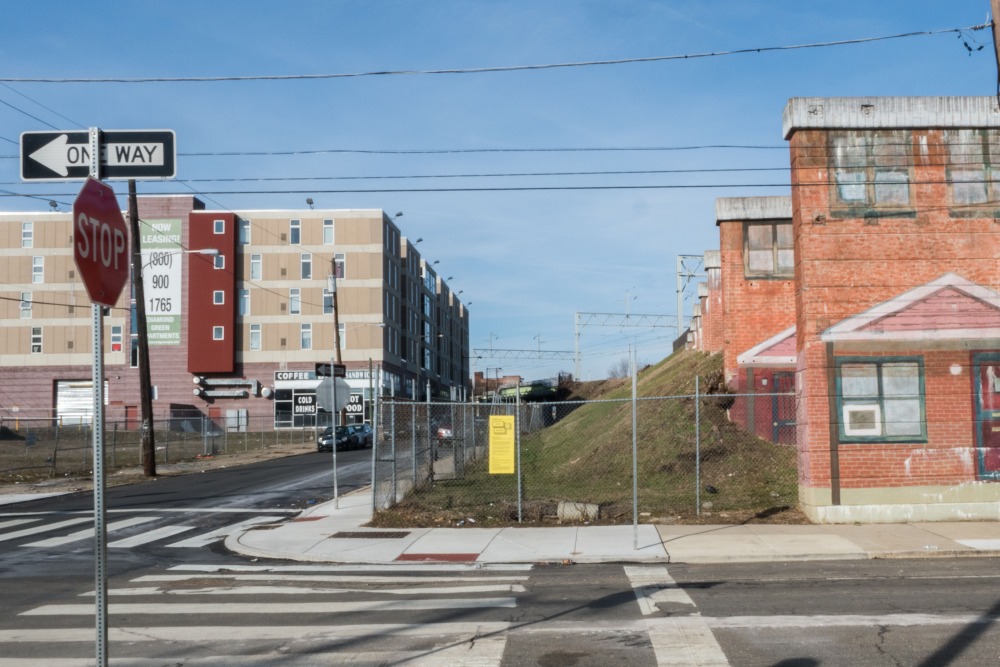
Bridget McKenna: End of Temple Police Patrolled Area - In this series of images, I attempted to capture the mounting tensions between the influx of Temple University students and original community members of the North Central/ Cecil B. Moore area. As Temple continues to accept more and more students, cheap housing is being built to accommodate off campus housing. The community is now scattered with Temple flags, cafes, and new architecture, standing out against the old and often rundown homes. It is clearly apparent that Temple is focused on expanding rather than respecting the original community or trying to communicate and integrate.
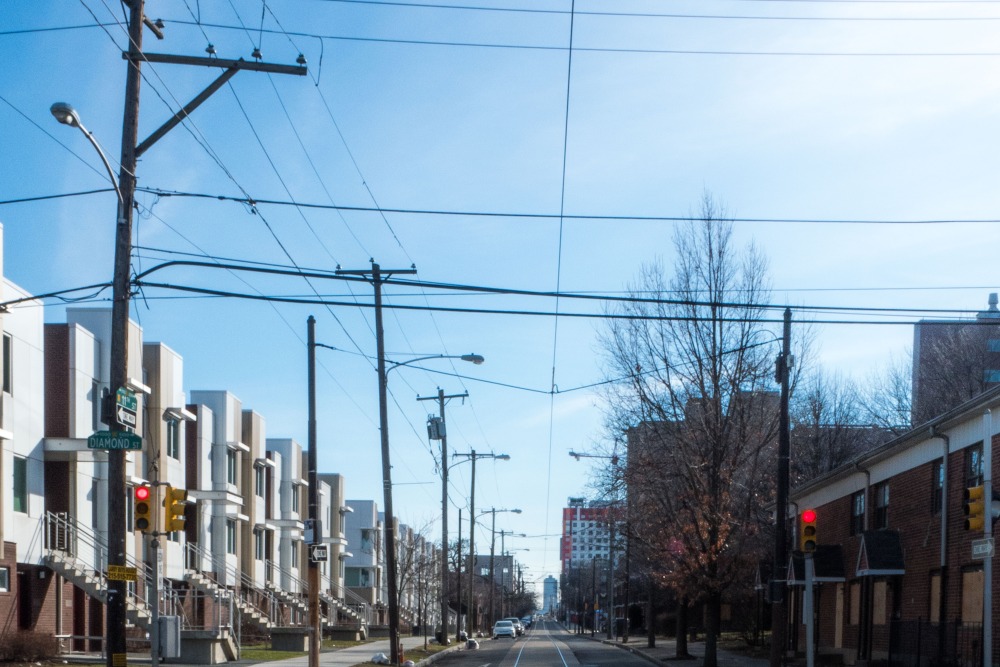
Bridget McKenna: Face Off - In this series of images, I attempted to capture the mounting tensions between the influx of Temple University students and original community members of the North Central/ Cecil B. Moore area. As Temple continues to accept more and more students, cheap housing is being built to accommodate off campus housing. The community is now scattered with Temple flags, cafes, and new architecture, standing out against the old and often rundown homes. It is clearly apparent that Temple is focused on expanding rather than respecting the original community or trying to communicate and integrate.
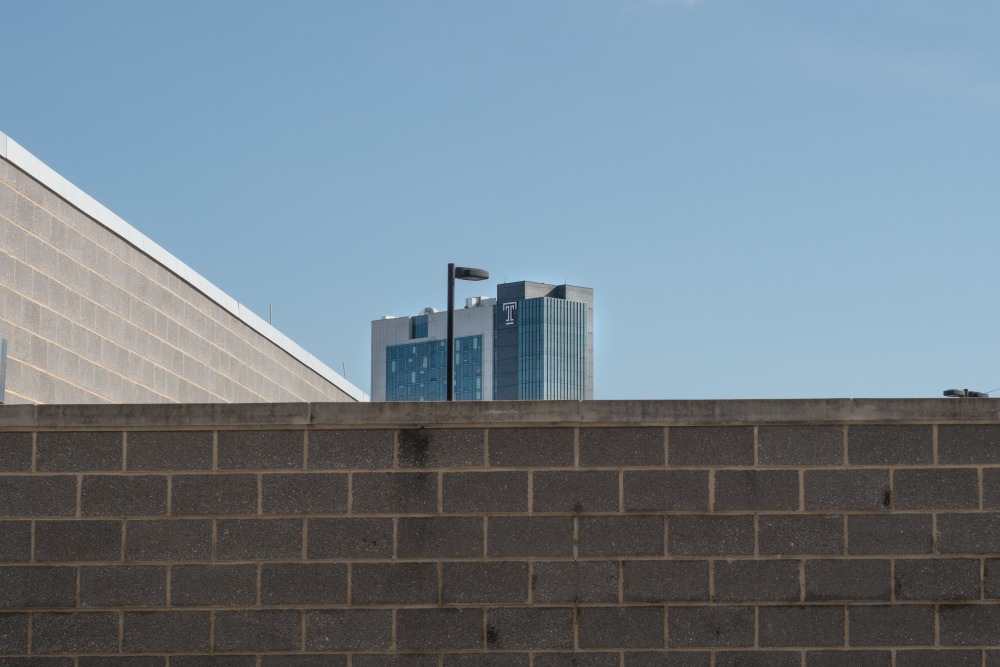
Bridget McKenna: Morgan Hall from 16th Street - In this series of images, I attempted to capture the mounting tensions between the influx of Temple University students and original community members of the North Central/ Cecil B. Moore area. As Temple continues to accept more and more students, cheap housing is being built to accommodate off campus housing. The community is now scattered with Temple flags, cafes, and new architecture, standing out against the old and often rundown homes. It is clearly apparent that Temple is focused on expanding rather than respecting the original community or trying to communicate and integrate.
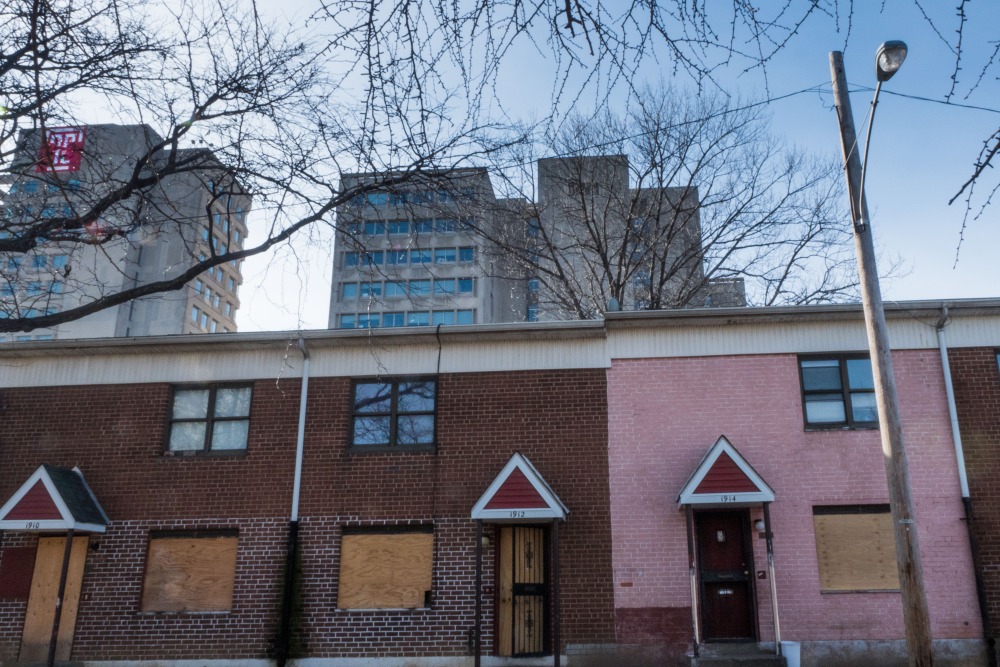
Bridget McKenna: Morgan Hall from Norris Public Housing - In this series of images, I attempted to capture the mounting tensions between the influx of Temple University students and original community members of the North Central/ Cecil B. Moore area. As Temple continues to accept more and more students, cheap housing is being built to accommodate off campus housing. The community is now scattered with Temple flags, cafes, and new architecture, standing out against the old and often rundown homes. It is clearly apparent that Temple is focused on expanding rather than respecting the original community or trying to communicate and integrate.
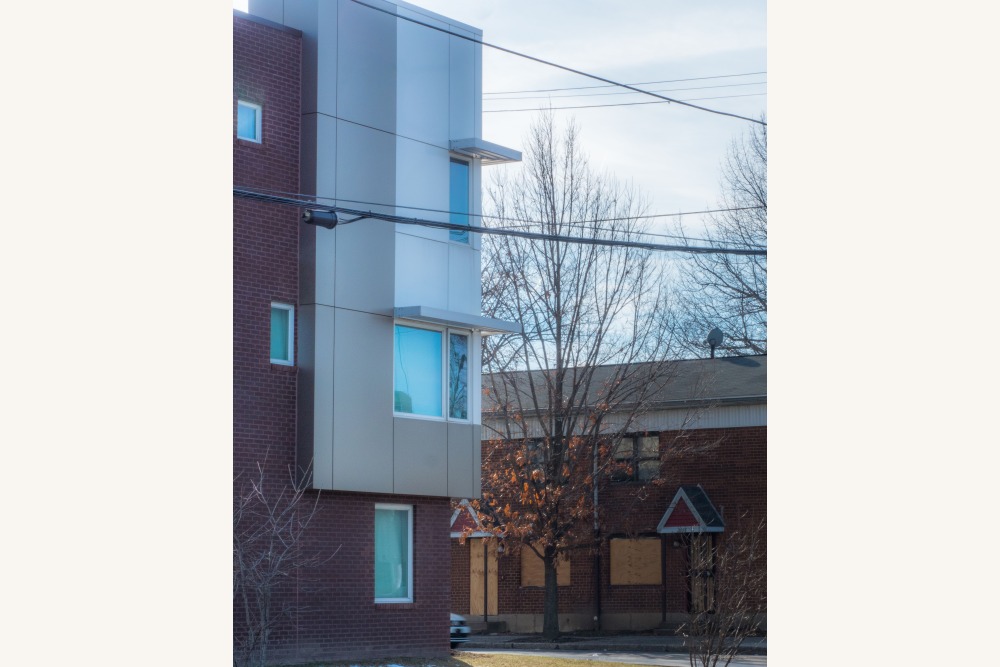
Bridget McKenna: New House in Front of Foreclosed Norris Public Housing - In this series of images, I attempted to capture the mounting tensions between the influx of Temple University students and original community members of the North Central/ Cecil B. Moore area. As Temple continues to accept more and more students, cheap housing is being built to accommodate off campus housing. The community is now scattered with Temple flags, cafes, and new architecture, standing out against the old and often rundown homes. It is clearly apparent that Temple is focused on expanding rather than respecting the original community or trying to communicate and integrate.
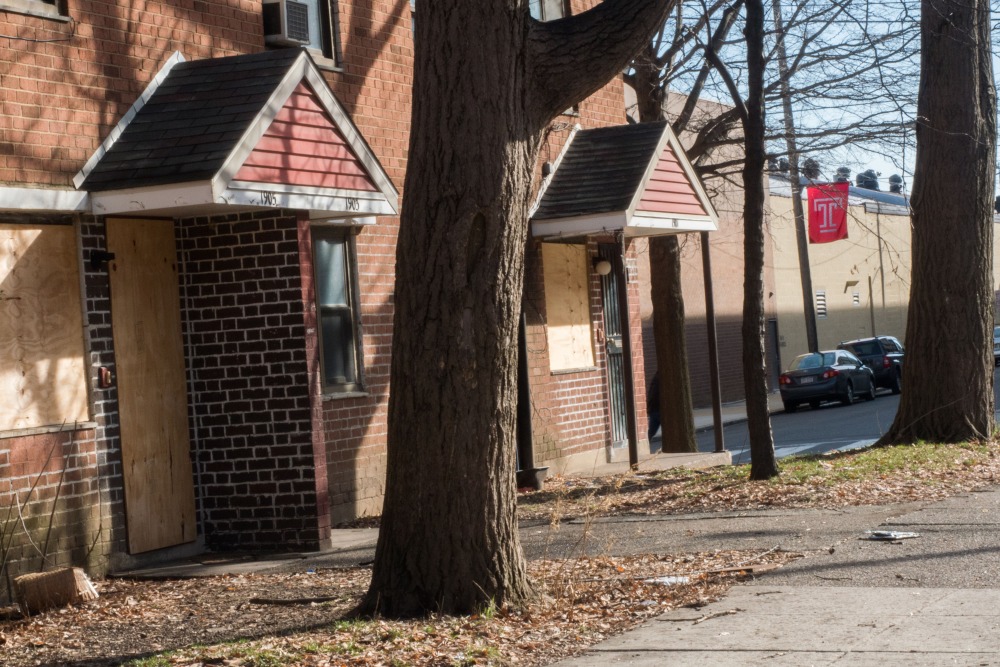
Bridget McKenna: Norris Public Housing - In this series of images, I attempted to capture the mounting tensions between the influx of Temple University students and original community members of the North Central/ Cecil B. Moore area. As Temple continues to accept more and more students, cheap housing is being built to accommodate off campus housing. The community is now scattered with Temple flags, cafes, and new architecture, standing out against the old and often rundown homes. It is clearly apparent that Temple is focused on expanding rather than respecting the original community or trying to communicate and integrate.
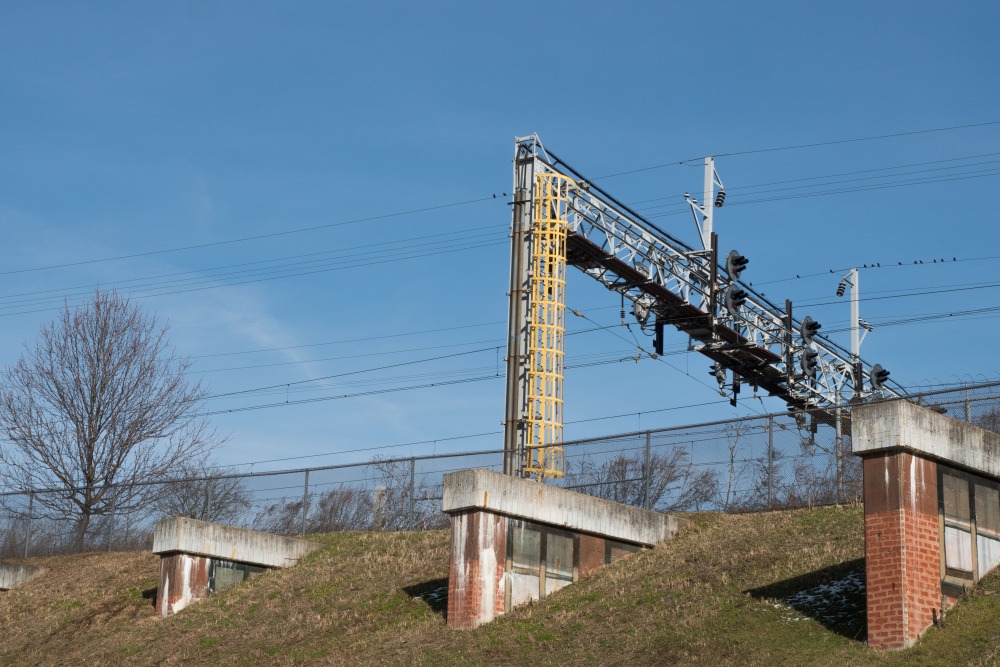
Bridget McKenna: Pushed Out - In this series of images, I attempted to capture the mounting tensions between the influx of Temple University students and original community members of the North Central/ Cecil B. Moore area. As Temple continues to accept more and more students, cheap housing is being built to accommodate off campus housing. The community is now scattered with Temple flags, cafes, and new architecture, standing out against the old and often rundown homes. It is clearly apparent that Temple is focused on expanding rather than respecting the original community or trying to communicate and integrate.
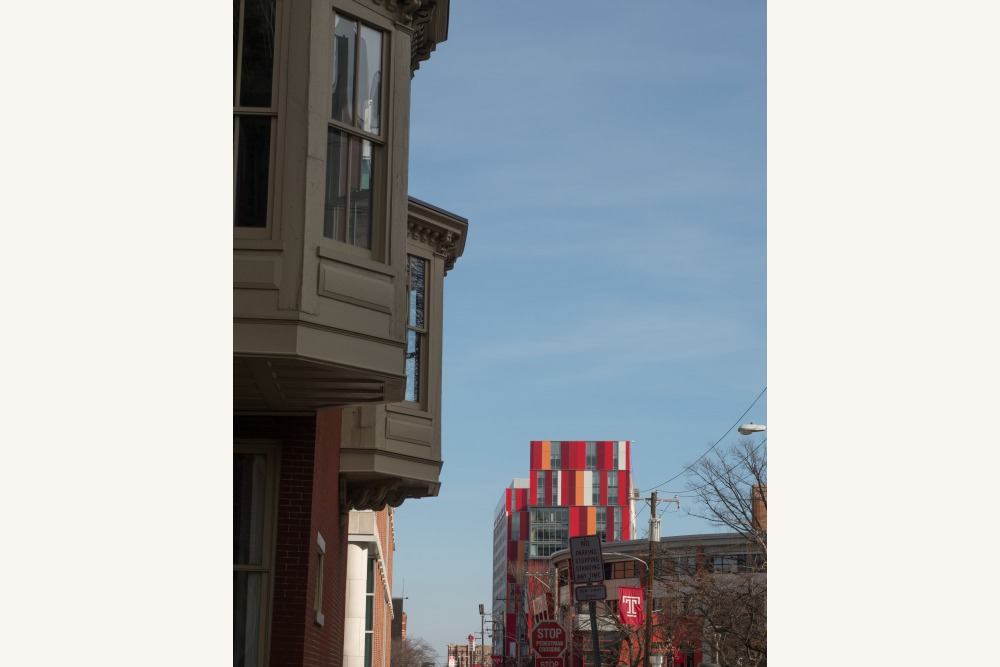
Bridget McKenna: Temple Expands - In this series of images, I attempted to capture the mounting tensions between the influx of Temple University students and original community members of the North Central/ Cecil B. Moore area. As Temple continues to accept more and more students, cheap housing is being built to accommodate off campus housing. The community is now scattered with Temple flags, cafes, and new architecture, standing out against the old and often rundown homes. It is clearly apparent that Temple is focused on expanding rather than respecting the original community or trying to communicate and integrate.
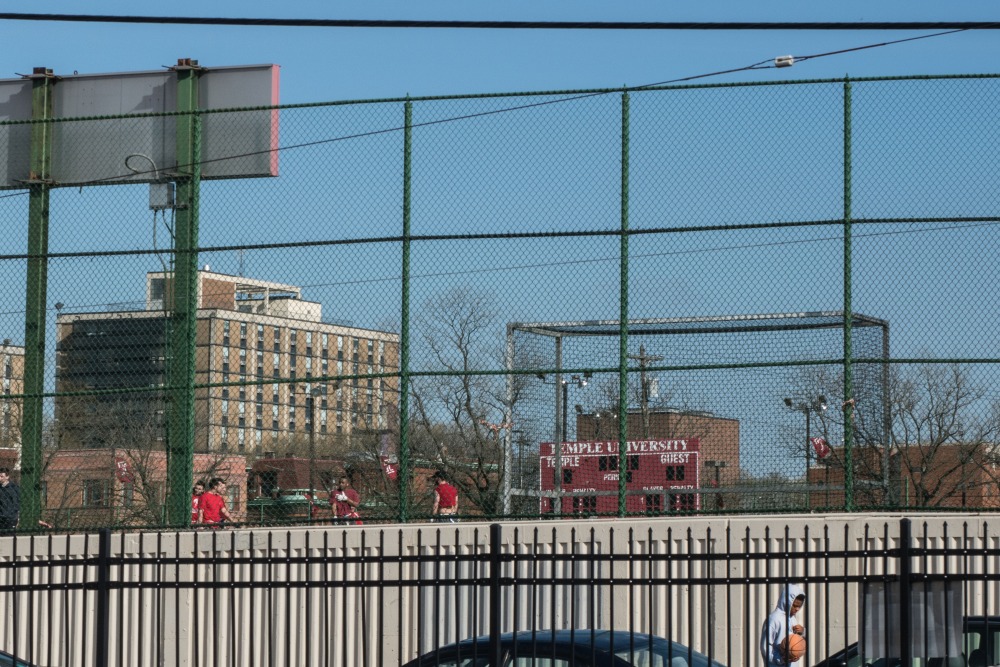
Bridget McKenna: Temple Field from Harver High School Playground - In this series of images, I attempted to capture the mounting tensions between the influx of Temple University students and original community members of the North Central/ Cecil B. Moore area. As Temple continues to accept more and more students, cheap housing is being built to accommodate off campus housing. The community is now scattered with Temple flags, cafes, and new architecture, standing out against the old and often rundown homes. It is clearly apparent that Temple is focused on expanding rather than respecting the original community or trying to communicate and integrate.
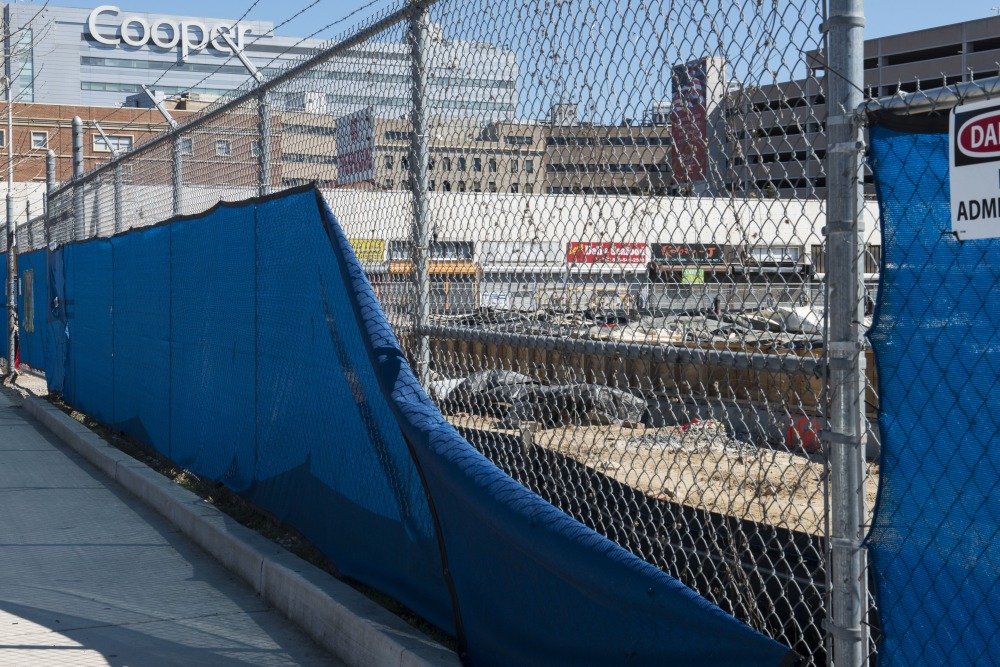
Chloe Hollingsworth: Cooper - These images are a representation of the current construction that is surrounding Camden, New Jersey. The images show where the newer developments have taken over in the developing city. I believe that the reason these images are so important is because they show where most of big corporations invest their money. Instead of fixing up the older developments and making it a place where current residents can thrive, they tear down the older buildings and use the new buildings for newer residents. In the diptych Library, you can see the newer building that is for the Rutgers Nursing Program, and you can also see the Camden Public Library. The library is outdated and needs new resources while the Rutgers Nursing building is fully loaded. In situations like these, the city of Camden will begin to push out the older residents. These images all display a certain type of immigration that is not good for the current residents. It’s a type of immigration that will cost lots of people to lose their homes and jobs. This immigration that is usually referred to as gentrification.
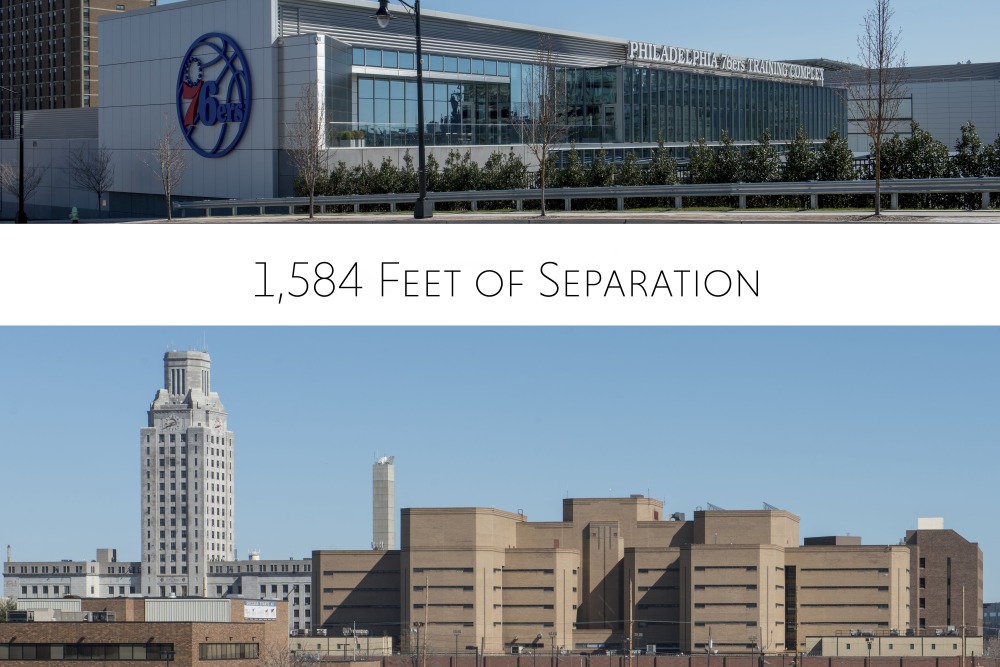
Chloe Hollingsworth: Sixers Training - These images are a representation of the current construction that is surrounding Camden, New Jersey. The images show where the newer developments have taken over in the developing city. I believe that the reason these images are so important is because they show where most of big corporations invest their money. Instead of fixing up the older developments and making it a place where current residents can thrive, they tear down the older buildings and use the new buildings for newer residents. In the diptych Library, you can see the newer building that is for the Rutgers Nursing Program, and you can also see the Camden Public Library. The library is outdated and needs new resources while the Rutgers Nursing building is fully loaded. In situations like these, the city of Camden will begin to push out the older residents. These images all display a certain type of immigration that is not good for the current residents. It’s a type of immigration that will cost lots of people to lose their homes and jobs. This immigration that is usually referred to as gentrification.
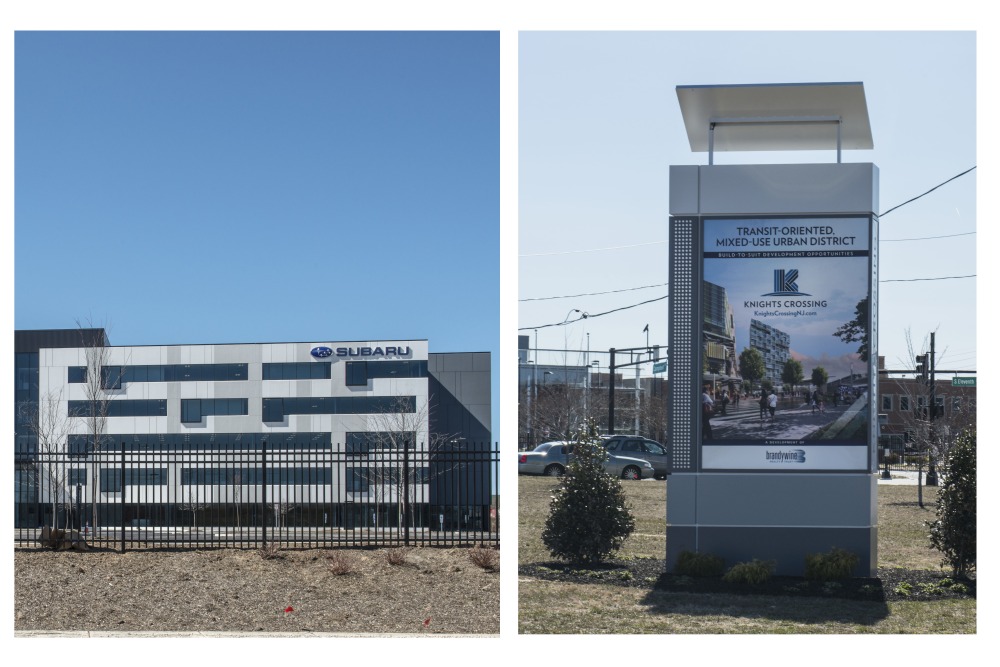
Chloe Hollingsworth: Subaru - These images are a representation of the current construction that is surrounding Camden, New Jersey. The images show where the newer developments have taken over in the developing city. I believe that the reason these images are so important is because they show where most of big corporations invest their money. Instead of fixing up the older developments and making it a place where current residents can thrive, they tear down the older buildings and use the new buildings for newer residents. In the diptych Library, you can see the newer building that is for the Rutgers Nursing Program, and you can also see the Camden Public Library. The library is outdated and needs new resources while the Rutgers Nursing building is fully loaded. In situations like these, the city of Camden will begin to push out the older residents. These images all display a certain type of immigration that is not good for the current residents. It’s a type of immigration that will cost lots of people to lose their homes and jobs. This immigration that is usually referred to as gentrification.
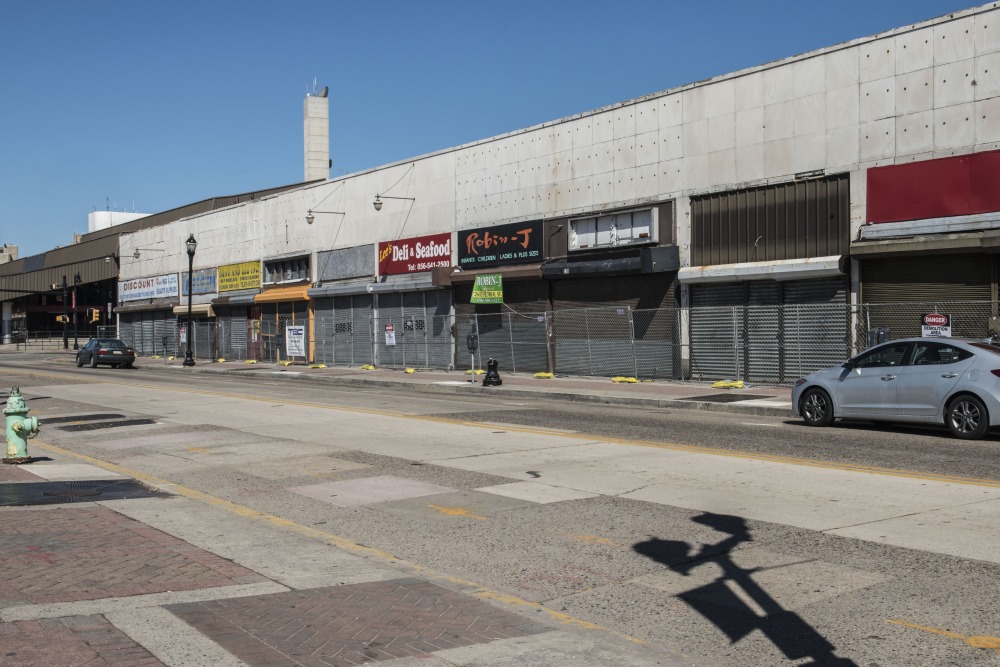
Chloe Hollingsworth: Broadway - These images are a representation of the current construction that is surrounding Camden, New Jersey. The images show where the newer developments have taken over in the developing city. I believe that the reason these images are so important is because they show where most of big corporations invest their money. Instead of fixing up the older developments and making it a place where current residents can thrive, they tear down the older buildings and use the new buildings for newer residents. In the diptych Library, you can see the newer building that is for the Rutgers Nursing Program, and you can also see the Camden Public Library. The library is outdated and needs new resources while the Rutgers Nursing building is fully loaded. In situations like these, the city of Camden will begin to push out the older residents. These images all display a certain type of immigration that is not good for the current residents. It’s a type of immigration that will cost lots of people to lose their homes and jobs. This immigration that is usually referred to as gentrification.
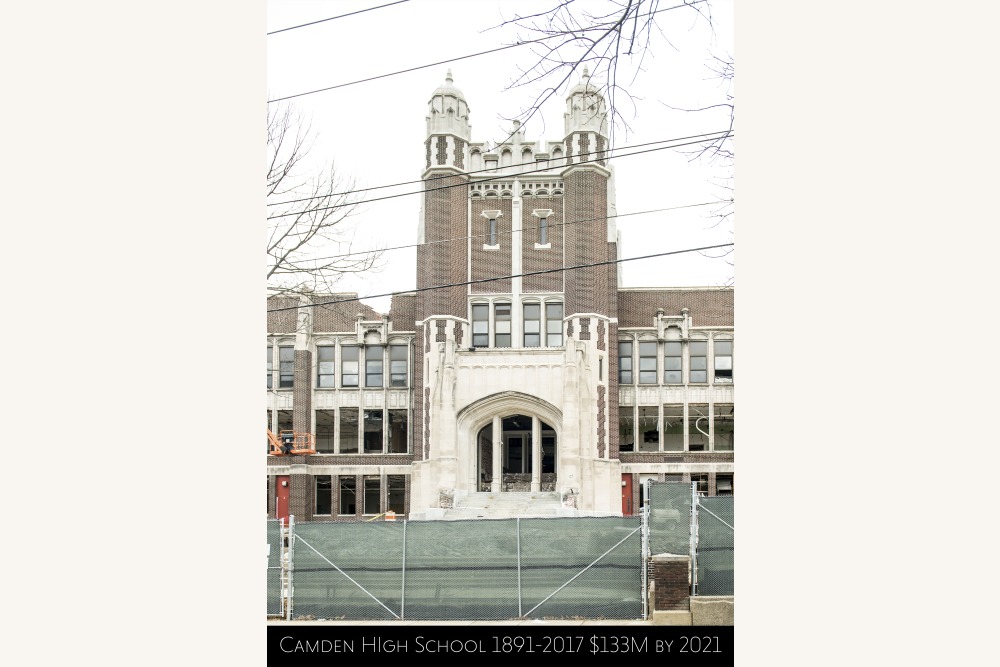
Chloe Hollingsworth: Camden High - These images are a representation of the current construction that is surrounding Camden, New Jersey. The images show where the newer developments have taken over in the developing city. I believe that the reason these images are so important is because they show where most of big corporations invest their money. Instead of fixing up the older developments and making it a place where current residents can thrive, they tear down the older buildings and use the new buildings for newer residents. In the diptych Library, you can see the newer building that is for the Rutgers Nursing Program, and you can also see the Camden Public Library. The library is outdated and needs new resources while the Rutgers Nursing building is fully loaded. In situations like these, the city of Camden will begin to push out the older residents. These images all display a certain type of immigration that is not good for the current residents. It’s a type of immigration that will cost lots of people to lose their homes and jobs. This immigration that is usually referred to as gentrification.
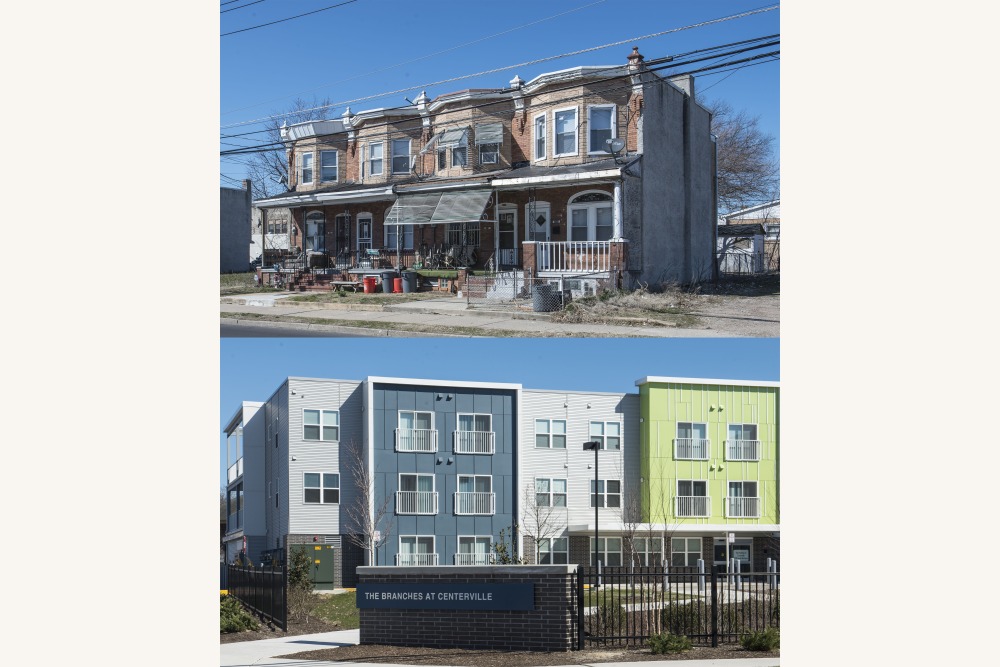
Chloe Hollingsworth: Centerville - These images are a representation of the current construction that is surrounding Camden, New Jersey. The images show where the newer developments have taken over in the developing city. I believe that the reason these images are so important is because they show where most of big corporations invest their money. Instead of fixing up the older developments and making it a place where current residents can thrive, they tear down the older buildings and use the new buildings for newer residents. In the diptych Library, you can see the newer building that is for the Rutgers Nursing Program, and you can also see the Camden Public Library. The library is outdated and needs new resources while the Rutgers Nursing building is fully loaded. In situations like these, the city of Camden will begin to push out the older residents. These images all display a certain type of immigration that is not good for the current residents. It’s a type of immigration that will cost lots of people to lose their homes and jobs. This immigration that is usually referred to as gentrification.
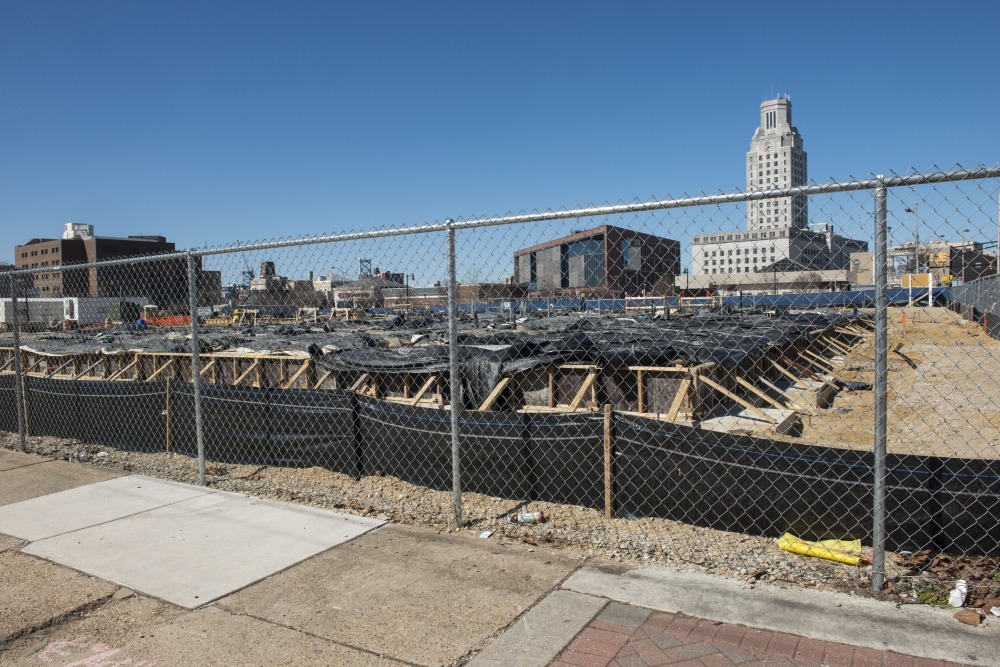
Chloe Hollingsworth: City Hall - These images are a representation of the current construction that is surrounding Camden, New Jersey. The images show where the newer developments have taken over in the developing city. I believe that the reason these images are so important is because they show where most of big corporations invest their money. Instead of fixing up the older developments and making it a place where current residents can thrive, they tear down the older buildings and use the new buildings for newer residents. In the diptych Library, you can see the newer building that is for the Rutgers Nursing Program, and you can also see the Camden Public Library. The library is outdated and needs new resources while the Rutgers Nursing building is fully loaded. In situations like these, the city of Camden will begin to push out the older residents. These images all display a certain type of immigration that is not good for the current residents. It’s a type of immigration that will cost lots of people to lose their homes and jobs. This immigration that is usually referred to as gentrification.
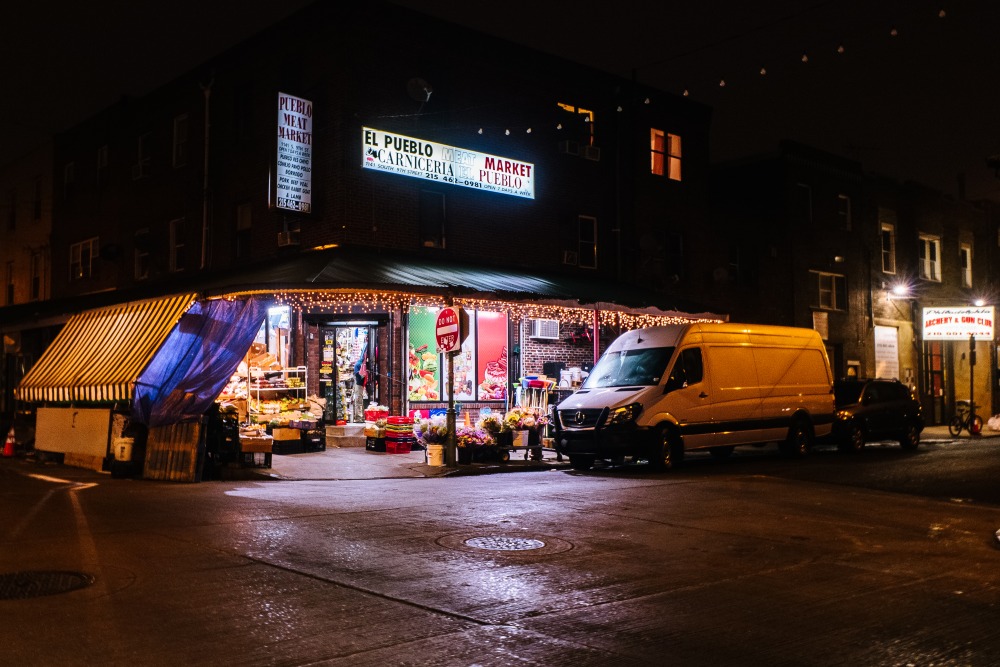
Dylan Pearce: 9th and Ellsworth - In my photographs of the Vietnamese Supermarket, the Buddhist Temple, and the El Pueblo Meat Market, I am emphasizing the curious feeling of cultural diversity in Philadelphia. In my photographs of Manuela and Diego, I set out to find people working and living in Philadelphia who came from another country in search of a better life.
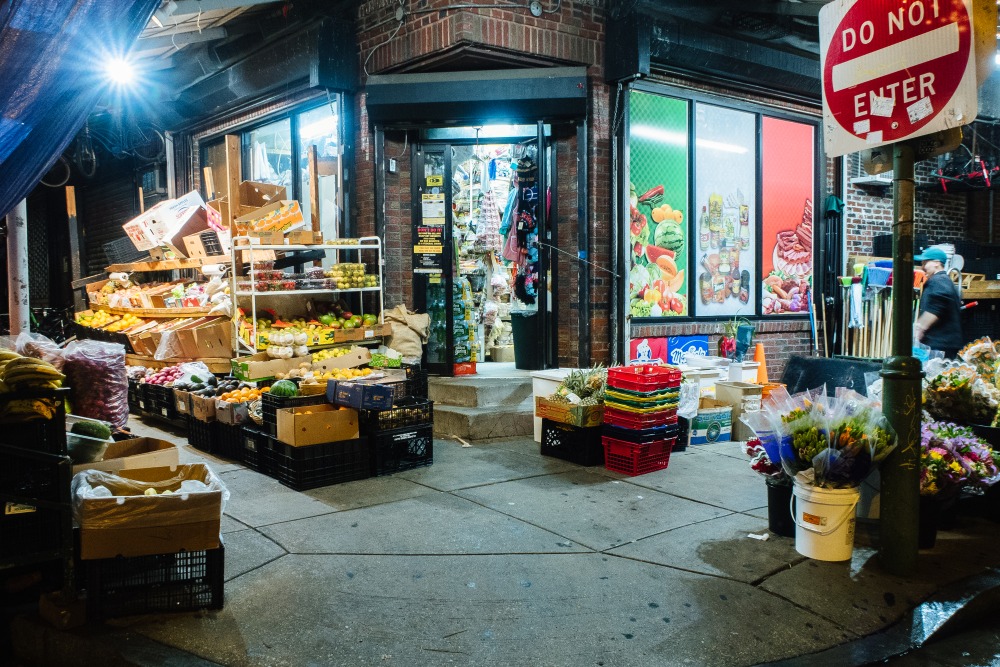
Dylan Pearce: 9th and Ellsworth - In my photographs of the Vietnamese Supermarket, the Buddhist Temple, and the El Pueblo Meat Market, I am emphasizing the curious feeling of cultural diversity in Philadelphia. In my photographs of Manuela and Diego, I set out to find people working and living in Philadelphia who came from another country in search of a better life.
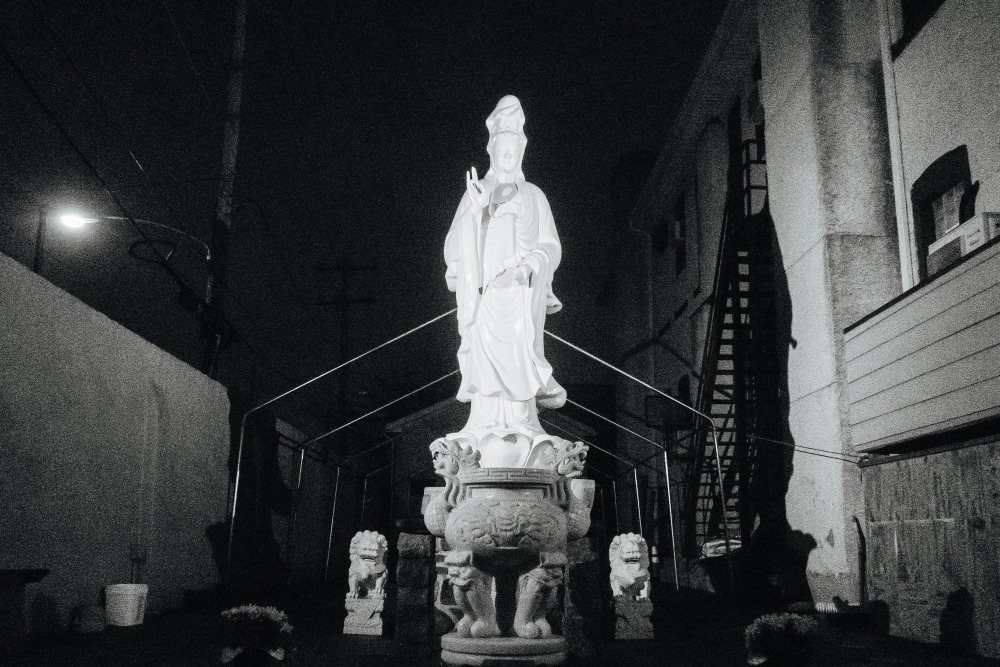
Dylan Pearce: Buddhist Temple - In my photographs of the Vietnamese Supermarket, the Buddhist Temple, and the El Pueblo Meat Market, I am emphasizing the curious feeling of cultural diversity in Philadelphia. In my photographs of Manuela and Diego, I set out to find people working and living in Philadelphia who came from another country in search of a better life.
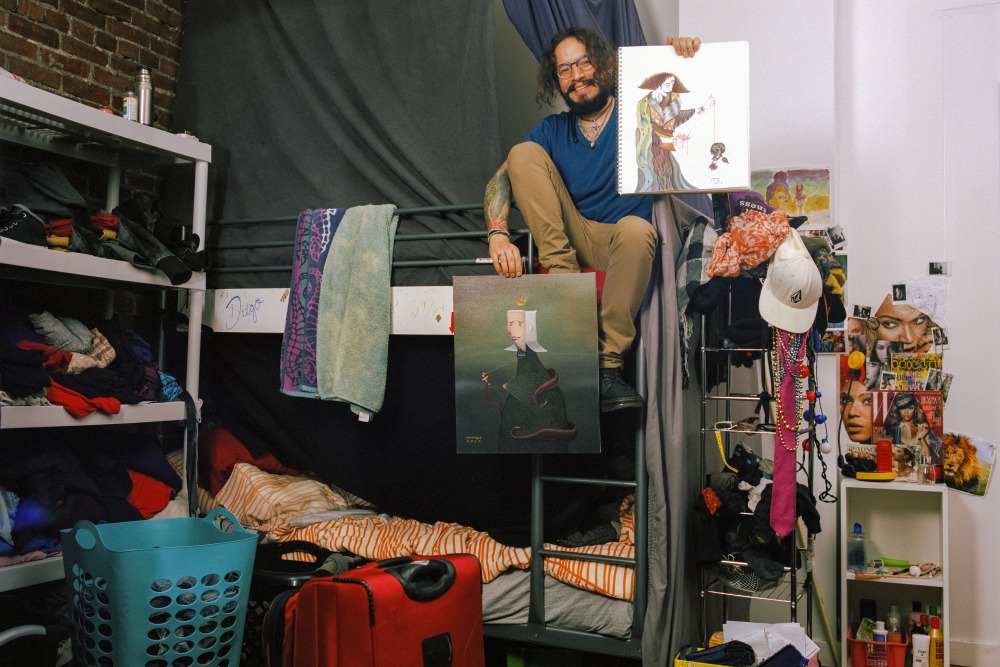
Dylan Pearce: Diego from Columbia - In my photographs of the Vietnamese Supermarket, the Buddhist Temple, and the El Pueblo Meat Market, I am emphasizing the curious feeling of cultural diversity in Philadelphia. In my photographs of Manuela and Diego, I set out to find people working and living in Philadelphia who came from another country in search of a better life.
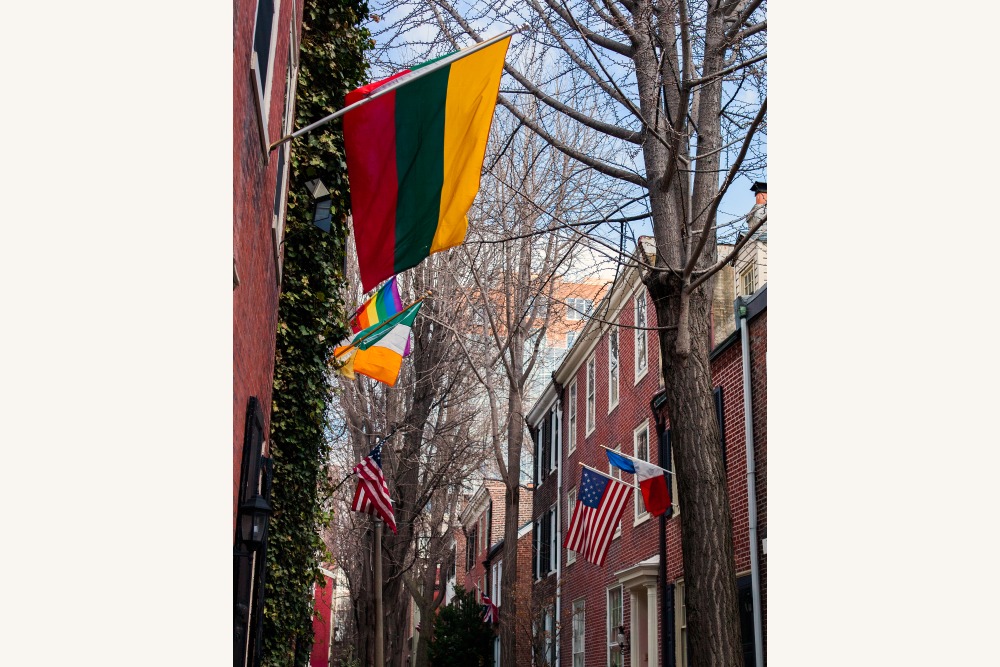
Dylan Pearce: Flags of the World - In my photographs of the Vietnamese Supermarket, the Buddhist Temple, and the El Pueblo Meat Market, I am emphasizing the curious feeling of cultural diversity in Philadelphia. In my photographs of Manuela and Diego, I set out to find people working and living in Philadelphia who came from another country in search of a better life.
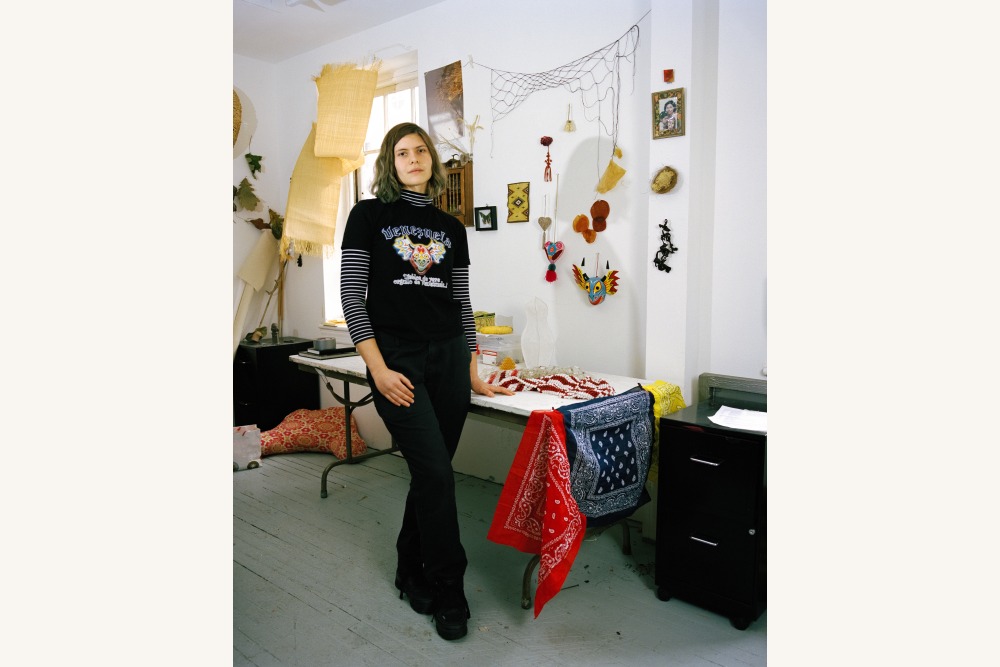
Dylan Pearce: Manuela from Venezuela - In my photographs of the Vietnamese Supermarket, the Buddhist Temple, and the El Pueblo Meat Market, I am emphasizing the curious feeling of cultural diversity in Philadelphia. In my photographs of Manuela and Diego, I set out to find people working and living in Philadelphia who came from another country in search of a better life.
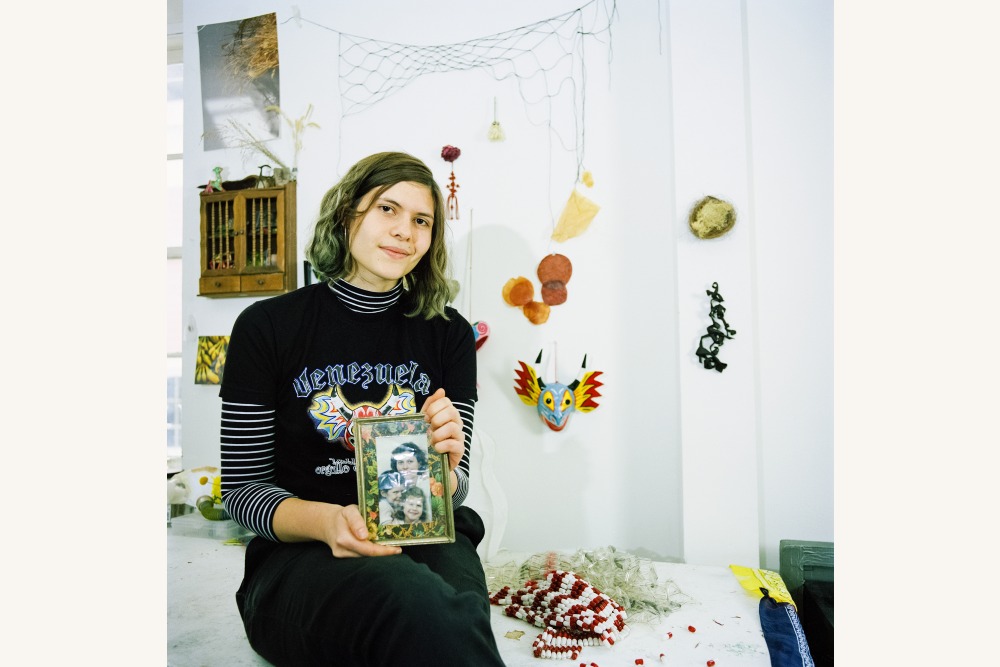
Dylan Pearce: Manuela from Venezuela - In my photographs of the Vietnamese Supermarket, the Buddhist Temple, and the El Pueblo Meat Market, I am emphasizing the curious feeling of cultural diversity in Philadelphia. In my photographs of Manuela and Diego, I set out to find people working and living in Philadelphia who came from another country in search of a better life.
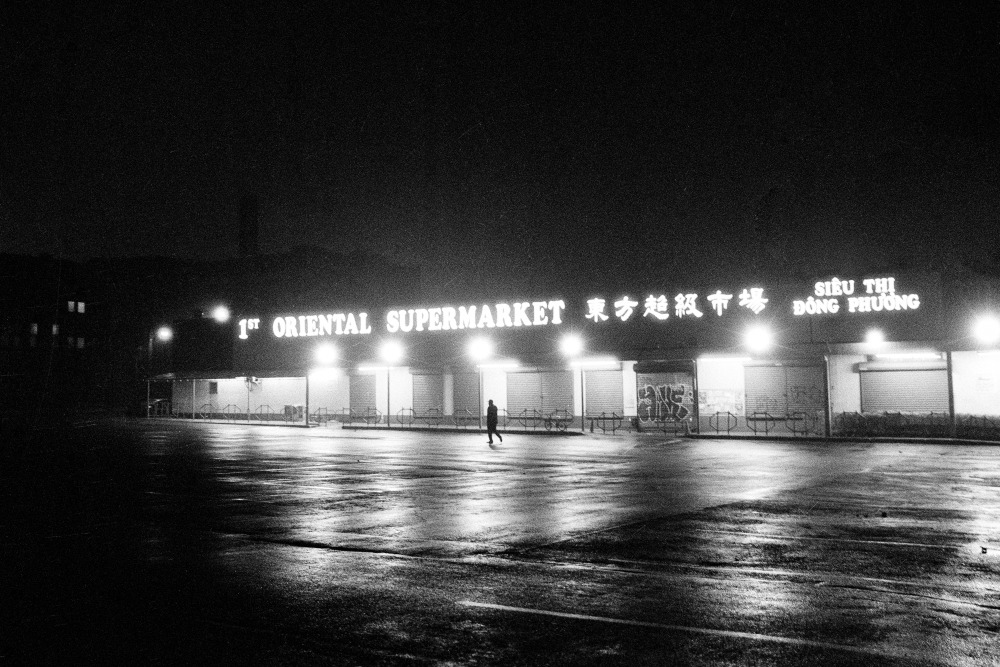
Dylan Pearce: Vietnamese Supermarket, Philadelphia, PA - In my photographs of the Vietnamese Supermarket, the Buddhist Temple, and the El Pueblo Meat Market, I am emphasizing the curious feeling of cultural diversity in Philadelphia. In my photographs of Manuela and Diego, I set out to find people working and living in Philadelphia who came from another country in search of a better life.
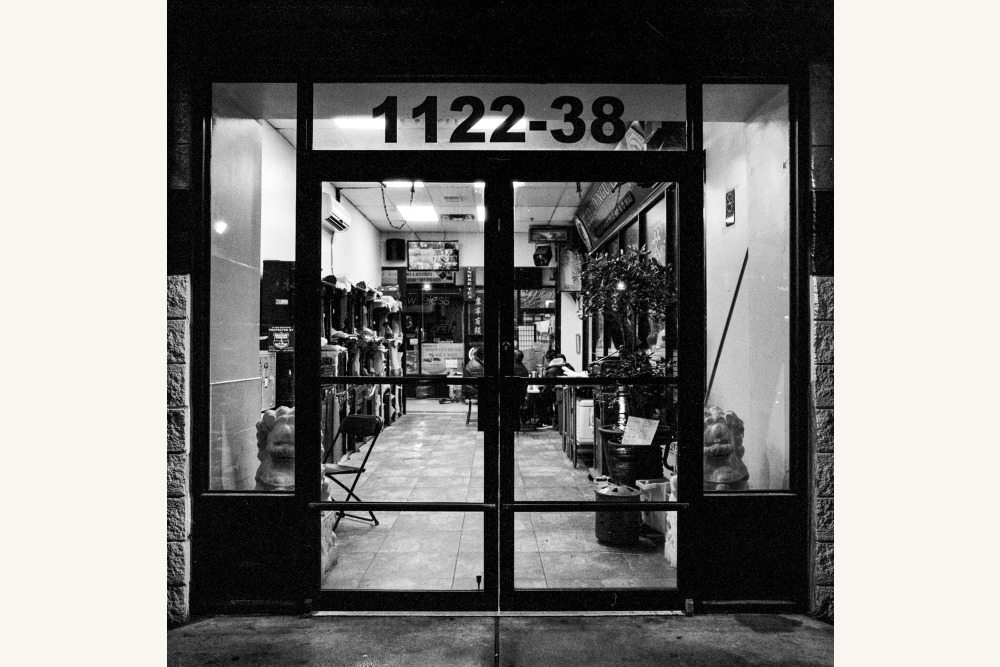
Dylan Pearce: Vietnamese Supermarket, Philadelphia, PA - In my photographs of the Vietnamese Supermarket, the Buddhist Temple, and the El Pueblo Meat Market, I am emphasizing the curious feeling of cultural diversity in Philadelphia. In my photographs of Manuela and Diego, I set out to find people working and living in Philadelphia who came from another country in search of a better life.
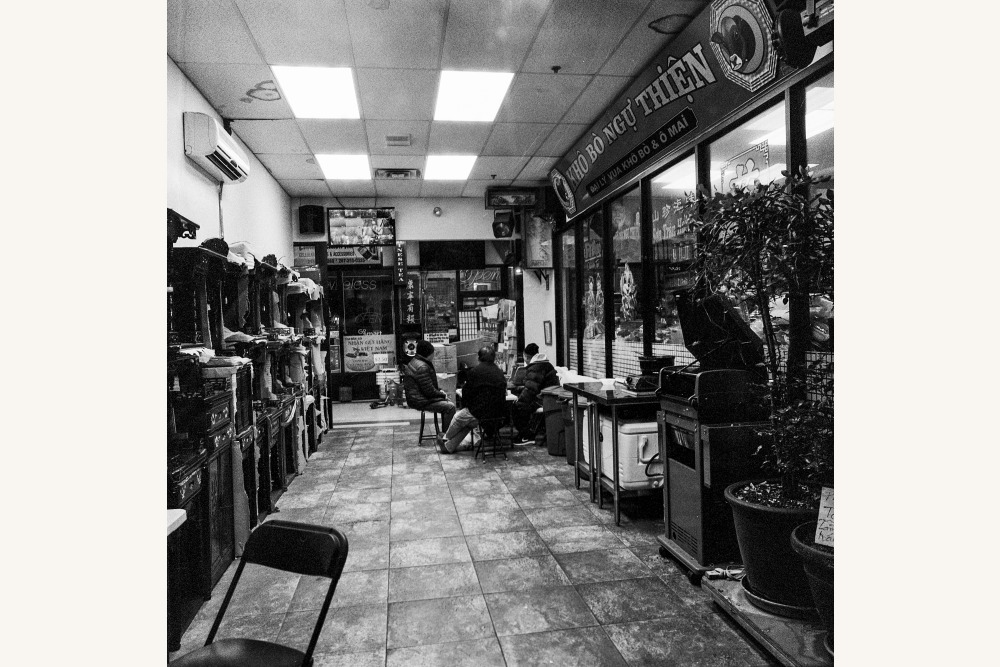
Dylan Pearce: Vietnamese Supermarket, Philadelphia, PA - In my photographs of the Vietnamese Supermarket, the Buddhist Temple, and the El Pueblo Meat Market, I am emphasizing the curious feeling of cultural diversity in Philadelphia. In my photographs of Manuela and Diego, I set out to find people working and living in Philadelphia who came from another country in search of a better life.
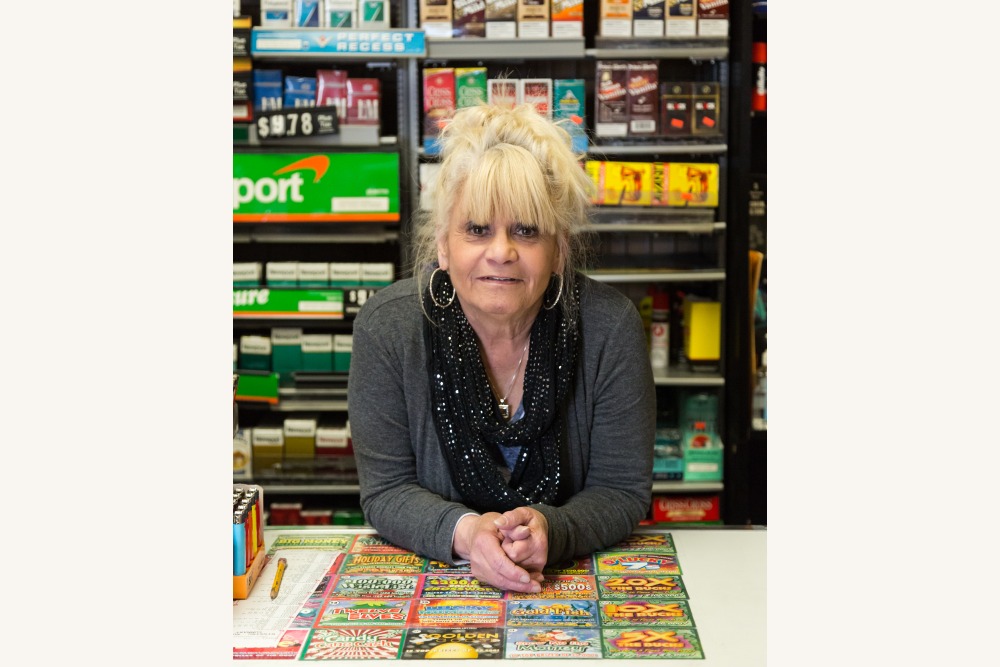
Hailey Bruinsma: Oregon Avenue - Throughout his life, Leonard Bernstein was an advocate for peaceful diversity. Recently, I was asked to ponder my thoughts on this matter and make a related body of work. I chose to take photographs of local store employees in my South Philadelphia neighborhood. South Philadelphia is home to many different people, ranging from classic South Philly Italian to Asian to South American and more. This area is a melting pot of cultures in one place and is home to many undocumented people looking to make their lives better in the United States.
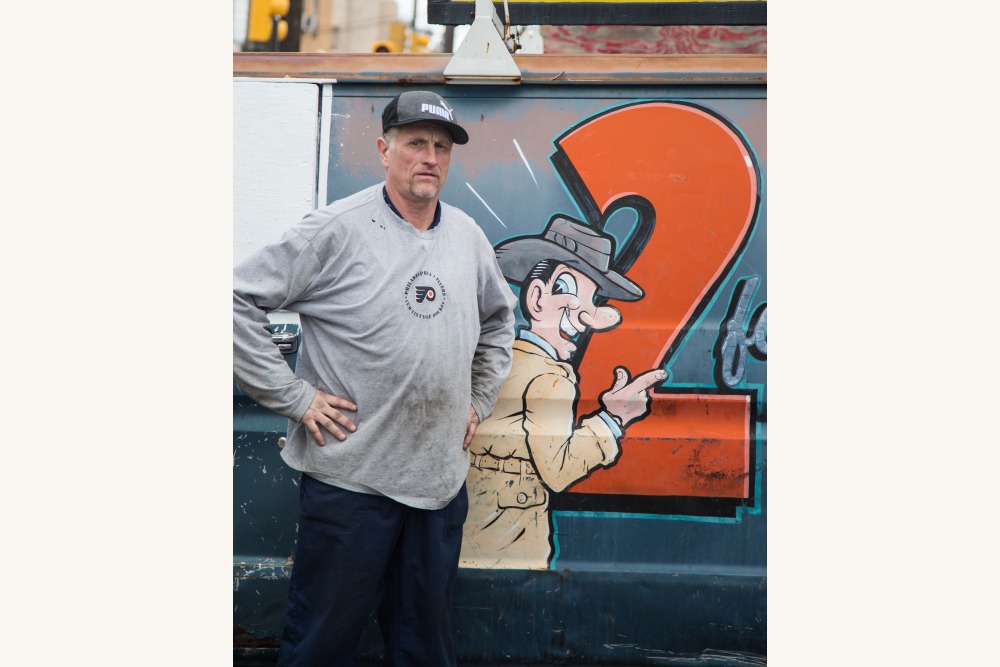
Hailey Bruinsma: Oregon Avenue - Throughout his life, Leonard Bernstein was an advocate for peaceful diversity. Recently, I was asked to ponder my thoughts on this matter and make a related body of work. I chose to take photographs of local store employees in my South Philadelphia neighborhood. South Philadelphia is home to many different people, ranging from classic South Philly Italian to Asian to South American and more. This area is a melting pot of cultures in one place and is home to many undocumented people looking to make their lives better in the United States.
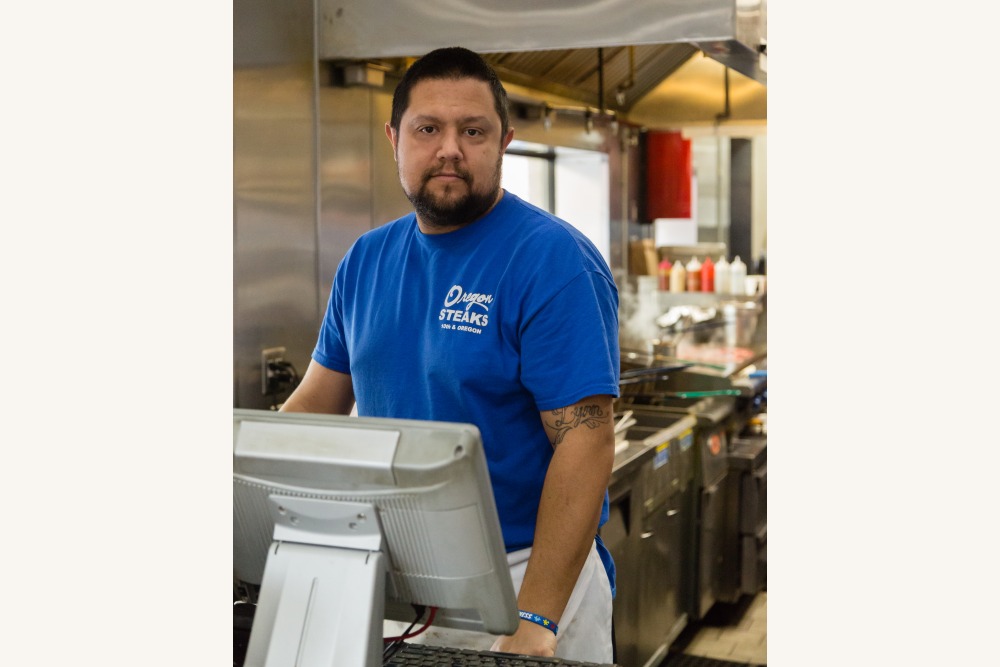
Hailey Bruinsma: Oregon Avenue - Throughout his life, Leonard Bernstein was an advocate for peaceful diversity. Recently, I was asked to ponder my thoughts on this matter and make a related body of work. I chose to take photographs of local store employees in my South Philadelphia neighborhood. South Philadelphia is home to many different people, ranging from classic South Philly Italian to Asian to South American and more. This area is a melting pot of cultures in one place and is home to many undocumented people looking to make their lives better in the United States.
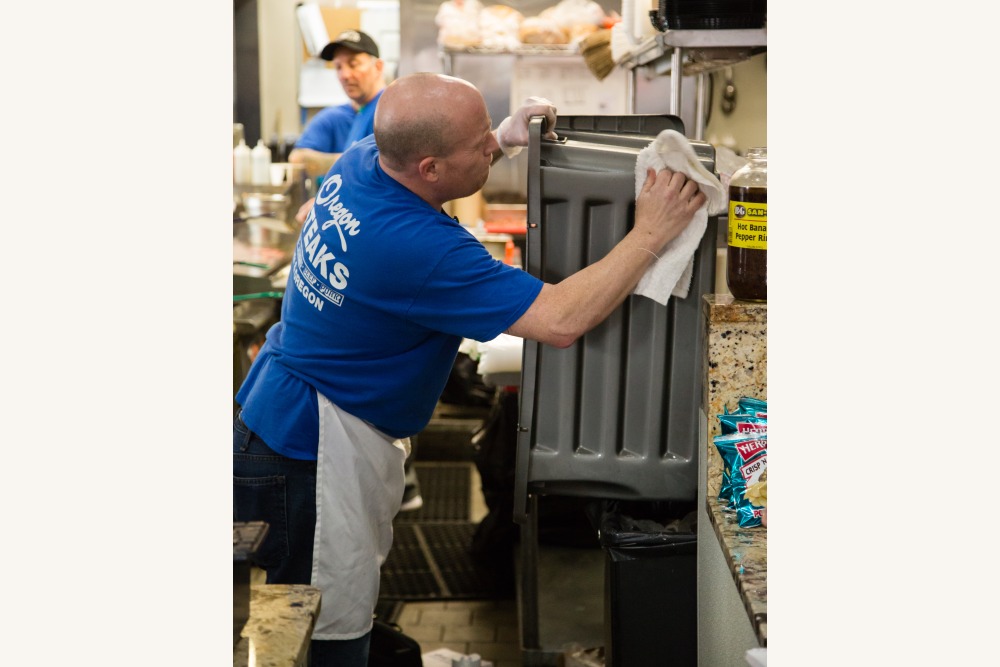
Hailey Bruinsma: Oregon Avenue - Throughout his life, Leonard Bernstein was an advocate for peaceful diversity. Recently, I was asked to ponder my thoughts on this matter and make a related body of work. I chose to take photographs of local store employees in my South Philadelphia neighborhood. South Philadelphia is home to many different people, ranging from classic South Philly Italian to Asian to South American and more. This area is a melting pot of cultures in one place and is home to many undocumented people looking to make their lives better in the United States.
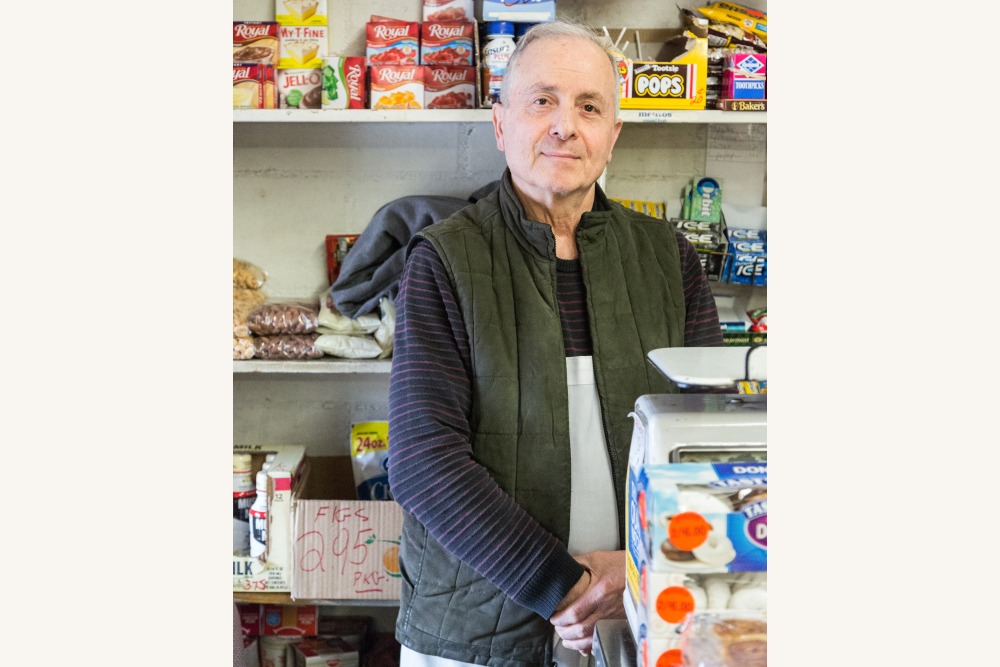
Hailey Bruinsma: Oregon Avenue - Throughout his life, Leonard Bernstein was an advocate for peaceful diversity. Recently, I was asked to ponder my thoughts on this matter and make a related body of work. I chose to take photographs of local store employees in my South Philadelphia neighborhood. South Philadelphia is home to many different people, ranging from classic South Philly Italian to Asian to South American and more. This area is a melting pot of cultures in one place and is home to many undocumented people looking to make their lives better in the United States.
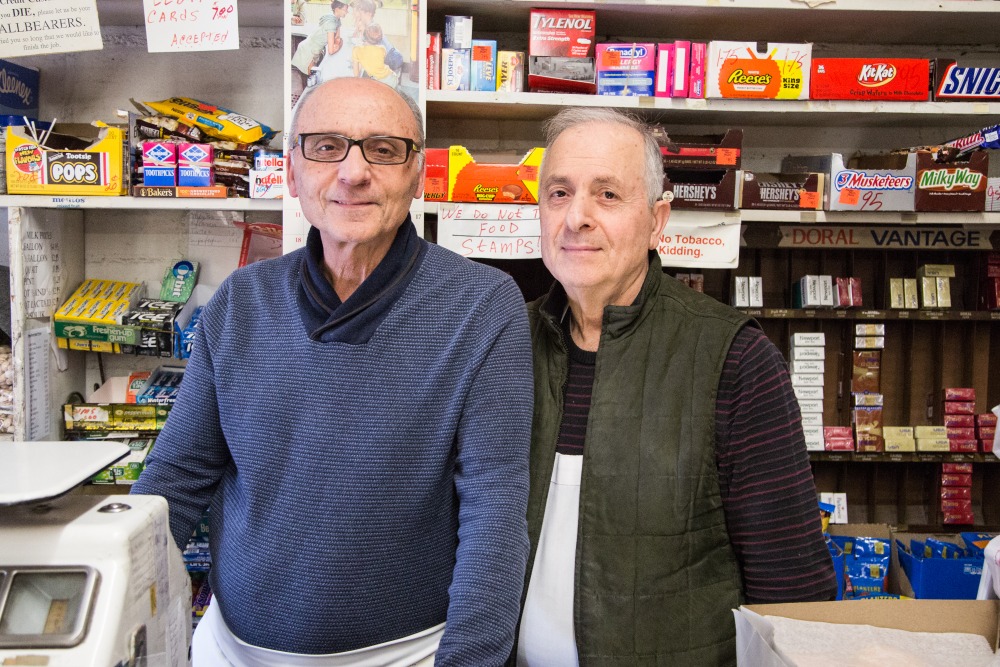
Hailey Bruinsma: Oregon Avenue - Throughout his life, Leonard Bernstein was an advocate for peaceful diversity. Recently, I was asked to ponder my thoughts on this matter and make a related body of work. I chose to take photographs of local store employees in my South Philadelphia neighborhood. South Philadelphia is home to many different people, ranging from classic South Philly Italian to Asian to South American and more. This area is a melting pot of cultures in one place and is home to many undocumented people looking to make their lives better in the United States.
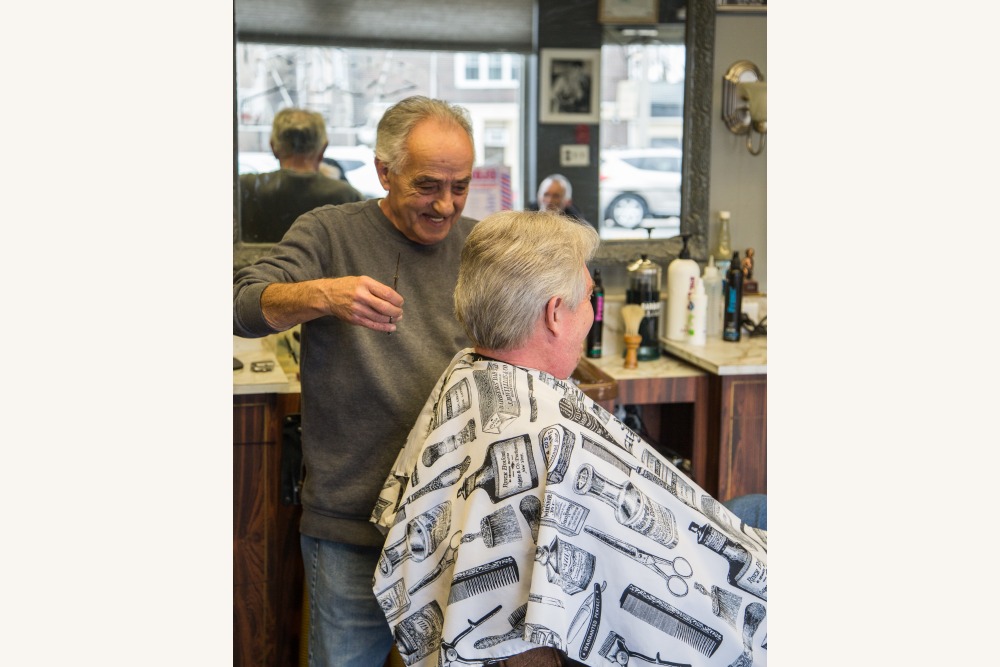
Hailey Bruinsma: Oregon Avenue - Throughout his life, Leonard Bernstein was an advocate for peaceful diversity. Recently, I was asked to ponder my thoughts on this matter and make a related body of work. I chose to take photographs of local store employees in my South Philadelphia neighborhood. South Philadelphia is home to many different people, ranging from classic South Philly Italian to Asian to South American and more. This area is a melting pot of cultures in one place and is home to many undocumented people looking to make their lives better in the United States.
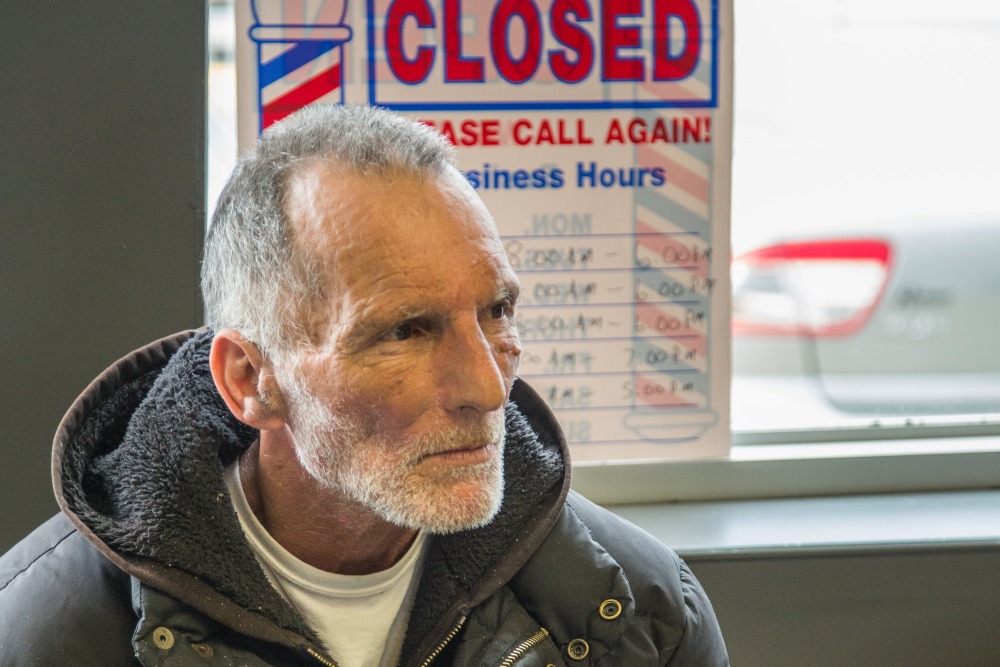
Hailey Bruinsma: Oregon Avenue - Throughout his life, Leonard Bernstein was an advocate for peaceful diversity. Recently, I was asked to ponder my thoughts on this matter and make a related body of work. I chose to take photographs of local store employees in my South Philadelphia neighborhood. South Philadelphia is home to many different people, ranging from classic South Philly Italian to Asian to South American and more. This area is a melting pot of cultures in one place and is home to many undocumented people looking to make their lives better in the United States.
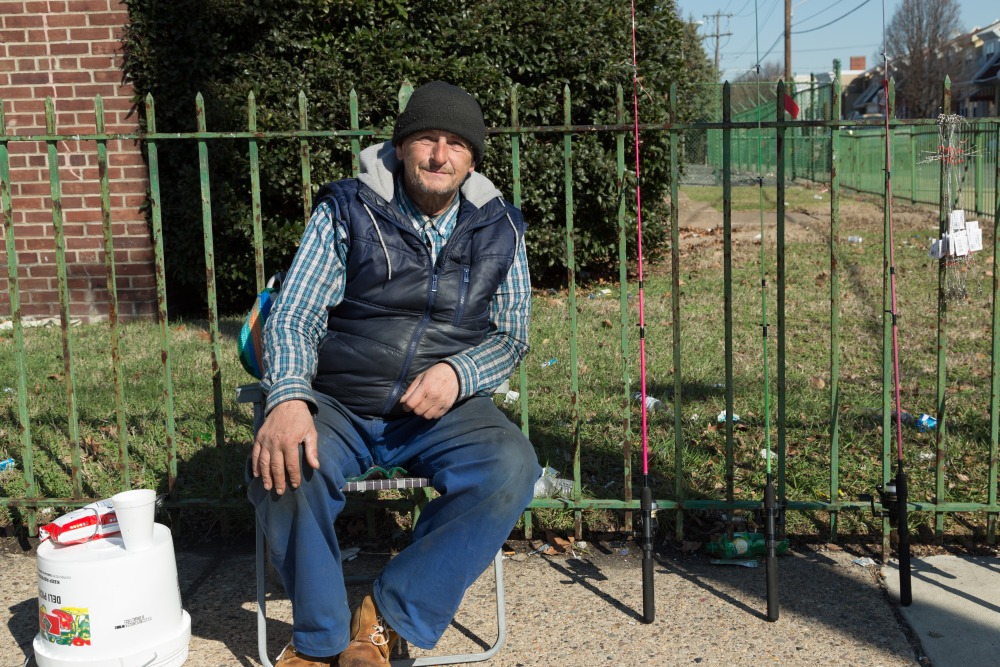
Hailey Bruinsma: Oregon Avenue - Throughout his life, Leonard Bernstein was an advocate for peaceful diversity. Recently, I was asked to ponder my thoughts on this matter and make a related body of work. I chose to take photographs of local store employees in my South Philadelphia neighborhood. South Philadelphia is home to many different people, ranging from classic South Philly Italian to Asian to South American and more. This area is a melting pot of cultures in one place and is home to many undocumented people looking to make their lives better in the United States.
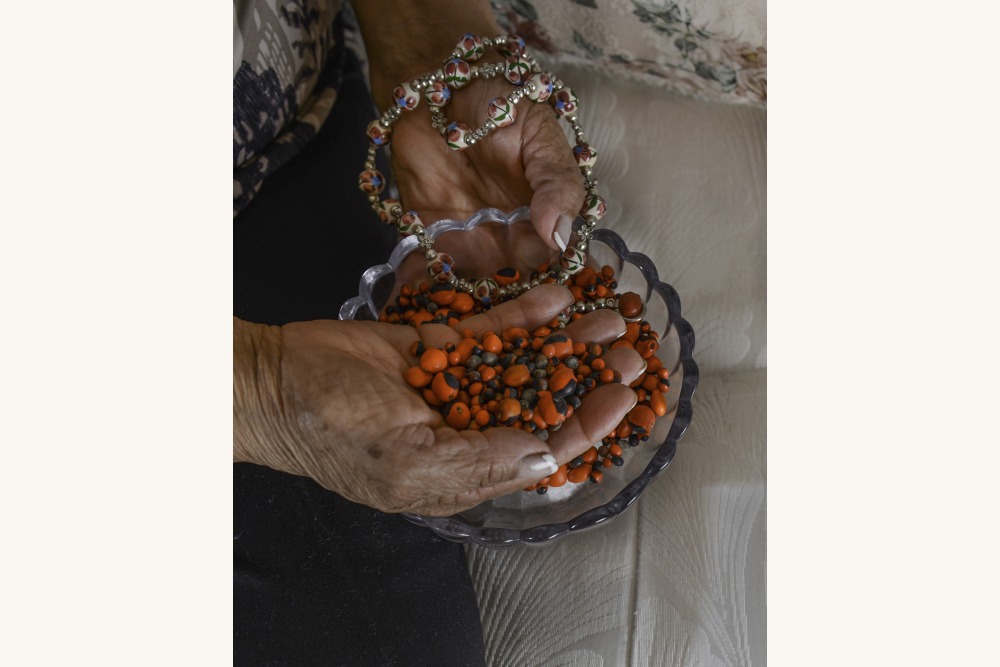
Hannah Bailey: From Peru to New York - Rosa Hopkins came from Lima, Peru to New York City with nothing but her children. She is proud of her Peruvian heritage but also proud to be a U.S. citizen. These photographs show how thankful she is of where she comes from and where she is today. Personally, the connection to this person is that she is a main pillar of the family and moving to the United States has brought her gratitude and blessings. These photographs portray her and what she holds dear to her heart.
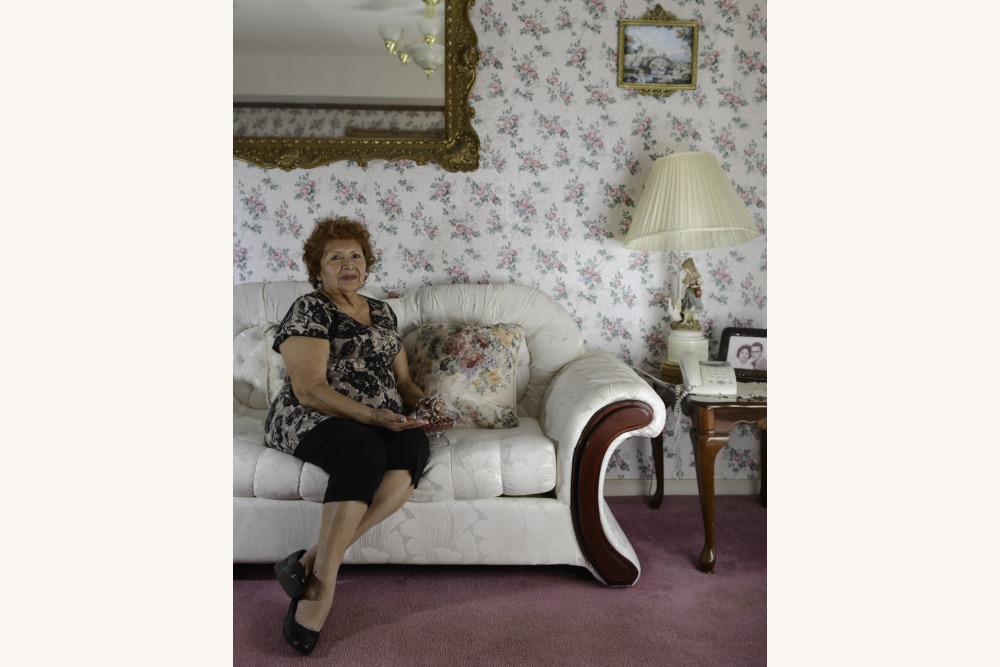
Hannah Bailey: From Peru to New York - Rosa Hopkins came from Lima, Peru to New York City with nothing but her children. She is proud of her Peruvian heritage but also proud to be a U.S. citizen. These photographs show how thankful she is of where she comes from and where she is today. Personally, the connection to this person is that she is a main pillar of the family and moving to the United States has brought her gratitude and blessings. These photographs portray her and what she holds dear to her heart.
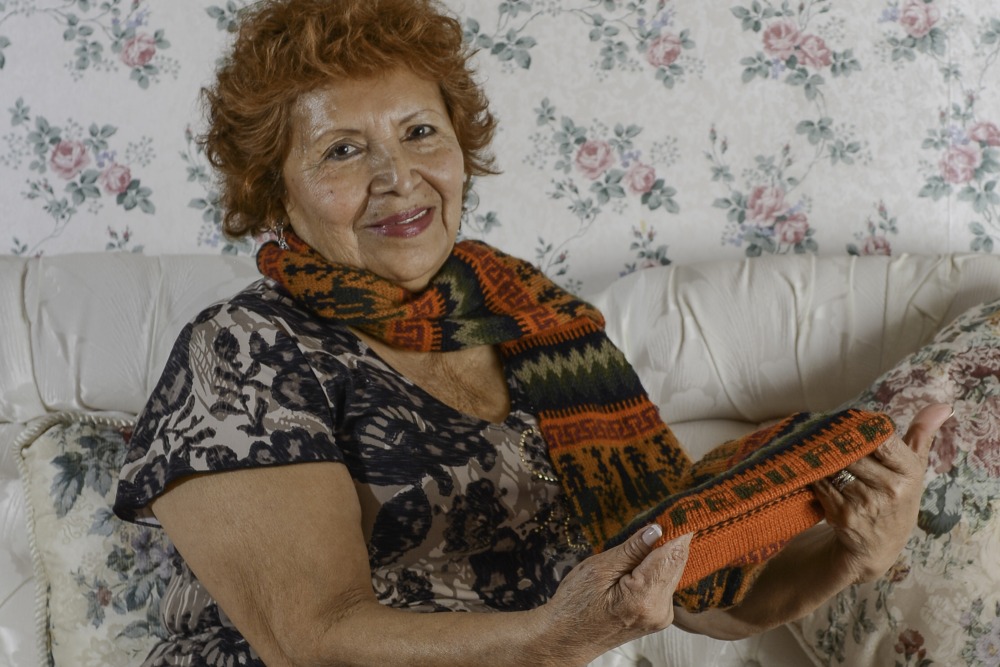
Hannah Bailey: From Peru to New York - Rosa Hopkins came from Lima, Peru to New York City with nothing but her children. She is proud of her Peruvian heritage but also proud to be a U.S. citizen. These photographs show how thankful she is of where she comes from and where she is today. Personally, the connection to this person is that she is a main pillar of the family and moving to the United States has brought her gratitude and blessings. These photographs portray her and what she holds dear to her heart.
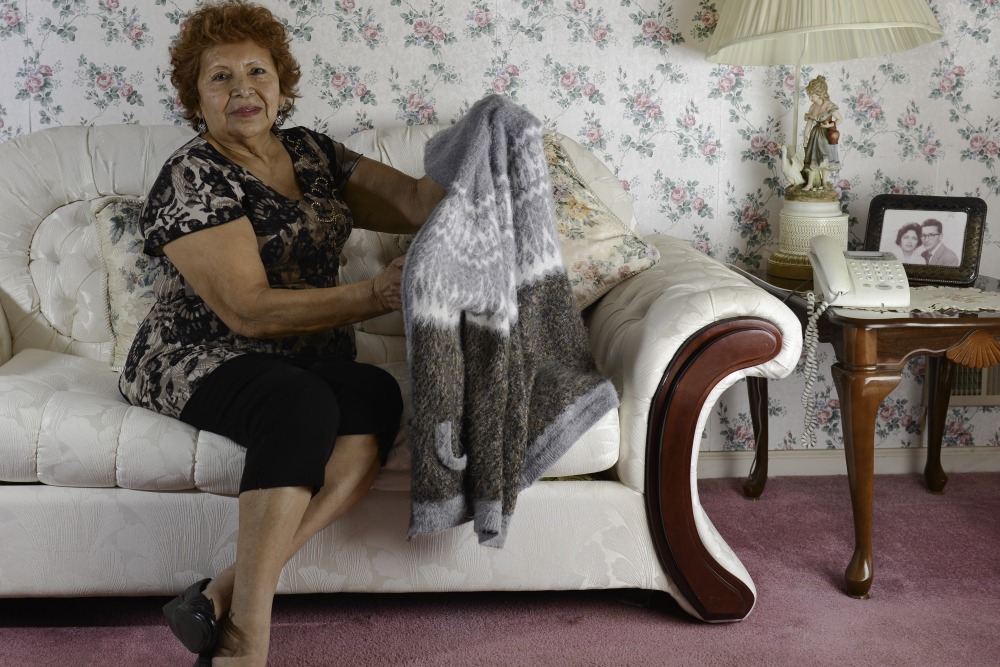
Hannah Bailey: From Peru to New York - Rosa Hopkins came from Lima, Peru to New York City with nothing but her children. She is proud of her Peruvian heritage but also proud to be a U.S. citizen. These photographs show how thankful she is of where she comes from and where she is today. Personally, the connection to this person is that she is a main pillar of the family and moving to the United States has brought her gratitude and blessings. These photographs portray her and what she holds dear to her heart.
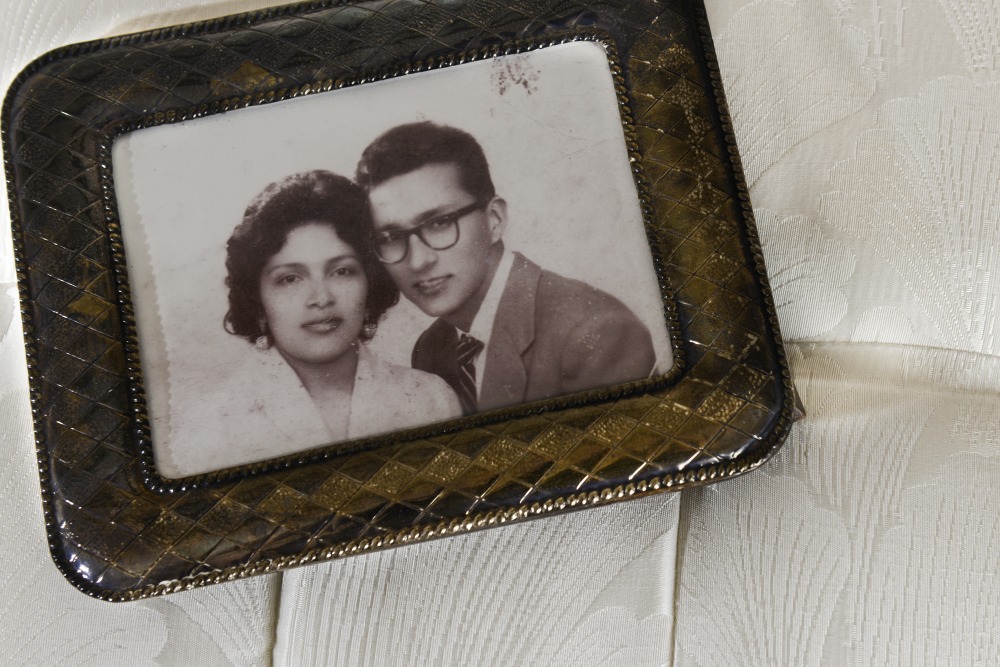
Hannah Bailey: From Peru to New York - Rosa Hopkins came from Lima, Peru to New York City with nothing but her children. She is proud of her Peruvian heritage but also proud to be a U.S. citizen. These photographs show how thankful she is of where she comes from and where she is today. Personally, the connection to this person is that she is a main pillar of the family and moving to the United States has brought her gratitude and blessings. These photographs portray her and what she holds dear to her heart.
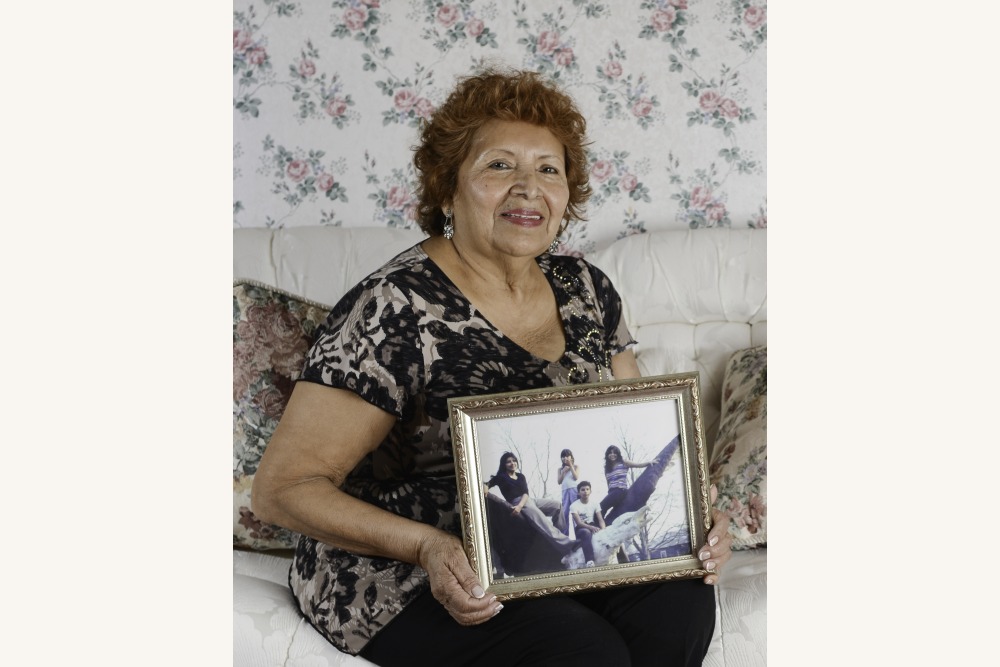
Hannah Bailey: From Peru to New York - Rosa Hopkins came from Lima, Peru to New York City with nothing but her children. She is proud of her Peruvian heritage but also proud to be a U.S. citizen. These photographs show how thankful she is of where she comes from and where she is today. Personally, the connection to this person is that she is a main pillar of the family and moving to the United States has brought her gratitude and blessings. These photographs portray her and what she holds dear to her heart.
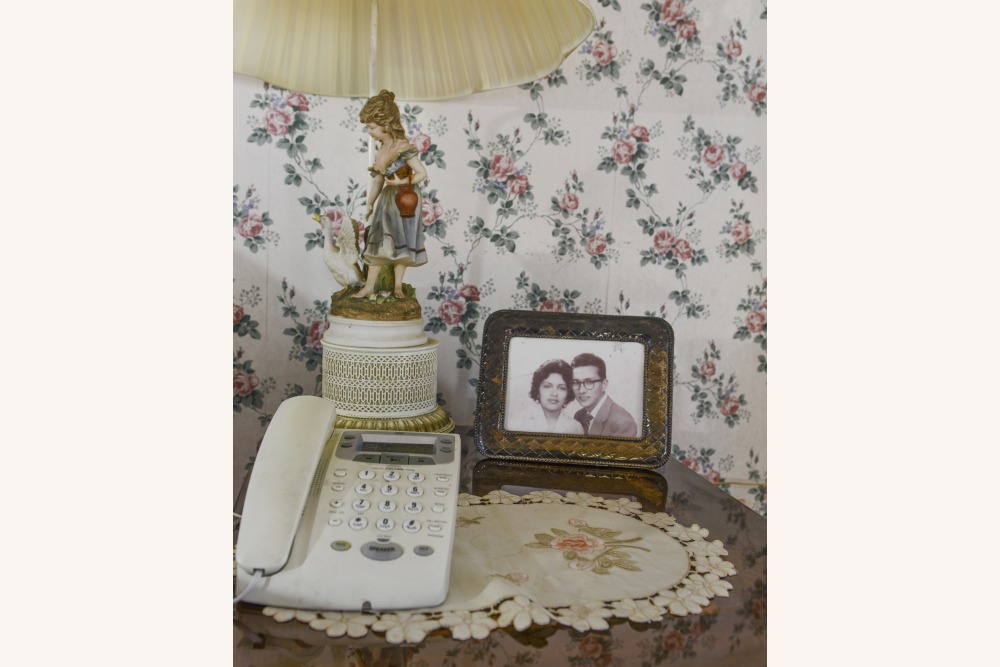
Hannah Bailey: From Peru to New York - Rosa Hopkins came from Lima, Peru to New York City with nothing but her children. She is proud of her Peruvian heritage but also proud to be a U.S. citizen. These photographs show how thankful she is of where she comes from and where she is today. Personally, the connection to this person is that she is a main pillar of the family and moving to the United States has brought her gratitude and blessings. These photographs portray her and what she holds dear to her heart.
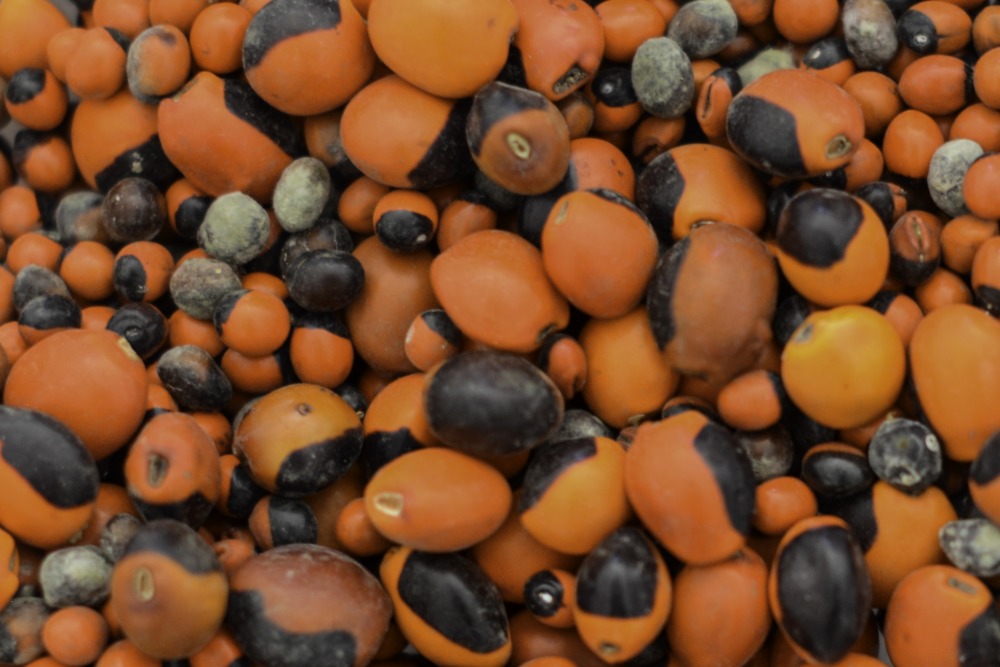
Hannah Bailey: From Peru to New York - Rosa Hopkins came from Lima, Peru to New York City with nothing but her children. She is proud of her Peruvian heritage but also proud to be a U.S. citizen. These photographs show how thankful she is of where she comes from and where she is today. Personally, the connection to this person is that she is a main pillar of the family and moving to the United States has brought her gratitude and blessings. These photographs portray her and what she holds dear to her heart.
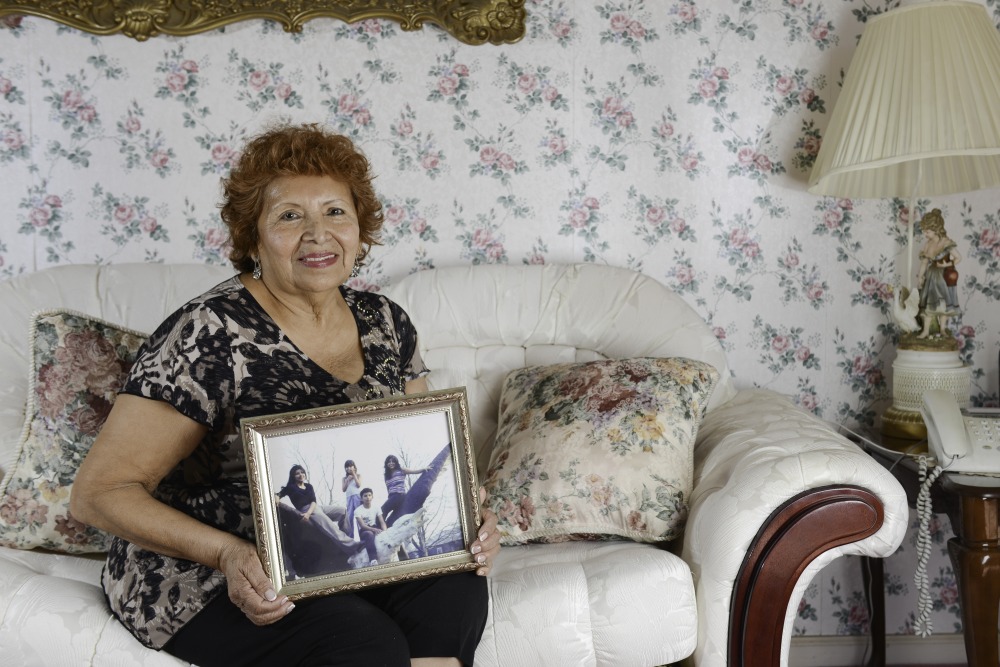
Hannah Bailey: From Peru to New York - Rosa Hopkins came from Lima, Peru to New York City with nothing but her children. She is proud of her Peruvian heritage but also proud to be a U.S. citizen. These photographs show how thankful she is of where she comes from and where she is today. Personally, the connection to this person is that she is a main pillar of the family and moving to the United States has brought her gratitude and blessings. These photographs portray her and what she holds dear to her heart.
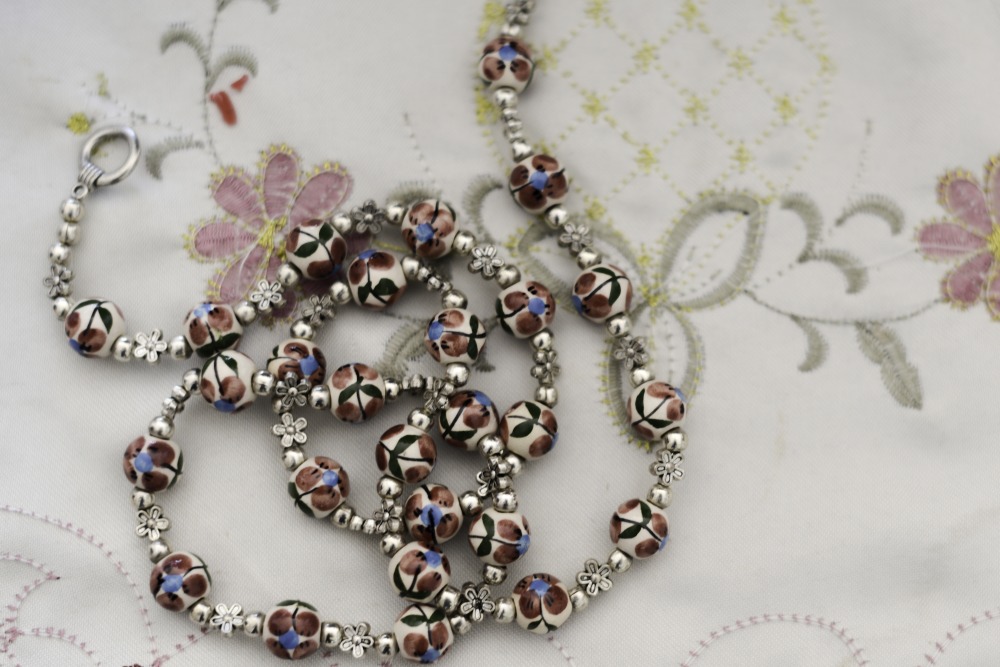
Hannah Bailey: From Peru to New York - Rosa Hopkins came from Lima, Peru to New York City with nothing but her children. She is proud of her Peruvian heritage but also proud to be a U.S. citizen. These photographs show how thankful she is of where she comes from and where she is today. Personally, the connection to this person is that she is a main pillar of the family and moving to the United States has brought her gratitude and blessings. These photographs portray her and what she holds dear to her heart.
Alexander (AJ) Adriance: Architecture of Gentrification - My project documents the changing landscape of Philadelphia neighborhoods from rapid gentrification. I show this by making photographs that juxtapose the old Philadelphia row home next to the new modern style row home. This new style of architecture is a symbol of gentrification encroaching onto another block. It is a warning sign to many long-term residents that their property taxes and/or rent will be raised until they are pushed out of their homes by wealthier residents. In less than ten years, the images I took in these neighborhoods will drastically look different as older Philadelphia architecture is demolished for the modern style of architecture that is less affordable for all.
Alexander (AJ) Adriance: Architecture of Gentrification - My project documents the changing landscape of Philadelphia neighborhoods from rapid gentrification. I show this by making photographs that juxtapose the old Philadelphia row home next to the new modern style row home. This new style of architecture is a symbol of gentrification encroaching onto another block. It is a warning sign to many long-term residents that their property taxes and/or rent will be raised until they are pushed out of their homes by wealthier residents. In less than ten years, the images I took in these neighborhoods will drastically look different as older Philadelphia architecture is demolished for the modern style of architecture that is less affordable for all.
Alexander (AJ) Adriance: Architecture of Gentrification - My project documents the changing landscape of Philadelphia neighborhoods from rapid gentrification. I show this by making photographs that juxtapose the old Philadelphia row home next to the new modern style row home. This new style of architecture is a symbol of gentrification encroaching onto another block. It is a warning sign to many long-term residents that their property taxes and/or rent will be raised until they are pushed out of their homes by wealthier residents. In less than ten years, the images I took in these neighborhoods will drastically look different as older Philadelphia architecture is demolished for the modern style of architecture that is less affordable for all.
Alexander (AJ) Adriance: Architecture of Gentrification - My project documents the changing landscape of Philadelphia neighborhoods from rapid gentrification. I show this by making photographs that juxtapose the old Philadelphia row home next to the new modern style row home. This new style of architecture is a symbol of gentrification encroaching onto another block. It is a warning sign to many long-term residents that their property taxes and/or rent will be raised until they are pushed out of their homes by wealthier residents. In less than ten years, the images I took in these neighborhoods will drastically look different as older Philadelphia architecture is demolished for the modern style of architecture that is less affordable for all.
Alexander (AJ) Adriance: Architecture of Gentrification - My project documents the changing landscape of Philadelphia neighborhoods from rapid gentrification. I show this by making photographs that juxtapose the old Philadelphia row home next to the new modern style row home. This new style of architecture is a symbol of gentrification encroaching onto another block. It is a warning sign to many long-term residents that their property taxes and/or rent will be raised until they are pushed out of their homes by wealthier residents. In less than ten years, the images I took in these neighborhoods will drastically look different as older Philadelphia architecture is demolished for the modern style of architecture that is less affordable for all.
Alexander (AJ) Adriance: Architecture of Gentrification - My project documents the changing landscape of Philadelphia neighborhoods from rapid gentrification. I show this by making photographs that juxtapose the old Philadelphia row home next to the new modern style row home. This new style of architecture is a symbol of gentrification encroaching onto another block. It is a warning sign to many long-term residents that their property taxes and/or rent will be raised until they are pushed out of their homes by wealthier residents. In less than ten years, the images I took in these neighborhoods will drastically look different as older Philadelphia architecture is demolished for the modern style of architecture that is less affordable for all.
Alexander (AJ) Adriance: Architecture of Gentrification - My project documents the changing landscape of Philadelphia neighborhoods from rapid gentrification. I show this by making photographs that juxtapose the old Philadelphia row home next to the new modern style row home. This new style of architecture is a symbol of gentrification encroaching onto another block. It is a warning sign to many long-term residents that their property taxes and/or rent will be raised until they are pushed out of their homes by wealthier residents. In less than ten years, the images I took in these neighborhoods will drastically look different as older Philadelphia architecture is demolished for the modern style of architecture that is less affordable for all.
Alexander (AJ) Adriance: Architecture of Gentrification - My project documents the changing landscape of Philadelphia neighborhoods from rapid gentrification. I show this by making photographs that juxtapose the old Philadelphia row home next to the new modern style row home. This new style of architecture is a symbol of gentrification encroaching onto another block. It is a warning sign to many long-term residents that their property taxes and/or rent will be raised until they are pushed out of their homes by wealthier residents. In less than ten years, the images I took in these neighborhoods will drastically look different as older Philadelphia architecture is demolished for the modern style of architecture that is less affordable for all.
Alexander (AJ) Adriance: Architecture of Gentrification - My project documents the changing landscape of Philadelphia neighborhoods from rapid gentrification. I show this by making photographs that juxtapose the old Philadelphia row home next to the new modern style row home. This new style of architecture is a symbol of gentrification encroaching onto another block. It is a warning sign to many long-term residents that their property taxes and/or rent will be raised until they are pushed out of their homes by wealthier residents. In less than ten years, the images I took in these neighborhoods will drastically look different as older Philadelphia architecture is demolished for the modern style of architecture that is less affordable for all.
Alexander (AJ) Adriance: Architecture of Gentrification - My project documents the changing landscape of Philadelphia neighborhoods from rapid gentrification. I show this by making photographs that juxtapose the old Philadelphia row home next to the new modern style row home. This new style of architecture is a symbol of gentrification encroaching onto another block. It is a warning sign to many long-term residents that their property taxes and/or rent will be raised until they are pushed out of their homes by wealthier residents. In less than ten years, the images I took in these neighborhoods will drastically look different as older Philadelphia architecture is demolished for the modern style of architecture that is less affordable for all.
Alexander (AJ) Adriance: Architecture of Gentrification - My project documents the changing landscape of Philadelphia neighborhoods from rapid gentrification. I show this by making photographs that juxtapose the old Philadelphia row home next to the new modern style row home. This new style of architecture is a symbol of gentrification encroaching onto another block. It is a warning sign to many long-term residents that their property taxes and/or rent will be raised until they are pushed out of their homes by wealthier residents. In less than ten years, the images I took in these neighborhoods will drastically look different as older Philadelphia architecture is demolished for the modern style of architecture that is less affordable for all.
Alexander (AJ) Adriance: Architecture of Gentrification - My project documents the changing landscape of Philadelphia neighborhoods from rapid gentrification. I show this by making photographs that juxtapose the old Philadelphia row home next to the new modern style row home. This new style of architecture is a symbol of gentrification encroaching onto another block. It is a warning sign to many long-term residents that their property taxes and/or rent will be raised until they are pushed out of their homes by wealthier residents. In less than ten years, the images I took in these neighborhoods will drastically look different as older Philadelphia architecture is demolished for the modern style of architecture that is less affordable for all.
Alexander (AJ) Adriance: Architecture of Gentrification - My project documents the changing landscape of Philadelphia neighborhoods from rapid gentrification. I show this by making photographs that juxtapose the old Philadelphia row home next to the new modern style row home. This new style of architecture is a symbol of gentrification encroaching onto another block. It is a warning sign to many long-term residents that their property taxes and/or rent will be raised until they are pushed out of their homes by wealthier residents. In less than ten years, the images I took in these neighborhoods will drastically look different as older Philadelphia architecture is demolished for the modern style of architecture that is less affordable for all.
AnaMaria Garcia: Love Letters - Love Letters is an exploration of my parents' relationship during their courtship into the beginnings of their marriage. I took letters that they wrote to one another while my father was away at school between the years of 1984 and 1988 as well as used images taken of them during this time. Both of my parents immigrated to this country from the Dominican Republic but met one another in New York. The illustrations of their love story are in both English and Spanish, showing the viewer a glimpse into their relationship as bilingual individuals. The blank space in these images represents the space between them during this time that they couldn’t speak to one another everyday. It allows the viewer to interpret the time between them talking and the obstacles they faced only at the beginning while the unknown of the future remained.
AnaMaria Garcia: Love Letters - Love Letters is an exploration of my parents' relationship during their courtship into the beginnings of their marriage. I took letters that they wrote to one another while my father was away at school between the years of 1984 and 1988 as well as used images taken of them during this time. Both of my parents immigrated to this country from the Dominican Republic but met one another in New York. The illustrations of their love story are in both English and Spanish, showing the viewer a glimpse into their relationship as bilingual individuals. The blank space in these images represents the space between them during this time that they couldn’t speak to one another everyday. It allows the viewer to interpret the time between them talking and the obstacles they faced only at the beginning while the unknown of the future remained.
AnaMaria Garcia: Love Letters - Love Letters is an exploration of my parents' relationship during their courtship into the beginnings of their marriage. I took letters that they wrote to one another while my father was away at school between the years of 1984 and 1988 as well as used images taken of them during this time. Both of my parents immigrated to this country from the Dominican Republic but met one another in New York. The illustrations of their love story are in both English and Spanish, showing the viewer a glimpse into their relationship as bilingual individuals. The blank space in these images represents the space between them during this time that they couldn’t speak to one another everyday. It allows the viewer to interpret the time between them talking and the obstacles they faced only at the beginning while the unknown of the future remained.
AnaMaria Garcia: Love Letters - Love Letters is an exploration of my parents' relationship during their courtship into the beginnings of their marriage. I took letters that they wrote to one another while my father was away at school between the years of 1984 and 1988 as well as used images taken of them during this time. Both of my parents immigrated to this country from the Dominican Republic but met one another in New York. The illustrations of their love story are in both English and Spanish, showing the viewer a glimpse into their relationship as bilingual individuals. The blank space in these images represents the space between them during this time that they couldn’t speak to one another everyday. It allows the viewer to interpret the time between them talking and the obstacles they faced only at the beginning while the unknown of the future remained.
AnaMaria Garcia: Love Letters - Love Letters is an exploration of my parents' relationship during their courtship into the beginnings of their marriage. I took letters that they wrote to one another while my father was away at school between the years of 1984 and 1988 as well as used images taken of them during this time. Both of my parents immigrated to this country from the Dominican Republic but met one another in New York. The illustrations of their love story are in both English and Spanish, showing the viewer a glimpse into their relationship as bilingual individuals. The blank space in these images represents the space between them during this time that they couldn’t speak to one another everyday. It allows the viewer to interpret the time between them talking and the obstacles they faced only at the beginning while the unknown of the future remained.
AnaMaria Garcia: Love Letters - Love Letters is an exploration of my parents' relationship during their courtship into the beginnings of their marriage. I took letters that they wrote to one another while my father was away at school between the years of 1984 and 1988 as well as used images taken of them during this time. Both of my parents immigrated to this country from the Dominican Republic but met one another in New York. The illustrations of their love story are in both English and Spanish, showing the viewer a glimpse into their relationship as bilingual individuals. The blank space in these images represents the space between them during this time that they couldn’t speak to one another everyday. It allows the viewer to interpret the time between them talking and the obstacles they faced only at the beginning while the unknown of the future remained.
AnaMaria Garcia: Love Letters - Love Letters is an exploration of my parents' relationship during their courtship into the beginnings of their marriage. I took letters that they wrote to one another while my father was away at school between the years of 1984 and 1988 as well as used images taken of them during this time. Both of my parents immigrated to this country from the Dominican Republic but met one another in New York. The illustrations of their love story are in both English and Spanish, showing the viewer a glimpse into their relationship as bilingual individuals. The blank space in these images represents the space between them during this time that they couldn’t speak to one another everyday. It allows the viewer to interpret the time between them talking and the obstacles they faced only at the beginning while the unknown of the future remained.
AnaMaria Garcia: Love Letters - Love Letters is an exploration of my parents' relationship during their courtship into the beginnings of their marriage. I took letters that they wrote to one another while my father was away at school between the years of 1984 and 1988 as well as used images taken of them during this time. Both of my parents immigrated to this country from the Dominican Republic but met one another in New York. The illustrations of their love story are in both English and Spanish, showing the viewer a glimpse into their relationship as bilingual individuals. The blank space in these images represents the space between them during this time that they couldn’t speak to one another everyday. It allows the viewer to interpret the time between them talking and the obstacles they faced only at the beginning while the unknown of the future remained.
AnaMaria Garcia: Love Letters - Love Letters is an exploration of my parents' relationship during their courtship into the beginnings of their marriage. I took letters that they wrote to one another while my father was away at school between the years of 1984 and 1988 as well as used images taken of them during this time. Both of my parents immigrated to this country from the Dominican Republic but met one another in New York. The illustrations of their love story are in both English and Spanish, showing the viewer a glimpse into their relationship as bilingual individuals. The blank space in these images represents the space between them during this time that they couldn’t speak to one another everyday. It allows the viewer to interpret the time between them talking and the obstacles they faced only at the beginning while the unknown of the future remained.
AnaMaria Garcia: Love Letters - Love Letters is an exploration of my parents' relationship during their courtship into the beginnings of their marriage. I took letters that they wrote to one another while my father was away at school between the years of 1984 and 1988 as well as used images taken of them during this time. Both of my parents immigrated to this country from the Dominican Republic but met one another in New York. The illustrations of their love story are in both English and Spanish, showing the viewer a glimpse into their relationship as bilingual individuals. The blank space in these images represents the space between them during this time that they couldn’t speak to one another everyday. It allows the viewer to interpret the time between them talking and the obstacles they faced only at the beginning while the unknown of the future remained.
Bridget McKenna: Cheap Rent - In this series of images, I attempted to capture the mounting tensions between the influx of Temple University students and original community members of the North Central/ Cecil B. Moore area. As Temple continues to accept more and more students, cheap housing is being built to accommodate off campus housing. The community is now scattered with Temple flags, cafes, and new architecture, standing out against the old and often rundown homes. It is clearly apparent that Temple is focused on expanding rather than respecting the original community or trying to communicate and integrate.
Bridget McKenna: Cops in Front of Morgan Hall - In this series of images, I attempted to capture the mounting tensions between the influx of Temple University students and original community members of the North Central/ Cecil B. Moore area. As Temple continues to accept more and more students, cheap housing is being built to accommodate off campus housing. The community is now scattered with Temple flags, cafes, and new architecture, standing out against the old and often rundown homes. It is clearly apparent that Temple is focused on expanding rather than respecting the original community or trying to communicate and integrate.
Bridget McKenna: End of Temple Police Patrolled Area - In this series of images, I attempted to capture the mounting tensions between the influx of Temple University students and original community members of the North Central/ Cecil B. Moore area. As Temple continues to accept more and more students, cheap housing is being built to accommodate off campus housing. The community is now scattered with Temple flags, cafes, and new architecture, standing out against the old and often rundown homes. It is clearly apparent that Temple is focused on expanding rather than respecting the original community or trying to communicate and integrate.
Bridget McKenna: Face Off - In this series of images, I attempted to capture the mounting tensions between the influx of Temple University students and original community members of the North Central/ Cecil B. Moore area. As Temple continues to accept more and more students, cheap housing is being built to accommodate off campus housing. The community is now scattered with Temple flags, cafes, and new architecture, standing out against the old and often rundown homes. It is clearly apparent that Temple is focused on expanding rather than respecting the original community or trying to communicate and integrate.
Bridget McKenna: Morgan Hall from 16th Street - In this series of images, I attempted to capture the mounting tensions between the influx of Temple University students and original community members of the North Central/ Cecil B. Moore area. As Temple continues to accept more and more students, cheap housing is being built to accommodate off campus housing. The community is now scattered with Temple flags, cafes, and new architecture, standing out against the old and often rundown homes. It is clearly apparent that Temple is focused on expanding rather than respecting the original community or trying to communicate and integrate.
Bridget McKenna: Morgan Hall from Norris Public Housing - In this series of images, I attempted to capture the mounting tensions between the influx of Temple University students and original community members of the North Central/ Cecil B. Moore area. As Temple continues to accept more and more students, cheap housing is being built to accommodate off campus housing. The community is now scattered with Temple flags, cafes, and new architecture, standing out against the old and often rundown homes. It is clearly apparent that Temple is focused on expanding rather than respecting the original community or trying to communicate and integrate.
Bridget McKenna: New House in Front of Foreclosed Norris Public Housing - In this series of images, I attempted to capture the mounting tensions between the influx of Temple University students and original community members of the North Central/ Cecil B. Moore area. As Temple continues to accept more and more students, cheap housing is being built to accommodate off campus housing. The community is now scattered with Temple flags, cafes, and new architecture, standing out against the old and often rundown homes. It is clearly apparent that Temple is focused on expanding rather than respecting the original community or trying to communicate and integrate.
Bridget McKenna: Norris Public Housing - In this series of images, I attempted to capture the mounting tensions between the influx of Temple University students and original community members of the North Central/ Cecil B. Moore area. As Temple continues to accept more and more students, cheap housing is being built to accommodate off campus housing. The community is now scattered with Temple flags, cafes, and new architecture, standing out against the old and often rundown homes. It is clearly apparent that Temple is focused on expanding rather than respecting the original community or trying to communicate and integrate.
Bridget McKenna: Pushed Out - In this series of images, I attempted to capture the mounting tensions between the influx of Temple University students and original community members of the North Central/ Cecil B. Moore area. As Temple continues to accept more and more students, cheap housing is being built to accommodate off campus housing. The community is now scattered with Temple flags, cafes, and new architecture, standing out against the old and often rundown homes. It is clearly apparent that Temple is focused on expanding rather than respecting the original community or trying to communicate and integrate.
Bridget McKenna: Temple Expands - In this series of images, I attempted to capture the mounting tensions between the influx of Temple University students and original community members of the North Central/ Cecil B. Moore area. As Temple continues to accept more and more students, cheap housing is being built to accommodate off campus housing. The community is now scattered with Temple flags, cafes, and new architecture, standing out against the old and often rundown homes. It is clearly apparent that Temple is focused on expanding rather than respecting the original community or trying to communicate and integrate.
Bridget McKenna: Temple Field from Harver High School Playground - In this series of images, I attempted to capture the mounting tensions between the influx of Temple University students and original community members of the North Central/ Cecil B. Moore area. As Temple continues to accept more and more students, cheap housing is being built to accommodate off campus housing. The community is now scattered with Temple flags, cafes, and new architecture, standing out against the old and often rundown homes. It is clearly apparent that Temple is focused on expanding rather than respecting the original community or trying to communicate and integrate.
Chloe Hollingsworth: Cooper - These images are a representation of the current construction that is surrounding Camden, New Jersey. The images show where the newer developments have taken over in the developing city. I believe that the reason these images are so important is because they show where most of big corporations invest their money. Instead of fixing up the older developments and making it a place where current residents can thrive, they tear down the older buildings and use the new buildings for newer residents. In the diptych Library, you can see the newer building that is for the Rutgers Nursing Program, and you can also see the Camden Public Library. The library is outdated and needs new resources while the Rutgers Nursing building is fully loaded. In situations like these, the city of Camden will begin to push out the older residents. These images all display a certain type of immigration that is not good for the current residents. It’s a type of immigration that will cost lots of people to lose their homes and jobs. This immigration that is usually referred to as gentrification.
Chloe Hollingsworth: Sixers Training - These images are a representation of the current construction that is surrounding Camden, New Jersey. The images show where the newer developments have taken over in the developing city. I believe that the reason these images are so important is because they show where most of big corporations invest their money. Instead of fixing up the older developments and making it a place where current residents can thrive, they tear down the older buildings and use the new buildings for newer residents. In the diptych Library, you can see the newer building that is for the Rutgers Nursing Program, and you can also see the Camden Public Library. The library is outdated and needs new resources while the Rutgers Nursing building is fully loaded. In situations like these, the city of Camden will begin to push out the older residents. These images all display a certain type of immigration that is not good for the current residents. It’s a type of immigration that will cost lots of people to lose their homes and jobs. This immigration that is usually referred to as gentrification.
Chloe Hollingsworth: Subaru - These images are a representation of the current construction that is surrounding Camden, New Jersey. The images show where the newer developments have taken over in the developing city. I believe that the reason these images are so important is because they show where most of big corporations invest their money. Instead of fixing up the older developments and making it a place where current residents can thrive, they tear down the older buildings and use the new buildings for newer residents. In the diptych Library, you can see the newer building that is for the Rutgers Nursing Program, and you can also see the Camden Public Library. The library is outdated and needs new resources while the Rutgers Nursing building is fully loaded. In situations like these, the city of Camden will begin to push out the older residents. These images all display a certain type of immigration that is not good for the current residents. It’s a type of immigration that will cost lots of people to lose their homes and jobs. This immigration that is usually referred to as gentrification.
Chloe Hollingsworth: Broadway - These images are a representation of the current construction that is surrounding Camden, New Jersey. The images show where the newer developments have taken over in the developing city. I believe that the reason these images are so important is because they show where most of big corporations invest their money. Instead of fixing up the older developments and making it a place where current residents can thrive, they tear down the older buildings and use the new buildings for newer residents. In the diptych Library, you can see the newer building that is for the Rutgers Nursing Program, and you can also see the Camden Public Library. The library is outdated and needs new resources while the Rutgers Nursing building is fully loaded. In situations like these, the city of Camden will begin to push out the older residents. These images all display a certain type of immigration that is not good for the current residents. It’s a type of immigration that will cost lots of people to lose their homes and jobs. This immigration that is usually referred to as gentrification.
Chloe Hollingsworth: Camden High - These images are a representation of the current construction that is surrounding Camden, New Jersey. The images show where the newer developments have taken over in the developing city. I believe that the reason these images are so important is because they show where most of big corporations invest their money. Instead of fixing up the older developments and making it a place where current residents can thrive, they tear down the older buildings and use the new buildings for newer residents. In the diptych Library, you can see the newer building that is for the Rutgers Nursing Program, and you can also see the Camden Public Library. The library is outdated and needs new resources while the Rutgers Nursing building is fully loaded. In situations like these, the city of Camden will begin to push out the older residents. These images all display a certain type of immigration that is not good for the current residents. It’s a type of immigration that will cost lots of people to lose their homes and jobs. This immigration that is usually referred to as gentrification.
Chloe Hollingsworth: Centerville - These images are a representation of the current construction that is surrounding Camden, New Jersey. The images show where the newer developments have taken over in the developing city. I believe that the reason these images are so important is because they show where most of big corporations invest their money. Instead of fixing up the older developments and making it a place where current residents can thrive, they tear down the older buildings and use the new buildings for newer residents. In the diptych Library, you can see the newer building that is for the Rutgers Nursing Program, and you can also see the Camden Public Library. The library is outdated and needs new resources while the Rutgers Nursing building is fully loaded. In situations like these, the city of Camden will begin to push out the older residents. These images all display a certain type of immigration that is not good for the current residents. It’s a type of immigration that will cost lots of people to lose their homes and jobs. This immigration that is usually referred to as gentrification.
Chloe Hollingsworth: City Hall - These images are a representation of the current construction that is surrounding Camden, New Jersey. The images show where the newer developments have taken over in the developing city. I believe that the reason these images are so important is because they show where most of big corporations invest their money. Instead of fixing up the older developments and making it a place where current residents can thrive, they tear down the older buildings and use the new buildings for newer residents. In the diptych Library, you can see the newer building that is for the Rutgers Nursing Program, and you can also see the Camden Public Library. The library is outdated and needs new resources while the Rutgers Nursing building is fully loaded. In situations like these, the city of Camden will begin to push out the older residents. These images all display a certain type of immigration that is not good for the current residents. It’s a type of immigration that will cost lots of people to lose their homes and jobs. This immigration that is usually referred to as gentrification.
Dylan Pearce: 9th and Ellsworth - In my photographs of the Vietnamese Supermarket, the Buddhist Temple, and the El Pueblo Meat Market, I am emphasizing the curious feeling of cultural diversity in Philadelphia. In my photographs of Manuela and Diego, I set out to find people working and living in Philadelphia who came from another country in search of a better life.
Dylan Pearce: 9th and Ellsworth - In my photographs of the Vietnamese Supermarket, the Buddhist Temple, and the El Pueblo Meat Market, I am emphasizing the curious feeling of cultural diversity in Philadelphia. In my photographs of Manuela and Diego, I set out to find people working and living in Philadelphia who came from another country in search of a better life.
Dylan Pearce: Buddhist Temple - In my photographs of the Vietnamese Supermarket, the Buddhist Temple, and the El Pueblo Meat Market, I am emphasizing the curious feeling of cultural diversity in Philadelphia. In my photographs of Manuela and Diego, I set out to find people working and living in Philadelphia who came from another country in search of a better life.
Dylan Pearce: Diego from Columbia - In my photographs of the Vietnamese Supermarket, the Buddhist Temple, and the El Pueblo Meat Market, I am emphasizing the curious feeling of cultural diversity in Philadelphia. In my photographs of Manuela and Diego, I set out to find people working and living in Philadelphia who came from another country in search of a better life.
Dylan Pearce: Flags of the World - In my photographs of the Vietnamese Supermarket, the Buddhist Temple, and the El Pueblo Meat Market, I am emphasizing the curious feeling of cultural diversity in Philadelphia. In my photographs of Manuela and Diego, I set out to find people working and living in Philadelphia who came from another country in search of a better life.
Dylan Pearce: Manuela from Venezuela - In my photographs of the Vietnamese Supermarket, the Buddhist Temple, and the El Pueblo Meat Market, I am emphasizing the curious feeling of cultural diversity in Philadelphia. In my photographs of Manuela and Diego, I set out to find people working and living in Philadelphia who came from another country in search of a better life.
Dylan Pearce: Manuela from Venezuela - In my photographs of the Vietnamese Supermarket, the Buddhist Temple, and the El Pueblo Meat Market, I am emphasizing the curious feeling of cultural diversity in Philadelphia. In my photographs of Manuela and Diego, I set out to find people working and living in Philadelphia who came from another country in search of a better life.
Dylan Pearce: Vietnamese Supermarket, Philadelphia, PA - In my photographs of the Vietnamese Supermarket, the Buddhist Temple, and the El Pueblo Meat Market, I am emphasizing the curious feeling of cultural diversity in Philadelphia. In my photographs of Manuela and Diego, I set out to find people working and living in Philadelphia who came from another country in search of a better life.
Dylan Pearce: Vietnamese Supermarket, Philadelphia, PA - In my photographs of the Vietnamese Supermarket, the Buddhist Temple, and the El Pueblo Meat Market, I am emphasizing the curious feeling of cultural diversity in Philadelphia. In my photographs of Manuela and Diego, I set out to find people working and living in Philadelphia who came from another country in search of a better life.
Dylan Pearce: Vietnamese Supermarket, Philadelphia, PA - In my photographs of the Vietnamese Supermarket, the Buddhist Temple, and the El Pueblo Meat Market, I am emphasizing the curious feeling of cultural diversity in Philadelphia. In my photographs of Manuela and Diego, I set out to find people working and living in Philadelphia who came from another country in search of a better life.
Hailey Bruinsma: Oregon Avenue - Throughout his life, Leonard Bernstein was an advocate for peaceful diversity. Recently, I was asked to ponder my thoughts on this matter and make a related body of work. I chose to take photographs of local store employees in my South Philadelphia neighborhood. South Philadelphia is home to many different people, ranging from classic South Philly Italian to Asian to South American and more. This area is a melting pot of cultures in one place and is home to many undocumented people looking to make their lives better in the United States.
Hailey Bruinsma: Oregon Avenue - Throughout his life, Leonard Bernstein was an advocate for peaceful diversity. Recently, I was asked to ponder my thoughts on this matter and make a related body of work. I chose to take photographs of local store employees in my South Philadelphia neighborhood. South Philadelphia is home to many different people, ranging from classic South Philly Italian to Asian to South American and more. This area is a melting pot of cultures in one place and is home to many undocumented people looking to make their lives better in the United States.
Hailey Bruinsma: Oregon Avenue - Throughout his life, Leonard Bernstein was an advocate for peaceful diversity. Recently, I was asked to ponder my thoughts on this matter and make a related body of work. I chose to take photographs of local store employees in my South Philadelphia neighborhood. South Philadelphia is home to many different people, ranging from classic South Philly Italian to Asian to South American and more. This area is a melting pot of cultures in one place and is home to many undocumented people looking to make their lives better in the United States.
Hailey Bruinsma: Oregon Avenue - Throughout his life, Leonard Bernstein was an advocate for peaceful diversity. Recently, I was asked to ponder my thoughts on this matter and make a related body of work. I chose to take photographs of local store employees in my South Philadelphia neighborhood. South Philadelphia is home to many different people, ranging from classic South Philly Italian to Asian to South American and more. This area is a melting pot of cultures in one place and is home to many undocumented people looking to make their lives better in the United States.
Hailey Bruinsma: Oregon Avenue - Throughout his life, Leonard Bernstein was an advocate for peaceful diversity. Recently, I was asked to ponder my thoughts on this matter and make a related body of work. I chose to take photographs of local store employees in my South Philadelphia neighborhood. South Philadelphia is home to many different people, ranging from classic South Philly Italian to Asian to South American and more. This area is a melting pot of cultures in one place and is home to many undocumented people looking to make their lives better in the United States.
Hailey Bruinsma: Oregon Avenue - Throughout his life, Leonard Bernstein was an advocate for peaceful diversity. Recently, I was asked to ponder my thoughts on this matter and make a related body of work. I chose to take photographs of local store employees in my South Philadelphia neighborhood. South Philadelphia is home to many different people, ranging from classic South Philly Italian to Asian to South American and more. This area is a melting pot of cultures in one place and is home to many undocumented people looking to make their lives better in the United States.
Hailey Bruinsma: Oregon Avenue - Throughout his life, Leonard Bernstein was an advocate for peaceful diversity. Recently, I was asked to ponder my thoughts on this matter and make a related body of work. I chose to take photographs of local store employees in my South Philadelphia neighborhood. South Philadelphia is home to many different people, ranging from classic South Philly Italian to Asian to South American and more. This area is a melting pot of cultures in one place and is home to many undocumented people looking to make their lives better in the United States.
Hailey Bruinsma: Oregon Avenue - Throughout his life, Leonard Bernstein was an advocate for peaceful diversity. Recently, I was asked to ponder my thoughts on this matter and make a related body of work. I chose to take photographs of local store employees in my South Philadelphia neighborhood. South Philadelphia is home to many different people, ranging from classic South Philly Italian to Asian to South American and more. This area is a melting pot of cultures in one place and is home to many undocumented people looking to make their lives better in the United States.
Hailey Bruinsma: Oregon Avenue - Throughout his life, Leonard Bernstein was an advocate for peaceful diversity. Recently, I was asked to ponder my thoughts on this matter and make a related body of work. I chose to take photographs of local store employees in my South Philadelphia neighborhood. South Philadelphia is home to many different people, ranging from classic South Philly Italian to Asian to South American and more. This area is a melting pot of cultures in one place and is home to many undocumented people looking to make their lives better in the United States.
Hannah Bailey: From Peru to New York - Rosa Hopkins came from Lima, Peru to New York City with nothing but her children. She is proud of her Peruvian heritage but also proud to be a U.S. citizen. These photographs show how thankful she is of where she comes from and where she is today. Personally, the connection to this person is that she is a main pillar of the family and moving to the United States has brought her gratitude and blessings. These photographs portray her and what she holds dear to her heart.
Hannah Bailey: From Peru to New York - Rosa Hopkins came from Lima, Peru to New York City with nothing but her children. She is proud of her Peruvian heritage but also proud to be a U.S. citizen. These photographs show how thankful she is of where she comes from and where she is today. Personally, the connection to this person is that she is a main pillar of the family and moving to the United States has brought her gratitude and blessings. These photographs portray her and what she holds dear to her heart.
Hannah Bailey: From Peru to New York - Rosa Hopkins came from Lima, Peru to New York City with nothing but her children. She is proud of her Peruvian heritage but also proud to be a U.S. citizen. These photographs show how thankful she is of where she comes from and where she is today. Personally, the connection to this person is that she is a main pillar of the family and moving to the United States has brought her gratitude and blessings. These photographs portray her and what she holds dear to her heart.
Hannah Bailey: From Peru to New York - Rosa Hopkins came from Lima, Peru to New York City with nothing but her children. She is proud of her Peruvian heritage but also proud to be a U.S. citizen. These photographs show how thankful she is of where she comes from and where she is today. Personally, the connection to this person is that she is a main pillar of the family and moving to the United States has brought her gratitude and blessings. These photographs portray her and what she holds dear to her heart.
Hannah Bailey: From Peru to New York - Rosa Hopkins came from Lima, Peru to New York City with nothing but her children. She is proud of her Peruvian heritage but also proud to be a U.S. citizen. These photographs show how thankful she is of where she comes from and where she is today. Personally, the connection to this person is that she is a main pillar of the family and moving to the United States has brought her gratitude and blessings. These photographs portray her and what she holds dear to her heart.
Hannah Bailey: From Peru to New York - Rosa Hopkins came from Lima, Peru to New York City with nothing but her children. She is proud of her Peruvian heritage but also proud to be a U.S. citizen. These photographs show how thankful she is of where she comes from and where she is today. Personally, the connection to this person is that she is a main pillar of the family and moving to the United States has brought her gratitude and blessings. These photographs portray her and what she holds dear to her heart.
Hannah Bailey: From Peru to New York - Rosa Hopkins came from Lima, Peru to New York City with nothing but her children. She is proud of her Peruvian heritage but also proud to be a U.S. citizen. These photographs show how thankful she is of where she comes from and where she is today. Personally, the connection to this person is that she is a main pillar of the family and moving to the United States has brought her gratitude and blessings. These photographs portray her and what she holds dear to her heart.
Hannah Bailey: From Peru to New York - Rosa Hopkins came from Lima, Peru to New York City with nothing but her children. She is proud of her Peruvian heritage but also proud to be a U.S. citizen. These photographs show how thankful she is of where she comes from and where she is today. Personally, the connection to this person is that she is a main pillar of the family and moving to the United States has brought her gratitude and blessings. These photographs portray her and what she holds dear to her heart.
Hannah Bailey: From Peru to New York - Rosa Hopkins came from Lima, Peru to New York City with nothing but her children. She is proud of her Peruvian heritage but also proud to be a U.S. citizen. These photographs show how thankful she is of where she comes from and where she is today. Personally, the connection to this person is that she is a main pillar of the family and moving to the United States has brought her gratitude and blessings. These photographs portray her and what she holds dear to her heart.
Hannah Bailey: From Peru to New York - Rosa Hopkins came from Lima, Peru to New York City with nothing but her children. She is proud of her Peruvian heritage but also proud to be a U.S. citizen. These photographs show how thankful she is of where she comes from and where she is today. Personally, the connection to this person is that she is a main pillar of the family and moving to the United States has brought her gratitude and blessings. These photographs portray her and what she holds dear to her heart.
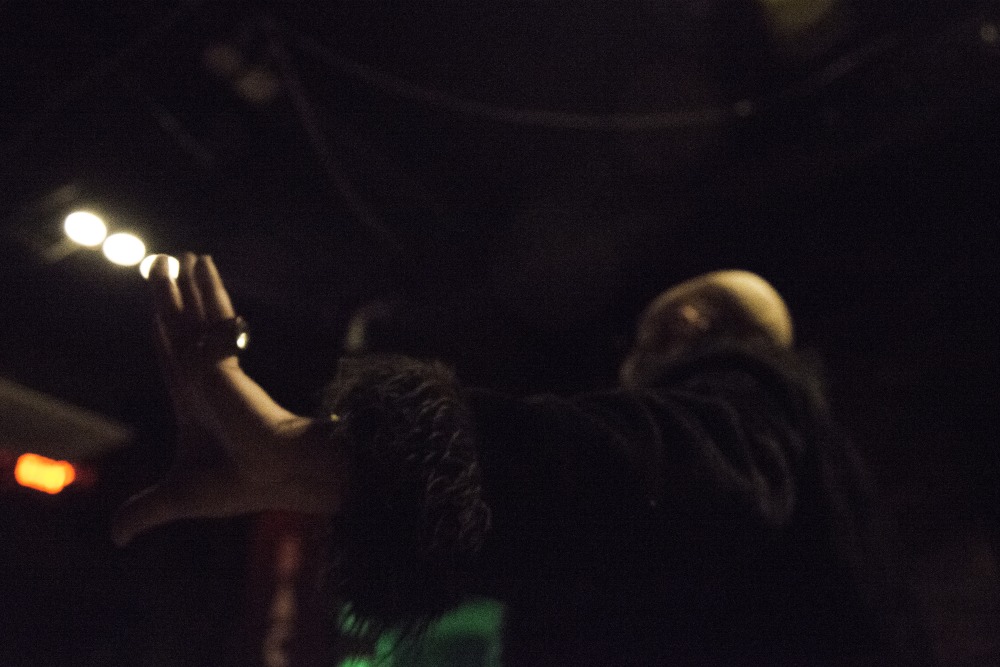
James (JAMi) Lyon: This body of work is to show how drag has become more accepted by the masses. Drag was born in the shadows throughout the years. With protesting, fighting for their rights, and countless souls lost to the cause, drag has finally became more mainstream and more widely accepted. The grain in the images is purposely done to show the rawness of where they came from and where they are going as a community.
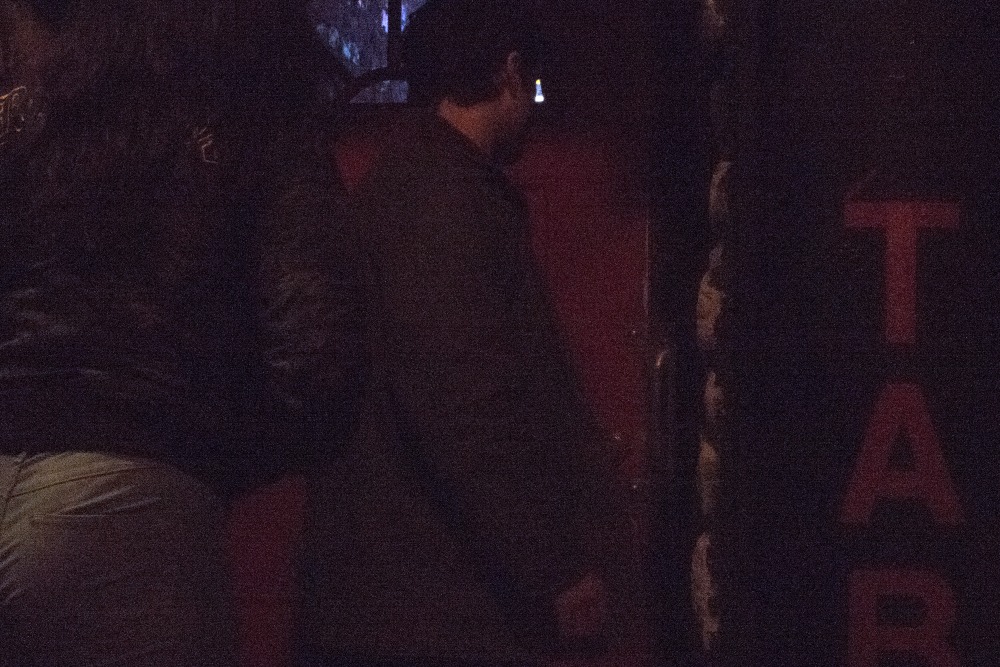
James (JAMi) Lyon: This body of work is to show how drag has become more accepted by the masses. Drag was born in the shadows throughout the years. With protesting, fighting for their rights, and countless souls lost to the cause, drag has finally became more mainstream and more widely accepted. The grain in the images is purposely done to show the rawness of where they came from and where they are going as a community.
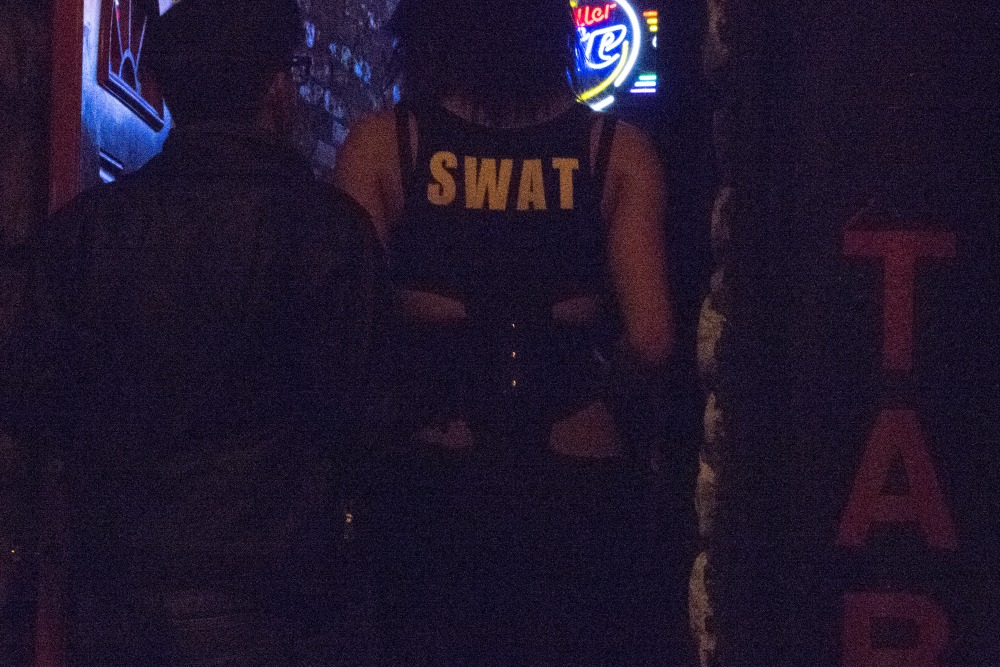
James (JAMi) Lyon: This body of work is to show how drag has become more accepted by the masses. Drag was born in the shadows throughout the years. With protesting, fighting for their rights, and countless souls lost to the cause, drag has finally became more mainstream and more widely accepted. The grain in the images is purposely done to show the rawness of where they came from and where they are going as a community.
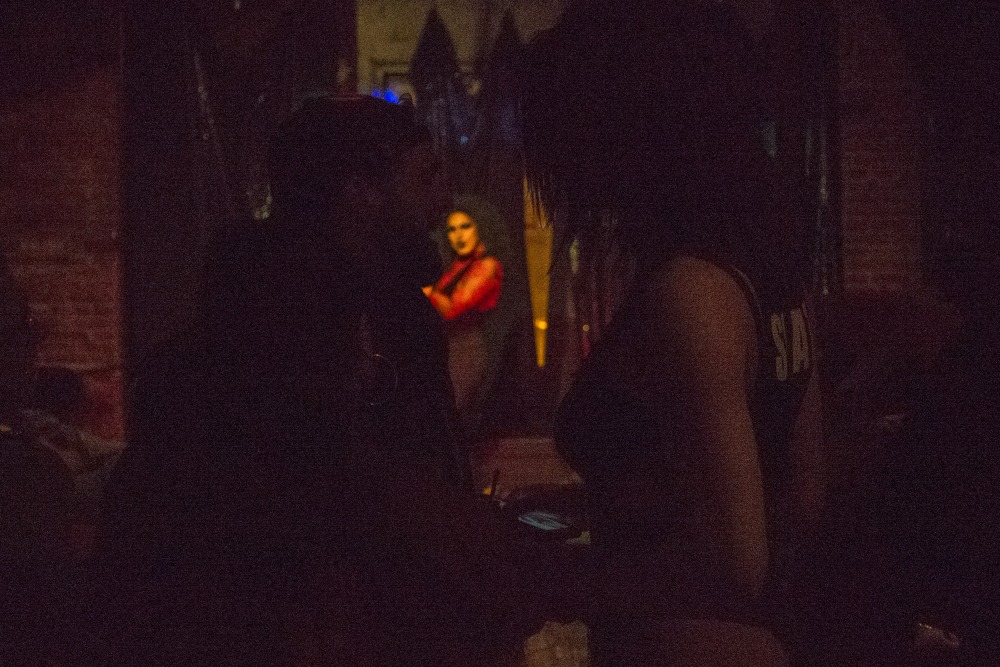
James (JAMi) Lyon: This body of work is to show how drag has become more accepted by the masses. Drag was born in the shadows throughout the years. With protesting, fighting for their rights, and countless souls lost to the cause, drag has finally became more mainstream and more widely accepted. The grain in the images is purposely done to show the rawness of where they came from and where they are going as a community.
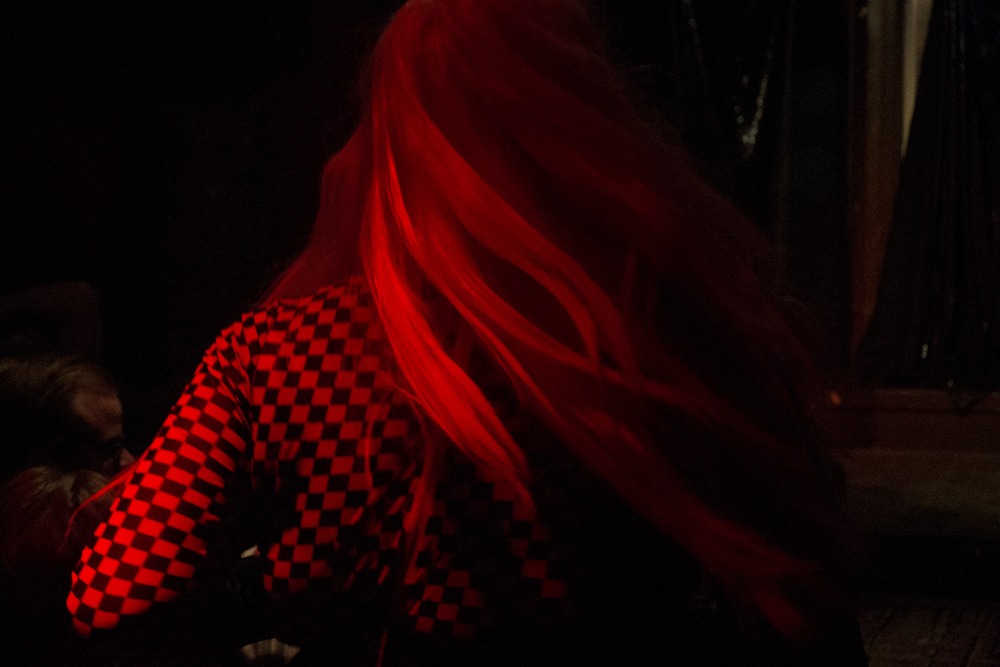
James (JAMi) Lyon: This body of work is to show how drag has become more accepted by the masses. Drag was born in the shadows throughout the years. With protesting, fighting for their rights, and countless souls lost to the cause, drag has finally became more mainstream and more widely accepted. The grain in the images is purposely done to show the rawness of where they came from and where they are going as a community.
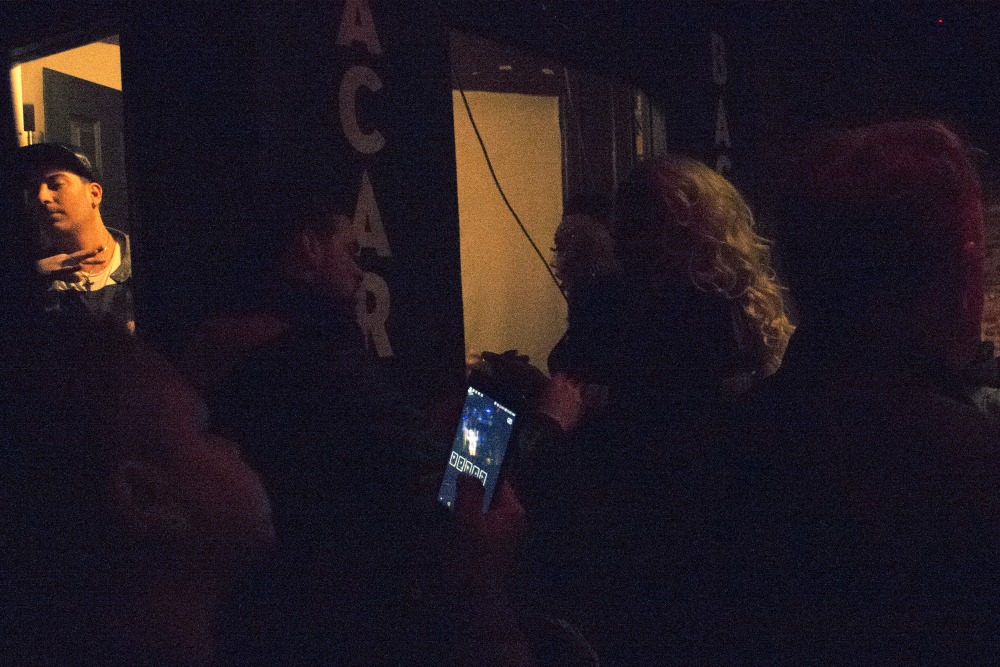
James (JAMi) Lyon: This body of work is to show how drag has become more accepted by the masses. Drag was born in the shadows throughout the years. With protesting, fighting for their rights, and countless souls lost to the cause, drag has finally became more mainstream and more widely accepted. The grain in the images is purposely done to show the rawness of where they came from and where they are going as a community.
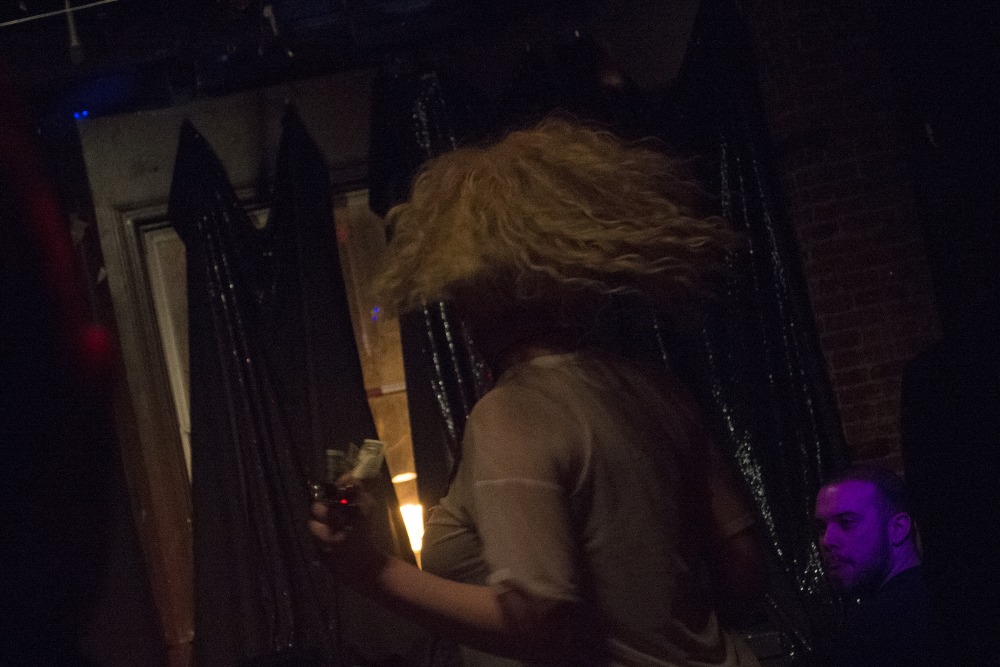
James (JAMi) Lyon: This body of work is to show how drag has become more accepted by the masses. Drag was born in the shadows throughout the years. With protesting, fighting for their rights, and countless souls lost to the cause, drag has finally became more mainstream and more widely accepted. The grain in the images is purposely done to show the rawness of where they came from and where they are going as a community.
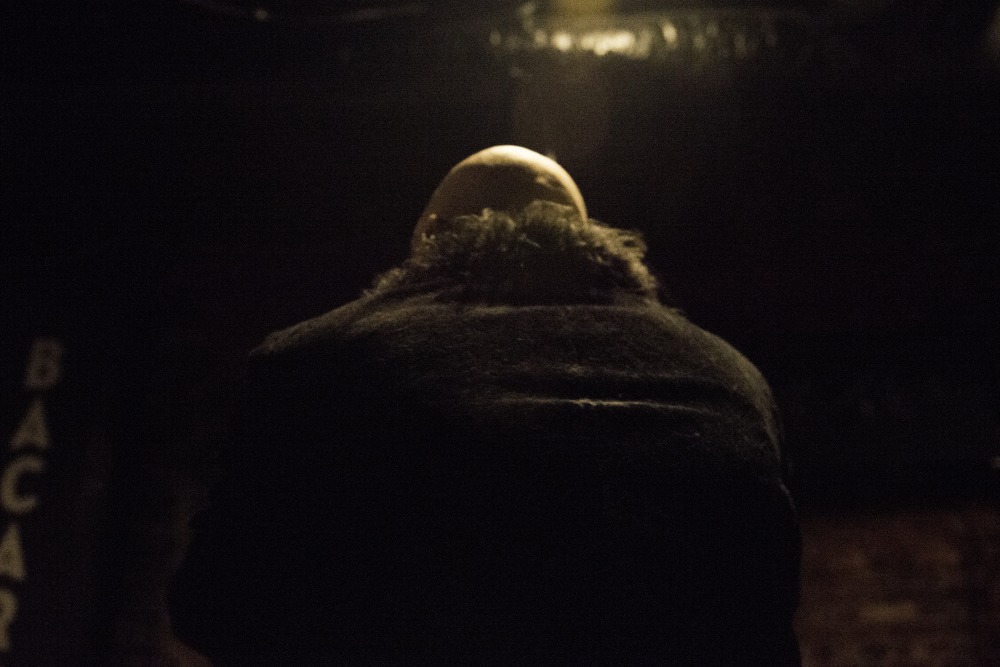
James (JAMi) Lyon: This body of work is to show how drag has become more accepted by the masses. Drag was born in the shadows throughout the years. With protesting, fighting for their rights, and countless souls lost to the cause, drag has finally became more mainstream and more widely accepted. The grain in the images is purposely done to show the rawness of where they came from and where they are going as a community.
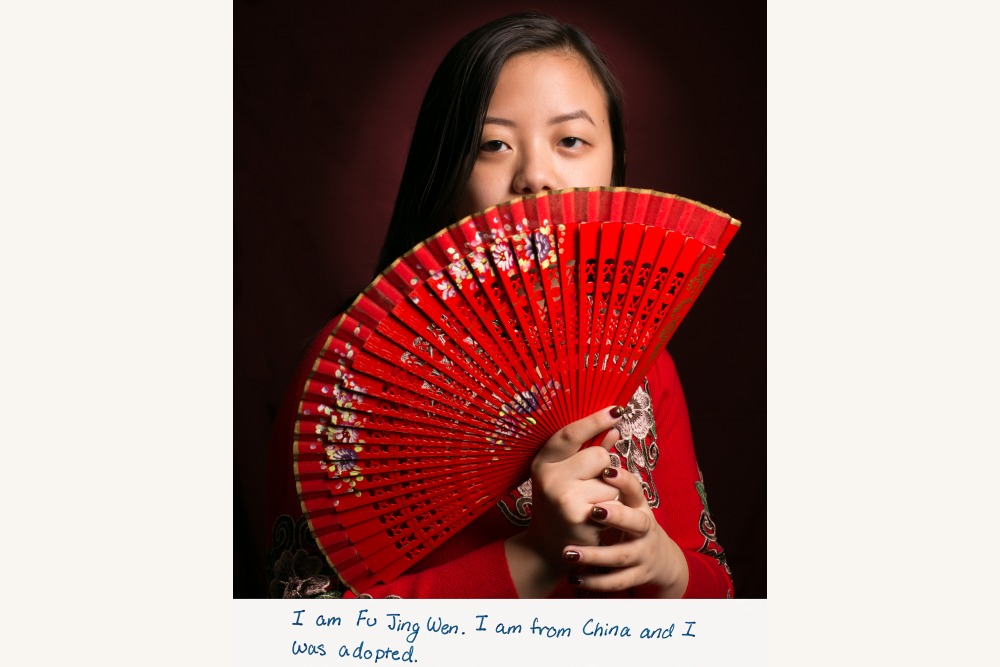
John Marie: I Am… - I Am… is a collaborative, personal, photographic investigation of my little sister, Nicole, who was adopted by our family from China in 2003. She was taken away from her blood relatives after birth due to the Two-Child Policy, which only allowed rural Chinese families to have two children. This series was inspired by an encounter my mother had when she brought Nicole to a ShopRite the week we came back to the States. A local shopper came up to her and said “Why did you bring one of those back?” This series tackles that question but through Nicole’s point of view. She has been an American citizen for fifteen years, but just recently started to analyze where she came from and where she is now. We delve into this through Nicole’s own thoughts about the opportunities she received in the United States that she would never had gotten had she stayed where she was in China. Before we adopted her, she was shuffled through various orphanages before landing with a foster mom, waiting to be adopted by a family. This was accomplished by having her initially write out these opportunities on her own before shooting. This allowed the imagery to be 100% inspired and interpreted by her own feelings, not anyone else’s. My images, paired with her handwritten text, gives the viewer an in-depth look at an immigration story gone right; a look at what happens when you give a girl an education and a warm bed; a look at a young girl who recognizes what it means to be an American citizen through adoption, which ultimately gave her an opportunity at a better life.
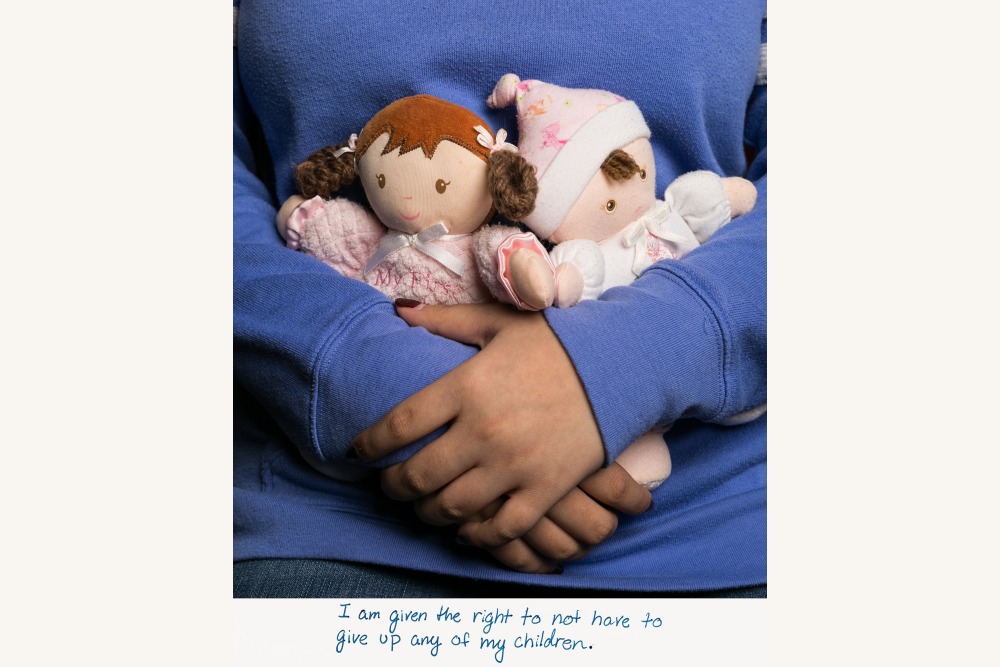
John Marie: I Am… - I Am… is a collaborative, personal, photographic investigation of my little sister, Nicole, who was adopted by our family from China in 2003. She was taken away from her blood relatives after birth due to the Two-Child Policy, which only allowed rural Chinese families to have two children. This series was inspired by an encounter my mother had when she brought Nicole to a ShopRite the week we came back to the States. A local shopper came up to her and said “Why did you bring one of those back?” This series tackles that question but through Nicole’s point of view. She has been an American citizen for fifteen years, but just recently started to analyze where she came from and where she is now. We delve into this through Nicole’s own thoughts about the opportunities she received in the United States that she would never had gotten had she stayed where she was in China. Before we adopted her, she was shuffled through various orphanages before landing with a foster mom, waiting to be adopted by a family. This was accomplished by having her initially write out these opportunities on her own before shooting. This allowed the imagery to be 100% inspired and interpreted by her own feelings, not anyone else’s. My images, paired with her handwritten text, gives the viewer an in-depth look at an immigration story gone right; a look at what happens when you give a girl an education and a warm bed; a look at a young girl who recognizes what it means to be an American citizen through adoption, which ultimately gave her an opportunity at a better life.
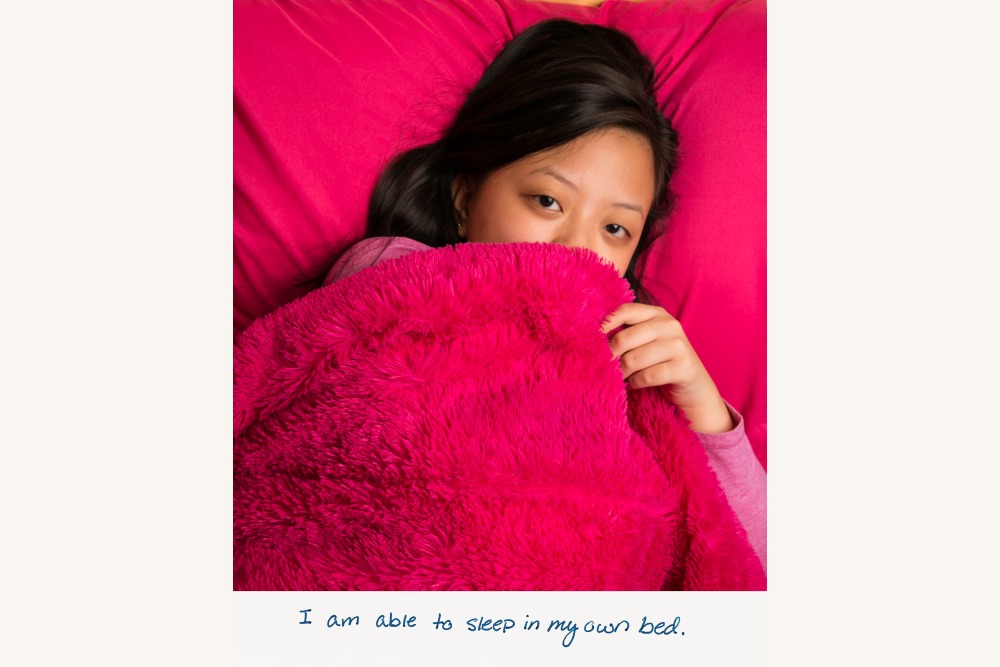
John Marie: I Am… - I Am… is a collaborative, personal, photographic investigation of my little sister, Nicole, who was adopted by our family from China in 2003. She was taken away from her blood relatives after birth due to the Two-Child Policy, which only allowed rural Chinese families to have two children. This series was inspired by an encounter my mother had when she brought Nicole to a ShopRite the week we came back to the States. A local shopper came up to her and said “Why did you bring one of those back?” This series tackles that question but through Nicole’s point of view. She has been an American citizen for fifteen years, but just recently started to analyze where she came from and where she is now. We delve into this through Nicole’s own thoughts about the opportunities she received in the United States that she would never had gotten had she stayed where she was in China. Before we adopted her, she was shuffled through various orphanages before landing with a foster mom, waiting to be adopted by a family. This was accomplished by having her initially write out these opportunities on her own before shooting. This allowed the imagery to be 100% inspired and interpreted by her own feelings, not anyone else’s. My images, paired with her handwritten text, gives the viewer an in-depth look at an immigration story gone right; a look at what happens when you give a girl an education and a warm bed; a look at a young girl who recognizes what it means to be an American citizen through adoption, which ultimately gave her an opportunity at a better life.

John Marie: I Am… - I Am… is a collaborative, personal, photographic investigation of my little sister, Nicole, who was adopted by our family from China in 2003. She was taken away from her blood relatives after birth due to the Two-Child Policy, which only allowed rural Chinese families to have two children. This series was inspired by an encounter my mother had when she brought Nicole to a ShopRite the week we came back to the States. A local shopper came up to her and said “Why did you bring one of those back?” This series tackles that question but through Nicole’s point of view. She has been an American citizen for fifteen years, but just recently started to analyze where she came from and where she is now. We delve into this through Nicole’s own thoughts about the opportunities she received in the United States that she would never had gotten had she stayed where she was in China. Before we adopted her, she was shuffled through various orphanages before landing with a foster mom, waiting to be adopted by a family. This was accomplished by having her initially write out these opportunities on her own before shooting. This allowed the imagery to be 100% inspired and interpreted by her own feelings, not anyone else’s. My images, paired with her handwritten text, gives the viewer an in-depth look at an immigration story gone right; a look at what happens when you give a girl an education and a warm bed; a look at a young girl who recognizes what it means to be an American citizen through adoption, which ultimately gave her an opportunity at a better life.
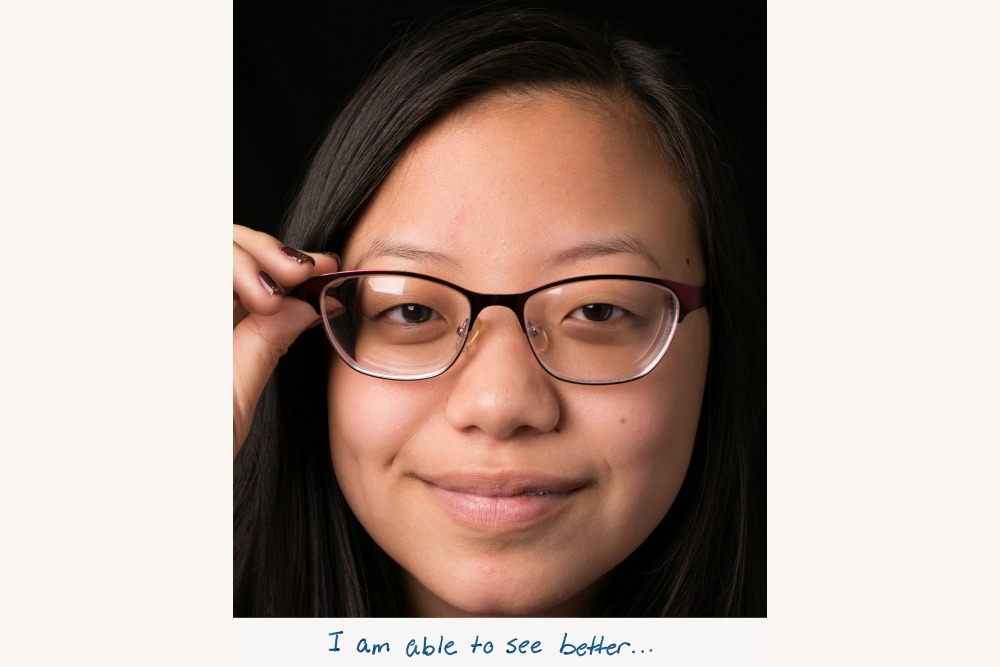
John Marie: I Am… - I Am… is a collaborative, personal, photographic investigation of my little sister, Nicole, who was adopted by our family from China in 2003. She was taken away from her blood relatives after birth due to the Two-Child Policy, which only allowed rural Chinese families to have two children. This series was inspired by an encounter my mother had when she brought Nicole to a ShopRite the week we came back to the States. A local shopper came up to her and said “Why did you bring one of those back?” This series tackles that question but through Nicole’s point of view. She has been an American citizen for fifteen years, but just recently started to analyze where she came from and where she is now. We delve into this through Nicole’s own thoughts about the opportunities she received in the United States that she would never had gotten had she stayed where she was in China. Before we adopted her, she was shuffled through various orphanages before landing with a foster mom, waiting to be adopted by a family. This was accomplished by having her initially write out these opportunities on her own before shooting. This allowed the imagery to be 100% inspired and interpreted by her own feelings, not anyone else’s. My images, paired with her handwritten text, gives the viewer an in-depth look at an immigration story gone right; a look at what happens when you give a girl an education and a warm bed; a look at a young girl who recognizes what it means to be an American citizen through adoption, which ultimately gave her an opportunity at a better life.

John Marie: I Am… - I Am… is a collaborative, personal, photographic investigation of my little sister, Nicole, who was adopted by our family from China in 2003. She was taken away from her blood relatives after birth due to the Two-Child Policy, which only allowed rural Chinese families to have two children. This series was inspired by an encounter my mother had when she brought Nicole to a ShopRite the week we came back to the States. A local shopper came up to her and said “Why did you bring one of those back?” This series tackles that question but through Nicole’s point of view. She has been an American citizen for fifteen years, but just recently started to analyze where she came from and where she is now. We delve into this through Nicole’s own thoughts about the opportunities she received in the United States that she would never had gotten had she stayed where she was in China. Before we adopted her, she was shuffled through various orphanages before landing with a foster mom, waiting to be adopted by a family. This was accomplished by having her initially write out these opportunities on her own before shooting. This allowed the imagery to be 100% inspired and interpreted by her own feelings, not anyone else’s. My images, paired with her handwritten text, gives the viewer an in-depth look at an immigration story gone right; a look at what happens when you give a girl an education and a warm bed; a look at a young girl who recognizes what it means to be an American citizen through adoption, which ultimately gave her an opportunity at a better life.
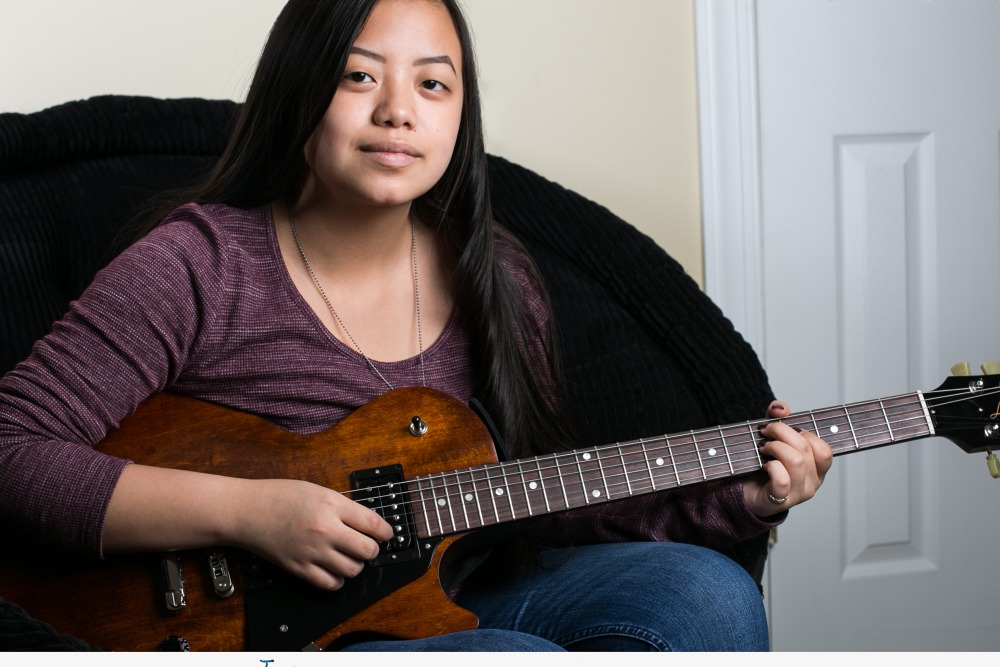
John Marie: I Am… - I Am… is a collaborative, personal, photographic investigation of my little sister, Nicole, who was adopted by our family from China in 2003. She was taken away from her blood relatives after birth due to the Two-Child Policy, which only allowed rural Chinese families to have two children. This series was inspired by an encounter my mother had when she brought Nicole to a ShopRite the week we came back to the States. A local shopper came up to her and said “Why did you bring one of those back?” This series tackles that question but through Nicole’s point of view. She has been an American citizen for fifteen years, but just recently started to analyze where she came from and where she is now. We delve into this through Nicole’s own thoughts about the opportunities she received in the United States that she would never had gotten had she stayed where she was in China. Before we adopted her, she was shuffled through various orphanages before landing with a foster mom, waiting to be adopted by a family. This was accomplished by having her initially write out these opportunities on her own before shooting. This allowed the imagery to be 100% inspired and interpreted by her own feelings, not anyone else’s. My images, paired with her handwritten text, gives the viewer an in-depth look at an immigration story gone right; a look at what happens when you give a girl an education and a warm bed; a look at a young girl who recognizes what it means to be an American citizen through adoption, which ultimately gave her an opportunity at a better life.
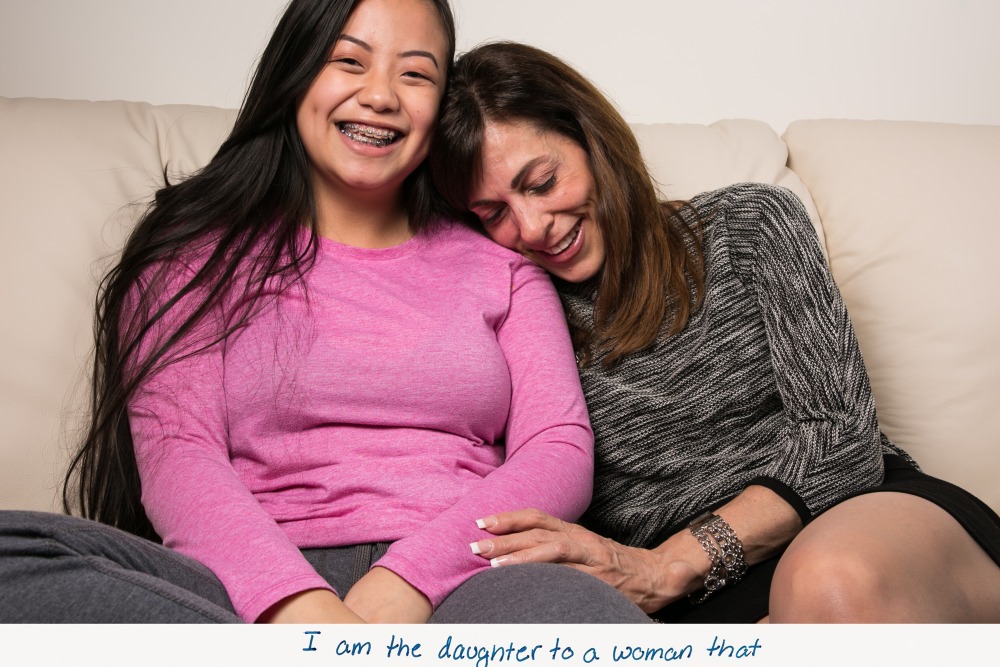
John Marie: I Am… - I Am… is a collaborative, personal, photographic investigation of my little sister, Nicole, who was adopted by our family from China in 2003. She was taken away from her blood relatives after birth due to the Two-Child Policy, which only allowed rural Chinese families to have two children. This series was inspired by an encounter my mother had when she brought Nicole to a ShopRite the week we came back to the States. A local shopper came up to her and said “Why did you bring one of those back?” This series tackles that question but through Nicole’s point of view. She has been an American citizen for fifteen years, but just recently started to analyze where she came from and where she is now. We delve into this through Nicole’s own thoughts about the opportunities she received in the United States that she would never had gotten had she stayed where she was in China. Before we adopted her, she was shuffled through various orphanages before landing with a foster mom, waiting to be adopted by a family. This was accomplished by having her initially write out these opportunities on her own before shooting. This allowed the imagery to be 100% inspired and interpreted by her own feelings, not anyone else’s. My images, paired with her handwritten text, gives the viewer an in-depth look at an immigration story gone right; a look at what happens when you give a girl an education and a warm bed; a look at a young girl who recognizes what it means to be an American citizen through adoption, which ultimately gave her an opportunity at a better life.
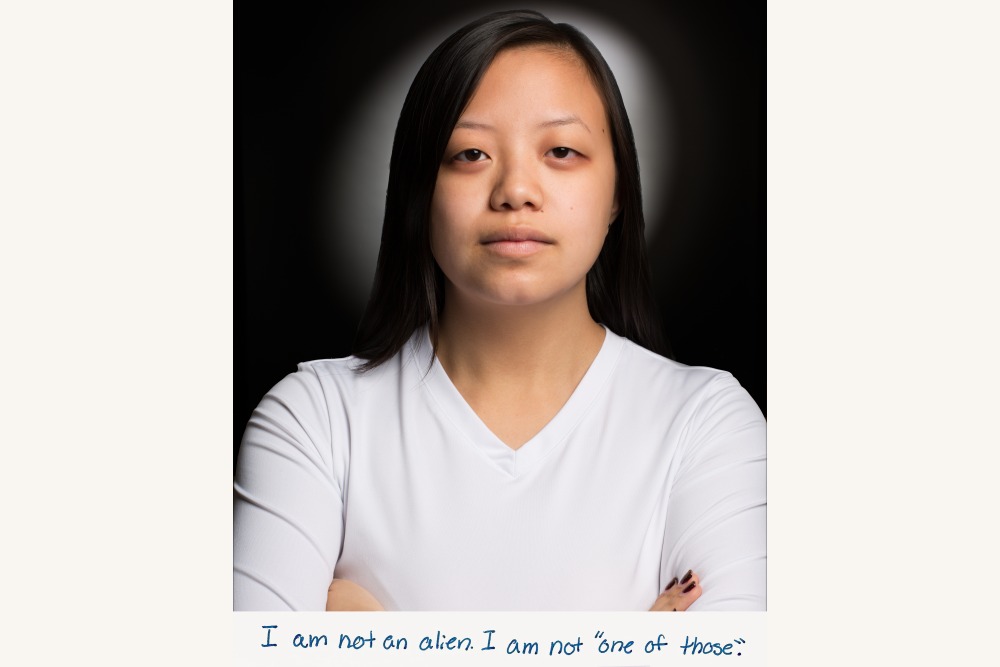
John Marie: I Am… - I Am… is a collaborative, personal, photographic investigation of my little sister, Nicole, who was adopted by our family from China in 2003. She was taken away from her blood relatives after birth due to the Two-Child Policy, which only allowed rural Chinese families to have two children. This series was inspired by an encounter my mother had when she brought Nicole to a ShopRite the week we came back to the States. A local shopper came up to her and said “Why did you bring one of those back?” This series tackles that question but through Nicole’s point of view. She has been an American citizen for fifteen years, but just recently started to analyze where she came from and where she is now. We delve into this through Nicole’s own thoughts about the opportunities she received in the United States that she would never had gotten had she stayed where she was in China. Before we adopted her, she was shuffled through various orphanages before landing with a foster mom, waiting to be adopted by a family. This was accomplished by having her initially write out these opportunities on her own before shooting. This allowed the imagery to be 100% inspired and interpreted by her own feelings, not anyone else’s. My images, paired with her handwritten text, gives the viewer an in-depth look at an immigration story gone right; a look at what happens when you give a girl an education and a warm bed; a look at a young girl who recognizes what it means to be an American citizen through adoption, which ultimately gave her an opportunity at a better life.
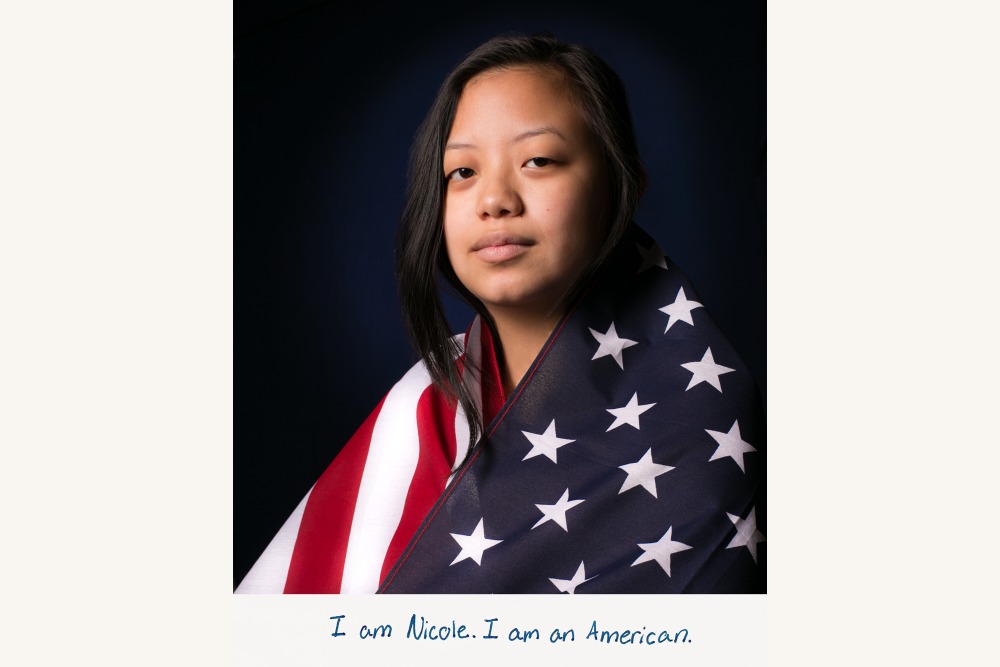
John Marie: I Am… - I Am… is a collaborative, personal, photographic investigation of my little sister, Nicole, who was adopted by our family from China in 2003. She was taken away from her blood relatives after birth due to the Two-Child Policy, which only allowed rural Chinese families to have two children. This series was inspired by an encounter my mother had when she brought Nicole to a ShopRite the week we came back to the States. A local shopper came up to her and said “Why did you bring one of those back?” This series tackles that question but through Nicole’s point of view. She has been an American citizen for fifteen years, but just recently started to analyze where she came from and where she is now. We delve into this through Nicole’s own thoughts about the opportunities she received in the United States that she would never had gotten had she stayed where she was in China. Before we adopted her, she was shuffled through various orphanages before landing with a foster mom, waiting to be adopted by a family. This was accomplished by having her initially write out these opportunities on her own before shooting. This allowed the imagery to be 100% inspired and interpreted by her own feelings, not anyone else’s. My images, paired with her handwritten text, gives the viewer an in-depth look at an immigration story gone right; a look at what happens when you give a girl an education and a warm bed; a look at a young girl who recognizes what it means to be an American citizen through adoption, which ultimately gave her an opportunity at a better life.
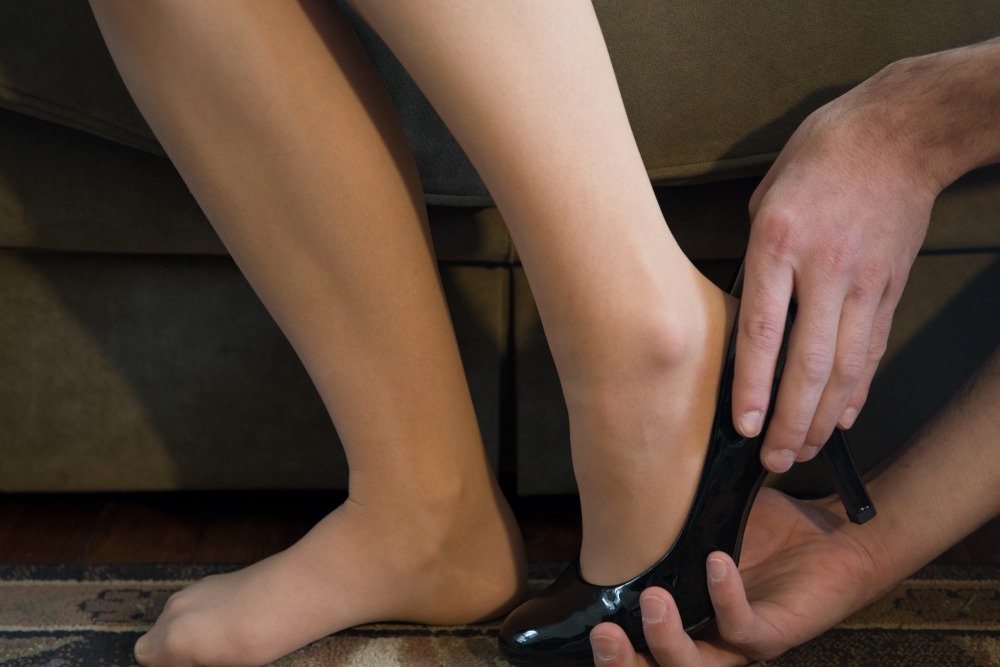
Liz Waldie: Stasis - Women’s roles and status have been defined by social and political rules and expectations, and today these issues have reached a plateau where little to no change has occurred. The wage gap still exists, birth control is not always covered by healthcare, women are constantly held under the pressure to look a certain way, and sexual and domestic assault can lead to a cycle of poverty and job loss. The title “Stasis” refers to the feeling of not moving as well as this constant state of fear and pressure. This series of self portraits paints a picture not only of the situations I have struggled with as a woman but recurring problems many women deal with daily.
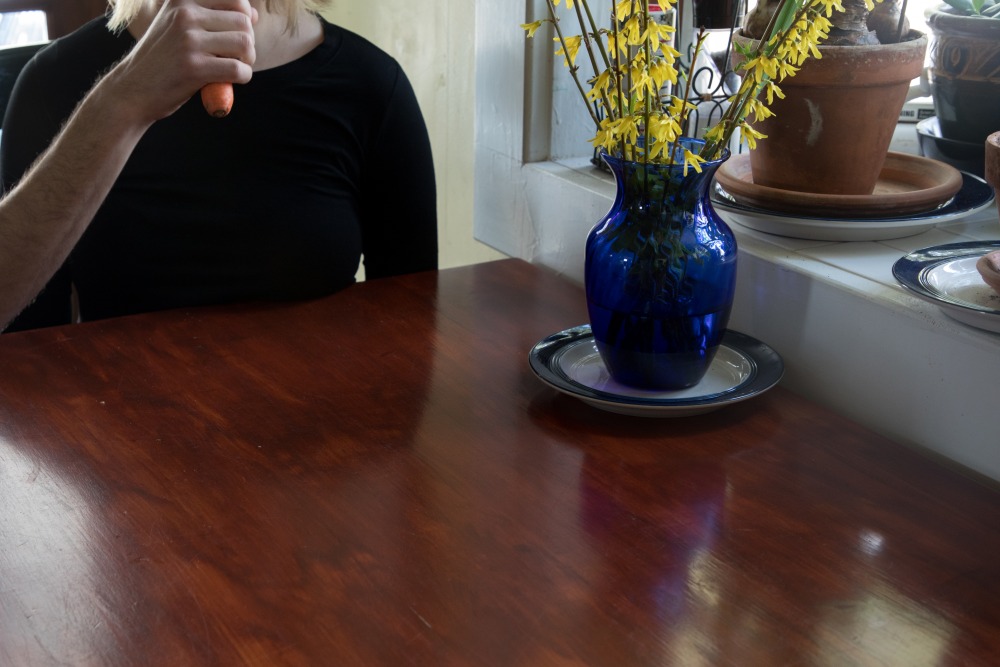
Liz Waldie: Stasis - Women’s roles and status have been defined by social and political rules and expectations, and today these issues have reached a plateau where little to no change has occurred. The wage gap still exists, birth control is not always covered by healthcare, women are constantly held under the pressure to look a certain way, and sexual and domestic assault can lead to a cycle of poverty and job loss. The title “Stasis” refers to the feeling of not moving as well as this constant state of fear and pressure. This series of self portraits paints a picture not only of the situations I have struggled with as a woman but recurring problems many women deal with daily.

Liz Waldie: Stasis - Women’s roles and status have been defined by social and political rules and expectations, and today these issues have reached a plateau where little to no change has occurred. The wage gap still exists, birth control is not always covered by healthcare, women are constantly held under the pressure to look a certain way, and sexual and domestic assault can lead to a cycle of poverty and job loss. The title “Stasis” refers to the feeling of not moving as well as this constant state of fear and pressure. This series of self portraits paints a picture not only of the situations I have struggled with as a woman but recurring problems many women deal with daily.
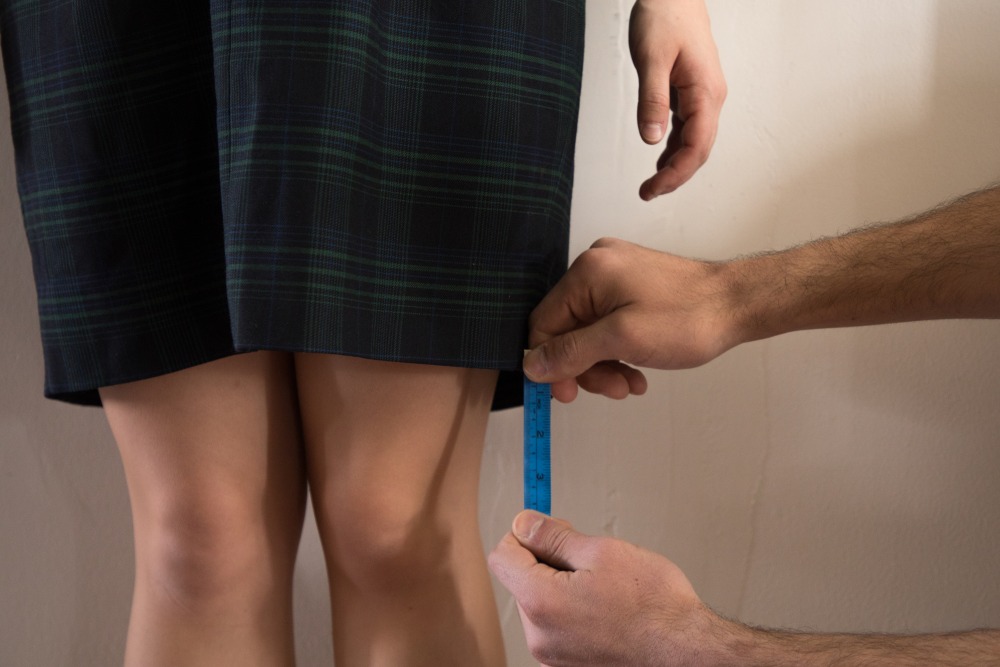
Liz Waldie: Stasis - Women’s roles and status have been defined by social and political rules and expectations, and today these issues have reached a plateau where little to no change has occurred. The wage gap still exists, birth control is not always covered by healthcare, women are constantly held under the pressure to look a certain way, and sexual and domestic assault can lead to a cycle of poverty and job loss. The title “Stasis” refers to the feeling of not moving as well as this constant state of fear and pressure. This series of self portraits paints a picture not only of the situations I have struggled with as a woman but recurring problems many women deal with daily.
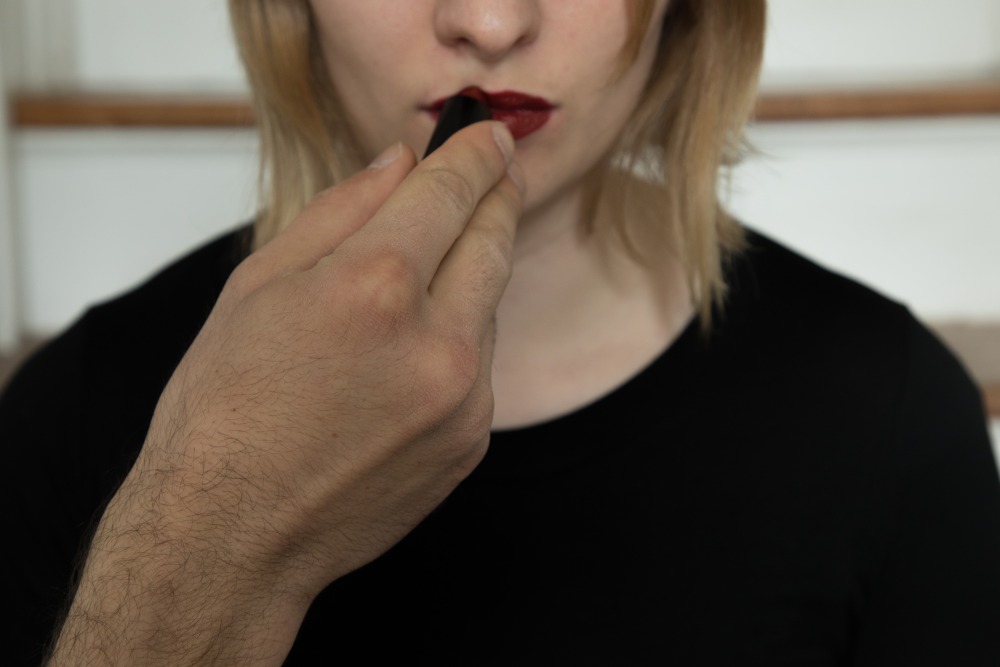
Liz Waldie: Stasis - Women’s roles and status have been defined by social and political rules and expectations, and today these issues have reached a plateau where little to no change has occurred. The wage gap still exists, birth control is not always covered by healthcare, women are constantly held under the pressure to look a certain way, and sexual and domestic assault can lead to a cycle of poverty and job loss. The title “Stasis” refers to the feeling of not moving as well as this constant state of fear and pressure. This series of self portraits paints a picture not only of the situations I have struggled with as a woman but recurring problems many women deal with daily.
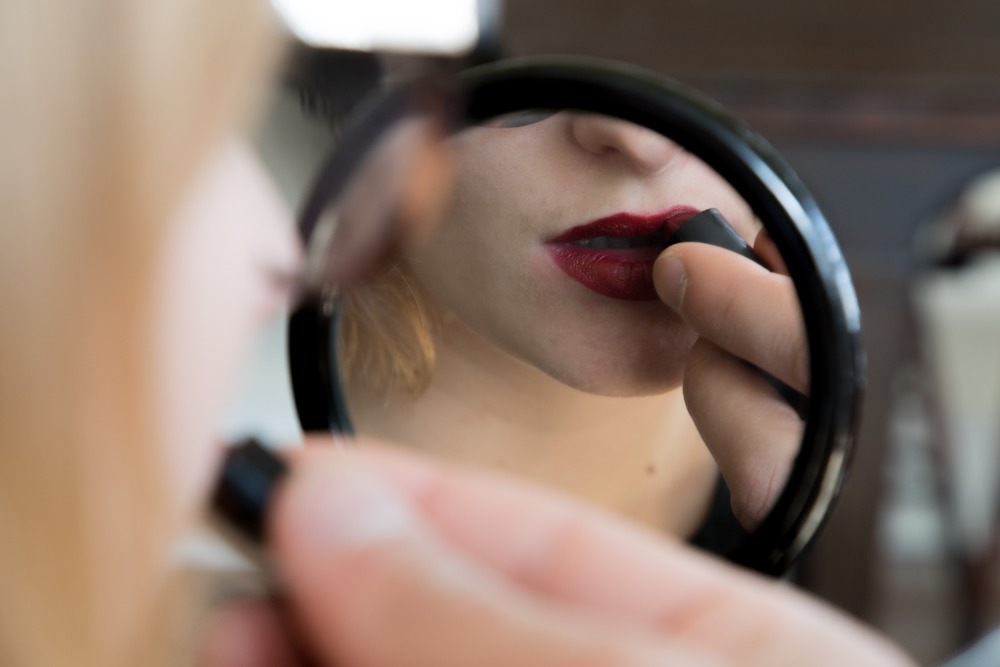
Liz Waldie: Stasis - Women’s roles and status have been defined by social and political rules and expectations, and today these issues have reached a plateau where little to no change has occurred. The wage gap still exists, birth control is not always covered by healthcare, women are constantly held under the pressure to look a certain way, and sexual and domestic assault can lead to a cycle of poverty and job loss. The title “Stasis” refers to the feeling of not moving as well as this constant state of fear and pressure. This series of self portraits paints a picture not only of the situations I have struggled with as a woman but recurring problems many women deal with daily.
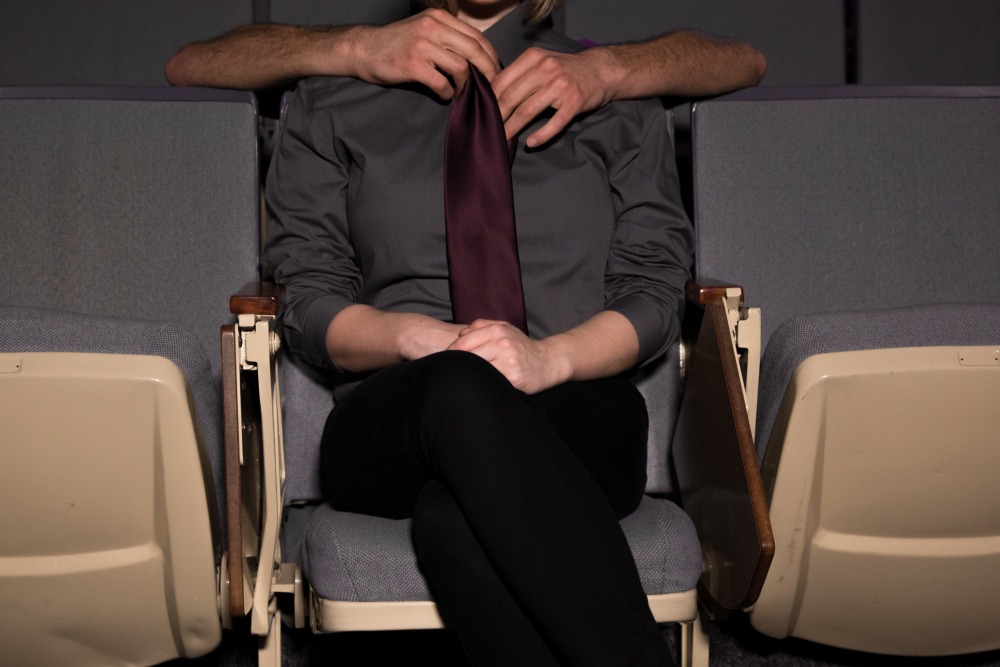
Liz Waldie: Stasis - Women’s roles and status have been defined by social and political rules and expectations, and today these issues have reached a plateau where little to no change has occurred. The wage gap still exists, birth control is not always covered by healthcare, women are constantly held under the pressure to look a certain way, and sexual and domestic assault can lead to a cycle of poverty and job loss. The title “Stasis” refers to the feeling of not moving as well as this constant state of fear and pressure. This series of self portraits paints a picture not only of the situations I have struggled with as a woman but recurring problems many women deal with daily.
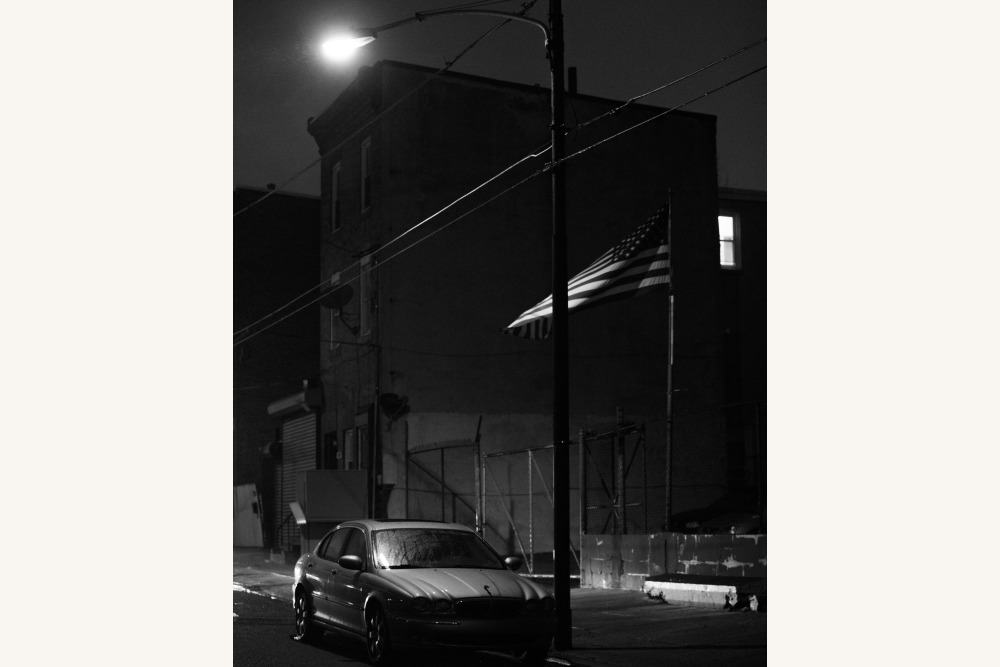
Sam (S.) Malandra-Myers: Acceptance - Through working at night in this series, I am conveying a sense of invisibility that immigrants, and, specifically, undocumented immigrants, experience. By adding the contrast of the light, I am highlighting a tension that is apparent in the current politics in America surrounding topics such as illegal immigration, the U.S.-Mexico border wall, and DACA. The incorporation of the figure focuses on the placement of individuals moving into a spotlight to work as activists for a silenced community, like the many DACA students attending university in the USA who have self-disclosed their immigration status during public speaking engagements, such as valedictorian and Yale student Larissa Martinez.
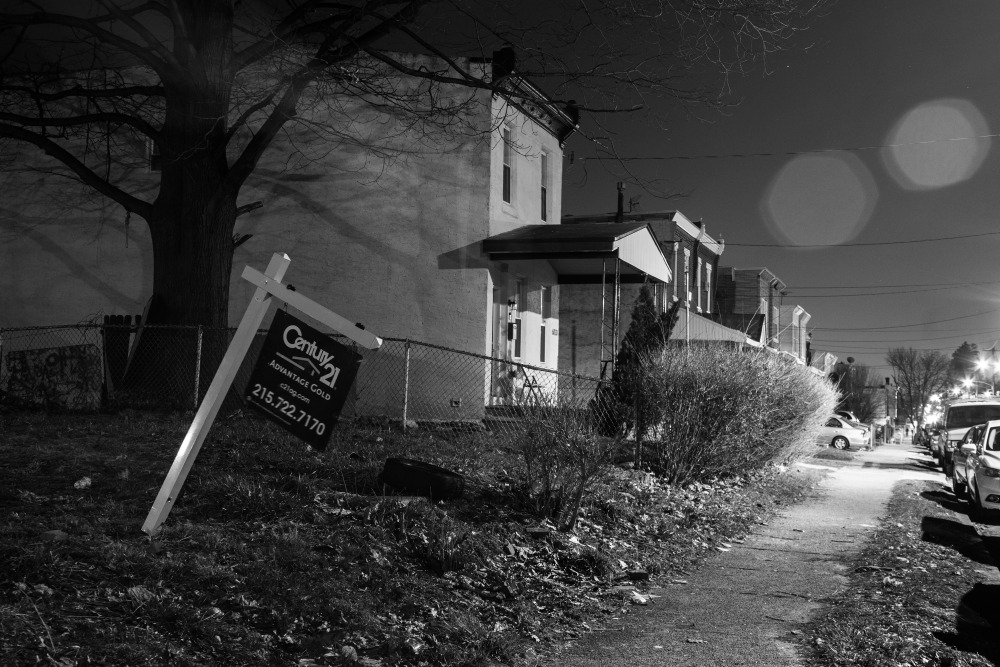
Sam (S.) Malandra-Myers: Challenging - Through working at night in this series, I am conveying a sense of invisibility that immigrants, and, specifically, undocumented immigrants, experience. By adding the contrast of the light, I am highlighting a tension that is apparent in the current politics in America surrounding topics such as illegal immigration, the U.S.-Mexico border wall, and DACA. The incorporation of the figure focuses on the placement of individuals moving into a spotlight to work as activists for a silenced community, like the many DACA students attending university in the USA who have self-disclosed their immigration status during public speaking engagements, such as valedictorian and Yale student Larissa Martinez.
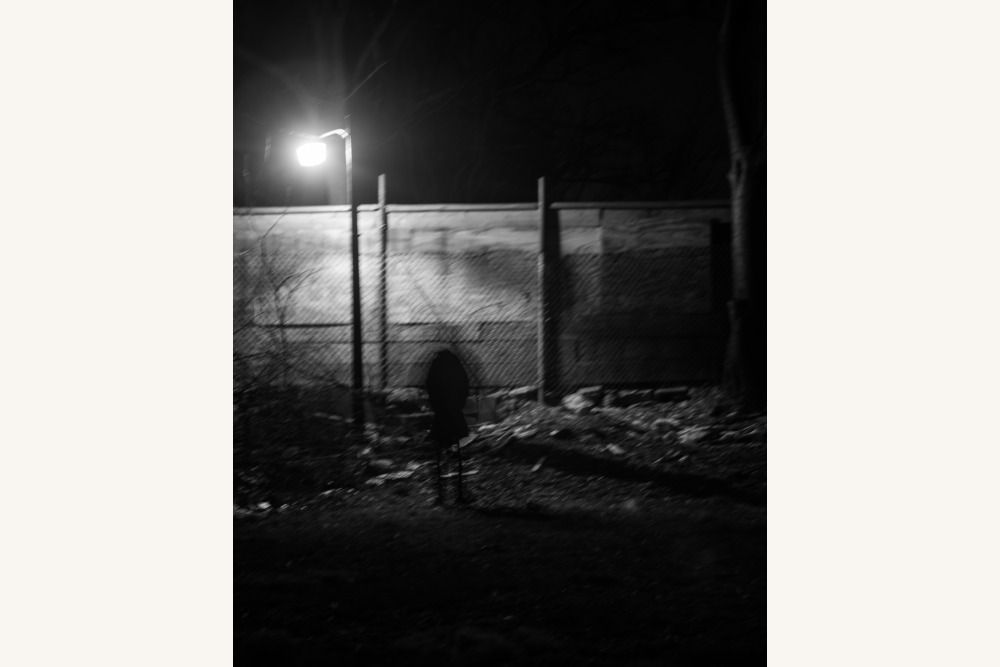
Sam (S.) Malandra-Myers: Evolving - Through working at night in this series, I am conveying a sense of invisibility that immigrants, and, specifically, undocumented immigrants, experience. By adding the contrast of the light, I am highlighting a tension that is apparent in the current politics in America surrounding topics such as illegal immigration, the U.S.-Mexico border wall, and DACA. The incorporation of the figure focuses on the placement of individuals moving into a spotlight to work as activists for a silenced community, like the many DACA students attending university in the USA who have self-disclosed their immigration status during public speaking engagements, such as valedictorian and Yale student Larissa Martinez.
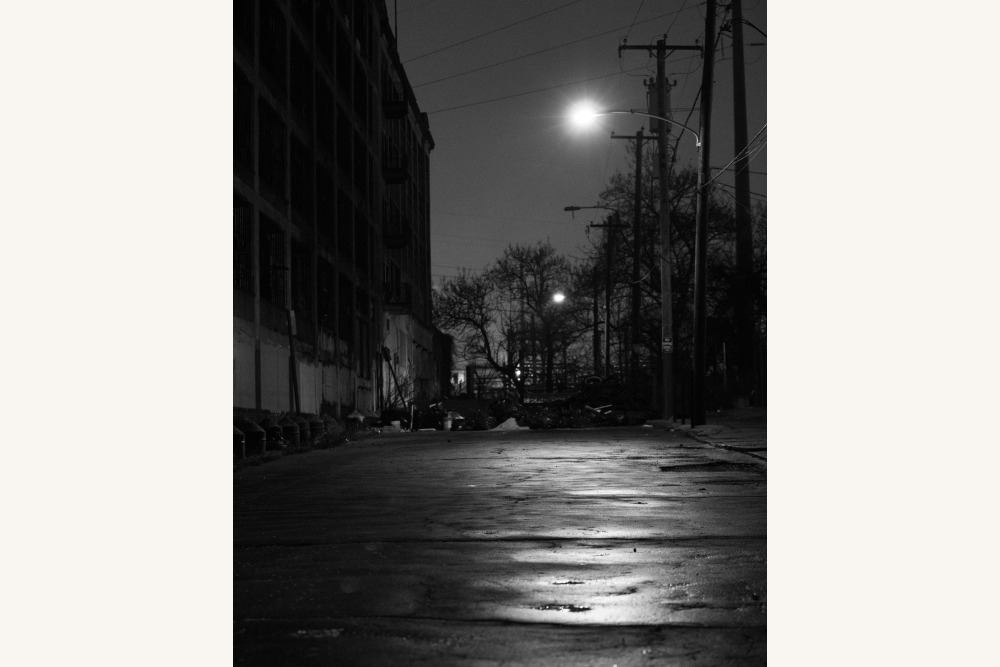
Sam (S.) Malandra-Myers: Identifying - Through working at night in this series, I am conveying a sense of invisibility that immigrants, and, specifically, undocumented immigrants, experience. By adding the contrast of the light, I am highlighting a tension that is apparent in the current politics in America surrounding topics such as illegal immigration, the U.S.-Mexico border wall, and DACA. The incorporation of the figure focuses on the placement of individuals moving into a spotlight to work as activists for a silenced community, like the many DACA students attending university in the USA who have self-disclosed their immigration status during public speaking engagements, such as valedictorian and Yale student Larissa Martinez.
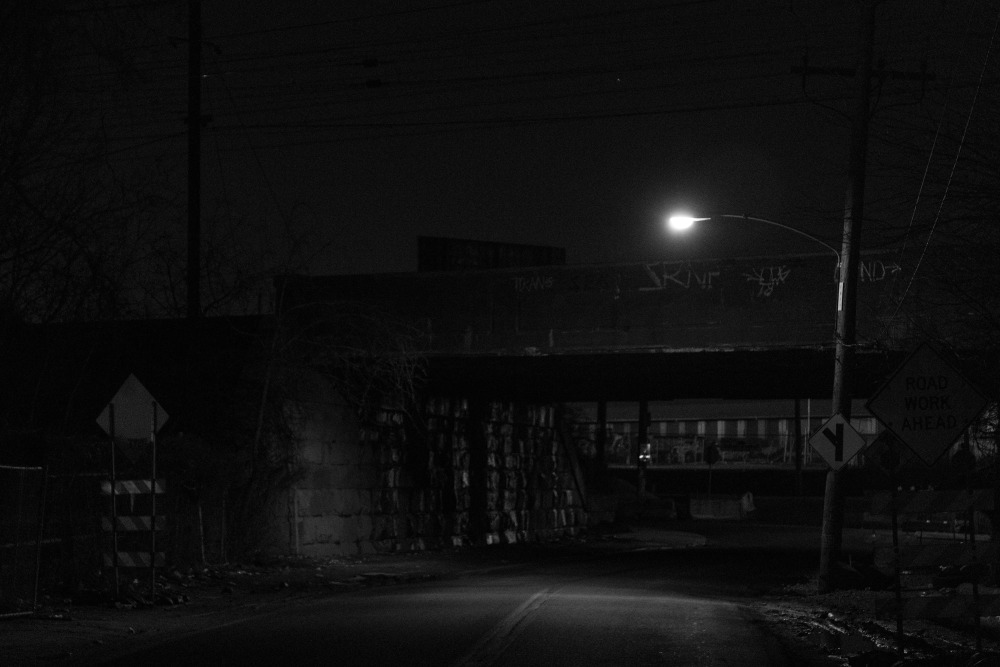
Sam (S.) Malandra-Myers: Invisible - Through working at night in this series, I am conveying a sense of invisibility that immigrants, and, specifically, undocumented immigrants, experience. By adding the contrast of the light, I am highlighting a tension that is apparent in the current politics in America surrounding topics such as illegal immigration, the U.S.-Mexico border wall, and DACA. The incorporation of the figure focuses on the placement of individuals moving into a spotlight to work as activists for a silenced community, like the many DACA students attending university in the USA who have self-disclosed their immigration status during public speaking engagements, such as valedictorian and Yale student Larissa Martinez.
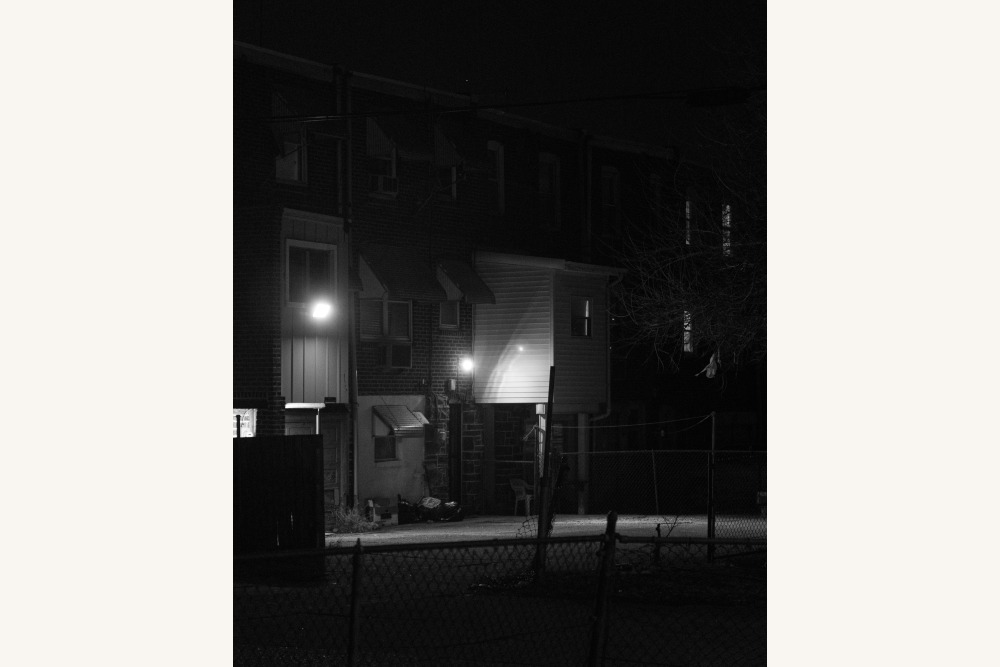
Sam (S.) Malandra-Myers: Permeating - Through working at night in this series, I am conveying a sense of invisibility that immigrants, and, specifically, undocumented immigrants, experience. By adding the contrast of the light, I am highlighting a tension that is apparent in the current politics in America surrounding topics such as illegal immigration, the U.S.-Mexico border wall, and DACA. The incorporation of the figure focuses on the placement of individuals moving into a spotlight to work as activists for a silenced community, like the many DACA students attending university in the USA who have self-disclosed their immigration status during public speaking engagements, such as valedictorian and Yale student Larissa Martinez.
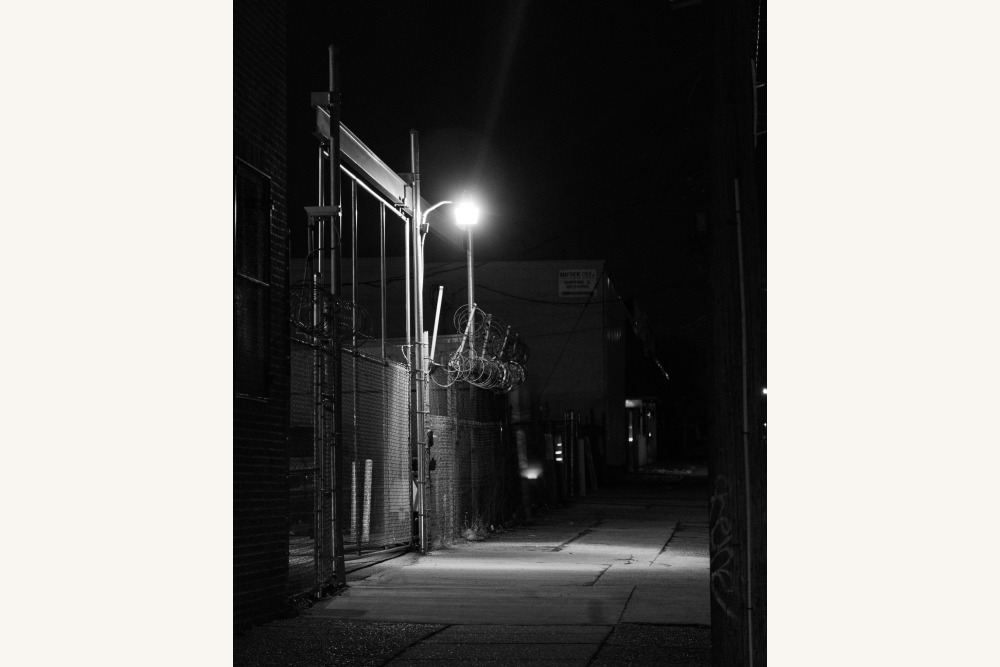
Sam (S.) Malandra-Myers: Questioning - Through working at night in this series, I am conveying a sense of invisibility that immigrants, and, specifically, undocumented immigrants, experience. By adding the contrast of the light, I am highlighting a tension that is apparent in the current politics in America surrounding topics such as illegal immigration, the U.S.-Mexico border wall, and DACA. The incorporation of the figure focuses on the placement of individuals moving into a spotlight to work as activists for a silenced community, like the many DACA students attending university in the USA who have self-disclosed their immigration status during public speaking engagements, such as valedictorian and Yale student Larissa Martinez.
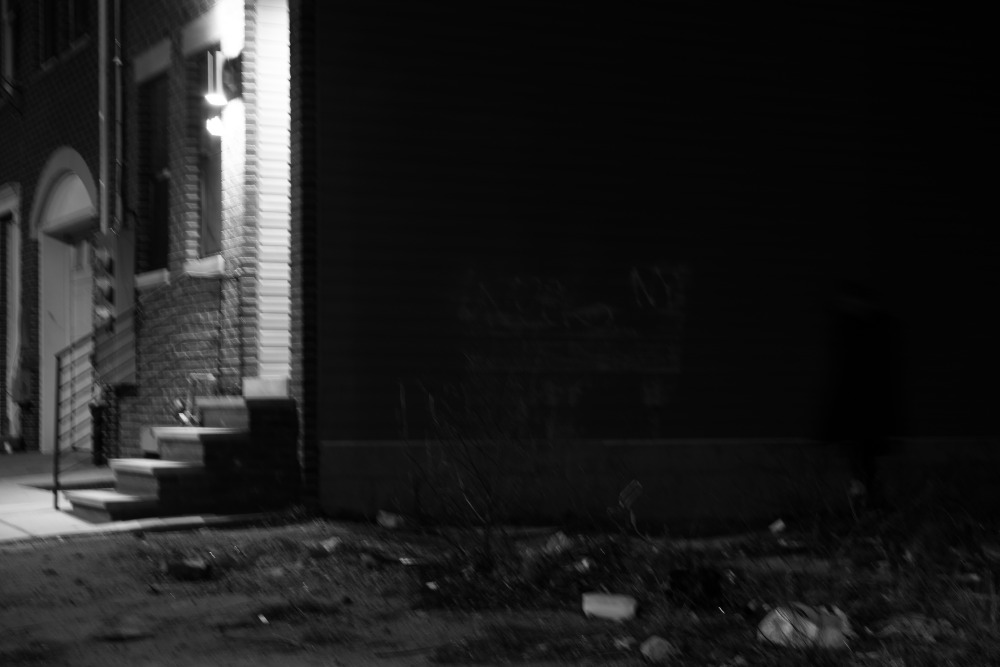
Sam (S.) Malandra-Myers: Reaching - Through working at night in this series, I am conveying a sense of invisibility that immigrants, and, specifically, undocumented immigrants, experience. By adding the contrast of the light, I am highlighting a tension that is apparent in the current politics in America surrounding topics such as illegal immigration, the U.S.-Mexico border wall, and DACA. The incorporation of the figure focuses on the placement of individuals moving into a spotlight to work as activists for a silenced community, like the many DACA students attending university in the USA who have self-disclosed their immigration status during public speaking engagements, such as valedictorian and Yale student Larissa Martinez.
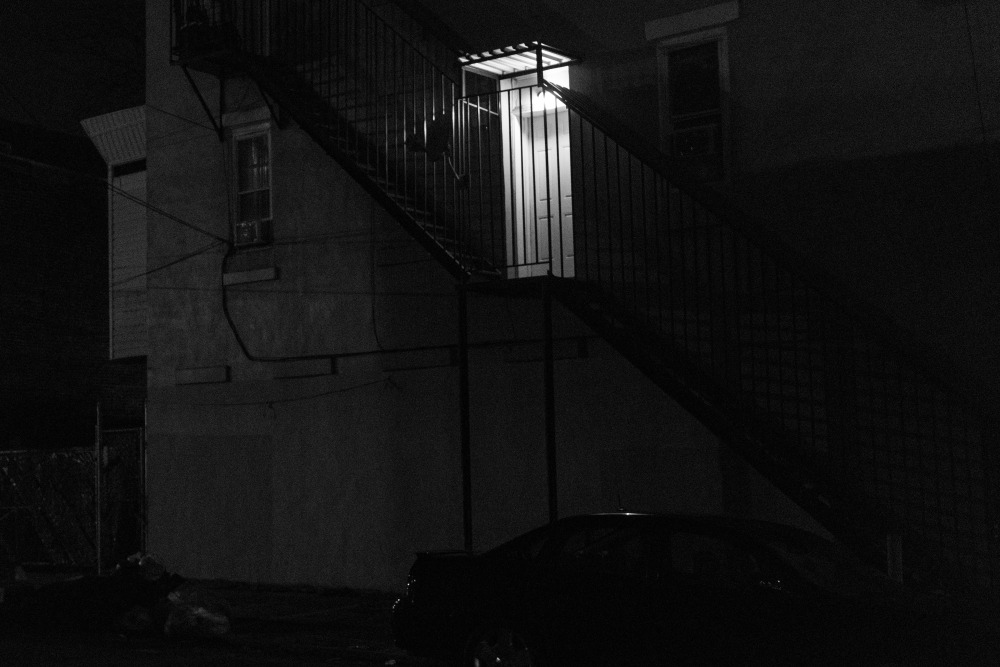
Sam (S.) Malandra-Myers: Searching - Through working at night in this series, I am conveying a sense of invisibility that immigrants, and, specifically, undocumented immigrants, experience. By adding the contrast of the light, I am highlighting a tension that is apparent in the current politics in America surrounding topics such as illegal immigration, the U.S.-Mexico border wall, and DACA. The incorporation of the figure focuses on the placement of individuals moving into a spotlight to work as activists for a silenced community, like the many DACA students attending university in the USA who have self-disclosed their immigration status during public speaking engagements, such as valedictorian and Yale student Larissa Martinez.
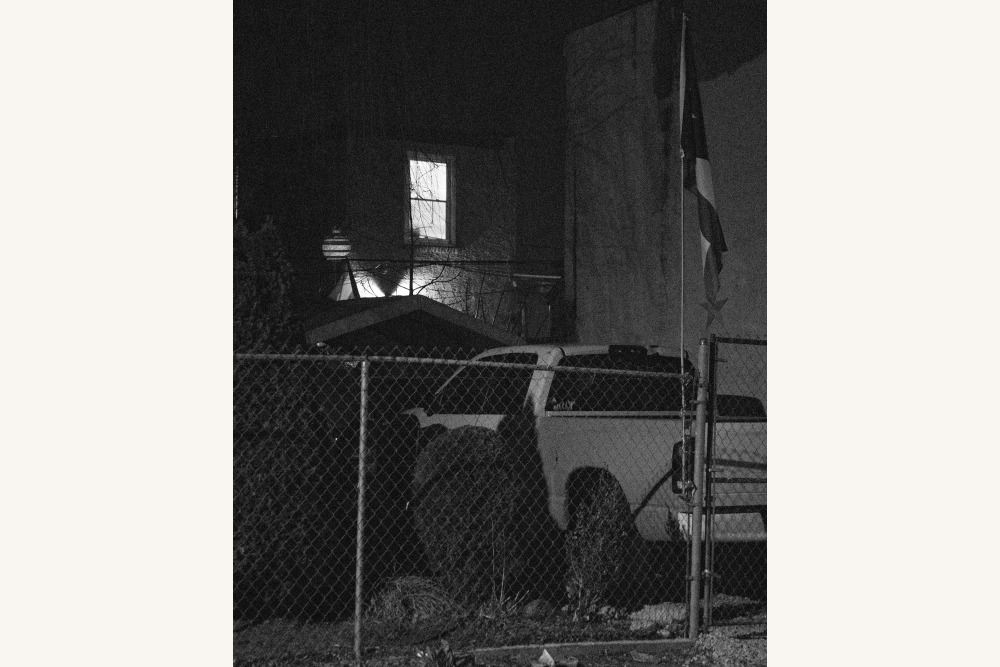
Sam (S.) Malandra-Myers: Silenced - Through working at night in this series, I am conveying a sense of invisibility that immigrants, and, specifically, undocumented immigrants, experience. By adding the contrast of the light, I am highlighting a tension that is apparent in the current politics in America surrounding topics such as illegal immigration, the U.S.-Mexico border wall, and DACA. The incorporation of the figure focuses on the placement of individuals moving into a spotlight to work as activists for a silenced community, like the many DACA students attending university in the USA who have self-disclosed their immigration status during public speaking engagements, such as valedictorian and Yale student Larissa Martinez.

Shaina Nyman: حایس SAYAH | THE TRAVELER - SAYAH is the Farsi word for one who wanders the earth. In this work, I focus on my family’s immigration from Iran to the U.S. post-Iranian Revolution and their experience as displaced persons. The work is narrative but conceptual; a story is told through an emulation of a traveler created through visual metaphors. The beach, the sky, and the ocean are often considered timeless, blank spaces — in this work, they act as a connector for artificial lines of national spaces. I photograph my mother and her sisters by the ocean, aiming to connect them to the unreachable.
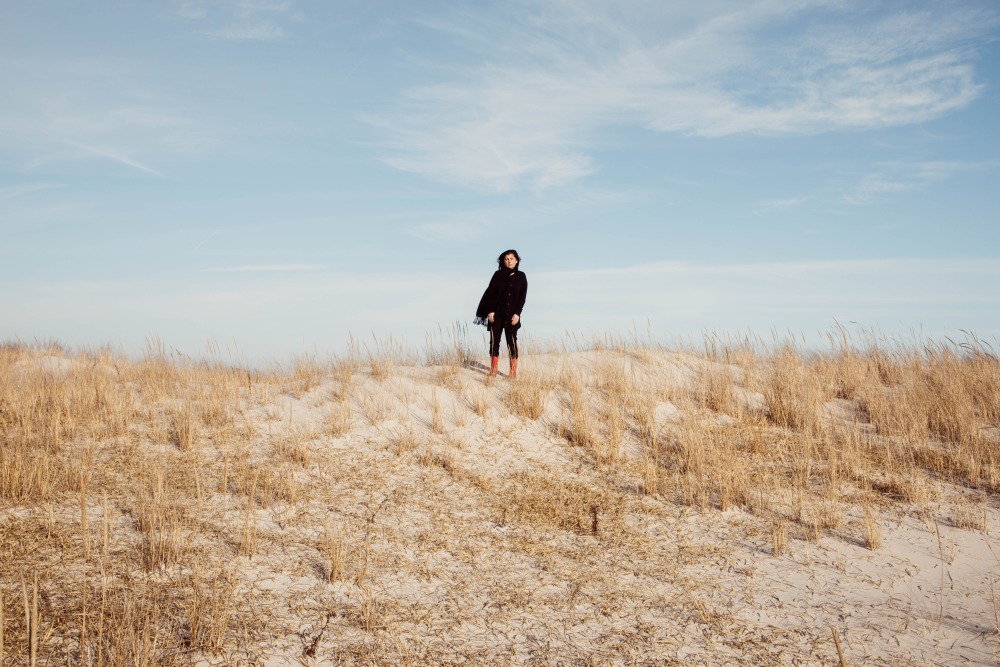
Shaina Nyman: حایس SAYAH | THE TRAVELER - SAYAH is the Farsi word for one who wanders the earth. In this work, I focus on my family’s immigration from Iran to the U.S. post-Iranian Revolution and their experience as displaced persons. The work is narrative but conceptual; a story is told through an emulation of a traveler created through visual metaphors. The beach, the sky, and the ocean are often considered timeless, blank spaces — in this work, they act as a connector for artificial lines of national spaces. I photograph my mother and her sisters by the ocean, aiming to connect them to the unreachable.
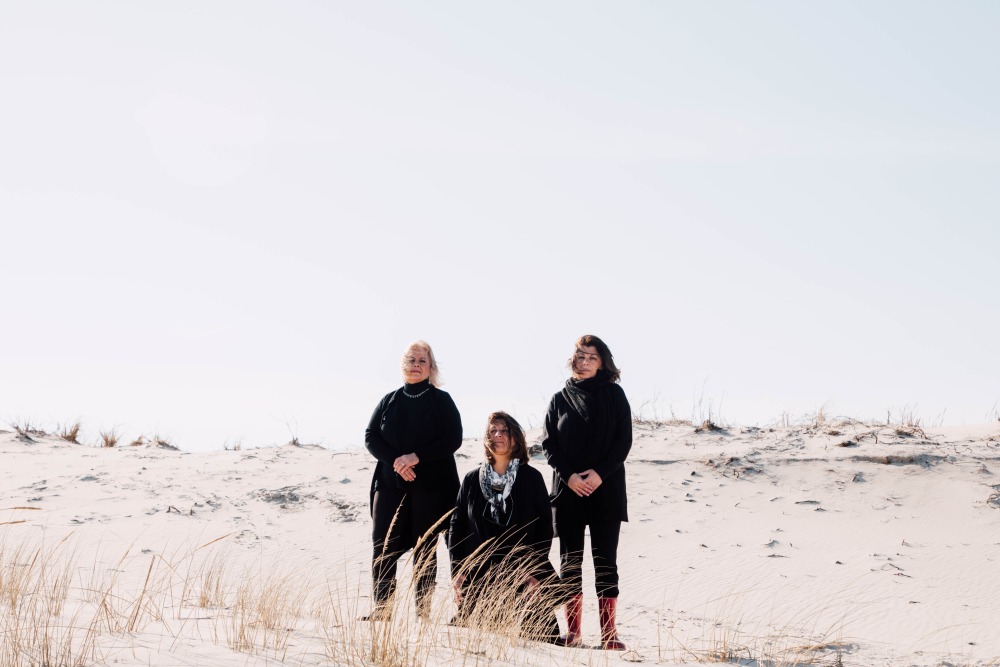
Shaina Nyman: حایس SAYAH | THE TRAVELER - SAYAH is the Farsi word for one who wanders the earth. In this work, I focus on my family’s immigration from Iran to the U.S. post-Iranian Revolution and their experience as displaced persons. The work is narrative but conceptual; a story is told through an emulation of a traveler created through visual metaphors. The beach, the sky, and the ocean are often considered timeless, blank spaces — in this work, they act as a connector for artificial lines of national spaces. I photograph my mother and her sisters by the ocean, aiming to connect them to the unreachable.
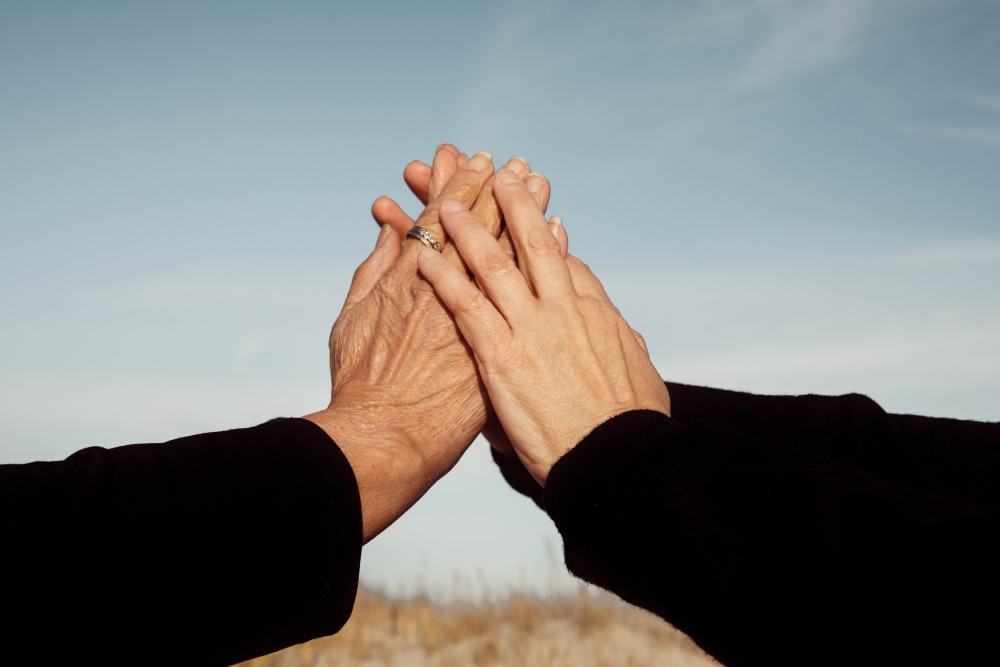
Shaina Nyman: حایس SAYAH | THE TRAVELER - SAYAH is the Farsi word for one who wanders the earth. In this work, I focus on my family’s immigration from Iran to the U.S. post-Iranian Revolution and their experience as displaced persons. The work is narrative but conceptual; a story is told through an emulation of a traveler created through visual metaphors. The beach, the sky, and the ocean are often considered timeless, blank spaces — in this work, they act as a connector for artificial lines of national spaces. I photograph my mother and her sisters by the ocean, aiming to connect them to the unreachable.
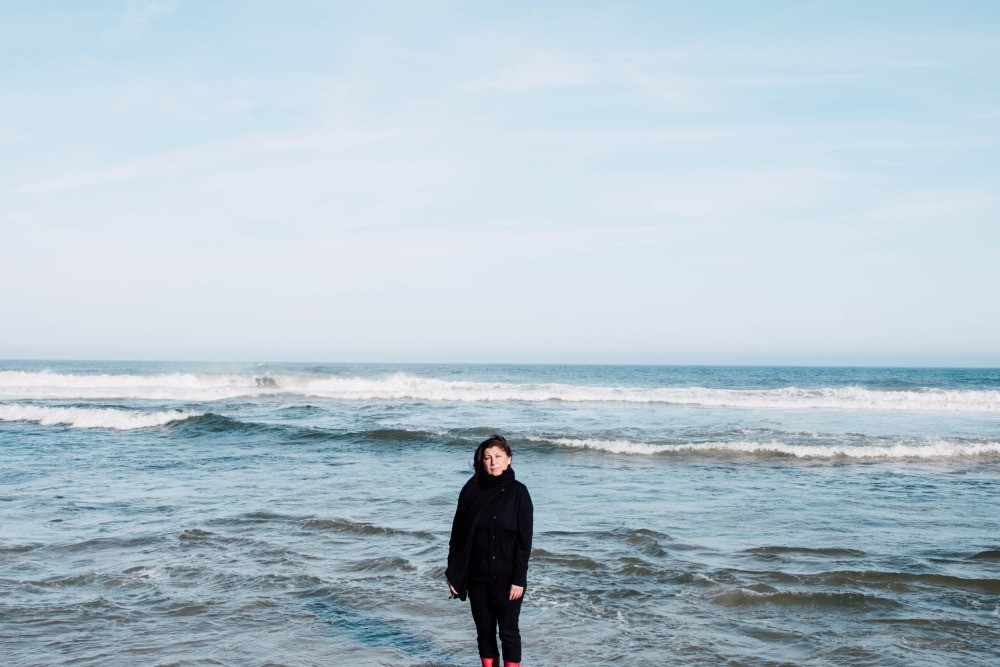
Shaina Nyman: حایس SAYAH | THE TRAVELER - SAYAH is the Farsi word for one who wanders the earth. In this work, I focus on my family’s immigration from Iran to the U.S. post-Iranian Revolution and their experience as displaced persons. The work is narrative but conceptual; a story is told through an emulation of a traveler created through visual metaphors. The beach, the sky, and the ocean are often considered timeless, blank spaces — in this work, they act as a connector for artificial lines of national spaces. I photograph my mother and her sisters by the ocean, aiming to connect them to the unreachable.
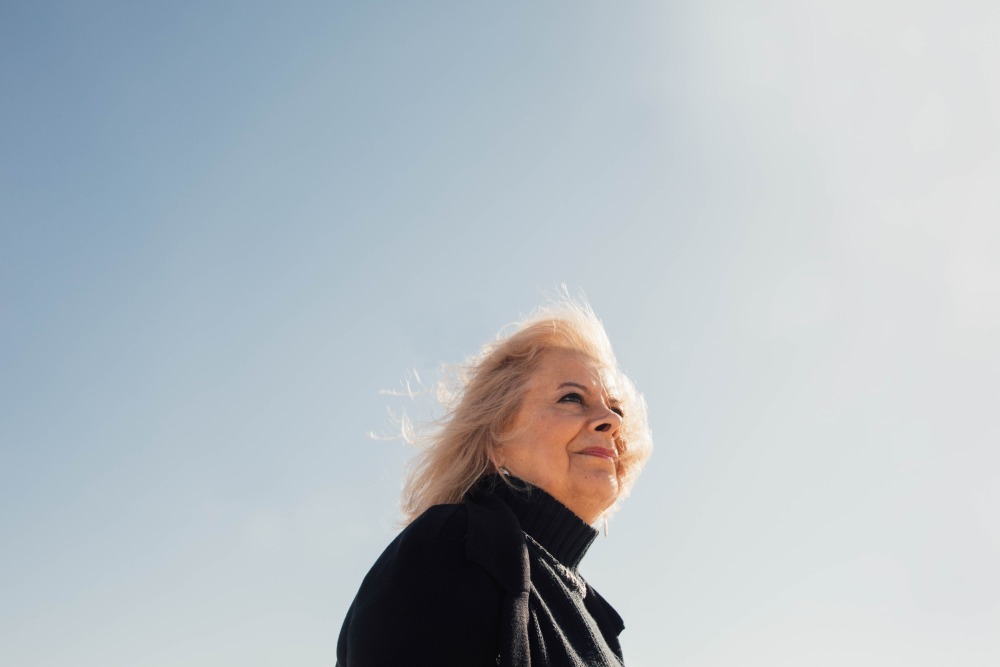
Shaina Nyman: حایس SAYAH | THE TRAVELER - SAYAH is the Farsi word for one who wanders the earth. In this work, I focus on my family’s immigration from Iran to the U.S. post-Iranian Revolution and their experience as displaced persons. The work is narrative but conceptual; a story is told through an emulation of a traveler created through visual metaphors. The beach, the sky, and the ocean are often considered timeless, blank spaces — in this work, they act as a connector for artificial lines of national spaces. I photograph my mother and her sisters by the ocean, aiming to connect them to the unreachable.
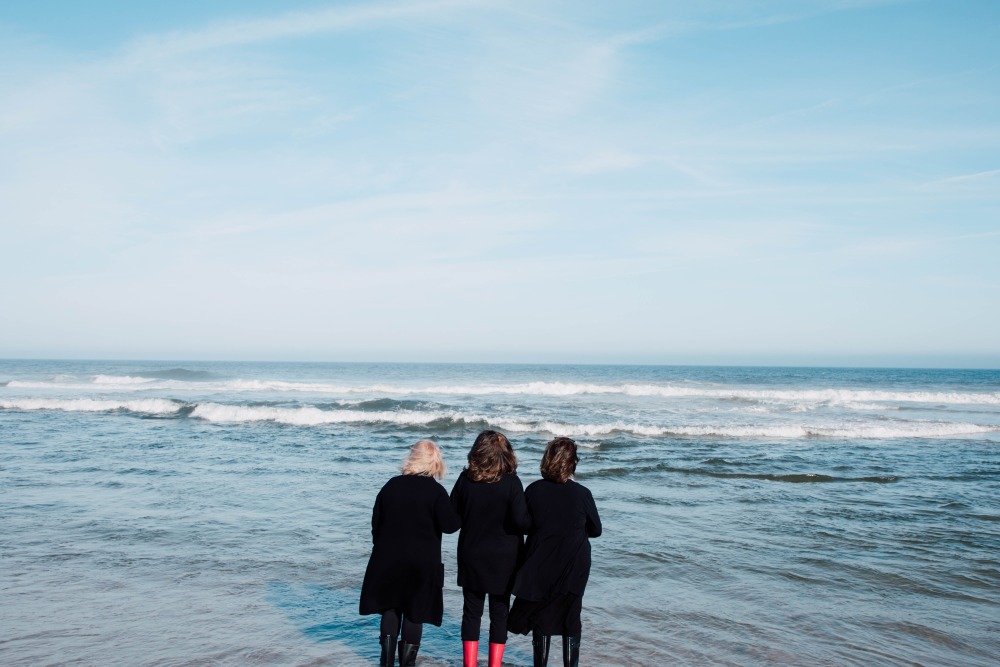
Shaina Nyman: حایس SAYAH | THE TRAVELER - SAYAH is the Farsi word for one who wanders the earth. In this work, I focus on my family’s immigration from Iran to the U.S. post-Iranian Revolution and their experience as displaced persons. The work is narrative but conceptual; a story is told through an emulation of a traveler created through visual metaphors. The beach, the sky, and the ocean are often considered timeless, blank spaces — in this work, they act as a connector for artificial lines of national spaces. I photograph my mother and her sisters by the ocean, aiming to connect them to the unreachable.
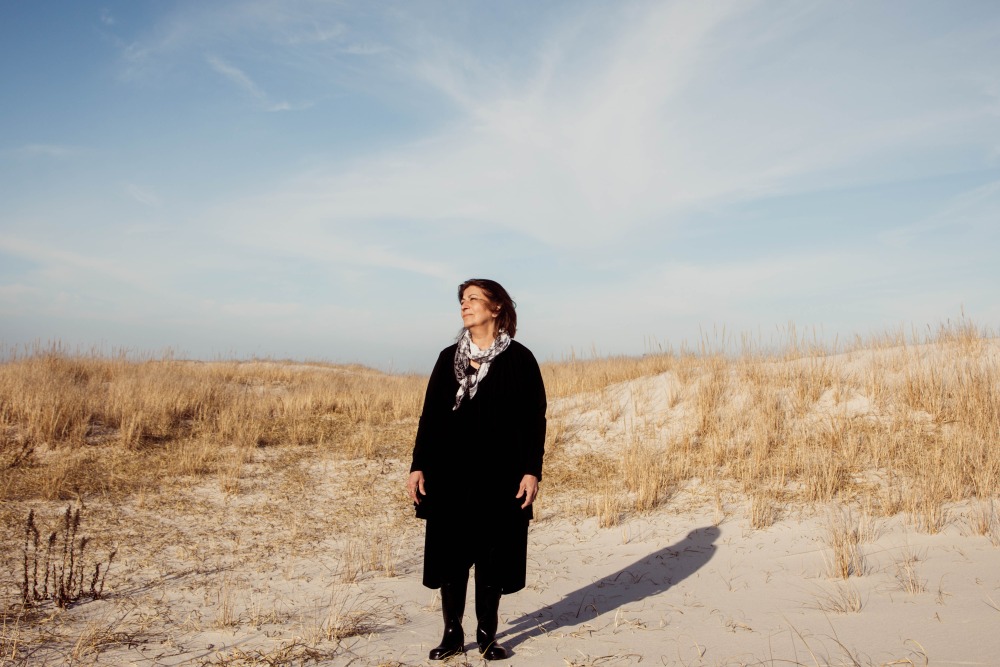
Shaina Nyman: حایس SAYAH | THE TRAVELER - SAYAH is the Farsi word for one who wanders the earth. In this work, I focus on my family’s immigration from Iran to the U.S. post-Iranian Revolution and their experience as displaced persons. The work is narrative but conceptual; a story is told through an emulation of a traveler created through visual metaphors. The beach, the sky, and the ocean are often considered timeless, blank spaces — in this work, they act as a connector for artificial lines of national spaces. I photograph my mother and her sisters by the ocean, aiming to connect them to the unreachable.
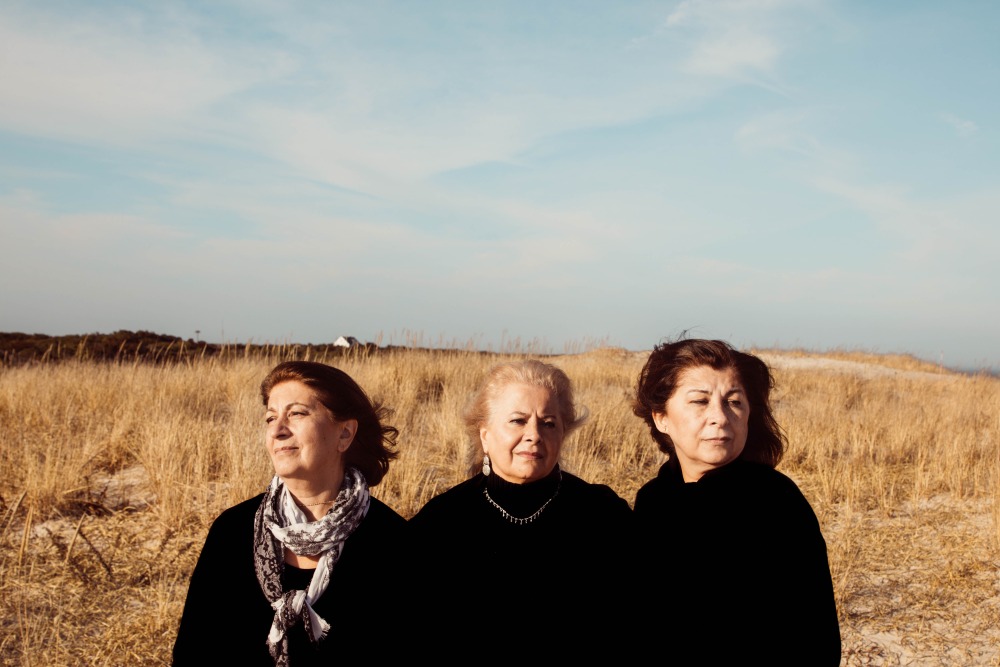
Shaina Nyman: حایس SAYAH | THE TRAVELER - SAYAH is the Farsi word for one who wanders the earth. In this work, I focus on my family’s immigration from Iran to the U.S. post-Iranian Revolution and their experience as displaced persons. The work is narrative but conceptual; a story is told through an emulation of a traveler created through visual metaphors. The beach, the sky, and the ocean are often considered timeless, blank spaces — in this work, they act as a connector for artificial lines of national spaces. I photograph my mother and her sisters by the ocean, aiming to connect them to the unreachable.
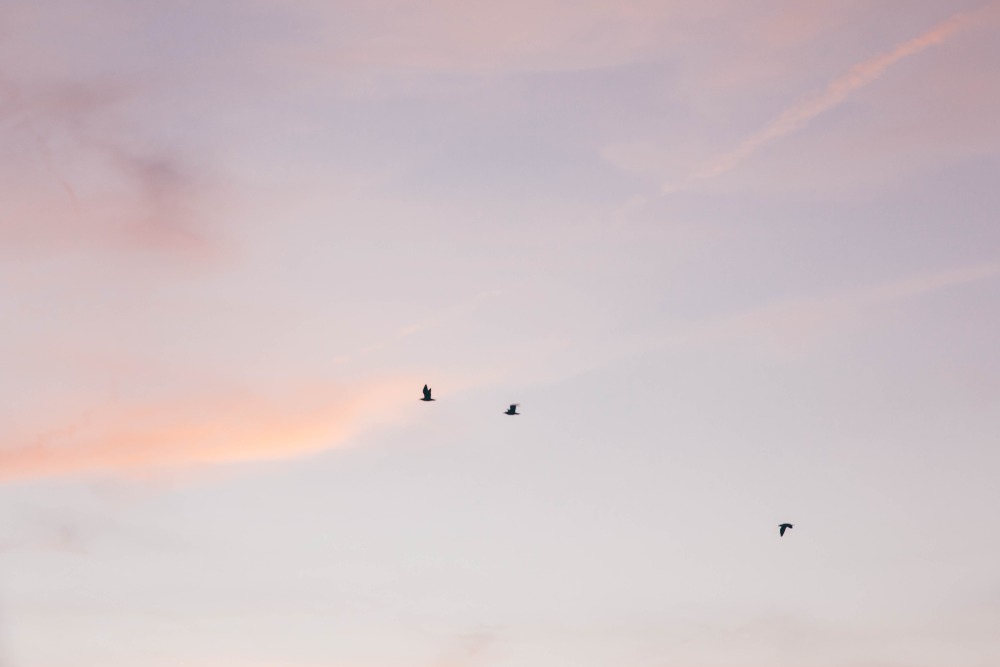
Shaina Nyman: حایس SAYAH | THE TRAVELER - SAYAH is the Farsi word for one who wanders the earth. In this work, I focus on my family’s immigration from Iran to the U.S. post-Iranian Revolution and their experience as displaced persons. The work is narrative but conceptual; a story is told through an emulation of a traveler created through visual metaphors. The beach, the sky, and the ocean are often considered timeless, blank spaces — in this work, they act as a connector for artificial lines of national spaces. I photograph my mother and her sisters by the ocean, aiming to connect them to the unreachable.
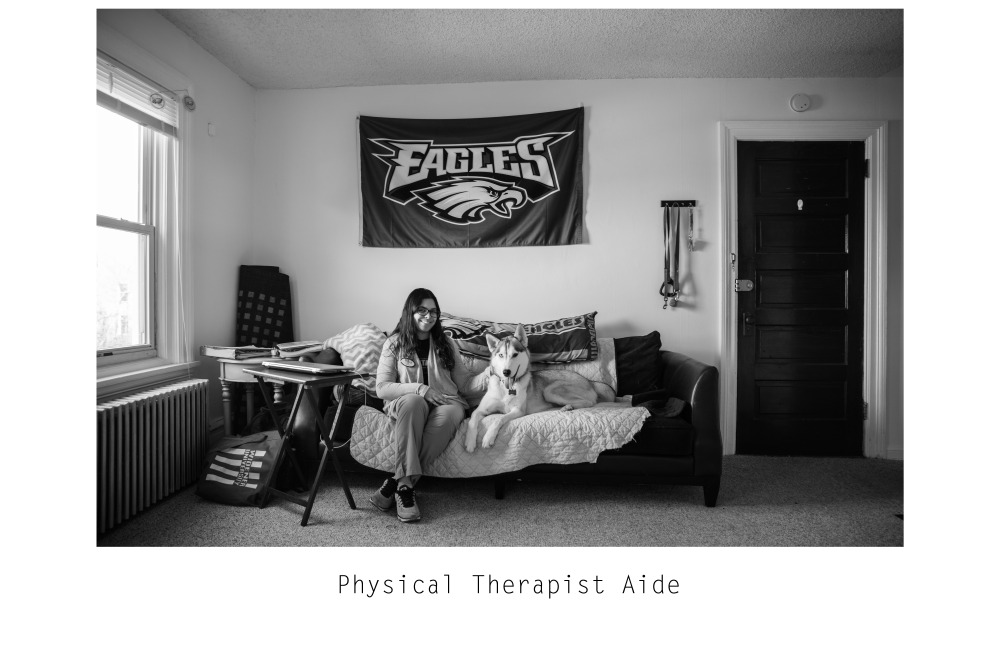
Tiana Zurawski: Natalie - Thinking a lot about socioeconomics, I wanted to create this project. I photographed people in and at their homes because having a home and/or place to live with belongings is reflected in how much money you make. Having a dog or having expensive things costs a lot of money. I think it is important to show what people own when talking about socioeconomics. People from all different backgrounds go through the same and also different stages of socioeconomics.
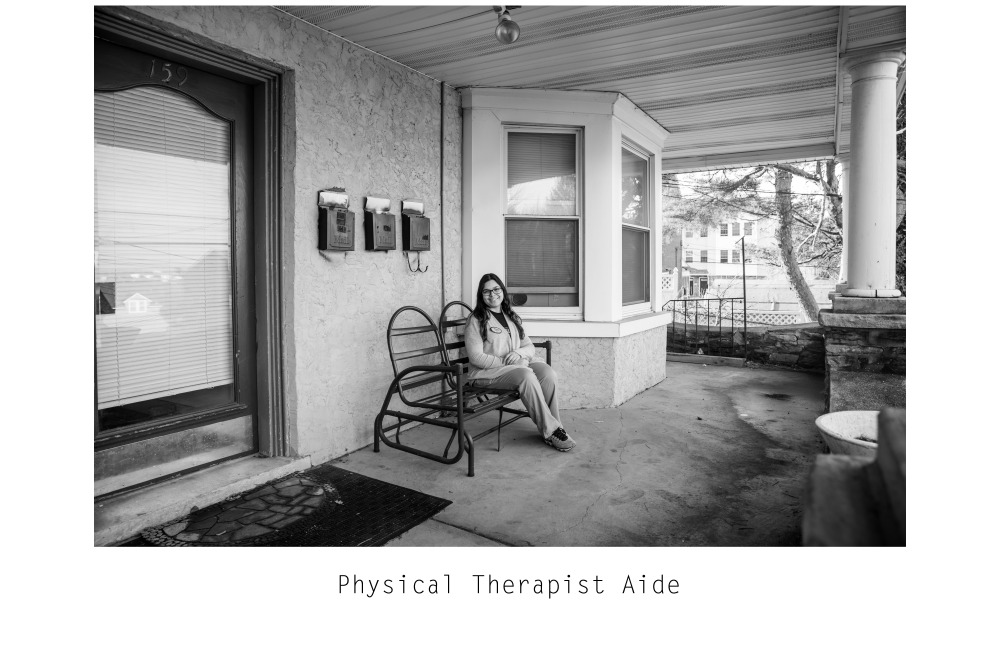
Tiana Zurawski: Natalie - Thinking a lot about socioeconomics, I wanted to create this project. I photographed people in and at their homes because having a home and/or place to live with belongings is reflected in how much money you make. Having a dog or having expensive things costs a lot of money. I think it is important to show what people own when talking about socioeconomics. People from all different backgrounds go through the same and also different stages of socioeconomics.
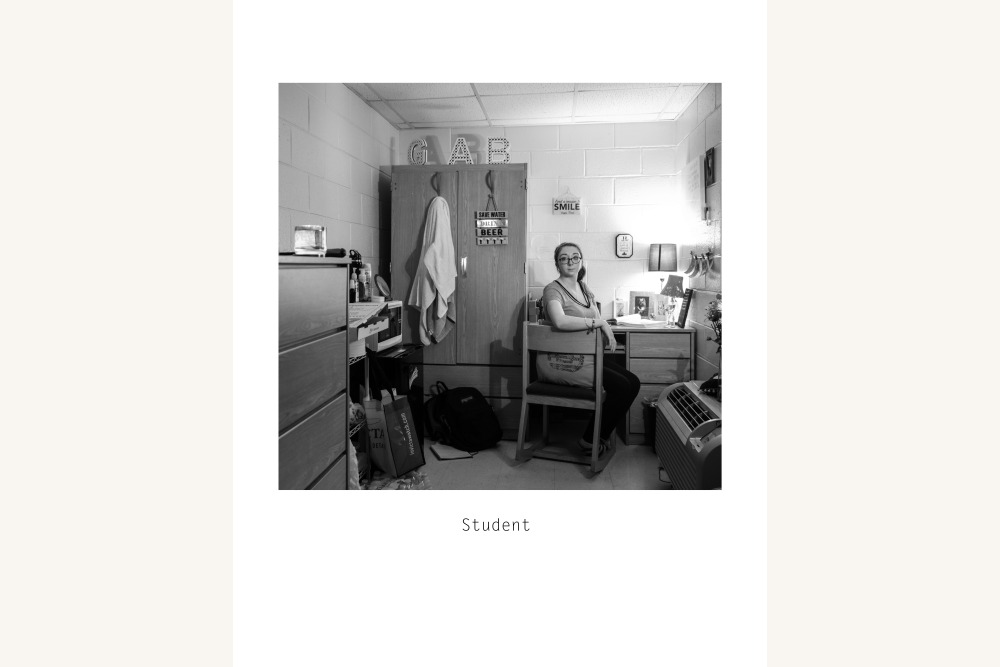
Tiana Zurawski: Gabby - Thinking a lot about socioeconomics, I wanted to create this project. I photographed people in and at their homes because having a home and/or place to live with belongings is reflected in how much money you make. Having a dog or having expensive things costs a lot of money. I think it is important to show what people own when talking about socioeconomics. People from all different backgrounds go through the same and also different stages of socioeconomics.
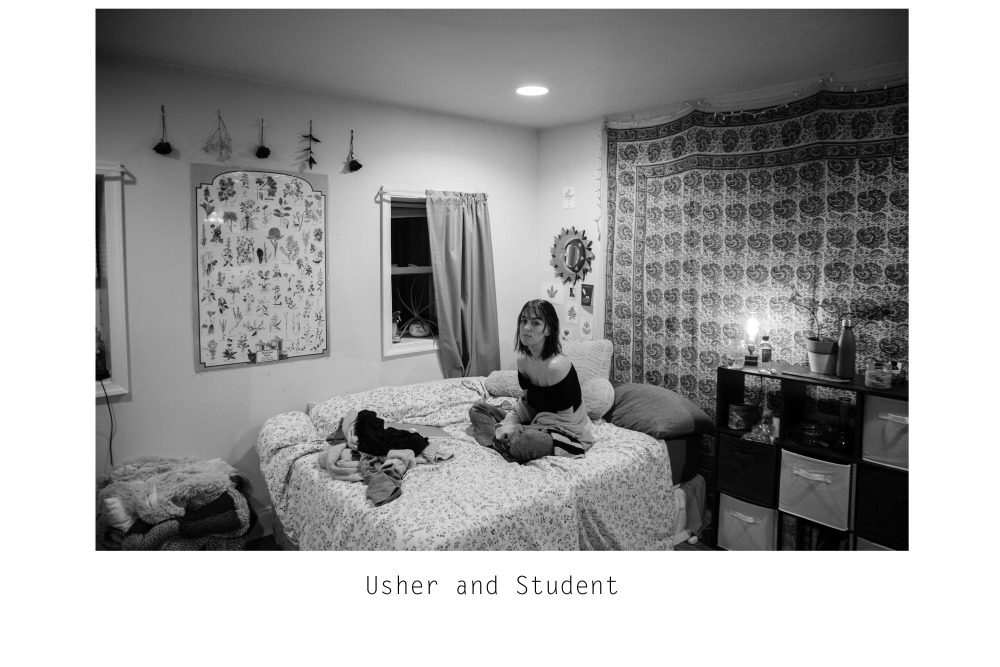
Tiana Zurawski: Jules - Thinking a lot about socioeconomics, I wanted to create this project. I photographed people in and at their homes because having a home and/or place to live with belongings is reflected in how much money you make. Having a dog or having expensive things costs a lot of money. I think it is important to show what people own when talking about socioeconomics. People from all different backgrounds go through the same and also different stages of socioeconomics.
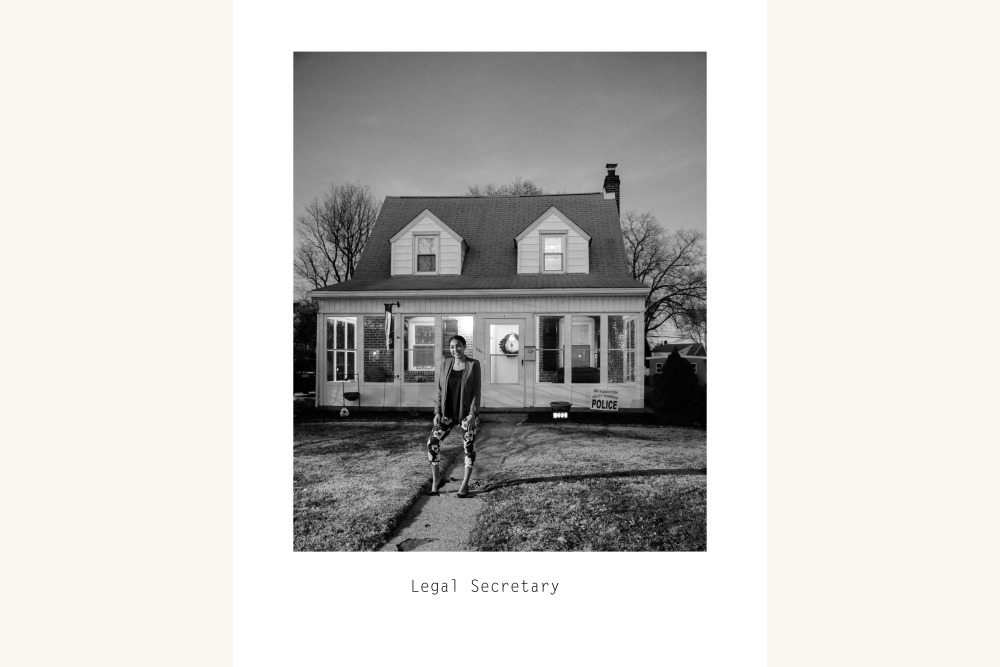
Tiana Zurawski: Sammi - Thinking a lot about socioeconomics, I wanted to create this project. I photographed people in and at their homes because having a home and/or place to live with belongings is reflected in how much money you make. Having a dog or having expensive things costs a lot of money. I think it is important to show what people own when talking about socioeconomics. People from all different backgrounds go through the same and also different stages of socioeconomics.
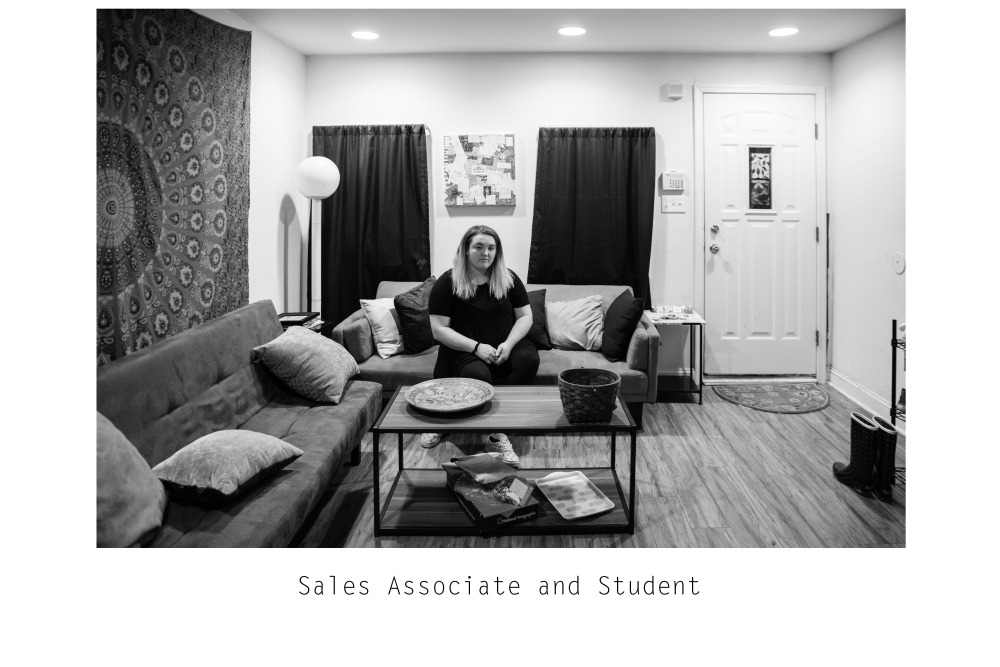
Tiana Zurawski: Tiana - Thinking a lot about socioeconomics, I wanted to create this project. I photographed people in and at their homes because having a home and/or place to live with belongings is reflected in how much money you make. Having a dog or having expensive things costs a lot of money. I think it is important to show what people own when talking about socioeconomics. People from all different backgrounds go through the same and also different stages of socioeconomics.
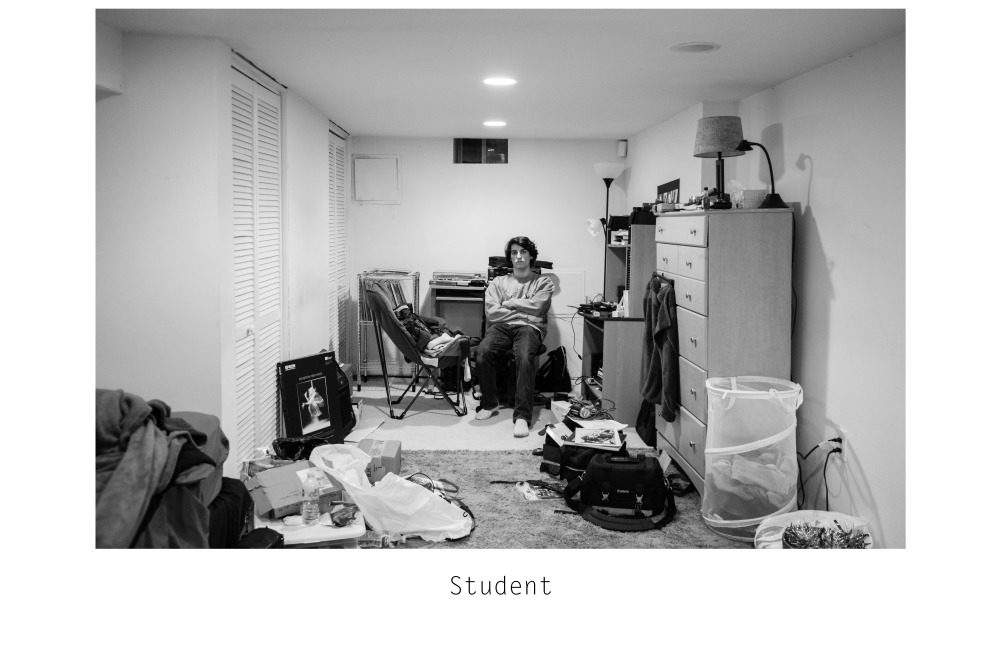
Tiana Zurawski: Tony - Thinking a lot about socioeconomics, I wanted to create this project. I photographed people in and at their homes because having a home and/or place to live with belongings is reflected in how much money you make. Having a dog or having expensive things costs a lot of money. I think it is important to show what people own when talking about socioeconomics. People from all different backgrounds go through the same and also different stages of socioeconomics.
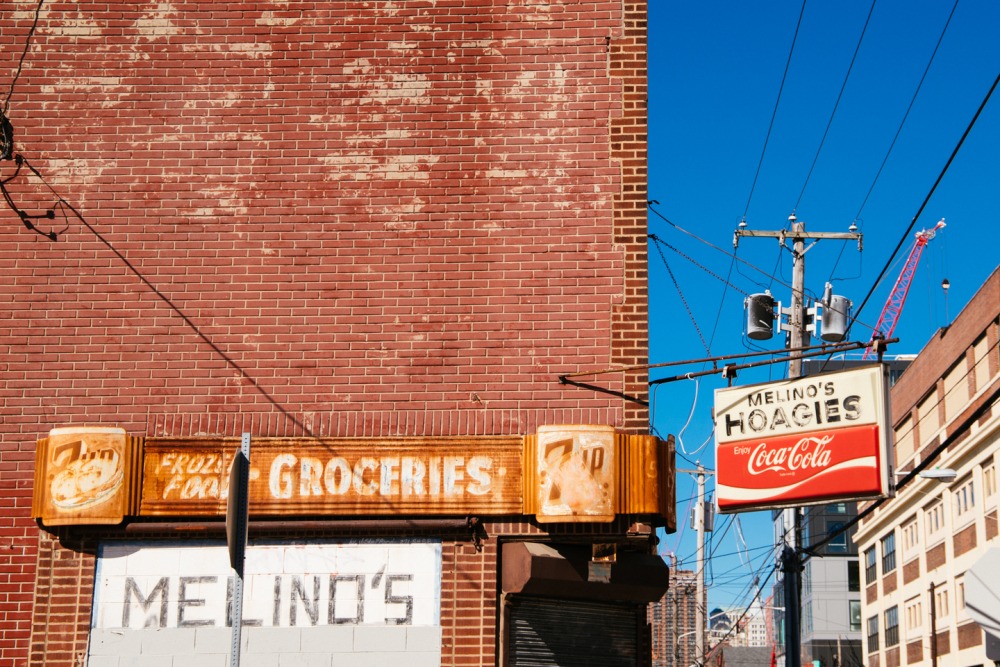
Tony DiGiugno: This series of photos covers a variety of spaces in Point Breeze where the socioeconomic disparities of Philadelphia between the center and the south have manifested into structures that have become symbols for tension between economic classes. I hope for my photos to serve as a remembrance of a once loved entity in a nostalgic place and time before it is lost to future time and fate, transformed into an unrecognizable, new entity. At our current rate, gentrification cannot be stopped, but it can still be exposed. When photography cannot help to end a tragedy even by exposing it at face value, it can at least preserve lost innocence for future generations to remember and learn from.
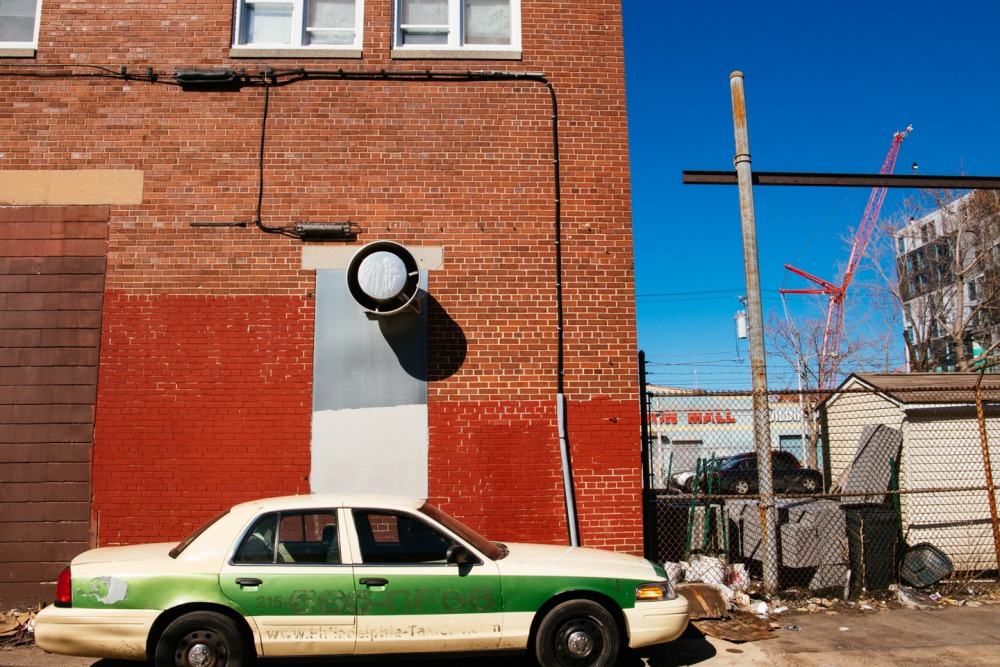
Tony DiGiugno: This series of photos covers a variety of spaces in Point Breeze where the socioeconomic disparities of Philadelphia between the center and the south have manifested into structures that have become symbols for tension between economic classes. I hope for my photos to serve as a remembrance of a once loved entity in a nostalgic place and time before it is lost to future time and fate, transformed into an unrecognizable, new entity. At our current rate, gentrification cannot be stopped, but it can still be exposed. When photography cannot help to end a tragedy even by exposing it at face value, it can at least preserve lost innocence for future generations to remember and learn from.
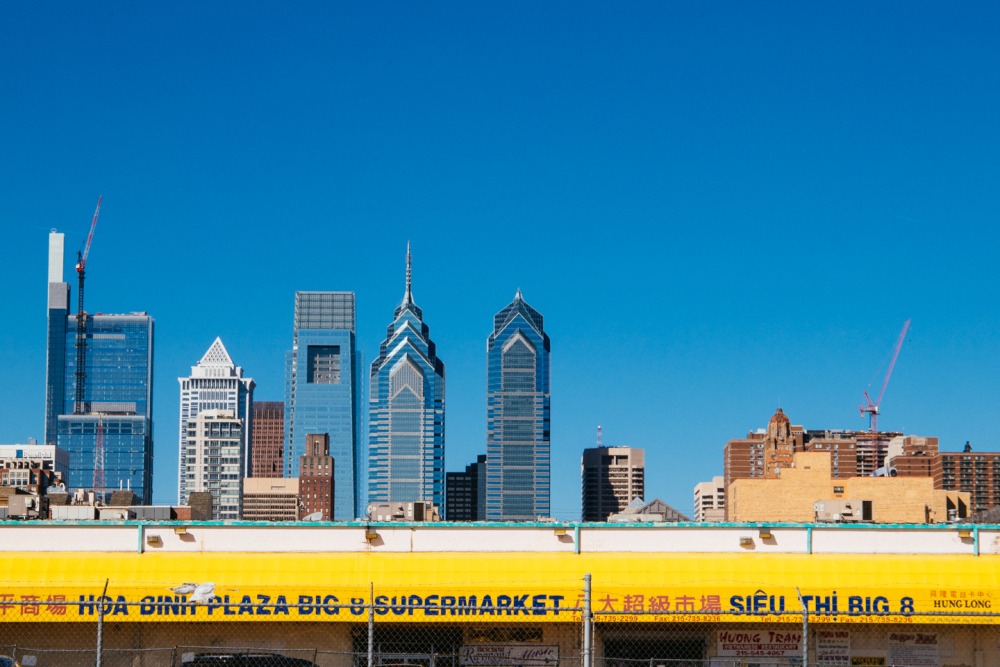
Tony DiGiugno: This series of photos covers a variety of spaces in Point Breeze where the socioeconomic disparities of Philadelphia between the center and the south have manifested into structures that have become symbols for tension between economic classes. I hope for my photos to serve as a remembrance of a once loved entity in a nostalgic place and time before it is lost to future time and fate, transformed into an unrecognizable, new entity. At our current rate, gentrification cannot be stopped, but it can still be exposed. When photography cannot help to end a tragedy even by exposing it at face value, it can at least preserve lost innocence for future generations to remember and learn from.
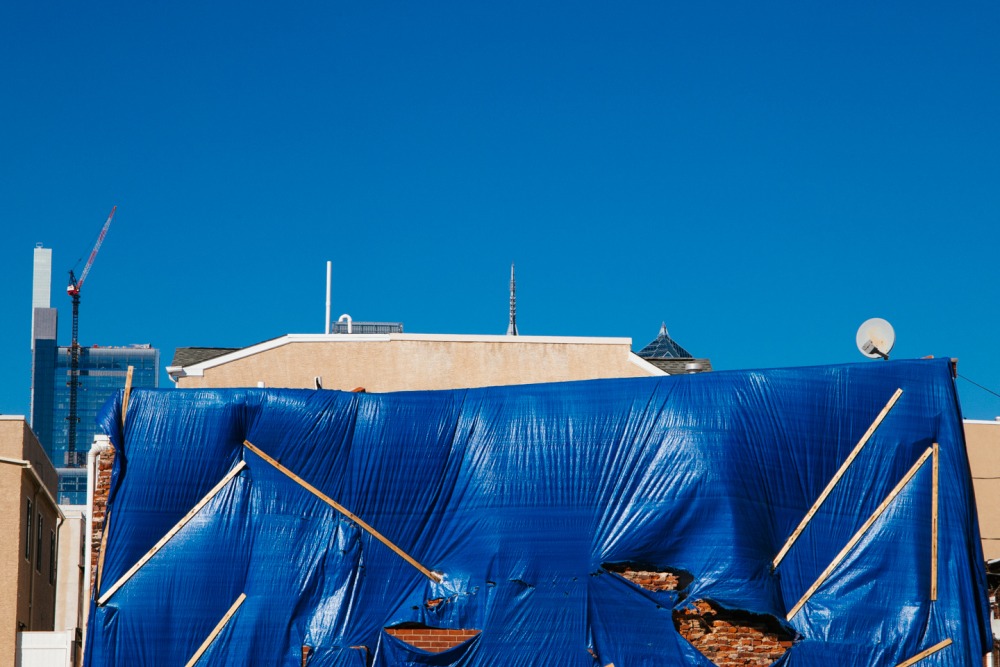
Tony DiGiugno: This series of photos covers a variety of spaces in Point Breeze where the socioeconomic disparities of Philadelphia between the center and the south have manifested into structures that have become symbols for tension between economic classes. I hope for my photos to serve as a remembrance of a once loved entity in a nostalgic place and time before it is lost to future time and fate, transformed into an unrecognizable, new entity. At our current rate, gentrification cannot be stopped, but it can still be exposed. When photography cannot help to end a tragedy even by exposing it at face value, it can at least preserve lost innocence for future generations to remember and learn from.
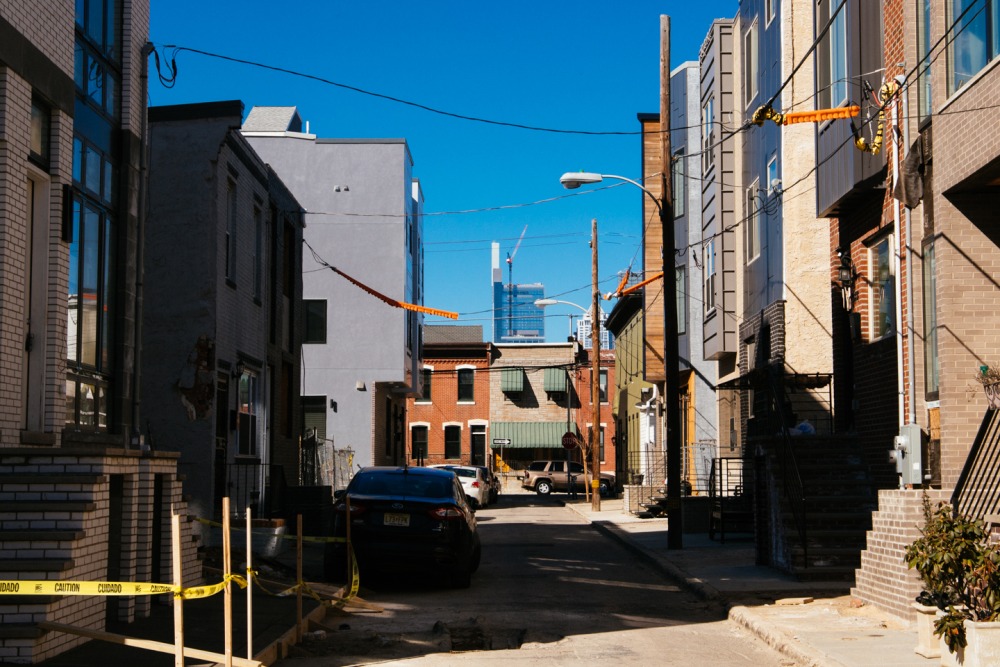
Tony DiGiugno: This series of photos covers a variety of spaces in Point Breeze where the socioeconomic disparities of Philadelphia between the center and the south have manifested into structures that have become symbols for tension between economic classes. I hope for my photos to serve as a remembrance of a once loved entity in a nostalgic place and time before it is lost to future time and fate, transformed into an unrecognizable, new entity. At our current rate, gentrification cannot be stopped, but it can still be exposed. When photography cannot help to end a tragedy even by exposing it at face value, it can at least preserve lost innocence for future generations to remember and learn from.
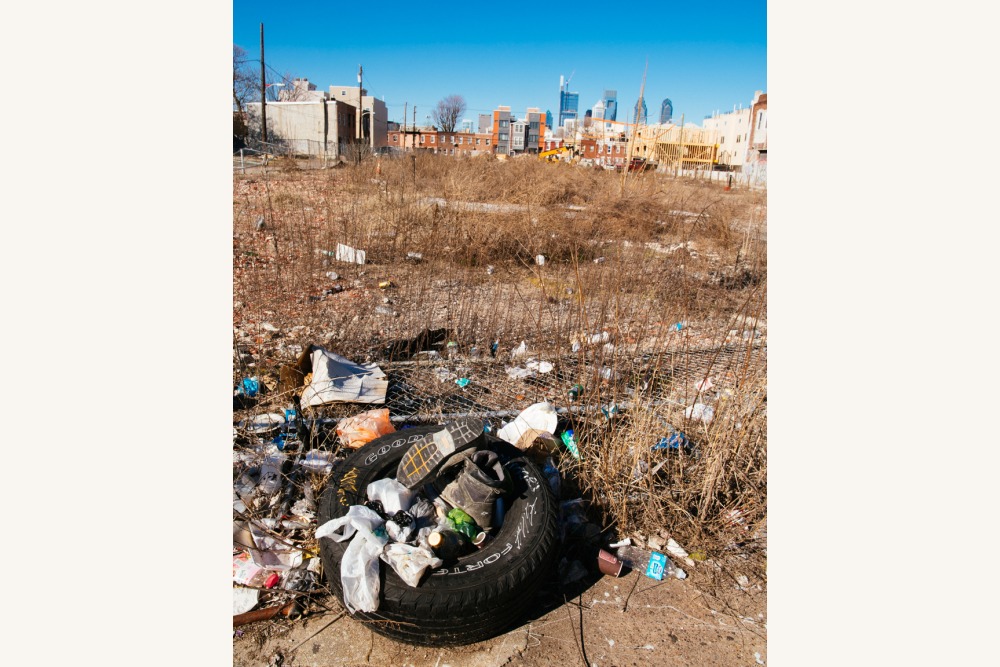
Tony DiGiugno: This series of photos covers a variety of spaces in Point Breeze where the socioeconomic disparities of Philadelphia between the center and the south have manifested into structures that have become symbols for tension between economic classes. I hope for my photos to serve as a remembrance of a once loved entity in a nostalgic place and time before it is lost to future time and fate, transformed into an unrecognizable, new entity. At our current rate, gentrification cannot be stopped, but it can still be exposed. When photography cannot help to end a tragedy even by exposing it at face value, it can at least preserve lost innocence for future generations to remember and learn from.
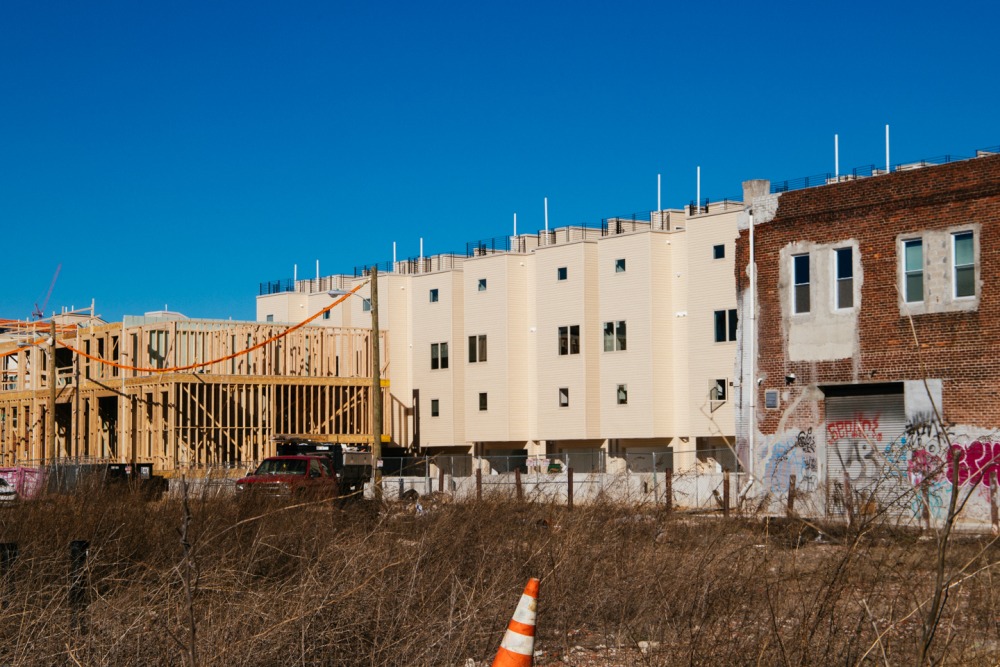
Tony DiGiugno: This series of photos covers a variety of spaces in Point Breeze where the socioeconomic disparities of Philadelphia between the center and the south have manifested into structures that have become symbols for tension between economic classes. I hope for my photos to serve as a remembrance of a once loved entity in a nostalgic place and time before it is lost to future time and fate, transformed into an unrecognizable, new entity. At our current rate, gentrification cannot be stopped, but it can still be exposed. When photography cannot help to end a tragedy even by exposing it at face value, it can at least preserve lost innocence for future generations to remember and learn from.
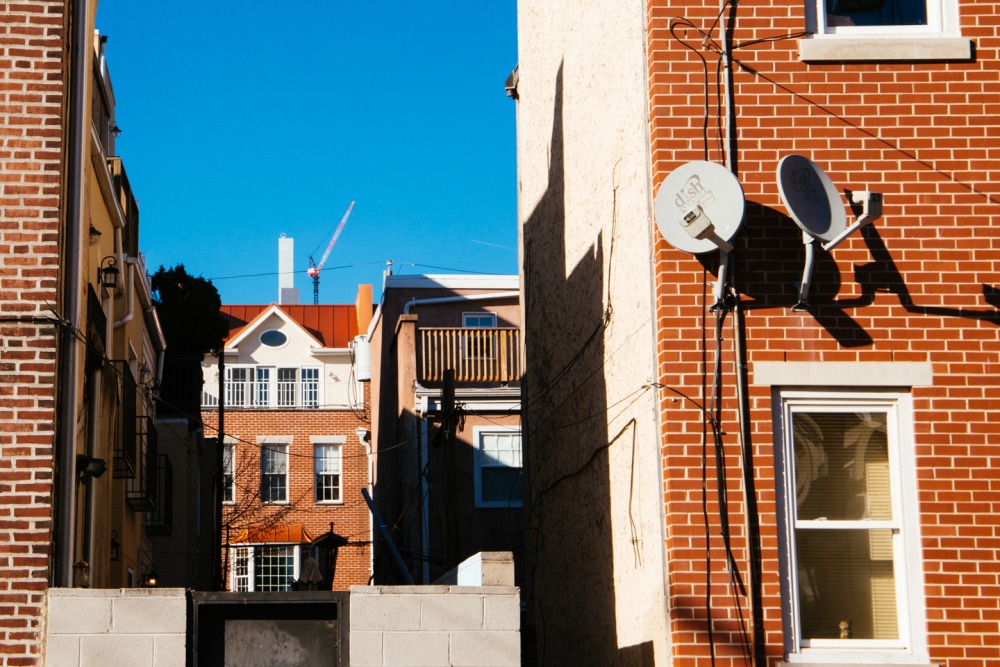
Tony DiGiugno: This series of photos covers a variety of spaces in Point Breeze where the socioeconomic disparities of Philadelphia between the center and the south have manifested into structures that have become symbols for tension between economic classes. I hope for my photos to serve as a remembrance of a once loved entity in a nostalgic place and time before it is lost to future time and fate, transformed into an unrecognizable, new entity. At our current rate, gentrification cannot be stopped, but it can still be exposed. When photography cannot help to end a tragedy even by exposing it at face value, it can at least preserve lost innocence for future generations to remember and learn from.
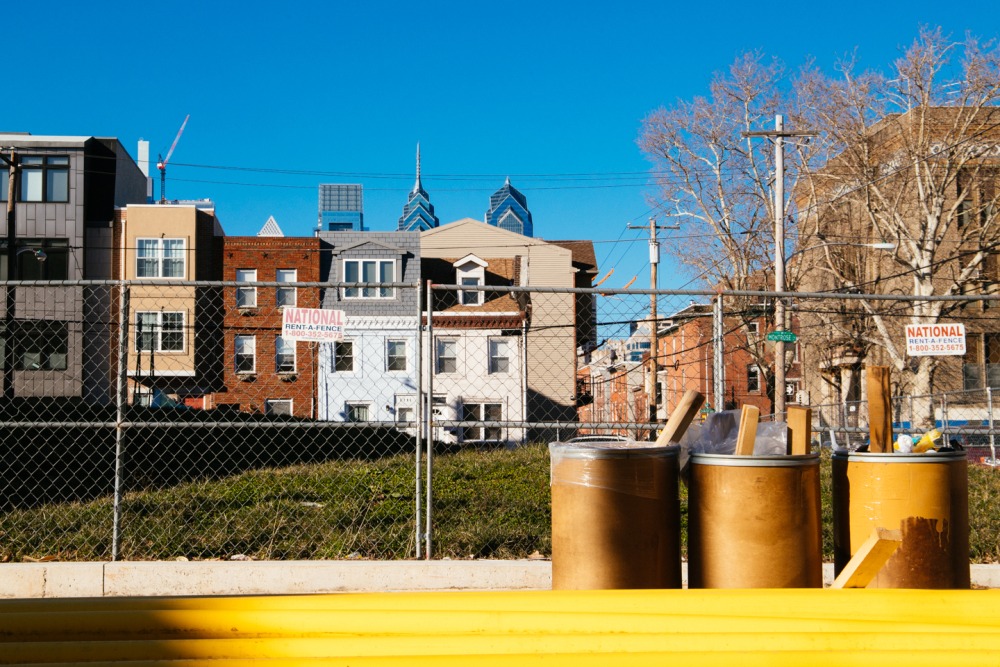
Tony DiGiugno: This series of photos covers a variety of spaces in Point Breeze where the socioeconomic disparities of Philadelphia between the center and the south have manifested into structures that have become symbols for tension between economic classes. I hope for my photos to serve as a remembrance of a once loved entity in a nostalgic place and time before it is lost to future time and fate, transformed into an unrecognizable, new entity. At our current rate, gentrification cannot be stopped, but it can still be exposed. When photography cannot help to end a tragedy even by exposing it at face value, it can at least preserve lost innocence for future generations to remember and learn from.
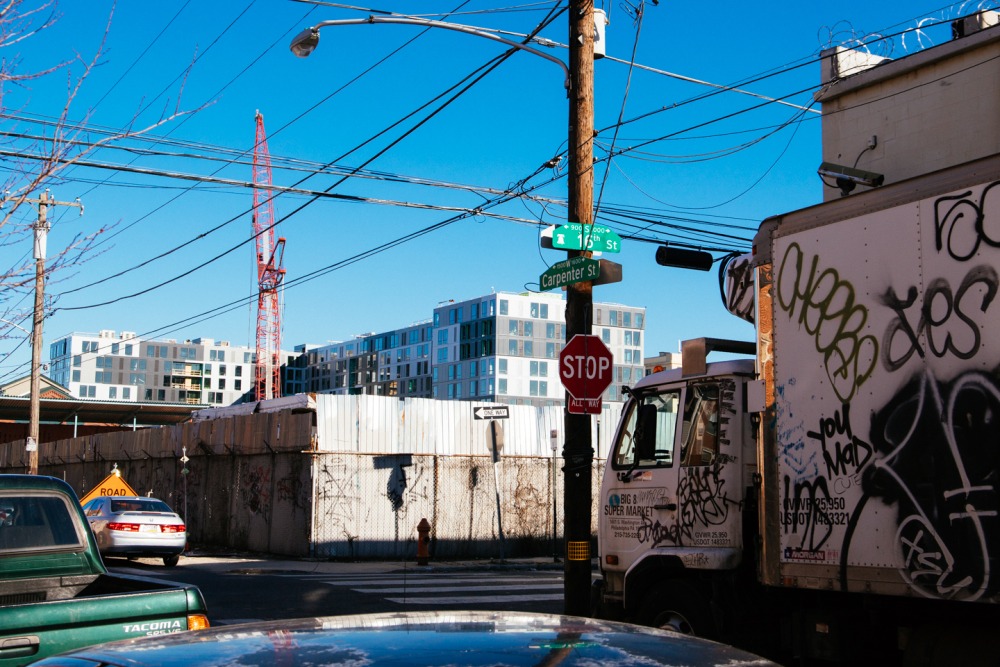
Tony DiGiugno: This series of photos covers a variety of spaces in Point Breeze where the socioeconomic disparities of Philadelphia between the center and the south have manifested into structures that have become symbols for tension between economic classes. I hope for my photos to serve as a remembrance of a once loved entity in a nostalgic place and time before it is lost to future time and fate, transformed into an unrecognizable, new entity. At our current rate, gentrification cannot be stopped, but it can still be exposed. When photography cannot help to end a tragedy even by exposing it at face value, it can at least preserve lost innocence for future generations to remember and learn from.
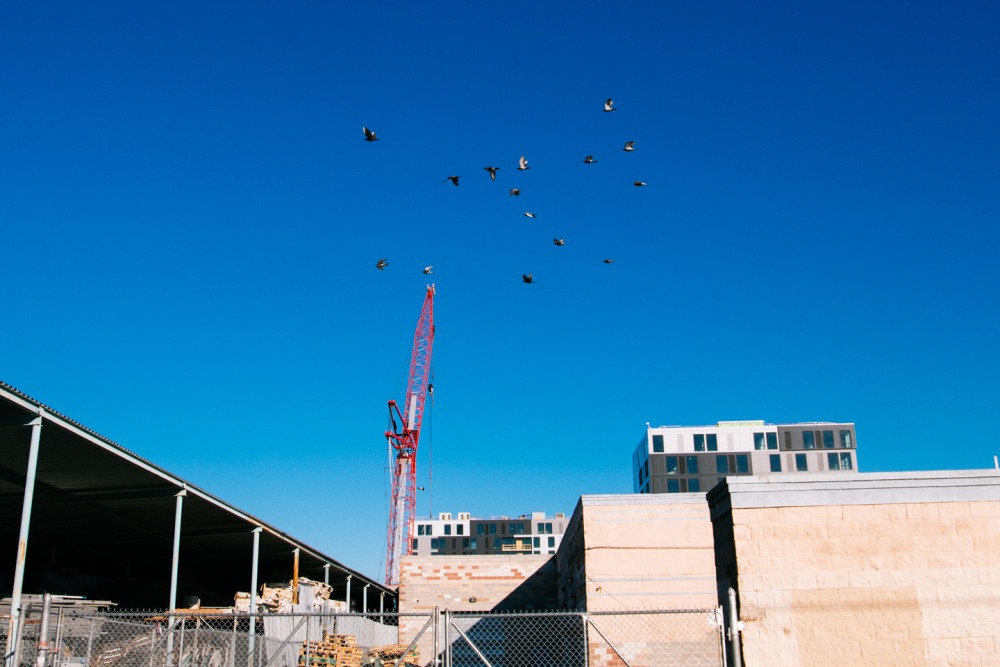
Tony DiGiugno: This series of photos covers a variety of spaces in Point Breeze where the socioeconomic disparities of Philadelphia between the center and the south have manifested into structures that have become symbols for tension between economic classes. I hope for my photos to serve as a remembrance of a once loved entity in a nostalgic place and time before it is lost to future time and fate, transformed into an unrecognizable, new entity. At our current rate, gentrification cannot be stopped, but it can still be exposed. When photography cannot help to end a tragedy even by exposing it at face value, it can at least preserve lost innocence for future generations to remember and learn from.
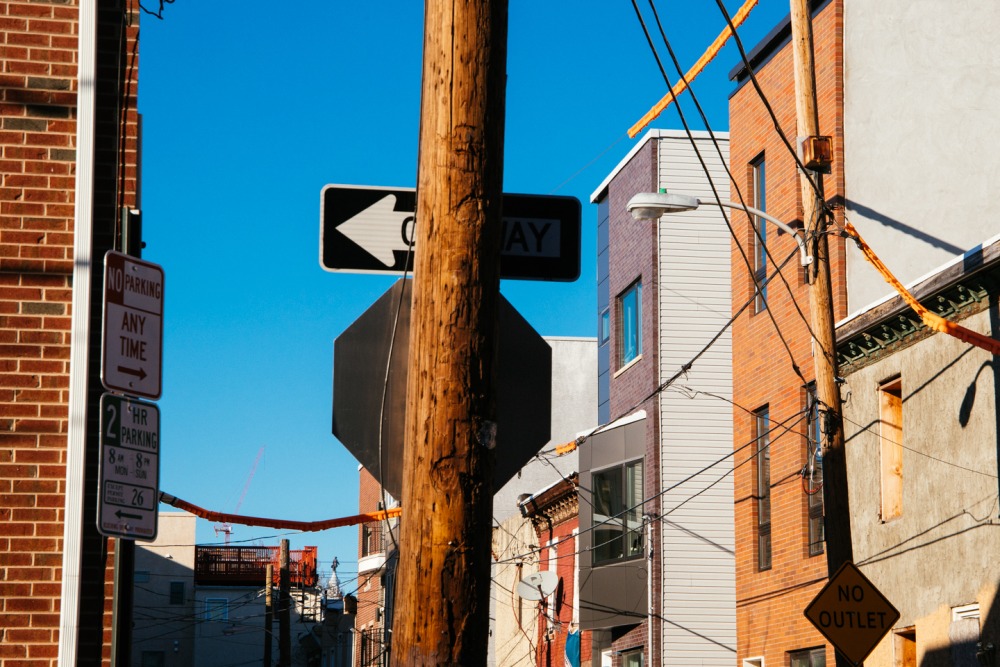
Tony DiGiugno: This series of photos covers a variety of spaces in Point Breeze where the socioeconomic disparities of Philadelphia between the center and the south have manifested into structures that have become symbols for tension between economic classes. I hope for my photos to serve as a remembrance of a once loved entity in a nostalgic place and time before it is lost to future time and fate, transformed into an unrecognizable, new entity. At our current rate, gentrification cannot be stopped, but it can still be exposed. When photography cannot help to end a tragedy even by exposing it at face value, it can at least preserve lost innocence for future generations to remember and learn from.
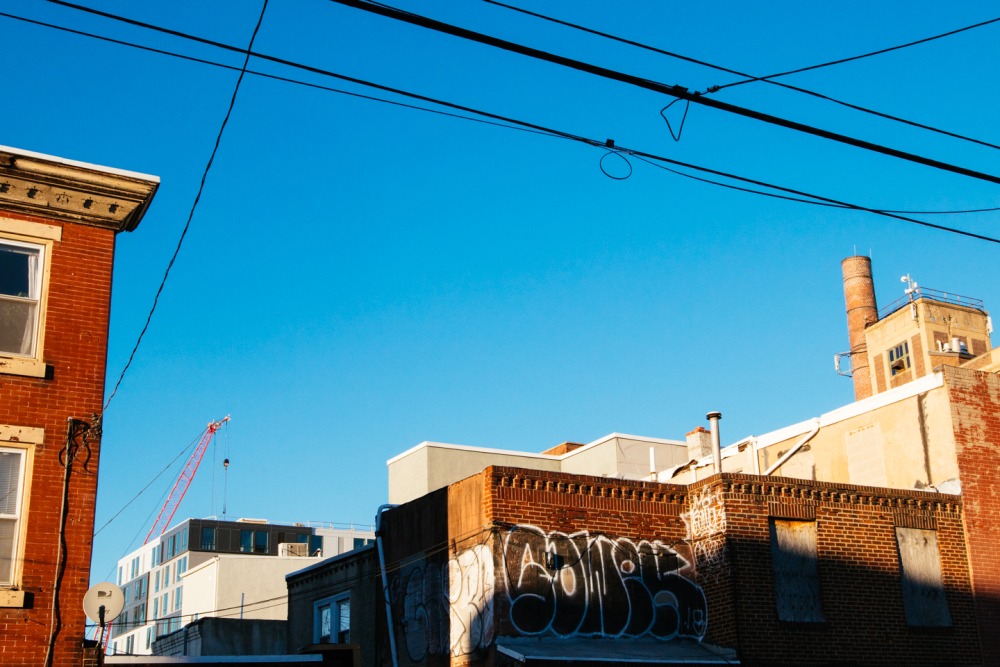
Tony DiGiugno: This series of photos covers a variety of spaces in Point Breeze where the socioeconomic disparities of Philadelphia between the center and the south have manifested into structures that have become symbols for tension between economic classes. I hope for my photos to serve as a remembrance of a once loved entity in a nostalgic place and time before it is lost to future time and fate, transformed into an unrecognizable, new entity. At our current rate, gentrification cannot be stopped, but it can still be exposed. When photography cannot help to end a tragedy even by exposing it at face value, it can at least preserve lost innocence for future generations to remember and learn from.
James (JAMi) Lyon: This body of work is to show how drag has become more accepted by the masses. Drag was born in the shadows throughout the years. With protesting, fighting for their rights, and countless souls lost to the cause, drag has finally became more mainstream and more widely accepted. The grain in the images is purposely done to show the rawness of where they came from and where they are going as a community.
James (JAMi) Lyon: This body of work is to show how drag has become more accepted by the masses. Drag was born in the shadows throughout the years. With protesting, fighting for their rights, and countless souls lost to the cause, drag has finally became more mainstream and more widely accepted. The grain in the images is purposely done to show the rawness of where they came from and where they are going as a community.
James (JAMi) Lyon: This body of work is to show how drag has become more accepted by the masses. Drag was born in the shadows throughout the years. With protesting, fighting for their rights, and countless souls lost to the cause, drag has finally became more mainstream and more widely accepted. The grain in the images is purposely done to show the rawness of where they came from and where they are going as a community.
James (JAMi) Lyon: This body of work is to show how drag has become more accepted by the masses. Drag was born in the shadows throughout the years. With protesting, fighting for their rights, and countless souls lost to the cause, drag has finally became more mainstream and more widely accepted. The grain in the images is purposely done to show the rawness of where they came from and where they are going as a community.
James (JAMi) Lyon: This body of work is to show how drag has become more accepted by the masses. Drag was born in the shadows throughout the years. With protesting, fighting for their rights, and countless souls lost to the cause, drag has finally became more mainstream and more widely accepted. The grain in the images is purposely done to show the rawness of where they came from and where they are going as a community.
James (JAMi) Lyon: This body of work is to show how drag has become more accepted by the masses. Drag was born in the shadows throughout the years. With protesting, fighting for their rights, and countless souls lost to the cause, drag has finally became more mainstream and more widely accepted. The grain in the images is purposely done to show the rawness of where they came from and where they are going as a community.
James (JAMi) Lyon: This body of work is to show how drag has become more accepted by the masses. Drag was born in the shadows throughout the years. With protesting, fighting for their rights, and countless souls lost to the cause, drag has finally became more mainstream and more widely accepted. The grain in the images is purposely done to show the rawness of where they came from and where they are going as a community.
James (JAMi) Lyon: This body of work is to show how drag has become more accepted by the masses. Drag was born in the shadows throughout the years. With protesting, fighting for their rights, and countless souls lost to the cause, drag has finally became more mainstream and more widely accepted. The grain in the images is purposely done to show the rawness of where they came from and where they are going as a community.
John Marie: I Am… - I Am… is a collaborative, personal, photographic investigation of my little sister, Nicole, who was adopted by our family from China in 2003. She was taken away from her blood relatives after birth due to the Two-Child Policy, which only allowed rural Chinese families to have two children. This series was inspired by an encounter my mother had when she brought Nicole to a ShopRite the week we came back to the States. A local shopper came up to her and said “Why did you bring one of those back?” This series tackles that question but through Nicole’s point of view. She has been an American citizen for fifteen years, but just recently started to analyze where she came from and where she is now. We delve into this through Nicole’s own thoughts about the opportunities she received in the United States that she would never had gotten had she stayed where she was in China. Before we adopted her, she was shuffled through various orphanages before landing with a foster mom, waiting to be adopted by a family. This was accomplished by having her initially write out these opportunities on her own before shooting. This allowed the imagery to be 100% inspired and interpreted by her own feelings, not anyone else’s. My images, paired with her handwritten text, gives the viewer an in-depth look at an immigration story gone right; a look at what happens when you give a girl an education and a warm bed; a look at a young girl who recognizes what it means to be an American citizen through adoption, which ultimately gave her an opportunity at a better life.
John Marie: I Am… - I Am… is a collaborative, personal, photographic investigation of my little sister, Nicole, who was adopted by our family from China in 2003. She was taken away from her blood relatives after birth due to the Two-Child Policy, which only allowed rural Chinese families to have two children. This series was inspired by an encounter my mother had when she brought Nicole to a ShopRite the week we came back to the States. A local shopper came up to her and said “Why did you bring one of those back?” This series tackles that question but through Nicole’s point of view. She has been an American citizen for fifteen years, but just recently started to analyze where she came from and where she is now. We delve into this through Nicole’s own thoughts about the opportunities she received in the United States that she would never had gotten had she stayed where she was in China. Before we adopted her, she was shuffled through various orphanages before landing with a foster mom, waiting to be adopted by a family. This was accomplished by having her initially write out these opportunities on her own before shooting. This allowed the imagery to be 100% inspired and interpreted by her own feelings, not anyone else’s. My images, paired with her handwritten text, gives the viewer an in-depth look at an immigration story gone right; a look at what happens when you give a girl an education and a warm bed; a look at a young girl who recognizes what it means to be an American citizen through adoption, which ultimately gave her an opportunity at a better life.
John Marie: I Am… - I Am… is a collaborative, personal, photographic investigation of my little sister, Nicole, who was adopted by our family from China in 2003. She was taken away from her blood relatives after birth due to the Two-Child Policy, which only allowed rural Chinese families to have two children. This series was inspired by an encounter my mother had when she brought Nicole to a ShopRite the week we came back to the States. A local shopper came up to her and said “Why did you bring one of those back?” This series tackles that question but through Nicole’s point of view. She has been an American citizen for fifteen years, but just recently started to analyze where she came from and where she is now. We delve into this through Nicole’s own thoughts about the opportunities she received in the United States that she would never had gotten had she stayed where she was in China. Before we adopted her, she was shuffled through various orphanages before landing with a foster mom, waiting to be adopted by a family. This was accomplished by having her initially write out these opportunities on her own before shooting. This allowed the imagery to be 100% inspired and interpreted by her own feelings, not anyone else’s. My images, paired with her handwritten text, gives the viewer an in-depth look at an immigration story gone right; a look at what happens when you give a girl an education and a warm bed; a look at a young girl who recognizes what it means to be an American citizen through adoption, which ultimately gave her an opportunity at a better life.
John Marie: I Am… - I Am… is a collaborative, personal, photographic investigation of my little sister, Nicole, who was adopted by our family from China in 2003. She was taken away from her blood relatives after birth due to the Two-Child Policy, which only allowed rural Chinese families to have two children. This series was inspired by an encounter my mother had when she brought Nicole to a ShopRite the week we came back to the States. A local shopper came up to her and said “Why did you bring one of those back?” This series tackles that question but through Nicole’s point of view. She has been an American citizen for fifteen years, but just recently started to analyze where she came from and where she is now. We delve into this through Nicole’s own thoughts about the opportunities she received in the United States that she would never had gotten had she stayed where she was in China. Before we adopted her, she was shuffled through various orphanages before landing with a foster mom, waiting to be adopted by a family. This was accomplished by having her initially write out these opportunities on her own before shooting. This allowed the imagery to be 100% inspired and interpreted by her own feelings, not anyone else’s. My images, paired with her handwritten text, gives the viewer an in-depth look at an immigration story gone right; a look at what happens when you give a girl an education and a warm bed; a look at a young girl who recognizes what it means to be an American citizen through adoption, which ultimately gave her an opportunity at a better life.
John Marie: I Am… - I Am… is a collaborative, personal, photographic investigation of my little sister, Nicole, who was adopted by our family from China in 2003. She was taken away from her blood relatives after birth due to the Two-Child Policy, which only allowed rural Chinese families to have two children. This series was inspired by an encounter my mother had when she brought Nicole to a ShopRite the week we came back to the States. A local shopper came up to her and said “Why did you bring one of those back?” This series tackles that question but through Nicole’s point of view. She has been an American citizen for fifteen years, but just recently started to analyze where she came from and where she is now. We delve into this through Nicole’s own thoughts about the opportunities she received in the United States that she would never had gotten had she stayed where she was in China. Before we adopted her, she was shuffled through various orphanages before landing with a foster mom, waiting to be adopted by a family. This was accomplished by having her initially write out these opportunities on her own before shooting. This allowed the imagery to be 100% inspired and interpreted by her own feelings, not anyone else’s. My images, paired with her handwritten text, gives the viewer an in-depth look at an immigration story gone right; a look at what happens when you give a girl an education and a warm bed; a look at a young girl who recognizes what it means to be an American citizen through adoption, which ultimately gave her an opportunity at a better life.
John Marie: I Am… - I Am… is a collaborative, personal, photographic investigation of my little sister, Nicole, who was adopted by our family from China in 2003. She was taken away from her blood relatives after birth due to the Two-Child Policy, which only allowed rural Chinese families to have two children. This series was inspired by an encounter my mother had when she brought Nicole to a ShopRite the week we came back to the States. A local shopper came up to her and said “Why did you bring one of those back?” This series tackles that question but through Nicole’s point of view. She has been an American citizen for fifteen years, but just recently started to analyze where she came from and where she is now. We delve into this through Nicole’s own thoughts about the opportunities she received in the United States that she would never had gotten had she stayed where she was in China. Before we adopted her, she was shuffled through various orphanages before landing with a foster mom, waiting to be adopted by a family. This was accomplished by having her initially write out these opportunities on her own before shooting. This allowed the imagery to be 100% inspired and interpreted by her own feelings, not anyone else’s. My images, paired with her handwritten text, gives the viewer an in-depth look at an immigration story gone right; a look at what happens when you give a girl an education and a warm bed; a look at a young girl who recognizes what it means to be an American citizen through adoption, which ultimately gave her an opportunity at a better life.
John Marie: I Am… - I Am… is a collaborative, personal, photographic investigation of my little sister, Nicole, who was adopted by our family from China in 2003. She was taken away from her blood relatives after birth due to the Two-Child Policy, which only allowed rural Chinese families to have two children. This series was inspired by an encounter my mother had when she brought Nicole to a ShopRite the week we came back to the States. A local shopper came up to her and said “Why did you bring one of those back?” This series tackles that question but through Nicole’s point of view. She has been an American citizen for fifteen years, but just recently started to analyze where she came from and where she is now. We delve into this through Nicole’s own thoughts about the opportunities she received in the United States that she would never had gotten had she stayed where she was in China. Before we adopted her, she was shuffled through various orphanages before landing with a foster mom, waiting to be adopted by a family. This was accomplished by having her initially write out these opportunities on her own before shooting. This allowed the imagery to be 100% inspired and interpreted by her own feelings, not anyone else’s. My images, paired with her handwritten text, gives the viewer an in-depth look at an immigration story gone right; a look at what happens when you give a girl an education and a warm bed; a look at a young girl who recognizes what it means to be an American citizen through adoption, which ultimately gave her an opportunity at a better life.
John Marie: I Am… - I Am… is a collaborative, personal, photographic investigation of my little sister, Nicole, who was adopted by our family from China in 2003. She was taken away from her blood relatives after birth due to the Two-Child Policy, which only allowed rural Chinese families to have two children. This series was inspired by an encounter my mother had when she brought Nicole to a ShopRite the week we came back to the States. A local shopper came up to her and said “Why did you bring one of those back?” This series tackles that question but through Nicole’s point of view. She has been an American citizen for fifteen years, but just recently started to analyze where she came from and where she is now. We delve into this through Nicole’s own thoughts about the opportunities she received in the United States that she would never had gotten had she stayed where she was in China. Before we adopted her, she was shuffled through various orphanages before landing with a foster mom, waiting to be adopted by a family. This was accomplished by having her initially write out these opportunities on her own before shooting. This allowed the imagery to be 100% inspired and interpreted by her own feelings, not anyone else’s. My images, paired with her handwritten text, gives the viewer an in-depth look at an immigration story gone right; a look at what happens when you give a girl an education and a warm bed; a look at a young girl who recognizes what it means to be an American citizen through adoption, which ultimately gave her an opportunity at a better life.
John Marie: I Am… - I Am… is a collaborative, personal, photographic investigation of my little sister, Nicole, who was adopted by our family from China in 2003. She was taken away from her blood relatives after birth due to the Two-Child Policy, which only allowed rural Chinese families to have two children. This series was inspired by an encounter my mother had when she brought Nicole to a ShopRite the week we came back to the States. A local shopper came up to her and said “Why did you bring one of those back?” This series tackles that question but through Nicole’s point of view. She has been an American citizen for fifteen years, but just recently started to analyze where she came from and where she is now. We delve into this through Nicole’s own thoughts about the opportunities she received in the United States that she would never had gotten had she stayed where she was in China. Before we adopted her, she was shuffled through various orphanages before landing with a foster mom, waiting to be adopted by a family. This was accomplished by having her initially write out these opportunities on her own before shooting. This allowed the imagery to be 100% inspired and interpreted by her own feelings, not anyone else’s. My images, paired with her handwritten text, gives the viewer an in-depth look at an immigration story gone right; a look at what happens when you give a girl an education and a warm bed; a look at a young girl who recognizes what it means to be an American citizen through adoption, which ultimately gave her an opportunity at a better life.
John Marie: I Am… - I Am… is a collaborative, personal, photographic investigation of my little sister, Nicole, who was adopted by our family from China in 2003. She was taken away from her blood relatives after birth due to the Two-Child Policy, which only allowed rural Chinese families to have two children. This series was inspired by an encounter my mother had when she brought Nicole to a ShopRite the week we came back to the States. A local shopper came up to her and said “Why did you bring one of those back?” This series tackles that question but through Nicole’s point of view. She has been an American citizen for fifteen years, but just recently started to analyze where she came from and where she is now. We delve into this through Nicole’s own thoughts about the opportunities she received in the United States that she would never had gotten had she stayed where she was in China. Before we adopted her, she was shuffled through various orphanages before landing with a foster mom, waiting to be adopted by a family. This was accomplished by having her initially write out these opportunities on her own before shooting. This allowed the imagery to be 100% inspired and interpreted by her own feelings, not anyone else’s. My images, paired with her handwritten text, gives the viewer an in-depth look at an immigration story gone right; a look at what happens when you give a girl an education and a warm bed; a look at a young girl who recognizes what it means to be an American citizen through adoption, which ultimately gave her an opportunity at a better life.
Liz Waldie: Stasis - Women’s roles and status have been defined by social and political rules and expectations, and today these issues have reached a plateau where little to no change has occurred. The wage gap still exists, birth control is not always covered by healthcare, women are constantly held under the pressure to look a certain way, and sexual and domestic assault can lead to a cycle of poverty and job loss. The title “Stasis” refers to the feeling of not moving as well as this constant state of fear and pressure. This series of self portraits paints a picture not only of the situations I have struggled with as a woman but recurring problems many women deal with daily.
Liz Waldie: Stasis - Women’s roles and status have been defined by social and political rules and expectations, and today these issues have reached a plateau where little to no change has occurred. The wage gap still exists, birth control is not always covered by healthcare, women are constantly held under the pressure to look a certain way, and sexual and domestic assault can lead to a cycle of poverty and job loss. The title “Stasis” refers to the feeling of not moving as well as this constant state of fear and pressure. This series of self portraits paints a picture not only of the situations I have struggled with as a woman but recurring problems many women deal with daily.
Liz Waldie: Stasis - Women’s roles and status have been defined by social and political rules and expectations, and today these issues have reached a plateau where little to no change has occurred. The wage gap still exists, birth control is not always covered by healthcare, women are constantly held under the pressure to look a certain way, and sexual and domestic assault can lead to a cycle of poverty and job loss. The title “Stasis” refers to the feeling of not moving as well as this constant state of fear and pressure. This series of self portraits paints a picture not only of the situations I have struggled with as a woman but recurring problems many women deal with daily.
Liz Waldie: Stasis - Women’s roles and status have been defined by social and political rules and expectations, and today these issues have reached a plateau where little to no change has occurred. The wage gap still exists, birth control is not always covered by healthcare, women are constantly held under the pressure to look a certain way, and sexual and domestic assault can lead to a cycle of poverty and job loss. The title “Stasis” refers to the feeling of not moving as well as this constant state of fear and pressure. This series of self portraits paints a picture not only of the situations I have struggled with as a woman but recurring problems many women deal with daily.
Liz Waldie: Stasis - Women’s roles and status have been defined by social and political rules and expectations, and today these issues have reached a plateau where little to no change has occurred. The wage gap still exists, birth control is not always covered by healthcare, women are constantly held under the pressure to look a certain way, and sexual and domestic assault can lead to a cycle of poverty and job loss. The title “Stasis” refers to the feeling of not moving as well as this constant state of fear and pressure. This series of self portraits paints a picture not only of the situations I have struggled with as a woman but recurring problems many women deal with daily.
Liz Waldie: Stasis - Women’s roles and status have been defined by social and political rules and expectations, and today these issues have reached a plateau where little to no change has occurred. The wage gap still exists, birth control is not always covered by healthcare, women are constantly held under the pressure to look a certain way, and sexual and domestic assault can lead to a cycle of poverty and job loss. The title “Stasis” refers to the feeling of not moving as well as this constant state of fear and pressure. This series of self portraits paints a picture not only of the situations I have struggled with as a woman but recurring problems many women deal with daily.
Liz Waldie: Stasis - Women’s roles and status have been defined by social and political rules and expectations, and today these issues have reached a plateau where little to no change has occurred. The wage gap still exists, birth control is not always covered by healthcare, women are constantly held under the pressure to look a certain way, and sexual and domestic assault can lead to a cycle of poverty and job loss. The title “Stasis” refers to the feeling of not moving as well as this constant state of fear and pressure. This series of self portraits paints a picture not only of the situations I have struggled with as a woman but recurring problems many women deal with daily.
Sam (S.) Malandra-Myers: Acceptance - Through working at night in this series, I am conveying a sense of invisibility that immigrants, and, specifically, undocumented immigrants, experience. By adding the contrast of the light, I am highlighting a tension that is apparent in the current politics in America surrounding topics such as illegal immigration, the U.S.-Mexico border wall, and DACA. The incorporation of the figure focuses on the placement of individuals moving into a spotlight to work as activists for a silenced community, like the many DACA students attending university in the USA who have self-disclosed their immigration status during public speaking engagements, such as valedictorian and Yale student Larissa Martinez.
Sam (S.) Malandra-Myers: Challenging - Through working at night in this series, I am conveying a sense of invisibility that immigrants, and, specifically, undocumented immigrants, experience. By adding the contrast of the light, I am highlighting a tension that is apparent in the current politics in America surrounding topics such as illegal immigration, the U.S.-Mexico border wall, and DACA. The incorporation of the figure focuses on the placement of individuals moving into a spotlight to work as activists for a silenced community, like the many DACA students attending university in the USA who have self-disclosed their immigration status during public speaking engagements, such as valedictorian and Yale student Larissa Martinez.
Sam (S.) Malandra-Myers: Evolving - Through working at night in this series, I am conveying a sense of invisibility that immigrants, and, specifically, undocumented immigrants, experience. By adding the contrast of the light, I am highlighting a tension that is apparent in the current politics in America surrounding topics such as illegal immigration, the U.S.-Mexico border wall, and DACA. The incorporation of the figure focuses on the placement of individuals moving into a spotlight to work as activists for a silenced community, like the many DACA students attending university in the USA who have self-disclosed their immigration status during public speaking engagements, such as valedictorian and Yale student Larissa Martinez.
Sam (S.) Malandra-Myers: Identifying - Through working at night in this series, I am conveying a sense of invisibility that immigrants, and, specifically, undocumented immigrants, experience. By adding the contrast of the light, I am highlighting a tension that is apparent in the current politics in America surrounding topics such as illegal immigration, the U.S.-Mexico border wall, and DACA. The incorporation of the figure focuses on the placement of individuals moving into a spotlight to work as activists for a silenced community, like the many DACA students attending university in the USA who have self-disclosed their immigration status during public speaking engagements, such as valedictorian and Yale student Larissa Martinez.
Sam (S.) Malandra-Myers: Invisible - Through working at night in this series, I am conveying a sense of invisibility that immigrants, and, specifically, undocumented immigrants, experience. By adding the contrast of the light, I am highlighting a tension that is apparent in the current politics in America surrounding topics such as illegal immigration, the U.S.-Mexico border wall, and DACA. The incorporation of the figure focuses on the placement of individuals moving into a spotlight to work as activists for a silenced community, like the many DACA students attending university in the USA who have self-disclosed their immigration status during public speaking engagements, such as valedictorian and Yale student Larissa Martinez.
Sam (S.) Malandra-Myers: Permeating - Through working at night in this series, I am conveying a sense of invisibility that immigrants, and, specifically, undocumented immigrants, experience. By adding the contrast of the light, I am highlighting a tension that is apparent in the current politics in America surrounding topics such as illegal immigration, the U.S.-Mexico border wall, and DACA. The incorporation of the figure focuses on the placement of individuals moving into a spotlight to work as activists for a silenced community, like the many DACA students attending university in the USA who have self-disclosed their immigration status during public speaking engagements, such as valedictorian and Yale student Larissa Martinez.
Sam (S.) Malandra-Myers: Questioning - Through working at night in this series, I am conveying a sense of invisibility that immigrants, and, specifically, undocumented immigrants, experience. By adding the contrast of the light, I am highlighting a tension that is apparent in the current politics in America surrounding topics such as illegal immigration, the U.S.-Mexico border wall, and DACA. The incorporation of the figure focuses on the placement of individuals moving into a spotlight to work as activists for a silenced community, like the many DACA students attending university in the USA who have self-disclosed their immigration status during public speaking engagements, such as valedictorian and Yale student Larissa Martinez.
Sam (S.) Malandra-Myers: Reaching - Through working at night in this series, I am conveying a sense of invisibility that immigrants, and, specifically, undocumented immigrants, experience. By adding the contrast of the light, I am highlighting a tension that is apparent in the current politics in America surrounding topics such as illegal immigration, the U.S.-Mexico border wall, and DACA. The incorporation of the figure focuses on the placement of individuals moving into a spotlight to work as activists for a silenced community, like the many DACA students attending university in the USA who have self-disclosed their immigration status during public speaking engagements, such as valedictorian and Yale student Larissa Martinez.
Sam (S.) Malandra-Myers: Searching - Through working at night in this series, I am conveying a sense of invisibility that immigrants, and, specifically, undocumented immigrants, experience. By adding the contrast of the light, I am highlighting a tension that is apparent in the current politics in America surrounding topics such as illegal immigration, the U.S.-Mexico border wall, and DACA. The incorporation of the figure focuses on the placement of individuals moving into a spotlight to work as activists for a silenced community, like the many DACA students attending university in the USA who have self-disclosed their immigration status during public speaking engagements, such as valedictorian and Yale student Larissa Martinez.
Sam (S.) Malandra-Myers: Silenced - Through working at night in this series, I am conveying a sense of invisibility that immigrants, and, specifically, undocumented immigrants, experience. By adding the contrast of the light, I am highlighting a tension that is apparent in the current politics in America surrounding topics such as illegal immigration, the U.S.-Mexico border wall, and DACA. The incorporation of the figure focuses on the placement of individuals moving into a spotlight to work as activists for a silenced community, like the many DACA students attending university in the USA who have self-disclosed their immigration status during public speaking engagements, such as valedictorian and Yale student Larissa Martinez.
Shaina Nyman: حایس SAYAH | THE TRAVELER - SAYAH is the Farsi word for one who wanders the earth. In this work, I focus on my family’s immigration from Iran to the U.S. post-Iranian Revolution and their experience as displaced persons. The work is narrative but conceptual; a story is told through an emulation of a traveler created through visual metaphors. The beach, the sky, and the ocean are often considered timeless, blank spaces — in this work, they act as a connector for artificial lines of national spaces. I photograph my mother and her sisters by the ocean, aiming to connect them to the unreachable.
Shaina Nyman: حایس SAYAH | THE TRAVELER - SAYAH is the Farsi word for one who wanders the earth. In this work, I focus on my family’s immigration from Iran to the U.S. post-Iranian Revolution and their experience as displaced persons. The work is narrative but conceptual; a story is told through an emulation of a traveler created through visual metaphors. The beach, the sky, and the ocean are often considered timeless, blank spaces — in this work, they act as a connector for artificial lines of national spaces. I photograph my mother and her sisters by the ocean, aiming to connect them to the unreachable.
Shaina Nyman: حایس SAYAH | THE TRAVELER - SAYAH is the Farsi word for one who wanders the earth. In this work, I focus on my family’s immigration from Iran to the U.S. post-Iranian Revolution and their experience as displaced persons. The work is narrative but conceptual; a story is told through an emulation of a traveler created through visual metaphors. The beach, the sky, and the ocean are often considered timeless, blank spaces — in this work, they act as a connector for artificial lines of national spaces. I photograph my mother and her sisters by the ocean, aiming to connect them to the unreachable.
Shaina Nyman: حایس SAYAH | THE TRAVELER - SAYAH is the Farsi word for one who wanders the earth. In this work, I focus on my family’s immigration from Iran to the U.S. post-Iranian Revolution and their experience as displaced persons. The work is narrative but conceptual; a story is told through an emulation of a traveler created through visual metaphors. The beach, the sky, and the ocean are often considered timeless, blank spaces — in this work, they act as a connector for artificial lines of national spaces. I photograph my mother and her sisters by the ocean, aiming to connect them to the unreachable.
Shaina Nyman: حایس SAYAH | THE TRAVELER - SAYAH is the Farsi word for one who wanders the earth. In this work, I focus on my family’s immigration from Iran to the U.S. post-Iranian Revolution and their experience as displaced persons. The work is narrative but conceptual; a story is told through an emulation of a traveler created through visual metaphors. The beach, the sky, and the ocean are often considered timeless, blank spaces — in this work, they act as a connector for artificial lines of national spaces. I photograph my mother and her sisters by the ocean, aiming to connect them to the unreachable.
Shaina Nyman: حایس SAYAH | THE TRAVELER - SAYAH is the Farsi word for one who wanders the earth. In this work, I focus on my family’s immigration from Iran to the U.S. post-Iranian Revolution and their experience as displaced persons. The work is narrative but conceptual; a story is told through an emulation of a traveler created through visual metaphors. The beach, the sky, and the ocean are often considered timeless, blank spaces — in this work, they act as a connector for artificial lines of national spaces. I photograph my mother and her sisters by the ocean, aiming to connect them to the unreachable.
Shaina Nyman: حایس SAYAH | THE TRAVELER - SAYAH is the Farsi word for one who wanders the earth. In this work, I focus on my family’s immigration from Iran to the U.S. post-Iranian Revolution and their experience as displaced persons. The work is narrative but conceptual; a story is told through an emulation of a traveler created through visual metaphors. The beach, the sky, and the ocean are often considered timeless, blank spaces — in this work, they act as a connector for artificial lines of national spaces. I photograph my mother and her sisters by the ocean, aiming to connect them to the unreachable.
Shaina Nyman: حایس SAYAH | THE TRAVELER - SAYAH is the Farsi word for one who wanders the earth. In this work, I focus on my family’s immigration from Iran to the U.S. post-Iranian Revolution and their experience as displaced persons. The work is narrative but conceptual; a story is told through an emulation of a traveler created through visual metaphors. The beach, the sky, and the ocean are often considered timeless, blank spaces — in this work, they act as a connector for artificial lines of national spaces. I photograph my mother and her sisters by the ocean, aiming to connect them to the unreachable.
Shaina Nyman: حایس SAYAH | THE TRAVELER - SAYAH is the Farsi word for one who wanders the earth. In this work, I focus on my family’s immigration from Iran to the U.S. post-Iranian Revolution and their experience as displaced persons. The work is narrative but conceptual; a story is told through an emulation of a traveler created through visual metaphors. The beach, the sky, and the ocean are often considered timeless, blank spaces — in this work, they act as a connector for artificial lines of national spaces. I photograph my mother and her sisters by the ocean, aiming to connect them to the unreachable.
Shaina Nyman: حایس SAYAH | THE TRAVELER - SAYAH is the Farsi word for one who wanders the earth. In this work, I focus on my family’s immigration from Iran to the U.S. post-Iranian Revolution and their experience as displaced persons. The work is narrative but conceptual; a story is told through an emulation of a traveler created through visual metaphors. The beach, the sky, and the ocean are often considered timeless, blank spaces — in this work, they act as a connector for artificial lines of national spaces. I photograph my mother and her sisters by the ocean, aiming to connect them to the unreachable.
Tiana Zurawski: Natalie - Thinking a lot about socioeconomics, I wanted to create this project. I photographed people in and at their homes because having a home and/or place to live with belongings is reflected in how much money you make. Having a dog or having expensive things costs a lot of money. I think it is important to show what people own when talking about socioeconomics. People from all different backgrounds go through the same and also different stages of socioeconomics.
Tiana Zurawski: Natalie - Thinking a lot about socioeconomics, I wanted to create this project. I photographed people in and at their homes because having a home and/or place to live with belongings is reflected in how much money you make. Having a dog or having expensive things costs a lot of money. I think it is important to show what people own when talking about socioeconomics. People from all different backgrounds go through the same and also different stages of socioeconomics.
Tiana Zurawski: Gabby - Thinking a lot about socioeconomics, I wanted to create this project. I photographed people in and at their homes because having a home and/or place to live with belongings is reflected in how much money you make. Having a dog or having expensive things costs a lot of money. I think it is important to show what people own when talking about socioeconomics. People from all different backgrounds go through the same and also different stages of socioeconomics.
Tiana Zurawski: Jules - Thinking a lot about socioeconomics, I wanted to create this project. I photographed people in and at their homes because having a home and/or place to live with belongings is reflected in how much money you make. Having a dog or having expensive things costs a lot of money. I think it is important to show what people own when talking about socioeconomics. People from all different backgrounds go through the same and also different stages of socioeconomics.
Tiana Zurawski: Sammi - Thinking a lot about socioeconomics, I wanted to create this project. I photographed people in and at their homes because having a home and/or place to live with belongings is reflected in how much money you make. Having a dog or having expensive things costs a lot of money. I think it is important to show what people own when talking about socioeconomics. People from all different backgrounds go through the same and also different stages of socioeconomics.
Tiana Zurawski: Tiana - Thinking a lot about socioeconomics, I wanted to create this project. I photographed people in and at their homes because having a home and/or place to live with belongings is reflected in how much money you make. Having a dog or having expensive things costs a lot of money. I think it is important to show what people own when talking about socioeconomics. People from all different backgrounds go through the same and also different stages of socioeconomics.
Tiana Zurawski: Tony - Thinking a lot about socioeconomics, I wanted to create this project. I photographed people in and at their homes because having a home and/or place to live with belongings is reflected in how much money you make. Having a dog or having expensive things costs a lot of money. I think it is important to show what people own when talking about socioeconomics. People from all different backgrounds go through the same and also different stages of socioeconomics.
Tony DiGiugno: This series of photos covers a variety of spaces in Point Breeze where the socioeconomic disparities of Philadelphia between the center and the south have manifested into structures that have become symbols for tension between economic classes. I hope for my photos to serve as a remembrance of a once loved entity in a nostalgic place and time before it is lost to future time and fate, transformed into an unrecognizable, new entity. At our current rate, gentrification cannot be stopped, but it can still be exposed. When photography cannot help to end a tragedy even by exposing it at face value, it can at least preserve lost innocence for future generations to remember and learn from.
Tony DiGiugno: This series of photos covers a variety of spaces in Point Breeze where the socioeconomic disparities of Philadelphia between the center and the south have manifested into structures that have become symbols for tension between economic classes. I hope for my photos to serve as a remembrance of a once loved entity in a nostalgic place and time before it is lost to future time and fate, transformed into an unrecognizable, new entity. At our current rate, gentrification cannot be stopped, but it can still be exposed. When photography cannot help to end a tragedy even by exposing it at face value, it can at least preserve lost innocence for future generations to remember and learn from.
Tony DiGiugno: This series of photos covers a variety of spaces in Point Breeze where the socioeconomic disparities of Philadelphia between the center and the south have manifested into structures that have become symbols for tension between economic classes. I hope for my photos to serve as a remembrance of a once loved entity in a nostalgic place and time before it is lost to future time and fate, transformed into an unrecognizable, new entity. At our current rate, gentrification cannot be stopped, but it can still be exposed. When photography cannot help to end a tragedy even by exposing it at face value, it can at least preserve lost innocence for future generations to remember and learn from.
Tony DiGiugno: This series of photos covers a variety of spaces in Point Breeze where the socioeconomic disparities of Philadelphia between the center and the south have manifested into structures that have become symbols for tension between economic classes. I hope for my photos to serve as a remembrance of a once loved entity in a nostalgic place and time before it is lost to future time and fate, transformed into an unrecognizable, new entity. At our current rate, gentrification cannot be stopped, but it can still be exposed. When photography cannot help to end a tragedy even by exposing it at face value, it can at least preserve lost innocence for future generations to remember and learn from.
Tony DiGiugno: This series of photos covers a variety of spaces in Point Breeze where the socioeconomic disparities of Philadelphia between the center and the south have manifested into structures that have become symbols for tension between economic classes. I hope for my photos to serve as a remembrance of a once loved entity in a nostalgic place and time before it is lost to future time and fate, transformed into an unrecognizable, new entity. At our current rate, gentrification cannot be stopped, but it can still be exposed. When photography cannot help to end a tragedy even by exposing it at face value, it can at least preserve lost innocence for future generations to remember and learn from.
Tony DiGiugno: This series of photos covers a variety of spaces in Point Breeze where the socioeconomic disparities of Philadelphia between the center and the south have manifested into structures that have become symbols for tension between economic classes. I hope for my photos to serve as a remembrance of a once loved entity in a nostalgic place and time before it is lost to future time and fate, transformed into an unrecognizable, new entity. At our current rate, gentrification cannot be stopped, but it can still be exposed. When photography cannot help to end a tragedy even by exposing it at face value, it can at least preserve lost innocence for future generations to remember and learn from.
Tony DiGiugno: This series of photos covers a variety of spaces in Point Breeze where the socioeconomic disparities of Philadelphia between the center and the south have manifested into structures that have become symbols for tension between economic classes. I hope for my photos to serve as a remembrance of a once loved entity in a nostalgic place and time before it is lost to future time and fate, transformed into an unrecognizable, new entity. At our current rate, gentrification cannot be stopped, but it can still be exposed. When photography cannot help to end a tragedy even by exposing it at face value, it can at least preserve lost innocence for future generations to remember and learn from.
Tony DiGiugno: This series of photos covers a variety of spaces in Point Breeze where the socioeconomic disparities of Philadelphia between the center and the south have manifested into structures that have become symbols for tension between economic classes. I hope for my photos to serve as a remembrance of a once loved entity in a nostalgic place and time before it is lost to future time and fate, transformed into an unrecognizable, new entity. At our current rate, gentrification cannot be stopped, but it can still be exposed. When photography cannot help to end a tragedy even by exposing it at face value, it can at least preserve lost innocence for future generations to remember and learn from.
Tony DiGiugno: This series of photos covers a variety of spaces in Point Breeze where the socioeconomic disparities of Philadelphia between the center and the south have manifested into structures that have become symbols for tension between economic classes. I hope for my photos to serve as a remembrance of a once loved entity in a nostalgic place and time before it is lost to future time and fate, transformed into an unrecognizable, new entity. At our current rate, gentrification cannot be stopped, but it can still be exposed. When photography cannot help to end a tragedy even by exposing it at face value, it can at least preserve lost innocence for future generations to remember and learn from.
Tony DiGiugno: This series of photos covers a variety of spaces in Point Breeze where the socioeconomic disparities of Philadelphia between the center and the south have manifested into structures that have become symbols for tension between economic classes. I hope for my photos to serve as a remembrance of a once loved entity in a nostalgic place and time before it is lost to future time and fate, transformed into an unrecognizable, new entity. At our current rate, gentrification cannot be stopped, but it can still be exposed. When photography cannot help to end a tragedy even by exposing it at face value, it can at least preserve lost innocence for future generations to remember and learn from.
Tony DiGiugno: This series of photos covers a variety of spaces in Point Breeze where the socioeconomic disparities of Philadelphia between the center and the south have manifested into structures that have become symbols for tension between economic classes. I hope for my photos to serve as a remembrance of a once loved entity in a nostalgic place and time before it is lost to future time and fate, transformed into an unrecognizable, new entity. At our current rate, gentrification cannot be stopped, but it can still be exposed. When photography cannot help to end a tragedy even by exposing it at face value, it can at least preserve lost innocence for future generations to remember and learn from.
Tony DiGiugno: This series of photos covers a variety of spaces in Point Breeze where the socioeconomic disparities of Philadelphia between the center and the south have manifested into structures that have become symbols for tension between economic classes. I hope for my photos to serve as a remembrance of a once loved entity in a nostalgic place and time before it is lost to future time and fate, transformed into an unrecognizable, new entity. At our current rate, gentrification cannot be stopped, but it can still be exposed. When photography cannot help to end a tragedy even by exposing it at face value, it can at least preserve lost innocence for future generations to remember and learn from.
Tony DiGiugno: This series of photos covers a variety of spaces in Point Breeze where the socioeconomic disparities of Philadelphia between the center and the south have manifested into structures that have become symbols for tension between economic classes. I hope for my photos to serve as a remembrance of a once loved entity in a nostalgic place and time before it is lost to future time and fate, transformed into an unrecognizable, new entity. At our current rate, gentrification cannot be stopped, but it can still be exposed. When photography cannot help to end a tragedy even by exposing it at face value, it can at least preserve lost innocence for future generations to remember and learn from.
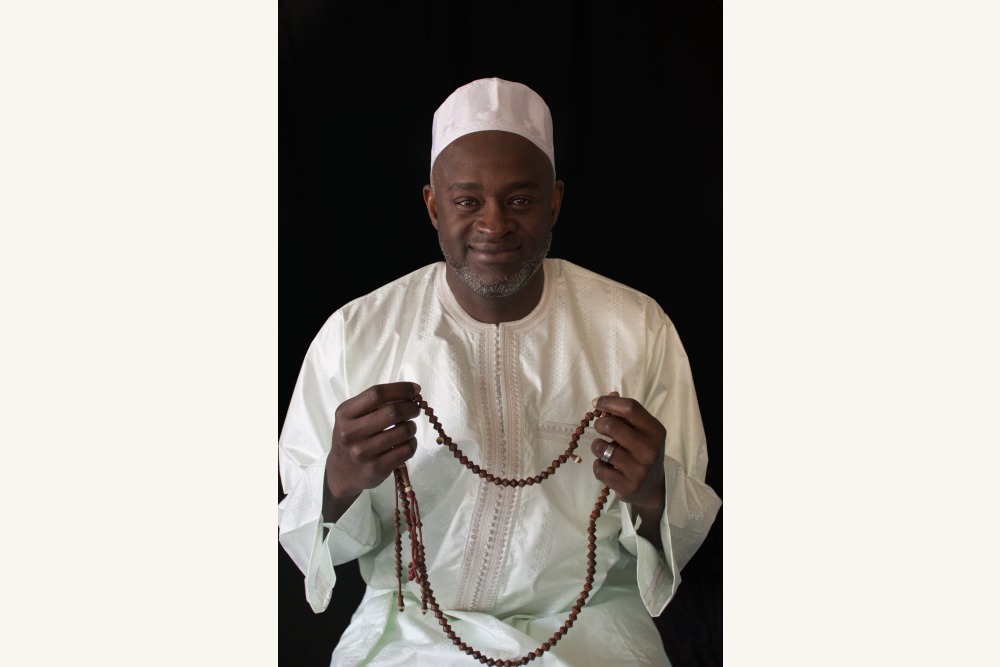
Allison Swift: Djabril 1 - Djabril, known now as Gabe, is an immigrant from Senegal by way of France. Here he is in traditional dress.
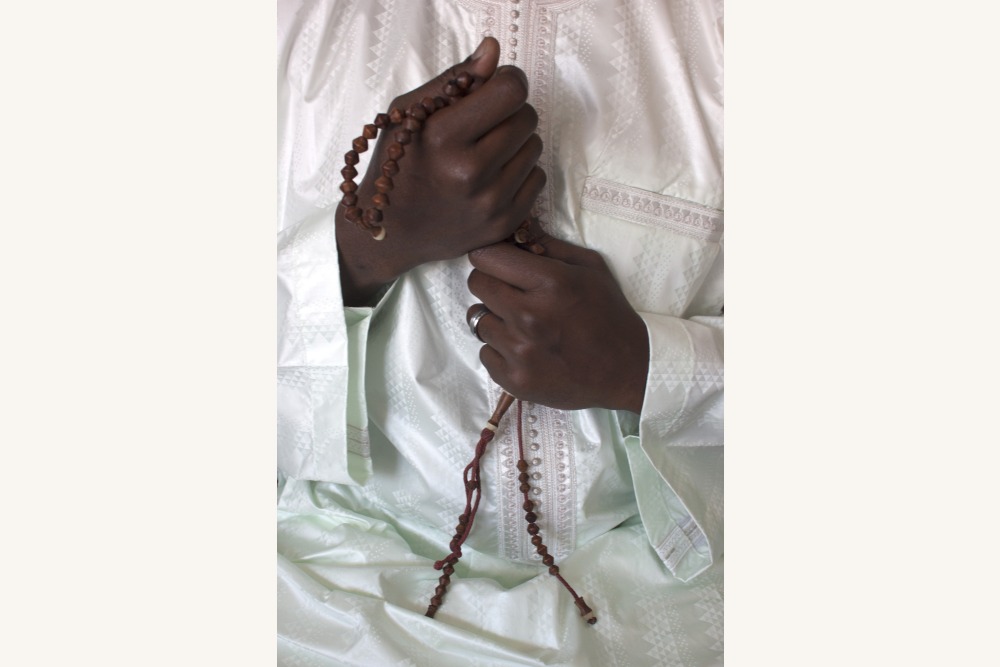
Allison Swift: Djabril's Hands - Djabril, known now as Gabe, is an immigrant from Senegal by way of France. Here he is in traditional dress.
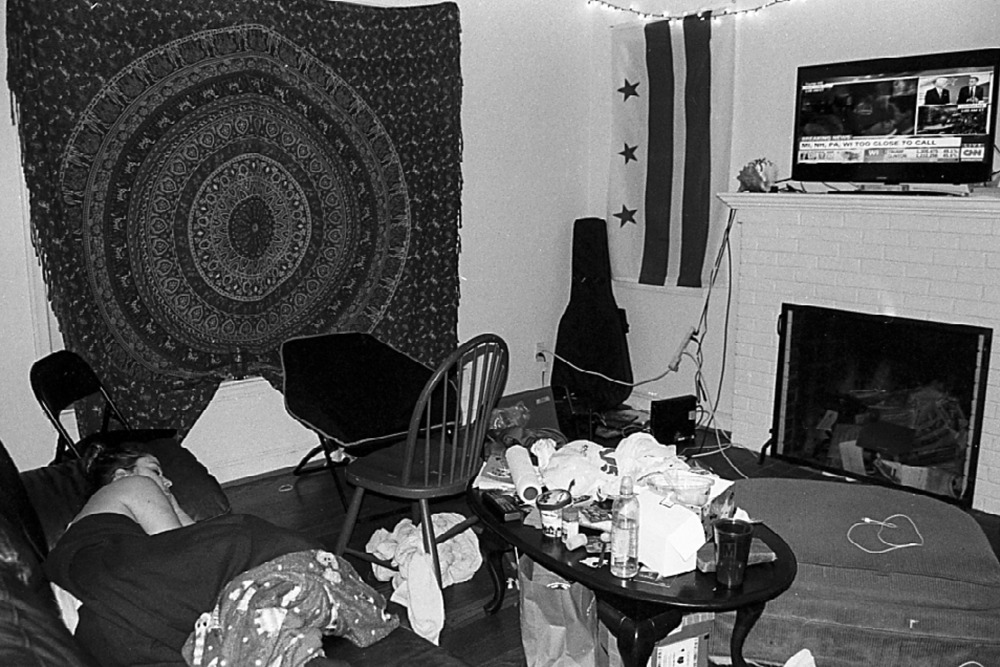
Emma Shetter: Election Night - It was November 8th, 2016 and I had been sitting in my living room with 14 other people watching the election results come in. The mood started a little nervous but mostly positive and excited. As time passed silence slowly took over the room. The majority of people slowly left my house to be left with 1 friend asleep on the couch and a unpleasant feeling was felt throughout the house and was taken back to each friends home. I took this picture because even though it was not a happy event, I felt that it was important to document. I can still remember the feeling and the night so clearly. I took this picture the on black and white 35mm film and printed the image in the darkroom on satin paper.
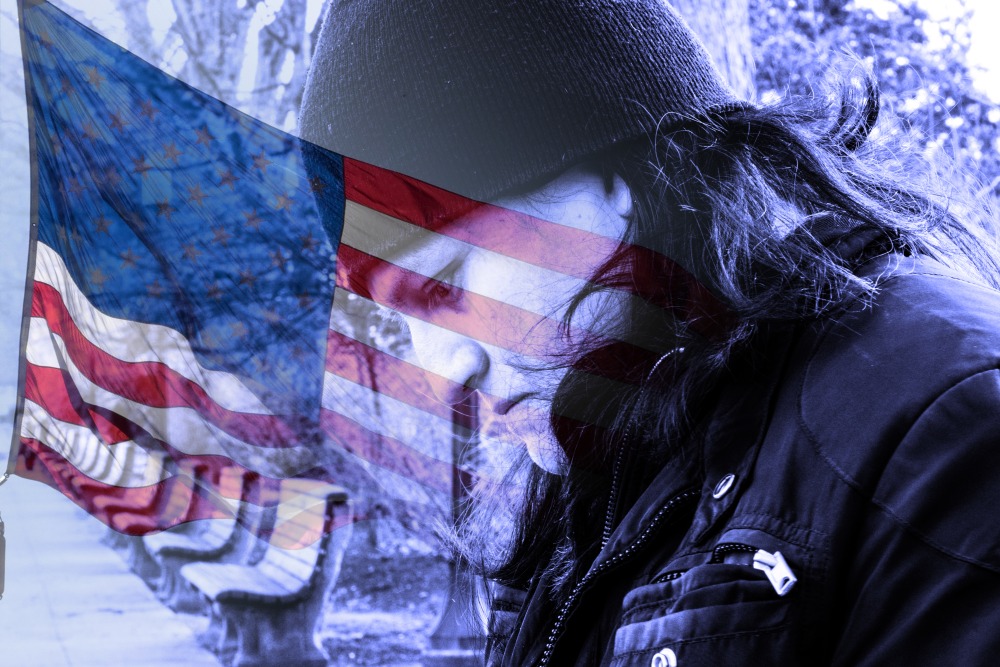
Herminio Palma: American Bird - This is a photo based on immigration dreams. How immigrants can be affected for bad or good, when they leave their countries.
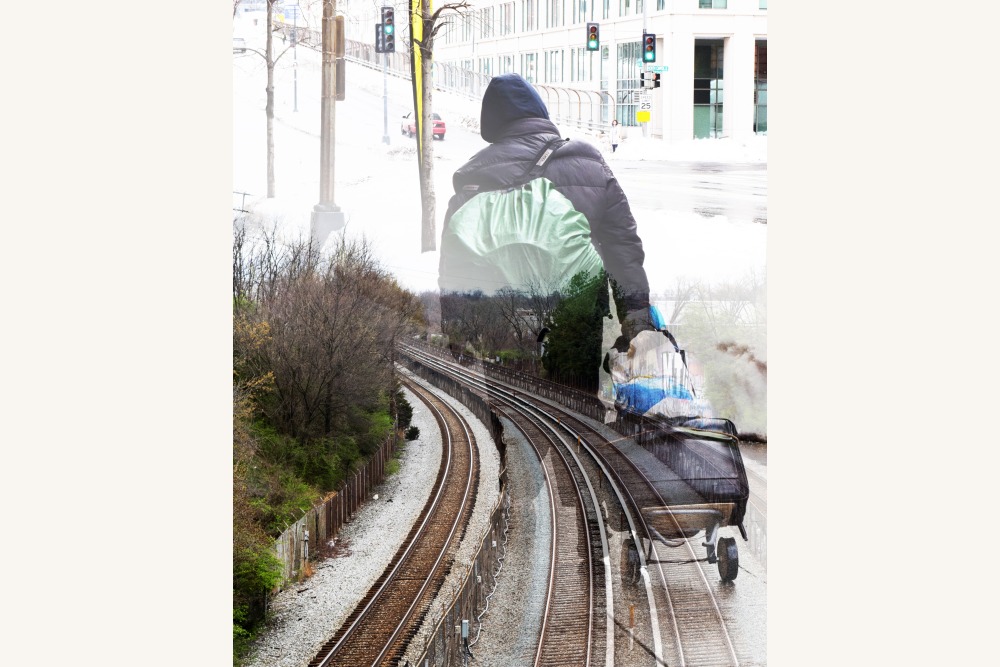
Herminio Palma: Going to Nowhere - This photo is inspired by poverty and its consequences. How people poor people end living their home to live on streets, as the title says going to nowhere.
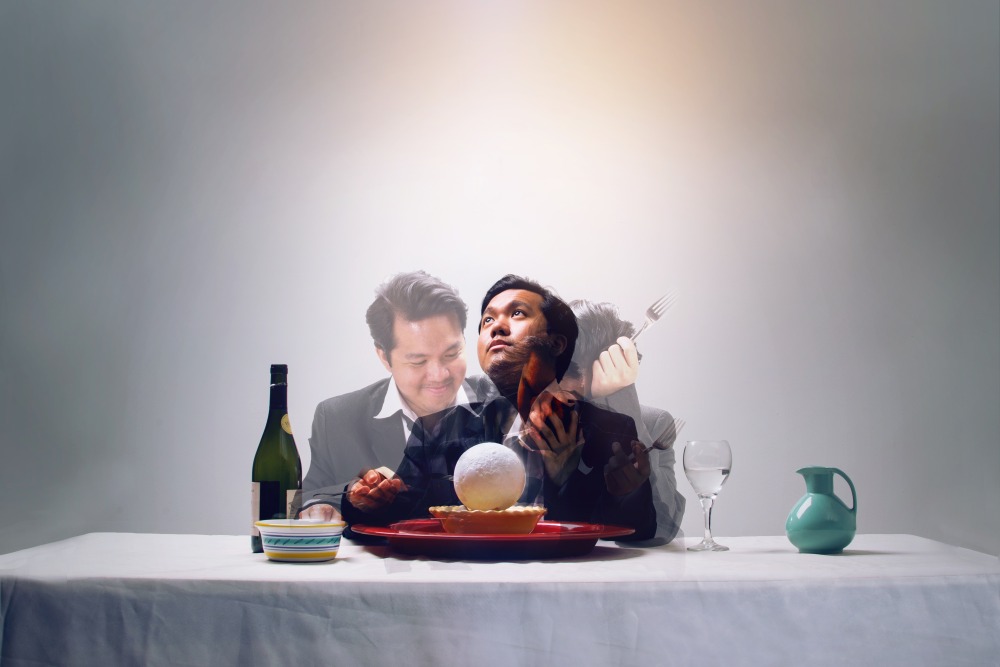
Jhon Ochoa
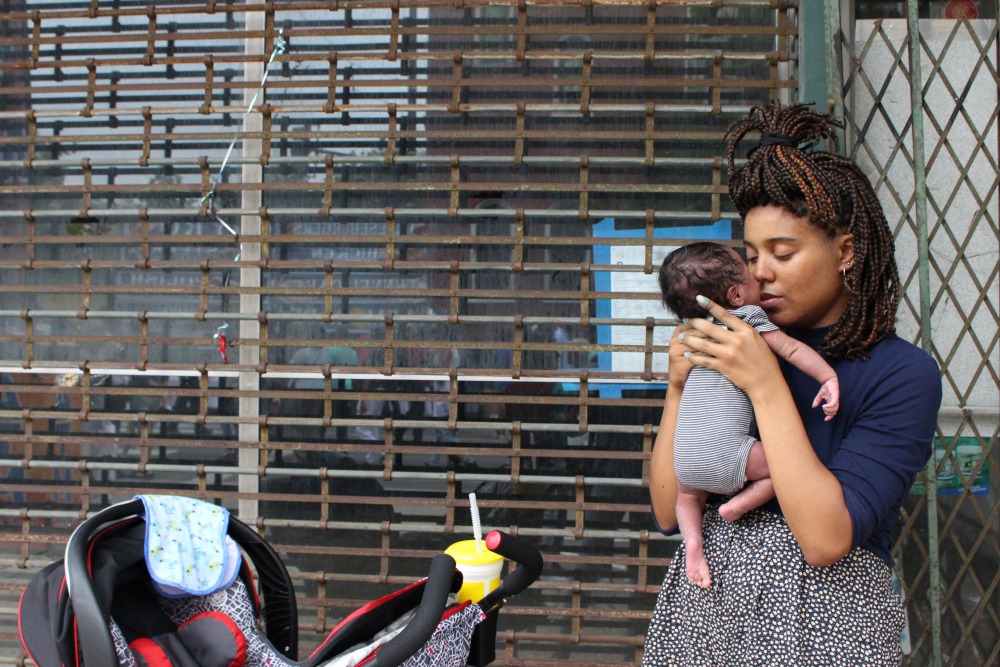
Kimberly Cunningham: Mother - “Mother” is a photograph representing single motherhood and young mothers of America. This photograph, though in Washington D.C., could be anywhere.
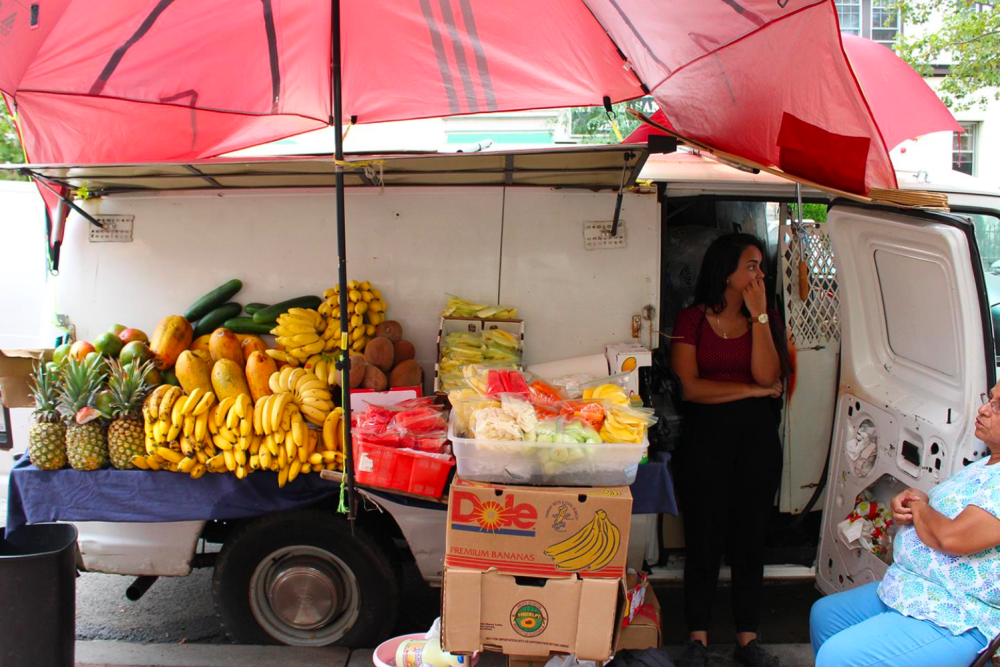
Kimberly Cunningham: Fruit Stand - “Fruit Stand” is taken in Mt. Pleasant, a neighborhood in Washington, D.C. This neighborhood is popular for its immigrant-owned restaurants and stores.
Allison Swift: Djabril 1 - Djabril, known now as Gabe, is an immigrant from Senegal by way of France. Here he is in traditional dress.
Allison Swift: Djabril's Hands - Djabril, known now as Gabe, is an immigrant from Senegal by way of France. Here he is in traditional dress.
Emma Shetter: Election Night - It was November 8th, 2016 and I had been sitting in my living room with 14 other people watching the election results come in. The mood started a little nervous but mostly positive and excited. As time passed silence slowly took over the room. The majority of people slowly left my house to be left with 1 friend asleep on the couch and a unpleasant feeling was felt throughout the house and was taken back to each friends home. I took this picture because even though it was not a happy event, I felt that it was important to document. I can still remember the feeling and the night so clearly. I took this picture the on black and white 35mm film and printed the image in the darkroom on satin paper.
Herminio Palma: American Bird - This is a photo based on immigration dreams. How immigrants can be affected for bad or good, when they leave their countries.
Herminio Palma: Going to Nowhere - This photo is inspired by poverty and its consequences. How people poor people end living their home to live on streets, as the title says going to nowhere.
Jhon Ochoa
Kimberly Cunningham: Mother - “Mother” is a photograph representing single motherhood and young mothers of America. This photograph, though in Washington D.C., could be anywhere.
Kimberly Cunningham: Fruit Stand - “Fruit Stand” is taken in Mt. Pleasant, a neighborhood in Washington, D.C. This neighborhood is popular for its immigrant-owned restaurants and stores.

Special Recognition
IWAN BAGUS, American University, University of the District of Columbia
E. TAYLOR BAREFORD, Art Institute of Atlanta
BARBARA PROUD, University of the Arts
DEIDRA TYREE SMITH, Clark Atlanta University
DARNELL WILBURN, Art Institute of Atlanta
Special Acknowledgement
CATHERINE CAHILL, President/CEO, Mann Center for the Performing Arts
LIONELL THOMAS, Director, Fulton County Arts & Culture
The Free Library of Philadelphia, Parkway Central Branch
NYU-Washington, D.C.
The Woodruff Arts Center, Atlanta, GA
Arielle Abilo | Rhoda Blount | Arnika Dawkins | Alec Fertel | Nancy Field | Christopher Hickey | Ray Llanos | Brittany Loffert | Kristen Maddox | Anne Leighton Massoni | Thomas McIntyre | Kevin Muehleman | Andrew Nurkin | Kelly Schempp | Emmitt Stevenson | Lindsay Sparagana | Delando Stocker | Carole Sykes | Polly Terzian | Sheina Waddell
Special Thank You
The student photographers who contributed their work to this exhibition:
American University: Delfina Barbiero | Jean Vozella | Kitty Kouwenhoven | Lulu Fong | Sergio Teran Baldizon (Naret Photography) | Taylor Mickal | Tim McPhillips | Yuki Ishibashi
Art Institute of Atlanta: Aboubacar Kante | Aundrea Danielson | Courtney Blue | Curtisey Liggins | Damir Wiggan | Jaylen Taylor-Rooks | Jorge Echevarria and Cristina Bahena | Katiah Byrd | Kristopher Burris | Manuel Menendez | Phaedra Williamson | Stephon Duff | Taja Travis
Clark Atlanta University: Afiya Williams | Andria Ward | Carnica Durham | Jasmine Royster | Jaya Paci | Jenise Harden | Raven Brown | Saurice Wilson
University of the Arts: Alexander (AJ) Adriance | AnaMaria Garcia | Bridget McKenna | Chloe Hollingsworth | Dylan Pearce | Hailey Bruinsma | Hannah Bailey | James (JAMi) Lyon | John Marie | Liz Waldie | Sam (S.) Malandra-Myers | Shaina Nyman | Tiana Zurawski | Tony DiGiugno
University of the District of Columbia: Allison Swift | Emma Shetter | Herminio Palma | Jamar Hutcheson | Jhon Ochoa | Kimberly Cunningham
Opinions expressed are those of the artists’ and may not reflect those of Fulton County Arts & Culture, the Mann or NEWorks.